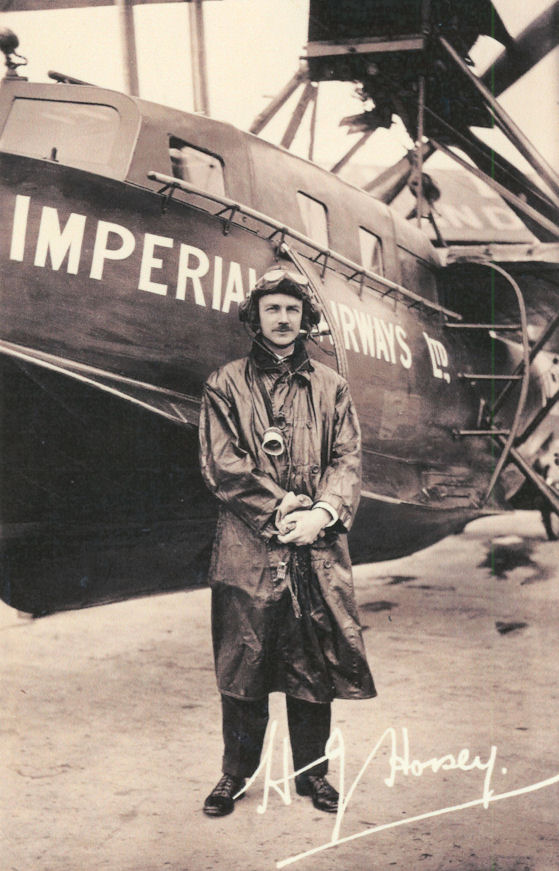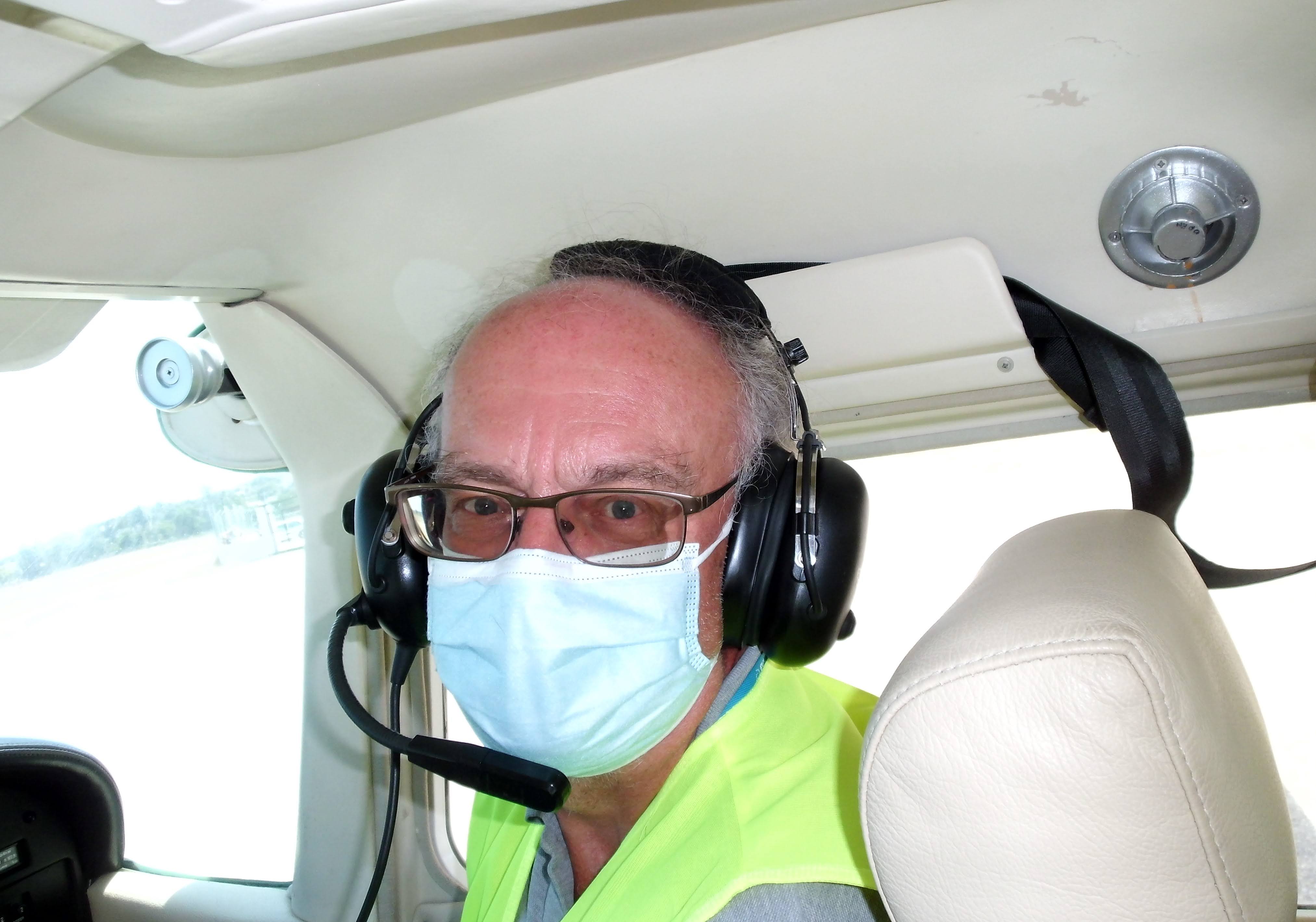Aviator
-
Montagu, Venetia
Venetia Montagu 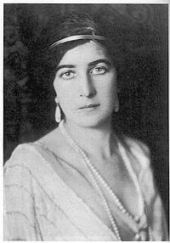
Beatrice Venetia Stanley, b. 22 Aug 1887; in 1915, she married the Hon Edwin Samuel Montagu, later Secretary of State for India. He died in 1924, though.
She already had an interesting past. In 1912, when she was 26, the 60-year old, married, Prime Minister Asquith fell in love with her, and over the next three years wrote her 560 letters, sometimes three a day, detailing his most intimate thoughts and documenting the growing crisis which led to WWI.
Asquith wrote to her in 1915; "Darling - shall I tell you what you have been and are to me? First, outwardly and physically unapproachable and unique. Then, in temperament and character, often baffling and elusive, but always more interesting and attractive and compelling than any woman I have seen or known".
Mrs Asquith, inexplicably, wasn't so keen; she said Venetia was 'a woman without refinement or any imagination whatsoever'.
Venetia was descibed then as 'tall, with dark eyes and a strong nose and face... widely read and vaguely eccentric; she kept as pets a bear cub, a penguin and a fox'.
---
It was probably G-AFBW, the third of her Moths, which she used to tour Spain in December 1930. ‘Flight’ reported their exploits on December 5th:
“The Hon. Mrs. Edwin Montagu, who has just returned from a tour of Spain in her light aeroplane, tells a story illustrative of the development of flying in that country. When passing over the coast at Valencia, she decided to land, but was unable at once to find a suitable landing ground. What was her surprise, therefore, to sight a "windsock" on the beach. Her pilot brought the machine down on beautifully firm sand, and a courteous Spaniard hurried across the beach to greet them. He was the owner of a cafe on the edge of the sands and had installed the "windsock" on the restaurant roof to attract the increasing number of private flying enthusiasts in his country. He wheeled Mrs. Montagu's machine into the yard behind the cafe, and took charge of it while she and her pilot visited the town. He said that the installation of a wind-indicator had been an inspiration, and that many airmen see it and come down for refreshment, the broad stretch of hard sand making a good landing ground.”
The fact that the report mentions ‘her pilot’, and that there is no record of her ever having gained her Royal Aero Club Certificate, strongly suggests that she did not fly the ‘plane herself.
However, it was certainly G-AFBW which she, and her pilot Rupert Bellville, used the following year (1931) when they decided to tour Persia and Russia.
They left Heston on March 27th and reached Budapest on April 1. On April 5, “when flying to Sofia, they made a forced landing at Nisch, Jugoslavia, but were able to proceed later. The flight was continued on April 7 from Sofia to Constantinople.”
They left Constantinople on the 13th April, but 20 days later on May 2nd, met with a mishap: “when flying from Teheran to Moscow, their machine crashed near Sabzawar, Persia, and, although the machine was burnt, they were both unhurt.”
It only took her a couple of weeks to find another aeroplane, however; she “obtained a new—or rather a second-hand—mount with which to continue her tour. She purchased a ‘Moth‘ in Iraq, and left for Astrabad, on the Russian frontier, on May 16.”
They arrived in Moscow from Tashkent on June 1st, and left for Berlin on June 3rd.
Venetia Montagu owned:
ex-Adelaide Cleaver's 1929 DH.60G Gipsy Moth, G-AAEA;
a 1929 DH.60G Gipsy Moth, G-AAJO;
a 1930 DH.60G Gipsy Moth G-ABFW, the one she crashed in Persia in May 1931, and later
a 1934 DH.85 Leopard Moth G-ACLN, which went to Spain.
She died in 1948, aged 60; only then did her daughter discover the letters that Asquith had written to her. -
Morris-Davies, Florence Mary
Florence Mary Morris-Davies 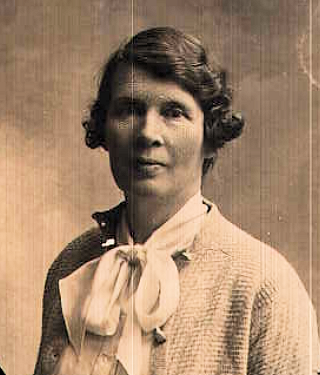 1936
1936Florence Mary Head as was, b. 17 September 1881 in London, daughter of Sir Robert Garnett Head, 3rd Bt. and Florence Julia Pollock. She married Percy Meyrick Morris-Davies of Llanfarian, Cardiganshire on 17 July 1922, and - after a honeymoon in Wales - they lived at Guestling House, Guestling, Sussex. After he died on 1 January 1934, she took up flying, got her RAeC Certificate at the Cinque Ports Flying Club in June 1936 and bought a B.A. Swallow, G-AEMD, in August 1936.
She used this to attend the 'Maygar Pic Nic' fly-in in 1937, arranged by the Magyar Touring Club to celebrate its birthday, and won a prize: "Those pilots who landed at the aerodrome at Szekesfehervar—near Lake Balaton—on June 15 between the hours of 10.00 and 14.00 were eligible for a competition, which was decided by a draw to select the sealed time. Much to everybody's pleasure, the eventual winners were announced to be Mrs. Morris Davies and Mrs. Macdonald, who, between them, had flown a B.A. Swallow to the Picnic."
The following year, they used the same aircraft to tour the south of France. In the intervening April, she advertised in the times for an 'educated girl' to act as house-parlourmaid; "capable of caring for one dog; easy situation, country house and seaside flat; one lady, two house staff".
She moved to Woodford Green, London, by 1940.
For some reason, she had to change her name by deed poll in 1949 from 'Florence Mary Davies' to 'Florence Mary Morris-Davies'. She described herself then as a "widow, of Greystones, Kingsgate in the county of Kent".
She died on 3 July 1979.
-
Mortimer, A G
Mr A G Mortimer 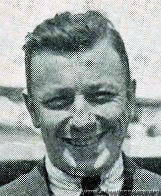 1930
1930?? -
Morton, T W
Mr T W Morton 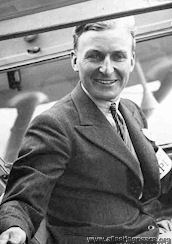
?? -
Muir, A F
Capt A F Muir 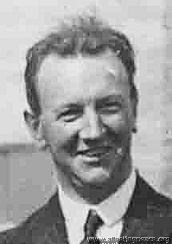 1930
1930?? -
Muntz, Frederick Alan Irving
Frederick 'Alan' Irving Muntz 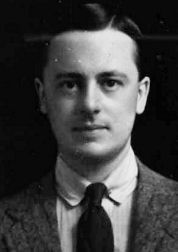
b. 7 Jun 1899
Co-founded Airwork Ltd with Nigel Norman in 1928; this company was instrumental in opening Heston Aerodrome the following year.
Married 3 times; firstly to Mary [Harnett] with whom he had 3 children, then in 1934 to Lady Margaret Frances Anne Vane-Tempest-Stewart (1910–1966), daughter of the 7th Marquess of Londonderry and then, in 1948, Marjorie Mary Helena Strickland.
d. 7 Mar 1985
-
Muntz, Mary Lee
Mrs. Mary Lee Muntz Mary Lee Harnett as was, Alan Muntz's first wife, with whom he had 3 children.
She married Sydney John Folley in 1947.
-
Murgatroyd, P
F/O P Murgatroyd Posted to the School of Army Co-operation, Old Sarum. in 1923, then H.Q. Iraq in December 1924
-
N to Z Pilots
Mr A LT Naish
Director of Aircraft Exchange and Mart Ltd, Airspeed's sales agents.. Formerly a Flying Officer in the RAF; spent 3 years in the Middle East.
King's Cup in 1934photo: 1937, aged c.30
Mr Carill Stanley Napier
b c.1907. From Putney, London
Son of the famous engine-maker Montague; an apprentice with Westlands in 1929. 'his one recreation apart from flying is the commendable indoor sport of darts. Believes that air-racing is good fun only when taken not too seriously''
Killed in WWII: 29 April 1941, when a Captain in the Air Transport Auxiliary; buried RAF Halton, Bucks.
King's Cup in 1929, 1930, 1931, 1933, 1934, 1937photo: 1928, aged 38
Mr Thomas Humphrey Naylor
Director of Royal Insurance; in 1950 High Sheriff of Cheshire; died 1966
King's Cup in 1930
King's Cup in 1934Barbara Mary Nicklin of Heston owned 1929 Desoutter I, G-AAPK
photo: 1920, aged 33
Lieut Robert H Nisbet
b. 16 Oct 1887 in Fife, N.B.
Can't tell you much about him, sorry: resigned his commission in Jan 1924, took out some patents when working for Sperry Instruments in 1939, and
d. before 1951
photo: 1921, aged 27
Sqn-Ldr J Noakes
presumably Jack Noakes, b. 9 Apr 1894 in Brighton
RAeC Certificate 1092 (1915); later an Air Commodore
King's Cup in 1928b. Apr 1912 (so, aged 23)
A member of the Old Etonian Club
King's Cup in 1935
photo: 1926
Mr (Sir) Henry Nigel St Valery Norman CBE
b. c.1898. From Rendcomb, Glos.
Always known as Nigel; from 1939, 2nd Baronet of Honeyhanger, later Air Commodore Sir Nigel. Co-founded Airwork Services with Alan Muntz at Heston.
Killed in WWII: 19th May 1943, on a flight from St Mawgan, buried Rendcomb, Glos.
King's Cup in 1930.jpg)
Miss Rosalind Laura Norman
b. 1908
Nigel's sister Rosalind was a regular on the Court Circular, attending endless weddings, dances, balls, luncheons, etc, etc.
The following December (1931), Rosalind accompanied Commander Sir Walter and Lady Windham on their trip to Ceylon; she met them at Marseilles, and "after visiting Ceylon spent some time visiting friends in India."
In August 1933 she made another flying tour, to Poland and Germany.
She 'quietly' married Aubrey Burke in February 1936, becoming Lady Burke, and they had two daughters and a son.
From her obituary: "Lady Rosalind Burke, a glamourous aviatrix in the halcyon inter-war years of private aviation who became an extraordinary aircraft factory manager during the second world war, has died aged 86.
Her zest for aviation came from her brothers, who had all taken up flying, and she gained her private pilot's licence at Heston, the aerodrome founded by her brother Nigel (later Air Commodore Sir Nigel Norman). During the early thirties, she took part in many of the fashionable private aero events throughout Europe. She also possessed a remarkable practical flair, making model aircraft in her home workshop, and going on to create the largest model aircraft factory in the country.
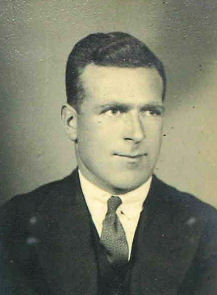
She met and married another aviator, Aubrey Burke, at Heston in 1936 (he had flown the Atlantic by R100 airship in 1930 and joined Imperial Airways in 1935). They also joined forces in business as Burman Engineering (the name being an amalgam of their surnames), and began to provide full-scale aircraft components. At the outbreak of war, he joined the civil repair organisation of the Ministry of Aircraft Production set up to restore battle-damaged aircraft. She kept up her reputation for the rapid supply of accurate aircraft parts, matching female labour and the production capacity of her several factories.
She perceptively recruited volunteers for what became known as the IPP (Immobile Part-time Production) through radio broadcasts and lecture tours, with the allure of making a real contribution to the war effort. She also instituted an imaginative scheme for reducing aircraft assembly-line waste with numerous village-based groups retrieving and sorting many thousands of small items - nuts, bolts and rivets - from the sweepings of factory floors or the debris of blitzed factories. She was an energetic, inspiring leader, taking her three young children round this network with her, the youngest in a carry-cot. By the end of the war, the Burman factories had the commendable record of two million man/woman hours worked, and over 150 million components delivered.
Post-war, she devoted her attention to her family and travelled extensively with her husband as he rose to become chairman of the de Havilland Aircraft Company and vice-chairman of the Hawker Siddeley Group. She also helped him to build up a pedigree herd of Guernsey cattle.
Rosalind Laura Burke, born February 20, 1908; died April 1, 1994."
Aerial Tour in 1930

photo: 1930
Flt-Lt John Oliver
King's Cup in 1930photo: 1929
Sqn-Ldr Augustus Henry Orlebar CBE, AFC and bar
b. c.1897. From Podington, Northants.
Schneider Trophy pilot (and World Air Speed Record Holder) in 1929, Director of Flying Training in WWII; died 4th April 1943 from natural causes, and as far as I know not Bob Willis' dad.
King's Cup in 1930photo: 1931, aged 21
Mr John Gladholme Ormston
known as Jack; a Speedway Rider from Durham. Yep; a speedway rider. Apparently, [it says here], a rider in the historic 1936 World Championship Final. [see also Arthur Franklyn, above].
"Mr Ormston has already used his Westland Widgeon on several occasions as a means of travelling between one speedway track and another, or from Wembley to his home at Coxhoe, Co. Durham."
Died 2006.
King's Cup in 1931, 1932
Clyde Edward Pangborn
 Born 28th October, 1895
Born 28th October, 1895Died 29th March, 1958, aged 62
MacRobertson Race in 1934

photo: 1929, aged 27
Mr Ian Robertson Parker
a Sugar Planter and Merchant from Liverpool; RAF Wing Commander in WWII (Digby Section in 1940); Group Captain AAF from 1946; died 1959 and is buried on the Isle of Wee Cumbrae, Ayrshire, Scotland
King's Cup in 1930
photo: 1932, aged 21
Mr Victor George Parker
an Aircraft Engineer from Hertfordshire (another one!)
King's Cup in 1934
Koene Dirk Parmentier
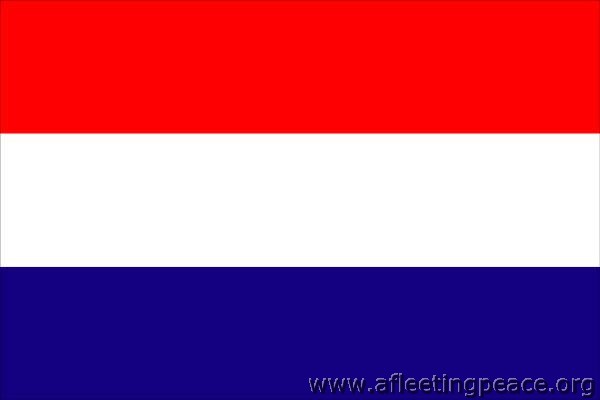 b. 26 September 1904 in Amsterdam
b. 26 September 1904 in AmsterdamTrained in the Dutch Air Force, and one of the first Dutch pilots to qualify for a navigator's licence, he joined K.L.M. in 1929 and flew on its mail routes, chiefly as commander of Amsterdam-Batavia liners. In 1933 he spent four months in America, nightflying over various routes and studying their operation. Died 20th October 1948, aged 44, when the K.L.M. Constellation airliner he was piloting on a flight from Amsterdam to New York crashed and burst into flames on a farm near Tarbolton, Ayrshire near Prestwick Airport.
MacRobertson Race in 1934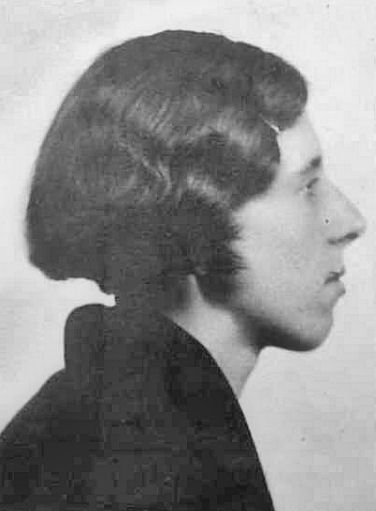
1933
Joan Mary Parsons
I think all we need to know about Joan is summed up here (from the Yorkshire Post, 8 November 1943):
"AIRWOMAN FINED FOR QUITTING JOB
Complaint About Workmate "Exaggerated"
Joan Parsons, who made a name for herself 1938 by flying solo to the Cape [actually, she had to be rescued after a forced landing], was fined £5 to-day at Leamington, Warwickshlre, for falling to comply with a Ministry of National Service direction to work in an aircraft factory. Mr. W. A. Coleman, prosecuting, said that after being at a bench for two days Miss Parsons wrote to the firm complaining that she had been molested by a labourer, who repeatedly jabbed her under the arm. This so played on her nerves that she could not continue, and she left, declining to return for fear of further aggression.
''Of African Fame"
The letter was signed, "Joan Parsons, Leamington's airwoman of African fame." The complaint was grossly exaggerated, said Mr. Coleman. The labourer was a reputable workman, who thought he was encouraging the defendant by a playful act. Gilbert Stackhouse, shop foreman, said the labourer just touched Miss Parsons on the shoulder and said: "It won't be long now." 'I knew what he meant, but she didn't." added witness. "I told her that the man was trying to keep her happy, and instructed him not to go anywhere near her again."
The "Rough Man"
In evidence Miss Parsons said her father was a clergyman. The "rough man" who irritated her wanted to tickle other girl employees. The man leered in her face and was very objectionable. She kept away from the factory because she feared an act of revenge. Mr. Coleman: But surely you have had some experience of the world and meeting people? Miss Parsons: Yes. I have been treated very well abroad, and natives in territories on which I have had forced landings in Africa have looked on me as a goddess”.
Mr. Overall, defending, said it was not everybody who reacted favourably to being jabbed the ribs every two or three minutes."
One of the ATA Women

in 1911, aged 20
.jpg)
1935
Mr Cecil Lawrence Pashley
An early pioneer (RAeC certificate No 106) and well-known instructor of large numbers of airmen including F G Miles; born 1891 in Great Yarmouth but lived in Shoreham (a road there, and a bus are named after him, it seems, plus a Tiger Moth called 'Spirit of Pashley').
He and his brother started a flying school at the newly-opened Shoreham Aerodrome in 1914, but obviously WWI intervened almost straight away and he became a test pilot for the Admiralty, then flew for Central Aircraft Co in Northolt after the war.
He and F G Miles set up Southern Aircraft Ltd (best known for the 'Martlet').
Chief Instructor to the Southern Aero Club and its successor the South Coast Flying Club.
d. 1969
King's Cup in 1932
photo: 1934, aged 29
.jpg)
Mrs Gabrielle Ruth Millicent Patterson
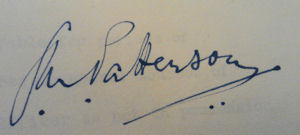
Miss Burr as was, a lady with her own opinions, particularly about race handicapping, which you can read here.
b. 6th July 1905 in Paddington, London, the eldest of four daughters; grew up in Dover, Kent, but her father was a rather peripatetic amateur entomologist and she was educated all over Europe.
Was very busy in 1931; described as a 'secretary' [actually, she was the Company Secretary of her mother's family firm of upmarket china and glassware merchants, Thos Goode & Sons], and living in Maida Vale, London, acquired both her aviator's 'A' Certificate (No 9752), and her husband, Mr Arthur L 'Pat' Patterson. At the same time, she also competed in the Ladies event at Reading (May, 1931) - the other competitors were Amy Johnson, Grace Aitken, Pauline Gower, Dorothy Spicer, Susan Slade, Winifred Spooner, Christina Young, and Fidelia Crossley - a historic gathering indeed.

Her son, Ian, was born in 1932 in Eton, Oxfordshire, but Gabrielle and Pat divorced in 1939.
In 1938, she wrote an article on the subject 'Would women make good instructors in the event of war'. She, of course, was already a successful instructor, although admittedly her experience was limited, because "a man who is paying for his flying, and whose average age is probably a little greater on that account, is more amenable to reason than the youngster of eighteen to twenty, with his wild oats still unsown."
She thought that women instructors would probably cope, though; "The instructor always starts with the advantage of his pupil's spontaneous respect for a (relative) master of his subject, coupled with a very natural wish to shine. The woman instructor has the added advantage that this respect is enhanced by her supposed greater difficulties in acquiring that (relative) mastery and with the instinctive desire of the male to impress the female. By tactfully and subtly indicating the conduct in the air and on the ground which does win her confidence and does impress her, she can obtain it in nine cases out of ten, and in the face of such a proportion she could certainly count on disciplinary measures for the tenth."
But she worried whether there would actually be enough women to become instructors; her experience was that women didn't make such good puplis as men. "It is arguable that since of good men pilots only a few make good instructors, amongst women (where the number of good pilots is a lower percentage of pupils) the quantity of good instructors would be so small that there could be no justification for spending public funds in discovering them."
The reason for this, she thought, was that "women pilots hitherto have consisted only of those with large enough bank balances".
Flight reported her activities at the time:
19 May 1938: "ROMFORD. Miss Amy Johnson visited the Romford Flying Club last Sunday to present a flag and charter to the National Women's Air Reserve which operates there. There are 125 members of the Reserve, taking flying instruction with Mrs. G. M. Patterson."
15 June, 1939: "Mrs. G. Patterson's G.A.P.A.N. Appointment. All who have come into contact with her will wish to congratulate Mrs. Gabrielle Patterson on her appointment to the Panel of the Guild of Air Pilots and Navigators. This is the first time that a woman has received the appointment.
Mrs. Patterson has been a flying instructor for some years and is now leader of the National Women's Air Reserve, the organisation which has been putting in a good deal of flying —and securing no little amount of newspaper publicity—at Maylands Aerodrome, Romford. Mrs. Patterson herself, it may be added, has always shunned any sort of personal publicity.
She is, we believe, a first-rate pilot and an extremely capable instructor."
She was living in Bristol, aged 34, with about 1,530 hours experience when WWII broke out in September 1939; her son was at Prep. School.
She filled in the application form for the ATA that December; her 'types flown' at the time consisted of "Moth Major, Tigers, Avro Cadet, Avian, Cygnet, Hornet Moths, Cirrus I, II and III Moths, Gypsy Moths, Spartans, Puss and Leopard Moths, Klemm, Swallow, Civilian Coupe, Miles Hawk and Hawk Major, and Miles Whitney Straight" and she had owned "a Miles Whitney Straight, a Puss Moth, 2 Gypsy Moths, and 2 Swallows (Only 1 any good)". As well as in the UK, she had flown in Germany, Belgium, Holland and France.
She gave her next of kin as Arthur Patterson RNVR.
She started as one of the 'First Eight' highly-experienced women pilots at Hatfield the following month. After a while ferrying trainers at No 5 Ferry Pool, she had to learn to fly new types. Her instructors duly reported that she was "a good and very experienced pilot", and she was "keenly aware of her own limits , which I feel is an excellent feature of her character. Has the makings of a first-class ferry pilot."... "A polished pilot whose capabilities are limited by her physique. In view of her undoubted ability and experience I regard her as somewhat under-confident."
She had 2 accidents; in December 1940, flying a Rapide X7322, (she was deemed to be 'at fault') and in May 1942, when the undercarriage of Spitfre Vc BP863 jammed in the 'up' position (she was 'not to blame').
During her time with the ATA, she flew these types:
Moth (155 hrs); Miles Master (35 hrs); Oxford (105 hrs); Proctor (8 hrs); Hart (1 hr); Dominie (25 hrs); Magister (6 hrs); Harvard (8 hrs); Q.6 (1 hr); Lysander (6 hrs); DH86 (1 hr); Anson (42 hrs); Hurricane (26 hrs); Rapide (2 hrs); Spitfire (33 hrs); Blenheim (21 hrs); Douglas variants (1 hr); Defiant (1 hr); Fairchild (26 hrs); Hampden (3 hrs); Wellington (26 hrs); Hudson (6 hrs); Tutor (1 hr); Botha (3 hrs); Stinson (2 hrs); Whitley (1 hr); Beaufighter (2 hrs); Mosquito (2 hrs); Swordfish (4 hrs) and Typhoon (1 hr).

Lettice, Jennie, Audrey, Gaby, Pauline and Annie
However, her 'physique' (she actually wasn't very tall, even though I think she might be sitting down in this photo) also let her down in other ways; she was off sick with measles for a month in Apr-May 1941, then 2 weeks in March 1942 with an infected elbow, then a month (Oct-Nov 1942), and finally (in Feb-Mar 1943) another month with 'bronchial cattarh'. Her contract was terminated in June and she left the ATA as a First Officer [which I always find surprising; she was never promoted to 'Flight Captain'].
She died relatively young, sadly; having completed a degree at Manchester University in the 50s, she moved to France but fell ill with cancer, moved back to Little Missenden, Bucks, to live with her sister, but died there on 31st October 1968, aged 63.
King's Cup in 1934
One of the ATA Women
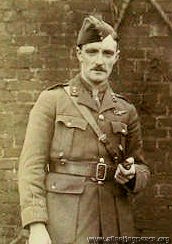
photo: 1916, when a Lieutenant in the Royal Engineers, aged 29
Sqn-Ldr Harold James Payn
test pilot for the Air Ministry; AFC 1923
King's Cup in 1922, 1924, 1927
Harald Peake
b. 28 Oct 1899 in Yorkshire, a "Director of Limited Companies"
Air Commodore (later Sir) Harald Peake, post-WWII Director of RAF public relations and later chairman of Lloyds Bank and the Steel Company of Wales.
Harald only got his aviator's certificate on the 28th April 1930 (after returning from this tour), so that, perhaps, explains why he took along RLR Atcherley, probably one of the most famous and experienced aviators of the time, to help him fly his new plane!
His wife, Felicity, was the founding director of the Women's Royal Air Force.
d. 1978
Capt G A Pennington
King's Cup in 1930 
photo: 1930, aged 32
Capt Edgar Wikner Percival
Australian aeronautical genius who ended up in the USA and New Zealand, via Luton.
b. 23 Feb 1897 in Albury, N.S.W. In 1915, while training in England, he became only the third person on record to recover from a spin (supposedly, Fred Raynham [q.v.] was the first). He later wrote: "After that I found that spinning was great fun and spun a Bristol Scout the next day. Very much later, on the Western Front, I found a spin was a very speedy way of dropping on the enemy - especially through a handy cloud."
Designer, and pilot, of some of the finest racing and record-breaking aeroplanes of all time.
"He always flies his rakish Mew Gulls in a soft felt hat and tries to look as much unlike an intrepid birdman as possible, though he has never yet deceived the handicappers by this ruse."
 King's Cup 1934; sans trilby, for once
King's Cup 1934; sans trilby, for onceFlight said he "has an uncanny navigational sense in thick weather, but sometimes flies pensively past his destination in 100-mile visibility".
Michael Madigan wrote: "It was very difficult to resist his puckish humour and not to fall under his spell... In his early flying days he had a fox-terrier called Ginger Mick. This dog always sat in the [open] rear cockpit tethered to a spar. One day as Edgar was preparing to land he went into a loop to lose height, forgetting about his passenger. After levelling off he heard strange scrabbling noises from the back and looking out saw Ginger Mick frantically dog-paddling in the air suspended by his lead. Edgar managed to manoevre Ginger back into the plane, and after landing he thought he would never see Ginger Mick again as he rushed off, but Ginger was as persistent an aviator as his master and reappeared, to settle in his place at start-up, large as life, and eager for more."
 In 1956, with the EP.9 'Prospector'. And trilby.
In 1956, with the EP.9 'Prospector'. And trilby.d. 21 Jan 1984; his ashes were taken by the RAAF "to be scattered in the very field in Richmond, N.S.,W., where it all began."
"Edgar Percival had a strong character, a high mental and moral sense, and was a perfectionist - the qualities which made him successful. He was the dominant presence which compelled attention in a group. This dominance arose from his vast knowledge of aviation in all its aspects... all this and his strength of will did not make him an easy associate. He could see problems clearly, had the energy to solve them, and drove himself relentlessly, which made him rather intolerant of those less gifted."
(All quotes via Martin Barraclough, for which many thanks)
King's Cup in 1928, 1930, 1932, 1933, 1934, 1935, 1936, 1937, 1938

.jpg)
(Walter) Robert Dempster Perkins
b 3 Jun 1903 in Boldre, Hampshire, an Engineer
Sir Robert Perkins; went to Eton and then Trinity College, Cambridge.
Director of Messrs Roy Dempster, Manchester. He had "a wide circle of personal friends (which included Lyndsey Everard MP), and... [was] a keen politician". He was, in fact, in charge of the erection of a large gasholder near Heston Airport in 1933.
Became a Conservative MP (for Stroud 1931-1945) and was instrumental in the setting up of the British Airline Pilots Association (BALPA) in the late 30s.
Parlimentary Secretary to the Ministry of Civil Aviation during WWII; in October 1944, he married Nigel Norman's widow Patricia, in Westminster Cathedral.
MP for Stroud again from 1950-55. Knighted in 1954.
In 1954, following the accidents to the DH Comet airliner, he handed in a motion to the House of Commons stating "That this House will regret the proposal of BOAC to buy American airliners". He urged them to buy Britannias instead...
Subsequently Charirman of Southern Newspapers, and a director of Southern Television.
d. Dec 1988 in Salisbury, Wilts.
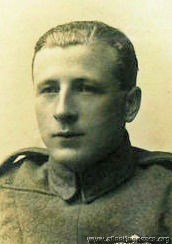
photo: 1915, when a Sergeant in the RFC, aged 23
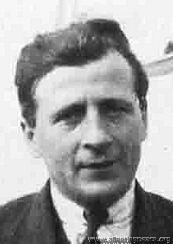
photo: 1922, aged 30
Capt Herbert Howard Perry
born in Birmingham; test pilot for the Aircraft Disposals Company in the 20s; joined Imperial Airways; a member of the Court of the Guild of Airline Pilots and Navigators in the 30s
King's Cup in 1922, 1923, 1925, 1926
Capt Percival Phillips
Western Morning News - Thursday 31 January 1935:
ST. AUSTELL PILOT HURT 'Plane Crash In Hospital Grounds CRITICAL STATE THIS MORNING PERCIVAL PHILLIPS, M.C, St. Austell, was seriously injured when a two-seater aeroplane which was piloting, making forced landing in the dark, crashed into the grounds of Springfield Mental Hospital. Lower Tooting, London, S.W., last night.
He was first taken to the Springfield Hospital, but was later transferred St. James Hospital, Balham, where it was stated early this morning that was a critical condition, with a fractured skull, a broken nose, broken leg, and other injuries.
His passenger, Mr. James Edward Fry, of Gloucester-terrace, who received injuries to tbe left eye and nose, and was also transferred to the Balham Hospital, was later able take his discharge. The machine, which was owned by Air Services, of Croydon, and was making a flight round London when the mishap occurred, was slightly damaged.
WAR SERVICE R.A.F. Capt. Percival Phillips, whose London address was given the Aerodrome Hotel, Croydon, lives in St. Austell. During the war he served as a pilot in the Royal Air Force. Coming down the Turkish lines in Mesopotamia, he was taken prisoner.
He is partner in the motor firm Messrs. Hill and Phillips, of St. Austell, and is senior partner in the firm of Cornwall Aviation Company, whose headquarters are at St. Austell. He has been one of tbe pilots in Sir Alan Cobham's Flying circus, and his acrobatic stunts in the air will be remembered by many from the West country who visited the circus. His wife last night informed Western Morning News representative that she had intimation of the accident from London. Mrs. Phillips is the elder daughter of Mr. H. Rowse, of the firm of St. Auslell auctioneers. There are two young children."

photo: 1928, aged 32
Mr Charles Edward Murray Pickthorn
a 'Dealer' from London; WWI ace (5 victories, one shared with James Robb). Attempted an England-Australia flight in 1930 with F/O. C. J. Chabot on a D.H. "Puss Moth"; left Croydon October 6, but abandoned the flight in Karachi on October 13.
died 1938
King's Cup in 1930
photo: 1922
Mr M W Piercey
Later (1924) to fly the Beardmore 'Wee Bee' in the Lympne light aircraft trials; although he suffered engine failure only 2 miles from the finish, he won the £2,000 prize for a speed run.
King's Cup in 1922
photo: 1918, aged 20

photo: 1937, aged 39
Mr Harold Lord Piper
'Pip', another Kiwi; originally a farmer. He and Cyril Kay flew a Desoutter from England to Australia in 1930; later chief test pilot for Shorts, until 1948.
"Apart from flying, Pip's other passions in life are duck shooting, guns and boats."
died 1965
King's Cup in 1937
1936

ATA
Honor Isabel Pitman
b. 30 Oct 1912 in London; father Ernest, mother Frances Isabel (Butler), who was Irish. She was an heir to the Pitman (of shorthand fame) family fortune.
Honor learnt to fly originally in 1927 (at the age of 14) at the Bristol and Wessex Aero Club but "because of my age, I always had to fly with someone & could never go to other aerodromes to land." Eventually, in 1936, she passed her RAeC Certificate and had done 120 hours before the start of WWII. She was in Australia in 1938, and then started as a driver in the 12th Oxford Motor Transport ATS on the 1st September 1939; however, when she heard that the ATA was on the lookout for people with flying experience, she wrote to them in March 1940:"I would very much like to know if there is the possibility of my joining your section of the service? I am an 'A' pilot & have only done about 120hrs flying in small club planes - Swallows, Cadets and Aroncas, but I am prepared to take any training in any line if I could help you. 4 years ago I joined the FANYs [which I gather stands for First Aid Nursing Yeomanry] in hopes of a flying section being started, but this never materialized.... I had been hoping on my return from Australia last year to have my own plane & work for my 'B' licence but instead I have had to content myself with reading text books."
The ATS, by the sound of it, didn't want to release her, and in December 1940 she asked the ATA to "please write to my Group Commander so that she can have a letter to show the 'powers that be' that the work I am asking to transfer to will be more important than the work I am doing at this present".
Eventually she was invited to do a flight test, which she passed, although the assessment was that she lacked experience and would need to be carefully supervised during her development. She enjoyed the experience, though: "Monday was a wonderful break to this humdrum war life for me, I thought everyone was so kind."
However, as there were no vacancies at the time for less experienced pilots, she was placed on a waiting list. She wrote: "I am of course very disappointed to hear you now cannot take me, but I am still bouyed up hoping one day you may call me up. In the mean time, I have a very interesting job and am trying to persuade myself that I am lucky."
She started her probationary month with the ATA in March 1941, and became Mrs Pomeroy Salmon in June.
 via Andrew Heron
via Andrew HeronHer subsequent flying career was not, I'm afraid, a great success - in retrospect, it would perhaps have been kinder for her to have been stood down from flying. As it was, she suffered two accidents in two days; firstly, on the 5th March 1942, she taxied a Spitfire into an unmarked soft patch, then on the 6th the starboard undercarriage of a Hurricane collapsed.
These events left her in what was called in those days a 'very highly strung condition', and she was given a month's rest, and then a refresher course.
The instructor's report was ambivalent: "This pilot needed a refresher and has benefitted by being returned to school. Her chief fault is her attitude towards her job. If she can be persuaded that flying is, after all, a very ordinary occupation, with common sense the main ingredient and that an ordinary sensible woman makes a better ferry pilot than a temperamental prima donna, she will do better and inspire greater confidence."
Unfortunately her subsequent reports, whilst allowing that she did improve generally, were hardly any better: "An unstable type. She admits she gets into a flap flying with an instructor, and claims she has no difficulty in navigating solo. Apparently tends to rely on Bradshawing [i.e. following railway lines] so I did not destroy her confidence in that, but showed her more polished methods."... "Very self-important at times"... "This pilot occasionally flies well - but not so well as she thinks she does. Her progress will need very careful watching".
She had another mishap, on the 26th August; she overran the perimeter of the runway in a Spitfire and nosed over in a heap of rubble, damaging the propeller. She was, however, deemed "Not responsible, as she had to swerve to avoid an Oxford landing"; lack of aerodrome control was blamed.
But still the worrying comments from her instructors kept coming: "She is not very bright when any difficulty arises. She is definitely very over-confident, and also lost herself on one occasion"... "this pilot has taken a long time to reach an average standard. Has worked hard and been very attentive, but should be watched carefully"..."Her greatest trouble now is her forgetfullness. Her flying is satisfactory but she is apt to forget things"
Again with hindsight, you have to wonder why the warning signs were ignored and she was allowed to carry on flying; perhaps it was because everyone seems to have liked her.
Eventually, what now seems inevitable happened; on the 19 April 1943 she flew on in bad weather instead of turning back, and was killed when her Airspeed Oxford MN765 hit high ground near Devizes.

She was the only ATA woman casualty who was deemed to be 'at fault' for her fatal accident.
 Memorial in St Peter's Church, Dyrham (with thanks to Andrew Heron)
Memorial in St Peter's Church, Dyrham (with thanks to Andrew Heron)Western Daily Press, 24 Apr 1943: "The death of First Officer Honor Isabel Pomeroy Salmon (30), of the Air Transport Auxiliary, is announced. Daughter of and Mrs Ernest Pitman, of The Cottage, Dyrham, Glos., and the grand-daughter of the late Sir Isaac Pitman, of Pitman's shorthand, she attended school at Abbot's Hill and at Westonbirt School, near Tetbury. and at the age of 17 became a member of the Bristol Flying Club, taking her licence and becoming a keen pilot. She was a keen breeder and trainer of ponies, and frequently hunted with the Duke of Beaufort's pack and took part in point-to-point meetings. In June, 1941, she married Major H. Pomeroy Salmon, of the 3rd Hussars. She had been a member of the A.T.A. for two years."
WILL OF MRS. HONOR SALMON First Officer Honor Isabel Pomeroy Salmon left £30.279 7s. 2d. gross, with net personalty £28,131 6s. 6d She left her shares in Sir Isaac Pitman and Sons, Ltd., and Dun Mallard, Ltd., to the children of her brothers Isaac, Christian and John, together with her leasehold property, the site of 1, Amen Corner, London (destroyed by enemy action) and the right to receive war damage compensation. Subject to the disposal of her effects she left the residue to her husband, to whom, together with her brother Christian E. Pitman, Doynton House, Doynton, probate has been granted. "
Pauline Gower should have the last word, perhaps. "Honor will be very much missed not only as an excellent pilot but as a friend. She was a charming and gallant person."
One of the ATA Women

John L Polando
 b. 6 September 1901
b. 6 September 1901d. 13 August 1985, aged 83
MacRobertson Race in 1934
.jpg)
Flt-Lt R P P Pope
Chief Instructor with Air Service Training
King's Cup in 1930, 1934
Oases Air Race in 1933

photo: 1921, aged 22
Mr G Powell
Dick Terry kindly tells me that George Beacall Powell was one of the original 16 pilots for Imperial Airways, and that he was b. 20th April 1899 in Loppington. Sadly, the rest of his story is quite a short one:
"In July 1916 George Powell was a science undergraduate at Keble College Oxford, but he left the University the following year and on 11 June joined the RFC as a Cadet.
On 29 July 1917 he was promoted to 2nd Lt on probation on the General List. In October, after further training he was appointed Flying Officer. In November he attended the Armament Experimental Station Orfordness for bombing & weapons training.
In February 1918 Powell contracted jaundice and it was more than six months before he was allowed to resume flying – but only under close medical supervision. He was eventually declared fit for Home Service flying duties on 15 November 1918.
In January the following year Powell was awarded the Air Force Cross
In February 1919 he was assigned to No 1 Communications Squadron where he remained until September when he was transferred to the unemployed list. He joined Instone Air Line soon after.
In 1923 Powell had to withdraw from the Kings Cup Air Race when his DH 34 could not be spared from its official duties on the London Continental air service.
Powell moved to Imperial Airways when it was formed by the amalgamation of Instone Air Line with three other companies in April 1924.
He died a year later on 19th April in a motoring accident at Mitcham Common. The coroner decided that Powell had been driving negligently and blamed him entirely for the accident – the other driver was cleared of all blame. Shockingly these details were recorded on his death certificate.
His body was taken back to Croydon and then flown, in a D.H. 34, to Shrewsbury Aerodrome. The Times dated 27 April 1925 recorded the event as the first time in the history of aviation that an aeroplane had been used as a hearse. The funeral and interment took place in Stanton, Captain Powell’s home town."
King's Cup in 1923Mr H A Presto (or Oresto)
King's Cup in 1930
photo: 1916, when a 2nd Lieut in the 2/5th Royal Warwickshire Regiment, aged 25
Wing-Cmdr Harold Melsome Probyn
from Lancashire, later an Air Commodore; retired to Kenya. Felt that aviation wasn't as much fun after the invention of the parachute. In 1927-8 he entered as 'Harold Brooklyn', and 1929-31 he entered as 'J Wellworth'; I have no idea why.
King's Cup in 1927, 1928, 1929, 1930, 1931, 1933
Mr Clifford B Prodger
.jpg)
b. 8 June 1889 in Alexandria, Minnesota, USA
Flight said in 1917 :"I always thought that Walter L. Brock, the unceasing masticator and the winner of many notable aerial races, was the most modest American England had ever seen, until C. B. Prodger came over."
After seven years as a rancher in the Little Missouri Valley, he worked for the Northern Pacific Railway, then went into the motor business and became well known as an amateur racer. He won many prizes, including the Montana Speed Trophy in 1910.
Learnt to fly in 1911 with Beatty in the USA, then did a good deal of special work for the Pathe Film Co. and also went in for night flying. In the spring of 1913 he went to Montana to give exhibitions on his own machine—a monoplane with an 8-cylinder V-type Boland motor.
After this it seemed, he said, that there was "nothing doing" in aviation in the USA, and he gave up flying for a time. Then in February, 1915, he came over to Hendon and rejoined Beatty to assist him in training pilots for the R.N.A.S.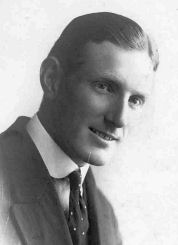 Sydney Pickles
Sydney PicklesWhen the school closed down, he took over from Sydney Pickles as an official test pilot, assessing every kind of aeroplane, "his calm, analytical mind being admirably adapted for work of this nature."
Killed 22 Aug 1920 in Redwood City, California, with two other aviators, in a crash from a height of 300 feet.
Aerial Derby in 1919
Lieut C RV Pugh, RN
King's Cup in 1931, 1932
Flt-Lt Robert Linton Ragg CB CBE AFC
Later an Air Vice MarshallKing's Cup in 1928
photo: 1933, when 2nd Lieut in the Grenadier Guards, aged 20.
.jpg)
in 1936
Lt Patrick Randolph
b 25 Jan 1912 in Chelsea, London.
His parents (American-born Arthur Bertram Randolph and Enid Saffron Pickersgill-Cunliffe) had made the society pages when they had a 'best girl' as well as a best man at their wedding in 1908.
However, his father was killed in WWI, his mother remarried (becoming Saffron Duberly, and 'lady of the manor' in St Neots) and in 1924 she and Mr Duberly sailed off to Jamaica, leaving the 12-year-old Patrick to go with his aunt Adelaide to the USA, presumably to visit family (his grandfather Arthur Randolph Randolph had emigrated and died there in 1885).
It seems that Patrick subsequently lived with his aunt Adelaide and her husband Lionel in Dorset - he always quoted their address as his own, and again visited the USA with her in 1935.
In December of 1933, he and fellow-officer Capt Goschen flew (in Pat's Percival Gull) to Egypt to take up an appointment at the Flying School for 2 years. Whilst there, he took part in the 'Oases Circuit Air Race' along with 31 others from Britain, France, Germany, Italy, Jugoslavia, Sweden and Belgium.
He "sportingly flew up for the race round the Isle of Man in 1936 during 48 hours leave and flew back the same night".
He took part in several other races, e.g. the Folkestone Air Trophy in August 1933; the London-Cardiff Race in 1936, and the Manx Air Race in June 1937. He entered for the Schlesinger Race in 1936 (as co-pilot to Lt Misri Chand) but the aeroplane wasn't ready in time.
He owned 4 aeroplanes:
- G-AACV, a 1928 Avro Avian IVM;
- G-ACJW, a 1933 Percival Gull which was sold in Australia in 1934 and became VH-UTC;
- G-ACUL, a 1934 Gull Six (sold in New Zealand, becoming ZK-AES), and finally
- G-AEKD, a 1936 Vega Gull.
It was this aircraft in which he was killed in a crash in Jaipur, India on 12 October 1937, aged 25. P Q Reiss (q.v) was also seriously injured in the same accident.
A few weeks before his death, he and his uncle-in-law Lionel had been the joint executors for the will of his father's half-brother, Judge Joseph Randolph J.P., selling Eastcourt Estate ('A Georgian house with 484 acres, garages, stabling, and 9 cottages').
(His mother Saffron's son by her second marriage was also killed, in WWII. Her second husband died in 1951; she herself died in 1980).
King's Cup in 1936
King's Cup in 1928photo: 1920, aged 27
Mr Frederick Philips Raynham
'Fred', originally from Suffolk; the first man to recover from a spin, (although he didn't know how he had done it); test pilot for Hawkers; died 1954 in the USA and is buried in Colorado Springs. Survived a lot of crashes.
King's Cup in 1922, 1923Dr Edward Whitehead Reid
See here Rosemary Theresa Rees (Lady du Cros) MBE in 1934
b. 23 September 1901 in London, the daughter of Sir John and Lady Rees. He was MP for East Nottingham.
She volunteered to fly Christmas presents to Prague in December 1938, for refugees.
From her obituary: "ROSEMARY, Lady Du Cros, who has died aged 92, was a pre-war dancer turned aviatrix and became one of the first of the wartime Air Transport Auxiliary (ATA) women ferry pilots. She continued her flying career long after the war.
Born Rosemary Rees, daughter of Sir John Rees, she went to ballet school in Chelsea, and joined a dancing troupe performing in revue. Returning to the UK in the early thirties from touring in Ceylon, China and America, her attention was diverted to flying after a friend had persuaded her to take a lesson and she enthusiastically embraced what was to be the enduring passion of her life.
Going solo in 1933 after seven hours' instruction, and complete with a private pilot's licence, she bought her own aeroplane and toured air-rallies, with excursions to practically every European country, enjoying the life of the halcyon years of pre-war private flying.
At the outbreak of war in 1939 she had acquired an instructor's licence, flown more than 90 aircraft types and had 600 hours in her logbook."
One of the ATA Women
photo: 1931, aged 34
Mr Peter Quentin Reiss
an Insurance Broker and Underwriter, originally from Manchester. Lieutenant, Lancs Fusiliers in WWI. started flying with the RFC in 1917 and was still active in 1964, when he gave a dinner for Gatwick's controllers.
Amy Johnson gave him some flying lessons in 1931, and he adored her with "an unquestioning devotion"- in the post-Jim era he was one of her unsuccessful suitors. He flew to Brussels in 1936 and brought her home after her first attempt to fly to Cape Town had ended in Colomb Bechar, a French air base in the Sahara.
King's Cup in 1936
Lt Valdemar Rendle
Miss Consuelo Mary de Reyes, at the time a famous playwright and theatre owner; amongst her best-known works were a series of plays about the life of Queen Victoria.

She was instrumental in setting up The Little Theatre Cinema in Bath, the UK's oldest surviving independent cinema still in family ownership. Her daughter, Hilary King, wrote a short history of it a few years ago. See this article at http://www.thisisbath.co.uk
Consuelo owned a 1930 DH.60M Moth, G-AAVR.
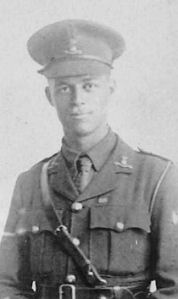
Flt-Lt Edward Brownsdon Rice in 1916
b. 5 July 1892 in Cape Town
later a Group Captain
killed in WWII: 5th September 1943, and is commemorated at the Sai Wan War Cemetery
Air League Challenge Cup in 1923
photo: 1926, when profession: 'None', aged 20
Mr Thomas Herbert Ottewill Richardson
b. Barton-on-Sea, Hampshire. from St Albans.
"Has owned an Avro and is a consistent and capable amateur with no previous record of indulgence in racing or spectacular flying of any sort. Succumbed to competitive urge early this year [1936] and bought a Comper Swift previously His Majesty's [i.e. Edward VIII] when Prince of Wales"
Killed in WWII: 3 April 1943, when a Flt-Lt 78 Sqn RAF piloting a Halifax II; buried in Eindhoven (Woensel) General Cemetery.
King's Cup in 1936photo: 1930
Lieut L G Richardson, RN
King's Cup in 1928, 1929, 1930photo: 1916, when a Captain in the 4th Northumberland Fusiliers, aged 21
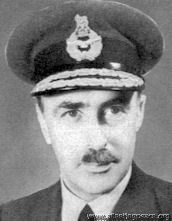
photo: 1944, aged 49
Sqn-Ldr (later Wing-Cmdr) James Milne Robb GCB KBE DSO DFC AFC
from Northumberland. RAF during WWI, then Iraq and Kurdistan. Chief Flying Instructor at RAF Wittering 1927-30.
Later Air Chief Marshall Sir James; WWI ace (7 victories); helped form the Empire Air Training Scheme in 1939; advisor to Mountbatten, Eisenhower in WWII. Died 1968
King's Cup in 1931, 1932photo: 1932, when A Officer, aged 20
Mr Owen George Endicott Roberts
died before 1963
King's Cup in 1935Sqn-Ldr F L Robinson
King's Cup in 1923photo: 1930, aged 29
Lt Patrick Geoffrey Tremayne Rodd, RN
"He runs a Puss Moth as well as a Speed Six Bentley. He is probably unique, in that he has had his chauffeur, Mr. J. Camp, taught to fly at the Hanworth Club, so that he can have either his aircraft or his car brought to him when he requires them. He does a great deal of Continental flying..."
He was killed 31 Jan 1933 when making too 'impetuous' a turn after taking off from a snow-covered lake at St Moritz.
A 'good natured, wealthy young pilot'. And his 1919 diaries are in the National Archives.
King's Cup in 1931, 1932a certain Lady A Rodger owned a 1929 DH.60G Gipsy Moth, G-AAIE, but I'm afraid have no idea who she was.
photo: 1936
Flt-Lt Thomas 'Tommy' Rose DFC
b. 27 Jan 1895 - Alton, Hants
One of the best-known racing and pioneering pilots of the 30s.
His father, John, was a farm bailiff at Basing Farm, Froxfield, nr Petersfield, Hants. After working briefly as a bank clerk, Tommy joined the Royal Navy in 1914 and then transferred to the R.F.C. in June 1917.
"He was shot down three times, but escaped each time. He was awarded the DFC for his work with the fighter squadron in which Billy Bishop, VC, served. "
m. 1925 Margaret Elizabeth [Ashford], [divorced 1938]
Retired from the RAF in 1926 with the rank of Flight-Lieutenant.
In December 1931, he made an unsuccessful attempt on the UK-Cape record, and then flew back "by easy stages".
From Oct 1933, Manager and Chief Instructor at Sywell.
"TOMMY ROSE is gone from Sywell, but not forgotten. As sales manager for Messrs. Phillips and Powis, the Reading aircraft manufacturers, he spends quite a lot of time flying round the country. Last week his photograph was 'splashed' in all the national daily papers, greeting Mr. H. L. Brook, the Yorkshireman airman, on his arrival at Croydon after breaking the Australia-England record previously held by Jim Mollison. There was no mistaking Tommy’s famous sports jacket and boyish grin!
Mr. Rose, the way, left a last impression at Sywell. Shortly before leaving, when the new gate was being erected in front of the clubhouse, he carefully placed his foot in the wet cement and printed beside it 'Tom Rose' with a trowel. The cement hardened, and the 'Rose' mark is there for posterity to reverence! Hundreds of feet have since trod the hallowed spot." - Northampton Mercury, 12 April 1935
Competed in the King's Cup six times, winning it in 1935...
 RAeC
RAeC... and coming second in 1934 and 1936.
[The 1935 King's Cup itself recently sold at auction for £3,900:
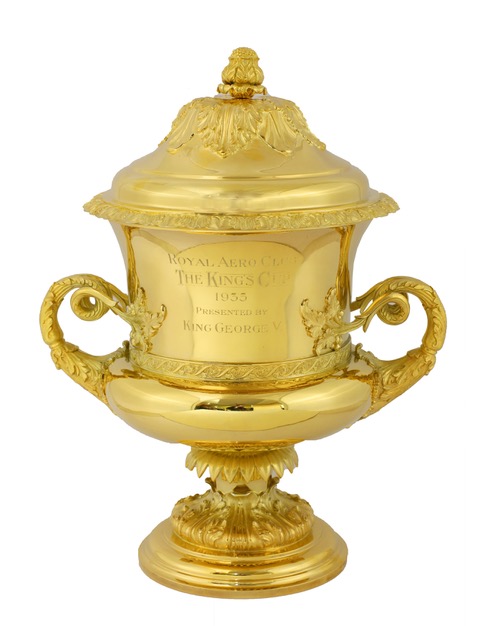
Photo kindly supplied by Sarah Chambers, reproduced by kind permission of Sworders Fine Art Auctioneers.]
He became a national hero in March 1936 after his flight to Cape Town and back; "he can now claim to have made the fastest time for the trip both out and home. His new record is 6 days 6 hr. 57 min. (he got to the Cape in 89 hr. 37 min.), which beats F/O David Llewellyn's time—the previous best—by 5 hr. 6 min."
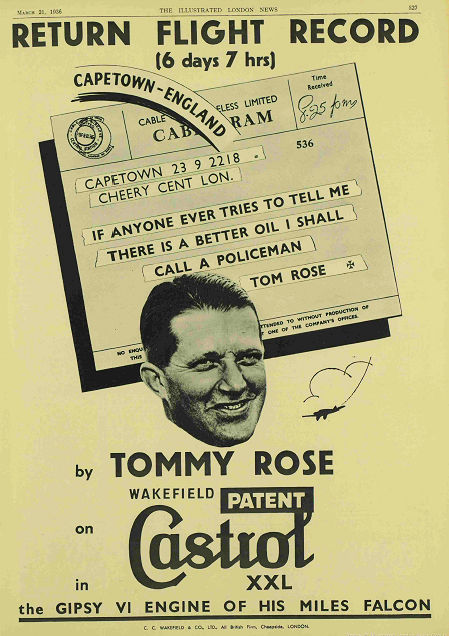
After the flight to the Cape, he had tea with the Prime Minister, General Hcrtzog, and also saw General Smuts. However, he was charmingly modest about his achievements:
"TOMMY ROSE ON LONG FLIGHTS
SAYS RECORD ATTEMPTS ARE 'LARGELY BUNKUM'
This flight business is bunkum! The authority for that picturesquely phrased piece of information is Flight- Lieutenant Tommy Rose, and he should know, for he hit the headlines in all the national newspapers when he smashed all records for the flight from London to the Cape. In a talk to the Round Table at Stewart's Cafe on Monday he summed up the whole business in these few words: 'All long distance flights are largely bunkum. The national newspapers, if there is no other news at the time, whip up an interest in these flights, and if one gets there safely and breaks a record everyone thinks: 'By gad, here's one of the twelve apostles come to life!’ (Laughter.)
'But I assure you there is nothing in it. The only things you have got do to be successful are to get the best machine you can find and then practise sitting still for a long, long time . . . . '
Reflections wise and witty on flying in general and his own flight in particular made Flight-Lieutenant Rose's talk one of the most delightful and amusing to which Tablers have listened to for a long time. His racy manner produced a laugh at almost every sentence, and a more unassuming world record breaker than this genial young man would be difficult to find.
There was one richly humorous story which is worth repeating. 'When I eventually got to the Cape I had to broadcast to the Union,' he said. 'The announcer seemed very nervous and this was what he said: ’Who do you think I have here the studio? None other than Mr Tom Mollison, who flew from London to the Cape in 37 days 18 hours.’ I met General Hertzog few days later and he said: 'if it takes all that time to fly, don't you think you had better come by boat next time?’
Flight-Lieutenant Rose answered a number of questions and urged the need for municipalities laying down landing grounds for aircraft. Members of the Rotary Club and of other Round Tables were present, as guests, to hear the airman’s talk. " - Eastbourne Gazette, 6 May 1936
Before the 1936 Schlesinger Race to Johannesburg, he predicted: "It is my opinion that the pilot of the aeroplane which gets there in under forty-eight hours will deserve just about the biggest bunch of bananas ever found.
Having got lost myself many times down this route when flying without wireless, I fully expect to do so again, and the pilot in this race who can honestly say at the end that he was sure of his position all the time will either be very lucky, very clever, or have a queer idea of honesty."
From 1939 to 1946, Chief Test Pilot for Miles Aircraft, living in Sonning, Berks; in July 1943 he was reported to have "improved considerably and to be well on the way to recovery, after he contracted a chill when captaining his works cricket team. "
Won the Manx Air Derby in 1947, still flying a Miles Hawk; three circuits of the island at 181 mph.
d. 20 Jun 1968 - Alderney, Channel Islands.
King's Cup in 1929, 1930 (6th), 1934 (2nd), 1935 (1st), 1936 (2nd), 1937 (10th)
Schlesinger Race in 1936 - retired at Cairo with undercarriage problem.
photo: 1932, aged 20
Sir Charles Henry Rose
from Oxford. "Director of the Portsmouth Flying Club and lately director of Portsmouth Southsea and Isle of Wight Airways. Had very bad luck when starting in the King's Cup of 1934. Made forced landing at Aldenham. Again bad luck in London-Cardiff Race in 1934 when motor stopped over finish line."
Another director of PS&IOWA was Lionel Balfour.
King's Cup in 1934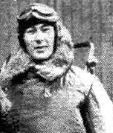
Lt J S Leslie Ross
Killed in the crash of the Allance 'Endeavour' on the 13 November 1919, during the England-Australia Race 1919
photo: 1916, when a Flight Sub-Lieut in the Royal Navy, aged 19
Flt-Lt Herbert Victor Rowley
born in Derbyshire; WWI ace (9 victories); Air Commodore in WWII, in India and Burma
King's Cup in 1930photo: 1928, aged 28
Hon Walter Leslie Runciman OBE AFC
2nd Viscount Runciman of Doxford, from Newcastle-upon-Tyne; after Eton and Cambridge, joined his dad's shipping firm, then Imperial Airways. First Director-General of BOAC, Commodore of the Royal Yacht Squadron, OBE, etc, etc; died 1989
His sister, Margaret Fairweather, was killed in WWII serving in the ATA.
King's Cup in 1930, 1932, 1933photo: 1930, aged 23
Hon Leopold Oliver Russell
At the time, an Assistant Advertising Manager from Milton Ernest, Bedfordshire; later Director-General of the British Cement and Concrete Association! (1958); died 1988
King's Cup in 1931
photo: 1915, aged 22, when a Flt Sub-Lt in the RNAS
Capt Howard John Thomas Saint
b. 23 Jan 1893 in Ruabon, N Wales
RNAS in WWI (June 1916).
Joined the Aircraft Manufacturing Company after WWI, and was the first pilot then licensed by the Air Ministry.
He conducted the very first flight after the ban on civilian flying was raised on May 1, 1919, taking off from Hounslow before dawn in a D.H.9, with a parcel of Daily Mails, heading for Bournemouth. Unfortunately, "fog was encountered in the neighbourhood of Portsmouth, and a forced landing on the Portsdown Hills resulted in the machine being wrecked and the pilot, Capt. H. J. Saint, D.S.C., and passenger, Capt. D. Greig, being injured."
Rejoined the RAF in March 1922, and (as F/O Saint) competed in a handicap race at the RAF Pageant later that year.
In 1927, he became chief test pilot for Gloster. He had a narrow escape in 1933; "The Breda monoplane on which has been fitted the Ugo Antoni variable-camber wing crashed on Chosen Hill, Churchdown, near Gloucester, on Friday last. Mr. H. J. Saint, Gloster's chief test pilot, had taken the machine up in very bumpy weather, and a couple of minutes afterwards wing flutter developed, a portion of the port aileron came adrift and the machine sideslipped into some trees, Mr. Saint escaping with minor injuries."
Married twice, September 1918 (divorced August 1934) and in 1936.
Retired to Cheltenham, Gloucestershire and died there in Sept 1976.
Aerial Derby in 1919
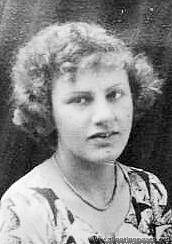
Peggy Louise Salaman in 1935
b. 20 September 1910 (or possibly October 1907)
Peggy's brief moment in the spotlight came in November 1931. She and Gordon Store flew her D.H. Puss Moth 'The Good Hope', and two lion cubs, to Cape Town, in 5 and a half days, breaking Glen Kidston's record by 28 hours.
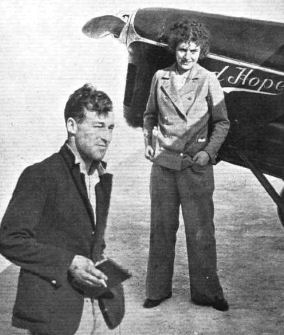
They gave her a celebration dinner at the Dorchester, at which she modestly pointed out that Gordon did "all the navigation, the chief part of the piloting, the forced landing [they missed an aerodrome and had to spend the night in 'dangerous country'] and for landing and taking off at the majority of the aerodromes", as well as looking after the engine. She did all the organisation and relieved Mr Store "when the flying was easy". Nevertheless, neither of them had more than about 20 hours sleep during the entire flight.
The lion cubs? She picked those up in Juba, [Southern Sudan, as you probably know] took them to Cape Town and then on to England. They appeared in the Christmas circus at Olympia and then went on the road with Bertram Mills's Circus. In October 1932 they were reported as being "sturdy young lions" who were "a picture of health". So that turned out well, then.
See a newsreel of her, and the lion cubs of course, here.
Their Cape Town record only stood for a few months, though; Jim Mollison managed it at the second attempt, in under 5 days, the following March.
She was, however, still (just) famous enough in May 1932 to get to meet Amelia Earhart at the American Embassy - more details here.
photo: 1930, aged 18Mr Theodore Cecil Sanders
"F/O. William Daniel Dennehy and F/O. Theodore Cecil Sanders, the pilot and passenger of an aircraft of No. 2 Armoured Car Company, Ramleh, Palestine, lost their lives in an accident which occurred at Sarafand on September 26, 1935"
King's Cup in 1933F/O Phillip Edward Gerald Sayer
the first British pilot to fly a jet fighter, in 1941; killed in 1942 in a flying accident in Northumberland
King's Cup in 1930, 1932, 1933photo: 1934, aged 35
Flt-Lt Harry Methuen Schofield
Director and General Manager of General Aircraft Limited, who built the Monospar aircraft. Spent four years after WWI building church organs.
He was a Schneider pilot in 1927 but crashed before the race, because they'd put the aircraft back together wrongly - he was thrown clear in the crash, but his clothes were dragged off, leaving him clad only in a shirt; wrote a couple of books; died 1955.
To see some video footage (and to hear him say “Well, I am very proud to have won this cup…but, um, I think the man who should be speaking is Mr. Steiger who built the machine… I couldn’t have done it without the machine, and I think a lot of people could have won it in the machine, and that’s all there is to be said about it, really”),
King's Cup in 1933, 1934photo: 1926
Flt-Lt Edward Rodolph Clement Scholefield
known as 'Tiny'; b. 1893 in Calgary, Alberta. RAeC certificate Fr 819 (1912). Joned the RFC as a mechanic in WWI; German PoW 1915-18. chief test pilot for Vickers; killed in 1929 in the original Vickers Vanguard, which crashed at Shepperton
"His was a lovable disposition, and he could be at once amusing, illuminative, and instructive." C G Grey
King's Cup in 1926, 1927photo: 1929, when an Army officer (11th Hussars), aged 25
Mr Derek Shuldam Schreiber
'From Suffolk. Enjoys polo, hunting, shooting and other sports'. Gulp. Later a Brigadier; died 1972 and is buried in Marlesford, Suffolk.
King's Cup in 1930, 1937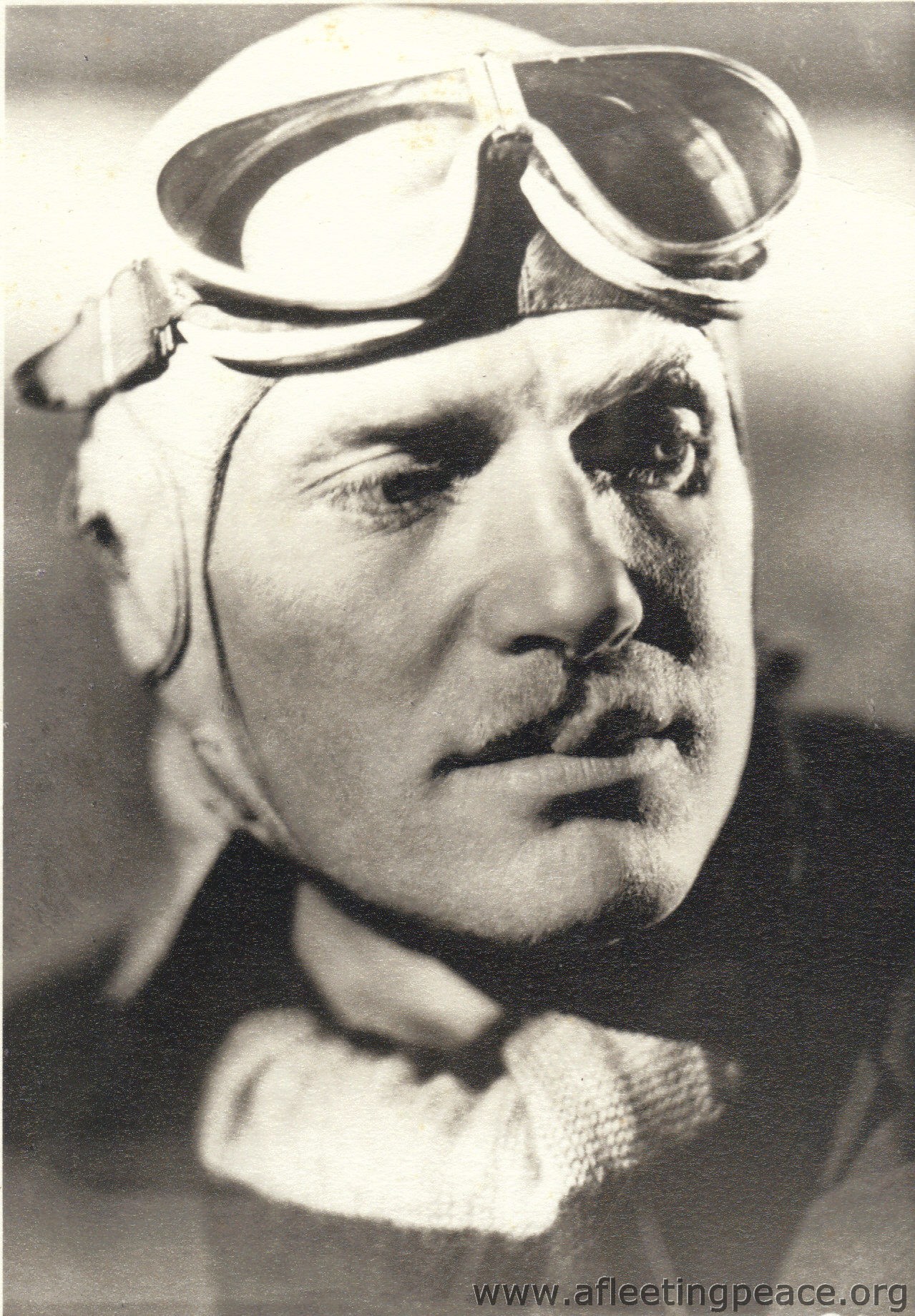
photo: 1934, aged 31
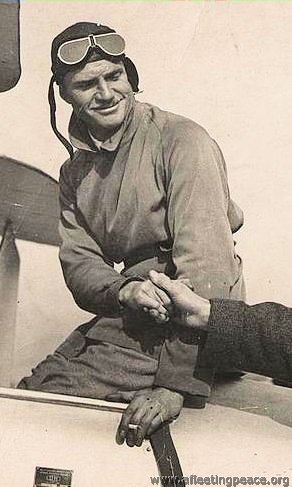
Mr Charles William Anderson Scott
Born 13thFebruary 1903 in London
One of the truly great aviators of the 1930s, establishing many long-distance records and winning some of the most important long-distance races of the period, but rather went to seed after that and shot himself after WWII. Scott wrote a book, and enterprisingly called it 'Scott's Book'.
"Scott is a splendidly-built six-footer, always in excellent condition. His other sporting recreations are golf and sailing."
"Charles Wiliam Anderson Scott, aviation editor of the 'News Chronicle', is the elder son of Mr Charles Kennedy Scott, the musician and conductor.
Educated at Westminster School, the future airman began his career as a sugar planter in Demerara, South America. The experience did not prove at all to his liking and he returned to England in 1922. Sailing was his passionate hobby - it still is - but as a youth trying to find his rightful career, flying did not occur to him until a friend suggested joining the Royal Air Force. Young Charles Scott sent in his application and thought little more about it until he found himself accepted and ordered to report to the Flying School at Duxford.
The Royal Air Force occupied the next four years of his life [he was heavyweight and light-heavyweight boxing champion whilst in the RAF] and in 1926 he was again wondering what was the next move when chance played the deciding game again. A sharp shower of rain sent him scurrying into Australia House for shelter with the result that he was bound for Australia not many weeks later.
There Scott became a pilot with Qantas Ltd., flying the mail routes in Western Queensland and acting as a flying instructor from 1927 to 1930. During that period he met the late Bert Hinkler, Mrs Mollison and the late Sir Charles Kingsford Smith and was inspired to break records.
Scott resigned his flying job in Queensland and came to England in 1931 determined to break the England-Australia record, despite accumulating financial troubles caused by the rising Australian rate of exchange.
He got there, reducing the record to 9 days 3 hours. That year he flew back again and made another record of 10 days 23 hours. Both flights beat Sir Charles Kingsford Smith's times.
In 1932 he attacked the England-Australia record for the second time and regained it with 8 days 20 hours.
The greatest adventure of his career was the magnificent flight in the Mildenhall-Melbourne air race of 1934 when he and the late Tom Campbell Black reached Melbourne in just under 3 days.
On September 17, Scott was married to Miss Greta Bremner, younger daughter of Mr and Mrs E L Bremner, of Melbourne, Victoria, Australia, only 12 days before the start of the Johannesburg air race."
- from the Celebration Dinner programme after the race (October 14th 1936 at Claridge's Hotel).
In 1936, his "Flying for All" Display embraced over 150 centres in the United Kingdom and Irish Free State, and was aimed particularly at "familiarising people with some of the cheap, easy-to-fly light aeroplanes available to-day".
Died 15th April 1946, in Germany, aged 43
p.s. The £10,000 MacRobertson first prize would, using average earnings, be worth about £2 million today.
Read More...
MacRobertson Race in 1934
King's Cup in 1936
Eileen May Scott in 1929 b. 21 May 1903, from Barnsley, who owned:
- a 1928 Avro 594 Avian III, G-EBYO, which she later sold to Vera Brailey, then a
- 1929 Blackburn L.1C Bluebird IV, previously G-AAOC, registered EC-UUU in Madrid in December 1933
photo: 1930, aged 24
Mr Michael David Llewellyn Scott
b. 12 Sep 1906 in Eton, Bucks.
B.A. Cantab. and an 'Old Uppinghamian'. In 1930, a solicitor from Stoke Poges, if you hadn't already guessed :-), and, for a while, v. famous in the Skegness area...
In 1930, after competing in the King's Cup, he crashed near Skegness when the wheels of his D.H.60X Moth G-EBXG caught a wire fence. He jumped clear, but his mechanic (Howard), who was still strapped in, was 'injured about the head'.
May 1932, he had a terrifying ordeal (a bit like General and Mrs Lewin in the Sudan swamps, but even worse) in the remote reaches of The Wash; "CRIPPLED 'PLANE ON SANDBANK SET ON FIRE TO ATTRACT ATTENTION - HULL TRADER TO RESCUE"
"Captain (sic) M. D. L. Scott, secretary of the Skegness Aero Club, was flying with a passenger named Tingall, from Skegness to Hunstanton, when his 'plane developed engine trouble. They were about halfway across the Wash, and he was compelled to a make forced landing on a sandbank which was uncovered, as it was low tide... they made an effort to swim the five miles to shore, but the current proved too strong. They then tried to attract attention by setting fire to the 'plane. Later the flames were noticed by a small cargo boat named Lizzie and Annie, which came alongside and took Captain Scott and his passenger on board. "
Only just in time, too - the tide was rising fast... only the engine of the aeroplane remained unburnt... Gosh!
By 1933, he was offering to take sun-starved midlanders to be braced up a bit in Skegness; 25 bob return from Nottingham or Leicester, 35 shillings from Birmingham: "Nottingham people will be able to fly to Skegness again this summer at fares which will actually be cheaper than the first-class railway rates. This enterprising venture, which was inaugurated last year, is to be resumed again at Easter on a very much bigger scale... The service is to be conducted Mr. M. D. L. Scott, of Eastern Air Services, Skegness".
The Eastern Air Transport Company carried 30,000 passengers in the 4 years to 1933 without serious incident.
In November 1934, the Western Daily Press reported thus: "FOUND: AN AEROPLANE. A police constable, while on duty in Pinner, Middlesex, yesterday, found a monoplane in a field. No one seemed to know how the monoplane got there, and the constable began to make inquiries. The machine appeared to be a privately owned one, and was in good condition save for some slight damage to the undercarriage. The monoplane bore the marks G-AAPY and inscribed inside the fuselage was the name "M. D. L. Scott, Skegness." Further inquiries by the officer among the farm hands and the owner of the farm, Mr Hall, showed that someone saw an aeroplane land in a field on Wednesday afternoon. From that time until the constable discovered it yesterday it has been completely unattended, and, far as the police know, unclaimed. A Mr L. Scott, an airman, operates a private aerodrome and club at Winthorpe, a mile or so from Skegness. Pinner police were last night in communication with the police at Skegness."
[G-AAPY was a Desoutter I, belonging to Michael. It was, indeed, written off in November 1934.)
He then turned to golf in the late 30s - winner of the 'Witt Cup' in 1938.
Married firstly to Marguerite; their son, Roderick, was born in December 1943. By then, he was a Flt-Lt (RAF Volunteer Reserve) in Oxford.
However, by 1948, when he married Miss Patricia Collette Thomas (from Bude, Cornwall) in Zurich, they lived at 400 East 57th St, New York.
Describing himself as a 'Sales Manager', he travelled (first class) from Durban to Southampton in February 1959, intending to stay a couple of months with the Duke of Somerset, Maiden Bradley, Wiltshire. Like you do.
King's Cup in 1930, 1933
Also entered his Puss Moth for the Oases Race in 1933, but didn't start.
Harry Gordon Selfridge, Jr
b. 2 Apr 1900 in Chicago, known generally as 'Gordon'.
Son of Harry Gordon Selfridge Snr, the founder of Selfridge's department store in London; his mother, Amelia 'Rose' Buckingham, died of pneumonia in 1918. Gordon had 2 older sisters - Rosalie and Violette, and a younger sister Beatrice. Harry always regarded Gordon as his natural successor.
The children had a privileged upbringing during the years that Selfridge's was doing well - travelling frequently back to Chicago, or to St Moritz for skiing; cycling around London, playing tennis or learning judo. Gordon was a pupil at Winchester, then got a degree in economics at Trinity College Cambridge.
His father was apparently unimpressed with Gordon's liaison with a pretty girl called Charlotte Elsie Dennis, from the Toy Department in his store; Charlotte and Gordon eventually had four children (three of whom got PhD's), but Harry Sr simply refused to acknowledge the relationship.
Anyway, at 26, Gordon became MD of Provincial Stores Group (part of the Selfridge's Empire) and bought a new DH Moth to get around. This he crashed into a tree, whereupon his father insisted that he sell it (to Oscar Garden as it happens, who used it to fly solo to Australia). And he bought a speedboat. And then another plane. "He was constantly photographed beside a combination of a plane, a boat, or a beautiful woman"; he comes across as, let's be frank, a rich, spoilt, playboy.
Gordon continunued to be well-known in all the best aviating (and lunching) circles throughout the 1930s - e.g. in June 1932, "Miss Amelia Earhart was entertained to luncheon at Heston by Mr. Gordon Selfridge, Jnr. Among Mr. Selfridge's party at lunch were Sqd. Ldr. and Mrs. Orlebar, the Hon. Leo Russell, Mr. and Mrs. Nigel Norman and Mr. and Mrs. R. Denman. After lunch Mr. Selfridge flew Miss Earhart to Brooklands' display in a 'Puss Moth', several private owners accompanying them in their machines as escort. Later in the day Miss Earhart returned to Heston, again being piloted by Mr. Selfridge."
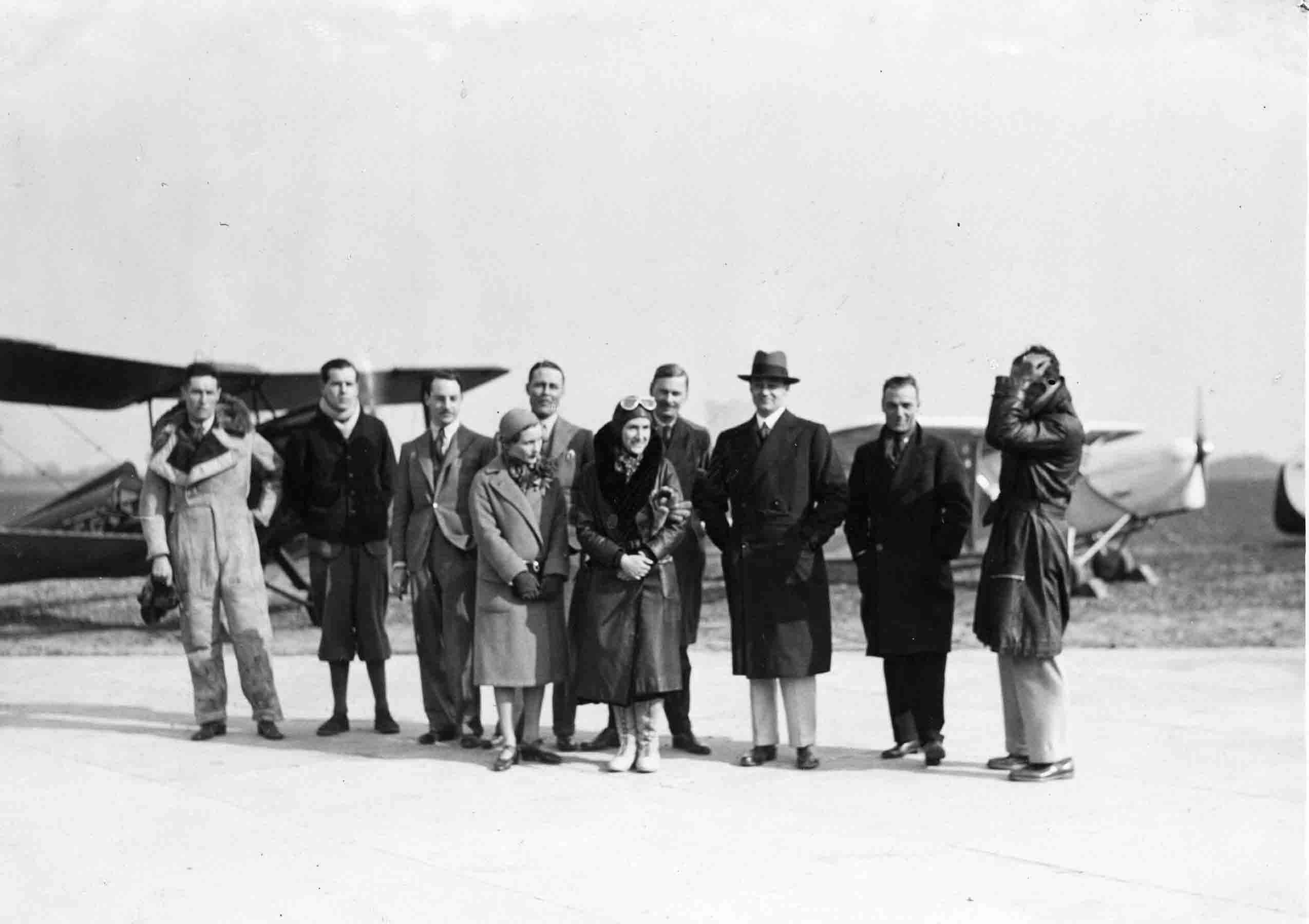
A typical jaunt - the Easter Flying Tour, in 1931: Harry (3rd from right) with others including Flt Lt MacIntosh, H Jackaman, R Denman, JC Parkes, Leslie Runciman, Whitney Straight, and HH Leech.
However, after his father lost control of the Selfridge's Empire in 1939 and it became clear that there was no place for him in the new setup, Gordon returned to the U.S., finally married Charlotte (yes, her from the Toy Department) in Illinois and thereafter continued to work as a "retail executive" for Sears Roebuck.
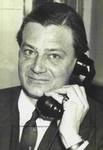
d. 30 November 1976 at Red Bank, New Jersey, aged 76.
photo: 1930
Colonel the Master of Sempill AFC
Ah... yes... the aviation pioneer, chairman of the Royal Aeronautical Society, right-wing sympathiser and occasional spy, who was motivated by his 'impetuous character, obstinacy, and flawed judgement', rather than money.
in 1930
Irene Agnes Brooke Sewell, b 5 May 1900 in Dorking, owned a 1928 DH.60M Moth, G-AACD.
She used this in February 1932 when she flew, "unaccompanied, on a 3,500-mile flight to Transjordania. The flight is a pleasure one entirely, mainly to visit friends at Amman. She reached Le Bourget in the afternoon, but was held up there by bad weather until February 25, when she proceeded to Marseilles. Rome was reached on February 27, and after a stop of 20 min. she flew on to Naples. Here she was again held up by bad weather."
(Irene, love, are you absolutely sure it was a good idea to go in February?)
She was then "weatherbound at Naples for nearly a fortnight. She was able to resume her flight last week-end when she accomplished a splendid trip to Campania in 3 hr. 50 min. in such bad weather conditions that a German pilot, who left Naples shortly after for the same destination, had to return to Naples."
Anyway, she finally got there on March 19th. I hope it was worth it.
In August 1932, the "GOSSIP FROM GATWICK" was that "The feminine element was well to the fore during the last week. Miss Aitken [i.e. Grace Aitken, q.v.] did her first taxi trip, when she conveyed Miss Sewell to Heston to collect her machine, in which she put up such a very good show when she flew it out solo to Transjordania."
The aeroplane ended up at Cambridge Aero Club, and they duly wrote it off in a crash on the 24th June 1937.
Irene died in 1970.
John Lister Shand
The son of His Honour Sir Charles Lister Shand and Lady Shand; he married Ruperta Sibyl Bromley, daughter of Sir Robert Bromley, 6th Bt. and later the Hon. Lilian Pauncefote, on 3 June 1924, but they divorced in 1933. He later married Enid Chauvin.
Joined the RAFVR in WWII, was promoted to Acting Flt-Lt in February 1941 but was killed 16 June 1941 on active service in the Middle East, and is commemorated in Cairo's War Memorial.
His mother was killed in an air raid on Bath in April 1942.
in 1934, before the MacRobertson Race
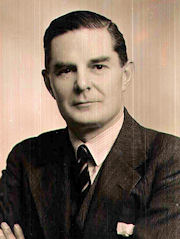
In 1947
Wing-Cmdr (AAF) Geoffery Shaw DFC
[with family insights kindly provided by Louise Wilkinson, author of 'The Kipper Patrol', who interviewed Geoffrey's wife in October 2009]
Geoffrey was born in Saltburn by the Sea, Yorkshire, in 1902, the second of 5 boys whose mother died at the age of 32 when he was 7. His father, who owned the Wellington Cast Steel Foundry in nearby Middlesborough, was unable to cope with the five boys, so Geoffrey was sent to public school in Scotland.
He then studied engineering at Cambridge; whilst there, he met a friend who wanted to learn to fly, so the two of them went and found someone who could teach them both. After Cambridge, he went back to work in the family business, Wm Shaw & Co Ltd.
"He was a very good engineer. He never reckoned he was very smart at anything learning wise, I don’t think any one else did either, but he was very good at all kinds of sport.
"He found a small aerodrome where he could continue flying to build up his hours."
NEWCASTLE-UPON-TYNE AERO CLUB REPORT
for week ending June 5, 1927. —-Total flying time : 33 hrs. 10 mins.
Dual with Mr. Parkinson :—Mrs. Heslop, Miss Leathart, Dr. Watt, Messrs.Elmes, Thirlwell, Heaton, Jewett, Wilson, G. Shaw, Gibson, George, Macalpine Downie, Pargeter, Bainbridge, and Capt. Milburn.
Solo :—Capt. Milburn. Miss Leathart, Drs. Dixon and Watt, Messrs. Leech, R. N. Thompson, C. Thompson, Mathews, H. Ellis, Turnbull and W. B. Ellis.
Report for week ending June 12.
Dual with Mr. Parkinson :—Sir J. Reed, Craig, Elmes, Jewett, Thirlwell,Gibson. Heaton, Turnbull, Wilson, Phillips, H. Ellis, Davey, Miss Leathart, and Mrs. Heslop.
Solo :—Miss Leathart, Messrs. Turnbull. H. Ellis, R. X. Thomspson, C. Thompson, Leech, W. B. Ellis, Phillips, Dixon, Todd and Mathews.
Report for week ending June 19.—Total flying time : 23 hrs. 20 mins.
Dual with Mr. Parkinson :—Mrs. Heslop, Messrs. Rasmussen, Elmes, Jewett, Heaton, Turnbull, Wilson, Irving, W. Todd, Davey, Maxwell, Pargeter,and Flying-Officer Dawson.
Solo :—Flying-Officer Dawson. Dr. Dixon, H. Ellis, Turnbull, C. Thomson, R. N. Thompson, Mathews, W. B. Ellis.
On Tuesday, Mr. Parkinson flew to Edinburgh, returning with Sir Sefton Brancker. After tea. Sir Sefton Brancker continued his journey to Sherburn in a Yorkshire Club Moth piloted by Mr. Fielden. Friday saw LX off service, and gales prevented any flying on Saturday and Sunday.
The Secretary is still confined to his bed, but it is a pleasure to report that he is making slow but steady progress."
[Interesting to see that his contemporaries in Newcastle included Connie Leathart;
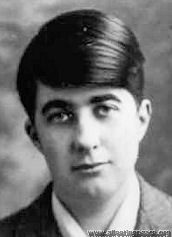 for more on her, see here and here
for more on her, see here and hereGeoffrey finally got his aviator's certificate, No 9,240, on the 21 June 1930, at the Newcastle Aero Club.

"When the Auxiliary Air Force was created, he was very keen to join so he went straight to 608 Squadron at Thornaby Aerodrome."
[No. 608 Squadron was formed at Thornaby-on-Tees, North Yorkshire as No. 608 County of York (North Riding) Squadron, on 17 March 1930.]
Geoffrey then transferred to the Yorkshire Aero Club, at Yeadon:
July 8, 1932
"Six members joined the Yorkshire Aeroplane Club during June, amongst them being Mr. Geoffrey Shaw and Mr. A. C. Thornton. The latter is the designer of the 'Arrow Active', and his latest production, the 'Active II', has been much in evidence, being tested by F/O.H. H. Leech."
[For more on Haliburton Hume ('Julie') Leech,
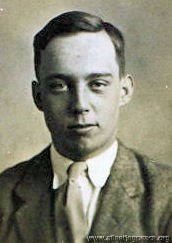 see here ]
see here ]"He bought a small aeroplane for £60, it was absolutely gorgeous... I learned to fly in it too. It had an open cockpit, which is the nicest place to learn to fly. Just 4 cylinders, it was as light as a feather... he always let me fly it. If we got somewhere where we didn’t know he would say to me, wake me up before we land, I think he always thought he should be awake in case I mucked it."
 Avro Avian
Avro AvianThe first aircraft registered to Geoffrey was a 1927-model Avro 594 Avian III, G-EBVA (he is listed as the 6th owner), followed by Avro 616 Avian IVM, G-ABMO, first registered in May 1931 to Francis Montague (although he doesn't look very happy about it):

And then, completely out of the blue in 1934 (he admitted he had never flown further than 'near Paris' before), Geoffrey decided to enter the "World's Greatest Air Race" - the MacRobertson Race from England to Australia.
He bought a brand-new B.A. Eagle I, G-ACVU, in July 1934, and had a special inscription painted on it - "The Spirit of Wm Shaw and Co Ltd, Wellington Cast Steel Foundry, Middlesborough, ENGLAND"
 Geoffrey with the Eagle, via Louise Wilkinson
Geoffrey with the Eagle, via Louise WilkinsonHe was allocated Race No 47. He bought his maps in late August, but wasn't sure they were accurate enough - and, he asked the organising committee, "What height should I fly at?" They replied, "We have no idea - you'll have to ask the people who sold you the aeroplane".
ABC's Guide to the Macrobertson Race described him thus:
"G Shaw, a member of a wealthy Yorkshire family, recently resigned from the Royal Air Force. The fact that he was personal pilot to the late Sir Sefton Brancker, British Controller of Civil Aviation, is an indication of his flying calibre."
[The 'personal pilot to Sefton Brancker' stuff is probably nonsense - Brancker, together with Lord Thomson, the Air Minister, was killed in the disastrous wreck of the R101 airship near Beauvais, France early on 5 October 1930, during its maiden voyage to India. Geoffrey only got his aviator's certificate a few months before that.]
He got as far as Baghdad, though, before retiring with 'gear trouble', so got his £10 entrance fee back.
Geoffrey married Elizabeth in July 1935; here they are with the Eagle during a Hungarian Holiday in August.

He then sold the aeroplane, and it later crashed into the sea off Corsica, on 13 Apr 1936.
Geoffrey continued with 608 Sqn, eventually taking over from Geoffrey Ambler:
The Times Nov 11 1938: "Royal Air Force Squadron Leader G. H. Ambler has relinquished the command of No. 608 (North Riding) (Fighter) Squadron of the Auxiliary Air Force, which he had held since December, 1934. He had served with the squadron since February 1931, a few months after it was established.
His successor is Flight Lieutenant Geoffrey Shaw, who is granted the acting rank of squadron leader from October 30. He has been with the squadron since August, 1930, and has held the rank of flight lieutenant since 1933. No. 608 was originally a bomber squadron, and was converted for fighter duties in January 1937, when it exchanged its Wapiti bombers for Demon fighters."
[For more on the interesting career of Geoffrey Hill Ambler,
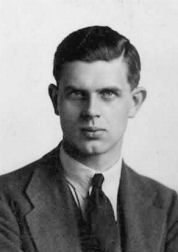 seehere ]
seehere ]Geoffrey bought himself another aeroplane; G-ADVH, a GAL Monospar Jubliee, from Albert Batchelor of Ramsgate. This aeroplane was impressed in March 1940 as X9365, but crashed at Saighton Camp 3 weeks later.
When WWII broke out, Geoffrey continued with 608 Sqn and was promoted to Wing Commander:
"By September 19th 1939, the squadron was available for anti-submarine patrol from 0600 hours to 1600 hours with four Ansons on standby, but the first operational flight of 608 Squadron was not made until the 21st. of September 1939, when an Anson serial number N5207, was flown by Squadron Leader G. Shaw, Flying Officer Woolcock and crewed by L.A.C. Kelly and Corporal Knott, who took off on an anti-submarine patrol in response to a false alarm.
Over Christmas and the New Year of 1940, everyone suffered freezing conditions and constant outbreaks of influenza"
THE KIPPER PATROL
Remembered by some veterans as “the kipper patrol”, their job, as part of Coastal Command, involved protecting shipping convoys, looking for submarines and defending the northern supply routes. Although their role was never seen as glamorous and never received national glory, nonetheless, they played a significant part in the defence of the United Kingdom. This book tells the story of young pilots such as Geoffrey Ambler, Geoffrey Shaw, William Appleby-Brown and Peter Vaux, and airmen such as Albert Guy, Harold Coppick and Syd Buckle, and considers how their lives were dramatically changed with the onset of the Second World War, which saw them cease to be part-timers and become full time members of the Royal Air Force.
http://www.pneumasprings.co.uk/The%20Kipper%20Patrol.htm
He was Mentioned in Despatches in July 1940, and awarded the DFC on 6 March, 1941.
"I still don’t know what he got his DFC for in 1941. He never told me anything about his work."
He continued flying after WWII; here is his post-war aviator's certificate:


Geoffrey died, after a long illness, in 1977 in Malta, aged 75. He is buried there.
"There are no photos of him left as he burnt them all one afternoon after the war ended."
MacRobertson Race in 1934
b. 14 Feb 1895 in Newcastle possibly Donald Mitchell Shields
b Delaware, Ontario

photo: 1916, when a Flight Sub-Lt in the Royal Navy, aged 24
"Mr D Shields"
King's Cup in 1934Miss M Shillington of Woodley owned 1929 DH.60G Gipsy Moth, G-AASG
photo: 1928, aged 28
Mr Thomas William Shipside
a Motor Agent from Nottingham - [actually, the Morris car distibutor for Nottinghamshire and part of Leicestershire] who used his aicraft in his business, and apparently flew all over the country with his wife.
King's Cup in 1931photo: 1932, aged 23
Mr Richard Ormonde Shuttleworth
The wonderful Shuttleworth Collection was set up in his memory by his mother, starting with his cars and aircraft. It has several aeroplanes of the period: see here for details.
Killed in WWII: 2nd August 1940 in a flying accident in a Fairey Battle; buried Old Warden, Beds
King's Cup in 1935Mrs W C Slack owned 1930 Blackburn L.1C Bluebird IV, G-AAOJ.
She may be the wife of William Slack, b 1886.
Eleanor Isabella Slade in 1928
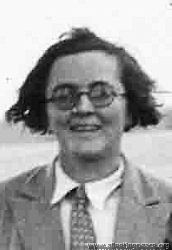
'Susan' Slade
b. 10 January 1904 in Hong Kong
"Efficiently managing the day-to-day business [of the King's Cup] was dynamic little Susan Slade... herself a pilot of considerable ability who has her own Moth".
C G Grey
.jpg)
In Holland, with Lyndsey Everard et al
On one flight with her elder sister Betsy in 1938 over Germany, having missed their destination, they came down at the Berchtesgaden; Herr Hitler was away at the time, but the servants gave them a conducted tour.
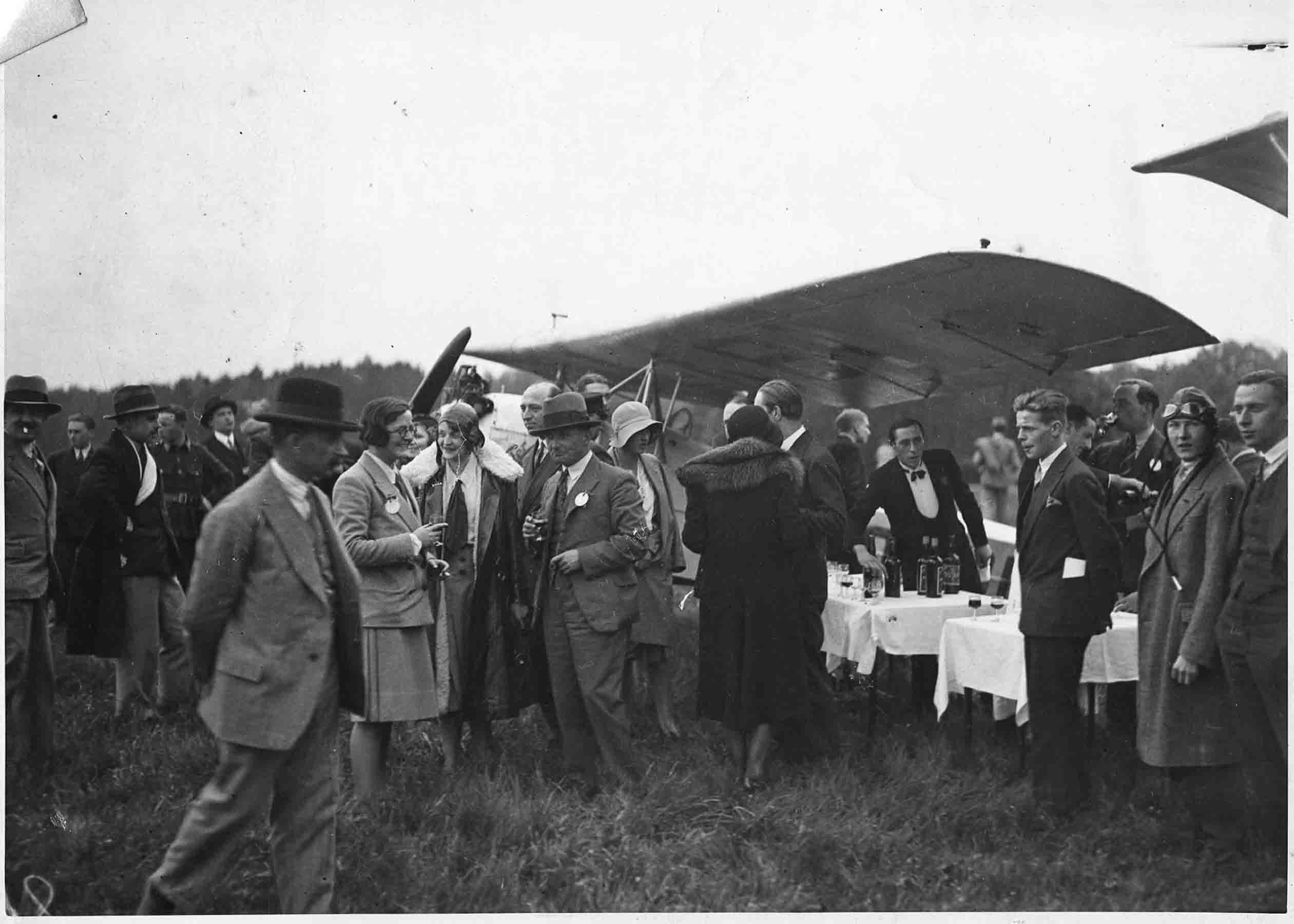
Rallye Aerien, Chateau d'Ardenne 17-19 May 1930 with Adelaide Cleaver
She won the first All-Ladies Race at Sywell, Northants in September 1931 (the Hon. Mrs Victor Bruce was second).
On the 21st May 1940, Susan wrote to Cmdr Gerard d'Erlanger, the head of the ATA, whom she knew quite well from before the war. She said:
"Dear Pops,
I'm writing to ask if you will have any vacancies for ATA girls - I did apply originally but I had to give up the idea as Airwork refused to release me under about three months & I could not even attend the flying test as I couldn't be spared on the day it took place.
The situation is slightly different now. It seems fairly certain that we shall be turned out of Heston at any moment & apart from running the show here the rest of my work should only take about one week per month, which I feel someone else could be found to do. I should have a certain amount of clearing up to do naturally & so, as the date of the evacuation is unknown, I cannot say when I would be free.
I also feel that having spent 11 years in learning something about flying, I would be more useful at the present moment making use of this knowledge. I have already filled in the forms & if you think you could make use of me I could probably come for a test any time.
I shall be very grateful for any advice you can give me."
Susan was, indeed, one of the most experienced women aviators in the country - on her original application form, dated the previous December (1939), she quoted a total of 579 hours (1 of them night-flying) on "DH60, DH80, DH85, Avro Avian, Cadet, Klemm, Bluebird, and Puss Moth, in the British Isles, France, Germany, Italy, Holland, Belgium, Hungary, Poland and Switzerland."
In support of her new application, Airwork's Managing Director M D N Wyatt wrote this, in September 1940:
"Miss E. I. Slade was employed by this Company from February 1929 to June 1940. Her duties entailed the management of the Airport Hotel and Restaurant and she also had considerable responsibilities in connection with the Airport Club. During the time she was employed by Airwork Limited she carried out her duties satisfactorily, and we can confidently recommend her for any position of trust."She eventually signed up on November 1st, and reported for her Flight Test on the 24th, with this outcome:
"Miss Slade is assessed a pilot of average ability. Her chief fault is inaccurate turns; difficulty is also experienced in settling down on a Northerly course."
Not brilliant, then, but at least Mr McMillan then went on to say "It is recommended that her appointment be confirmed".
Susan duly started, and by January 1942 was being recommended for promotion to Flight Captain by Marion Wilberforce (Officer Commanding No 5 Ferry Pool, q.v.): "I have every confidence in recommending First Officer Slade to be considered for promotion on February 15th. She has shown great devotion to duty, accepted responsibility, and taken over command of the Pool when necessary." from 'Brief Glory' - with Capt Graham Head
from 'Brief Glory' - with Capt Graham Head
This despite the first of her little mishaps - on 6 Aug 1941, she made a heavy landing in a Miles Master at Brize Norton, and was deemed to be 'at fault'.
The powers that be more-or-less concurred: 'First Officer Slade works hard, and in the absence of O.C. No 5 FPP (i.e. Marion Wilberforce) in fact takes over Command of the Pool. She is conscientious and hard working [I think you already mentioned that, actually], but hardly to be classed as a full time pilot".
["hardly to be classed as a full time pilot" is rather an odd thing to say, don't you think... what can they possibly mean?]
Her flying instruction report, unfortunately, makes less than inspiring reading; she "had considerable difficulty at first and her progress has been slow throughout. She has a temperamental nature and it was necessary to change her instructor."
I'm inclined to think that this was a clash of personalities between her and the original instructor. I haven't come across anyone else who thought that Susan was 'temperamental'; quite the opposite, in fact - for example, in December 1942, the replacement instructor reports that she is a 'keen pilot with a most likeable personality".
Anyway, the following January (1943), here we go again; she over-corrected landing a Mosquito, and the undercarriage collapsed. Again, she was deemed to be 'at fault'.
People were starting to get the (mixed) message; her confidential report from her Commanding Officer in February 1943 says she "has carried out her duties as Flight Captain in a very satisfactory manner. Her sense of discipline is good, and she is a capable organiser and can always be trusted to do her job efficiently and well. She should make a good Second in Command."
... followed by the usual sting in the tail: "An average pilot".
In March 1944, she was driving back in the dark to her billet after duty, turned a corner and ran into a lorry. She said it wasn't showing any lights (the driver said, oh yes it was) but in any case she hit some scaffolding which was sticking out of the back of the lorry and had some considerable injuries to her head and face, needing dental and other repairs. She was off work for a month, returning to duty on the 13th April.
Three months later, she was dead; on the 13th July, piloting Wellington Z1690, she crashed after take-off at Little Rissington. The aircraft "turned through 50 deg to starboard, lost height, crashed in a field and was totally destroyed."
The Gloucester Echo reported it thus; "DIED IN SWERVE TO AVOID VILLAGE. RISSINGTON INQUEST A 40-years-old woman's dive to death in a service 'plane she was flying over the Cotswolds, and her swerve to avoid crashing on a village, were described at an inquest held at Little Rissington on Thursday.The inquest was on Eleanor Isabella Slade, a single woman, who held the rank of Flight Captain in the Air Transport Auxiliary and the Coroner (Mr. J. D. Lane) recorded a verdict of "Death by Misadventure." Capt John Denys Mead, Air Transport Auxiliary, said that Miss Slade was the daughter of the late Marcus Warre Slade, a barrister, and of Mrs. Slade, of Minerva House Farm, Stanwell Moor, Colnebrook, Bucks. She was detailed on July 13 to take a 'plane to a certain R.A.F. station.
Dr. John Terence Gardiner, serving as a Flying Officer and medical officer at an R.A.F. station, stated that he was informed of a crash and, on arriving on the scene at 6.40 p.m. he found the aircraft on fire. He examined the body of the pilot and in his opinion death was due to multiple injuries and burns. After a number of technical witnesses had been heard, Police Special-Sgt. Sidney Taylor, stationed at Great Rissington, stated that at 6.15 p.m. on July 13 he saw a number of 'planes in flight, one of them flying low and heading for the village. It swerved, and Sgt. Taylor heard it crash about half a mile away in a field known as Whaddon, on Glebe Farm, Great Rissington.
CAUSE UNKNOWN A maintenance engineer was unable to account for the crash.
Recording his verdict of 'Death by Misadventure,' the Coroner expressed sympathy with Miss Slade's mother and her colleagues, and spoke of her courageous act in swerving to avoid what would almost certainly have been a crash on the village, involving perhaps the lives of several people. "
I have found references to this accident claiming that 'elevator trim' was suggested as a cause, but I have found no evidence for this; on the contrary, both the official investigation and the subsequent inquest found 'insufficient cause to account for the accident.' The starboard engine was being examined at one stage, but nothing seems to have come of that.
The wreaths at her funeral were from just about everyone she worked with:
"With love from Peter and Winnie Fair;
With deepest sympathy from Ken Howitt;
With love from Lois Butler;
With deepest sympathy from Engineering and Instruction Officers and Staff, ATA Thame;
With deepest sympathy from Station Officers and Personnel ATA Thame;
C.O. ATA & DWF on behalf of ATA;
Mrs Gerard d'Erlanger;
O.C. and Staff Officers No 5 TFP;
Pilots and Clerical Staff No 5 TFP;
Instructors, Staff and Pupils IFTS, and
O.C. No 12 and Pilots"Brief Glory - The Story of the ATA - says "her death in the air was an irreparable loss to the Thame Ferry Pool and to civil aviation".
All of which goes to show that, even with her perceived limitations as a pilot, Susan Slade was a hard-working and trusted administrator, and an extraordinary, talented and much-loved lady.
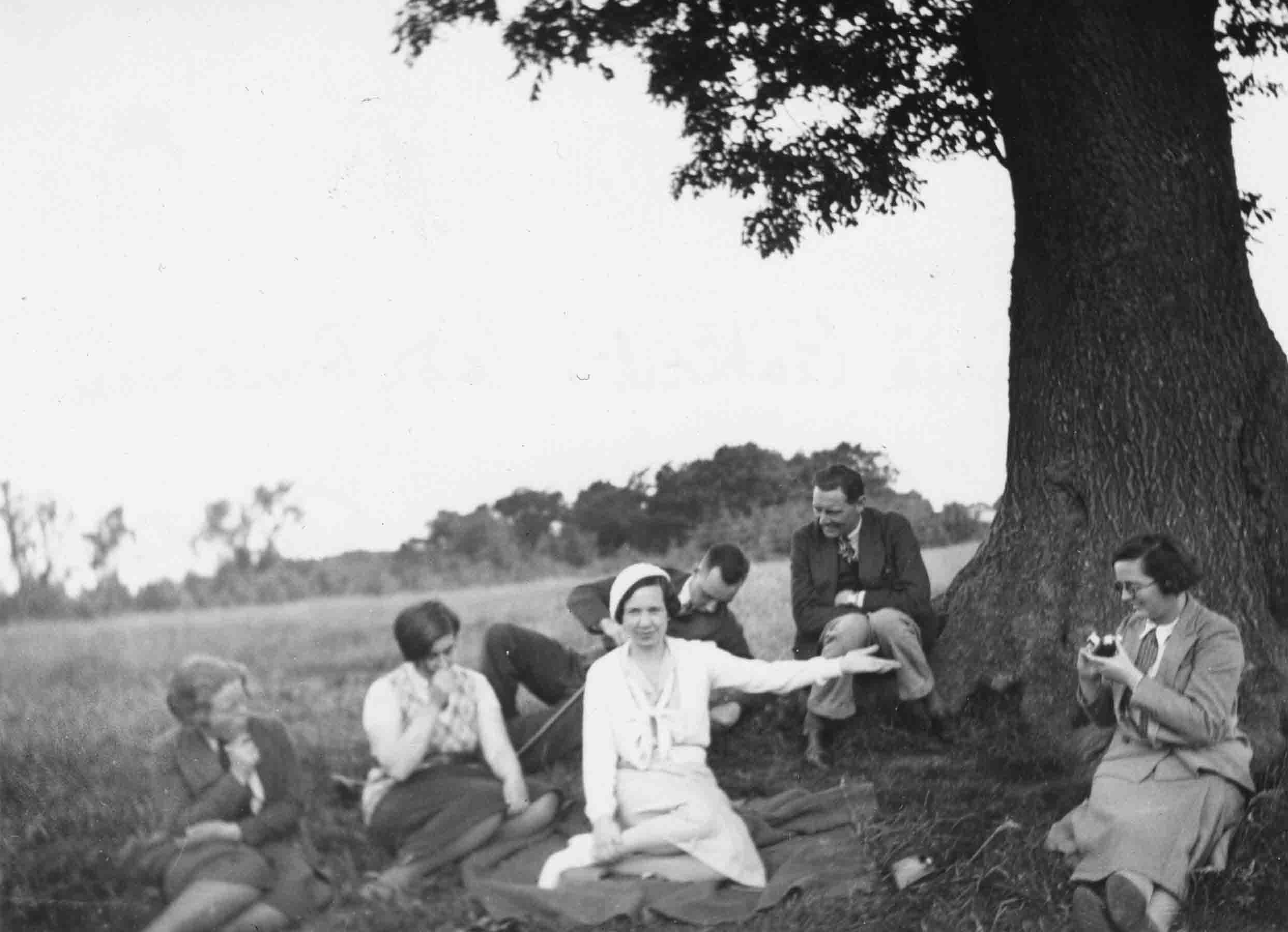
r., with ??, Connie Leathart, Lady Runciman, HH Leech, Flt Lt Clarkson
Susan lived at Mallard's Court, Stokenchurch and is buried in Stokenchurch..
She owned:
a 1927 DH.60X Moth (G-EBSA), then
a 1929 DH.60G Gipsy Moth (G-AAIW), and
a 1931 DH.80A Puss Moth (G-ABLX).
One of the ATA Women
photo: 1916, when a Sub-Lieut in the RNVR
Sqn-Ldr Leonard Horatio Slatter KBE CB DSC DFC
born in Durban, S Africa; in charge of the High Speed Flight in 1927; later Air Marshall Sir Leonard, C-in-C Coastal Command 1945; died 1961
King's Cup in 1930
Photo: 1914, aged 17
Mr Charles Henry Chichester Smith
b. 22 Feb 1897 in Boston, USA
Aerial Derby in 1919

Lt Keith Macpherson Smith

Capt Ross Macpherson Smith
photo: 1928, aged 39
Wing-Cmdr Sydney William Smith
born Burton-on-Trent; later an Air Commodore
King's Cup in 1928photo: 1936, aged 23
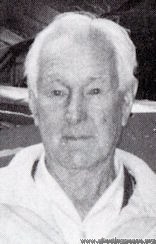
Victor in 2000, aged 86
Victor C Smith
Made several flights through Africa in record-breaking attempts, but his "pluck... exceeded his luck".
For example; in 1932, aged 19, he took off from Cape Town in a DH Moth, to try to break the record to London. He missed breaking the record by a few days, having been delayed by a 'run-in' with some fierce members of the Toureg tribe in the Sahara. He got out a cup of water and a packet of liver salts and drank the foaming liquid; such a man, they thought, must have supernatural powers, so they let him go.
Reaching London eventually, he then swapped the Moth for a Comper Swift and tried to fly back, but suffered engine failure; this time he had to walk 80 km through the Sahara. You'd think that would be it, but no: he found another aeroplane and continued south, only to run out of fuel just short of Cape Town.
In all, he made 21 forced landings during his flying career, all without serious injury. He wrote a book of his experiences, called 'Open Cockpit over Africa'.
In 1936, "Victor Smith was the most enthusiastic person at Portsmouth, and was obviously deeply in love with his Sparrowhawk". Aaaah.
Became a flying instructor after the race, then in WWII flew Beaufighters in Yugoslavia.
Wesley Leland Smith
 b. 9 January 1894
b. 9 January 1894photo: 1916, when a Lieutenant in the 8th South Staffordshire Regiment, aged 21
Flt-Lt Frank Ormond Soden DFC
'Mongoose' Soden; born in Canada, WWI ace (27 victories). later Wing Commander, Station Commander at Biggin Hill in WWII; emigrated to Kenya, died 1961
King's Cup in 1928
Lady (Daisy Finola) Somers
Lady (Daisy Finola) Somers of Eastnor Castle, Ledbury, Herefordshire.
Daisy Finola Meeking as was; b. Dublin, 9 Sep 1896, married Lt-Col Arthur Herbert, 6th Baron Somers in April 1921 (the King and Queen sent a pair of diamond sleeve links, which was nice).
He became Governor of the State of Victoria in 1926 - here they are at the railway station on their way to Melbourne:
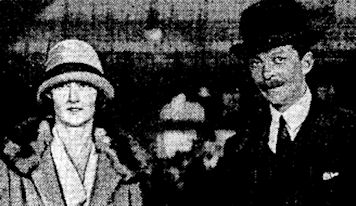
(isn't that the same hat?)
On the journey, however, he slipped on the steamer's deck and had to have an operation for a "misplaced cartilage of the knee". Which sounds v. painful...
They were there on 13 June 1928 when Kingsford-Smith and Ulm arrived in the 'Southern Cross', having crossed the Pacific.
She got her Royal Aero Club Certificate (No 8778) on the 17th July, 1929.
Lord Somers came back to England in May 1929 "to join Lady Somers"; they were up in Scotland for the grouse-shooting in August, so Finola must have been having flying lessons up to then. They then went back to Australia in October; he to sort out a new government, she to do a 4,700 mile flight in her D.H. 60M Moth VH-UND, to Alice Springs and Darwin and then back down the east coast to Melbourne. She flew with a Flt-Lt. F. M. Denny, who was on her husband's staff, "piloting the aircraft herself for several long stages".
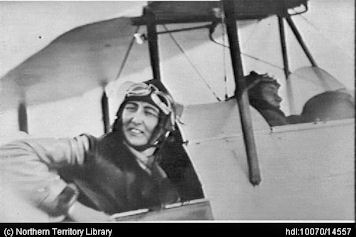
She sold the aeroplane in February 1931.
After a short period as Acting Governor-General of Australia, Lord Somers finished his highly-successful stint as Governor of Victoria in October 1931, and returned to Eastnor. He later became President of the M.C.C, then Chief Scout after the death of Baden-Powell, but died in June 1944 from throat cancer. Sadly for Lady Somers, two-thirds of the money he left was swallowed up by death duties.
She was Chief Commissioner of the Girl Guides until 1949 when she resigned due to ill-health; she was awarded the CBE in 1950. She moved back into Eastnor Castle (actually, into the servants' quarters), lived there "in much reduced circumstances" until 1949, when she moved into the former head gardener’s cottage to make way for her only daughter, Elizabeth, and her son-in-law, Ben Hervey-Bathurst.
She attended Lady Mary Bailey's funeral in 1960, and died 6 Oct 1981 in Hereford, aged 85.
Eastnor Castle survives and is now thriving under the stewardship of her grandsons - one of whom tells me that she took him to see Capt Denny once, "who was retired in Burford."
photo: 1936
Mr Sydney W Sparkes
"Began his aviation career at Hendon before the War [he was an instructor at the Grahame-White School there] and served with the RNAS throughout it. Remained with the RAF 1918-31 and was instructor for the last seven years of his service. Later he flew for various companies"
King's Cup in 1934, 1935, 1936
Capt Francis George Monkhouse Sparks
"'Sparks', (or 'Sparkie'), the chief flying instructor of the London Aero Club from 1925. "One of the best-known flying instructors in England".
In 1927, "The leading spirit in the daily routine of flying is the Chief Instructor, Captain Sparks. He has an incurable and infectious optimism which immediately calms and assures the most diffident of pupils. He is possessed with an almost whirlwind energy, and this, together with his fluent and arresting conversation, makes all who come in contact with him unusually alert and active. It is impossible to have the slightest lack of confidence in him as an instructor or imagine him in any difficulty in the air. He is, perhaps, an unconventional pilot instructor, for so many of them are very taciturn and almost dour, due, no doubt, to the long strain of
instructional flying.He is a pilot of long experience, having been flying since December, 1915, when he joined the RFC. After the war he took up joy-ride flying, and he continued with that to the time he joined the London Club in 1925; flying for the Welsh Aviation Co., the Berkshire Aviation Co and also forming a company himself. He has taken up 57,000 people in his varied career."
His pupils included Lady Bailey, Winifred Spooner, Lady Heath, Dorothy Brewster Fletcher and Sicele O'Brien.
He emigrated to Canada and "held Canadian Commercial Pilot's Certificate #269. He flew for McCall Aero Corp, Calgary AB and London Flying Club, London Ontario.
His fatal accident on 16th March 1934 was as a result of taking-off in Curtiss-Reid Rambler I CF-AUO with the starboard upper wing not locked, it folded after take-off. The Rambler wings could be folded for storage."
Source: Canadian Aviation Historical Society publications THE FIRST 500 CANADIAN CIVIL PILOTS (Molson) and CANADIAN CIVIL AIRCRAFT REGISTER (Ellis).His younger son, Wing Commander Bryan Sparks DSO, was killed in WWII, on August 11 1945.
King's Cup in 1926, 1927
Dorothy Spicer
The 'tall and charming blonde friend' of Pauline Gower.
b. 31 July 1908 in Hadley Wood, Middlesex.
"Miss Spicer, however, holds a very high engineering diploma - the difficult 'B' licence for engines. A man holding this licence would have many excellent jobs at his command, but I doubt very much whether Miss Spicer will find her licence of any practical use."
Amy Mollison, writing in 1934
Amy was being a little too pessimistic; in 1936, Dorothy was appointed Chief Engineer to the 'British Empire Air Displays', which toured the country with 12 light aeroplanes.

She married Richard Courtney Pearse in April 1938 and they had a daughter, Patricia, in November 1939. Served at RAE Farnborough during WWII, eventually being promoted to Wing Commander.
d. 23 December 1946 in the crash of a London-Buenos Aires flight near Rio de Janeiro. Her husband was also killed.
Pauline Gower (only three months before her own death) wrote that "Dorothy is a great loss to civil aviation but even more so to her many friends".
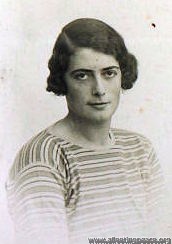
photo: 1927, aged 27
Miss Winifred Evelyn Spooner
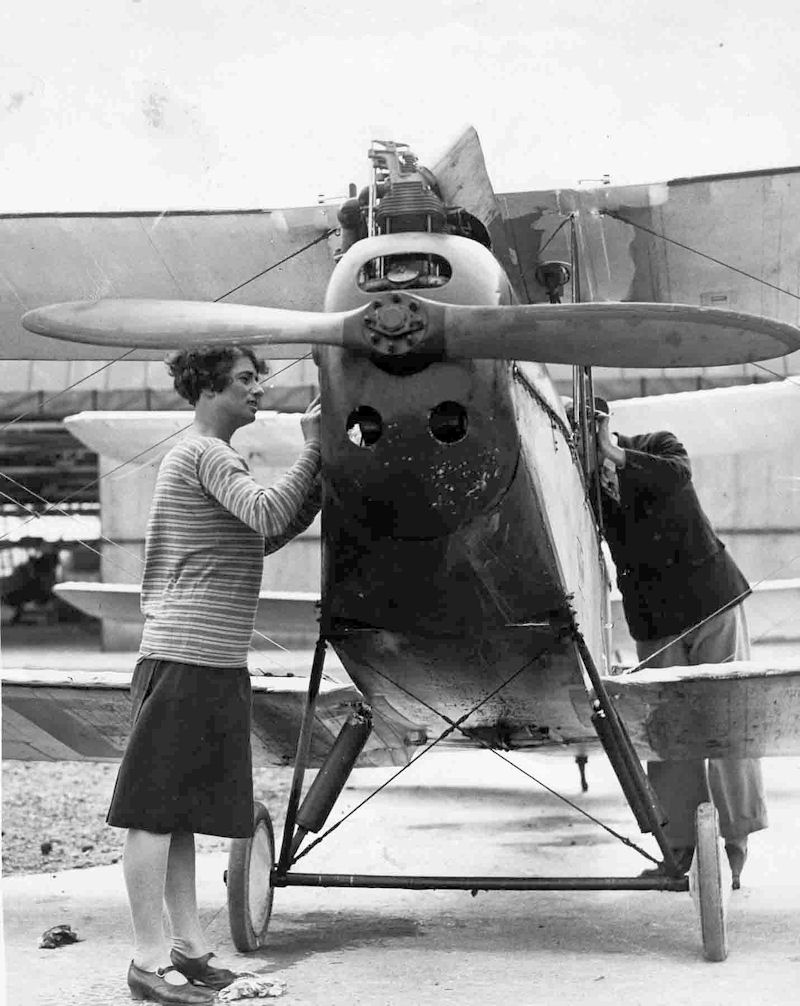
b. 11 September 1900 in Woolwich, Kent; she had 4 older brothers (Cecil Charles, Frank Vivian, Walter Percy, and Hugh, known as 'Tony'). Her father, Major Walter Boulton Spooner (who was a veterinary surgeon), was 47 when she was born and died when she was just over a year old; her mother, Annie, was originally from Belfast.
'Bad luck Wimpey' was one of the best-known women aviators of the time, and the one generally regarded as the best. She was awarded the International League of Aviation's Trophy for women aviators in 1929, and in 1930 Capt C D Barnard described her as 'the finest woman pilot in the world' (He went on to say that Lady Bailey was regarded as the 'second finest airwoman in the world', and we don't know what she thought about that...)
Learnt to fly in 1926 and took it 'more seriously than most' - in her first race in April 1928, she won the Suffolk Handicap (21 miles at 78mph), ahead of Neville Stack and four other male rivals; she won the 'heavy' category in the Round Europe Contest for Touring Aircraft in 1930 - covering 4,700 miles at 102mph, ("a very fine performance indeed", said The Times) and also competed in the Ladies event at Reading (May, 1931) - the other competitors were Amy Johnson, Grace Aitken, Pauline Gower, Dorothy Spicer, Susan Slade, Gabrielle Burr, Christina Young, and Fidelia Crossley - a historic gathering indeed.
Photo here
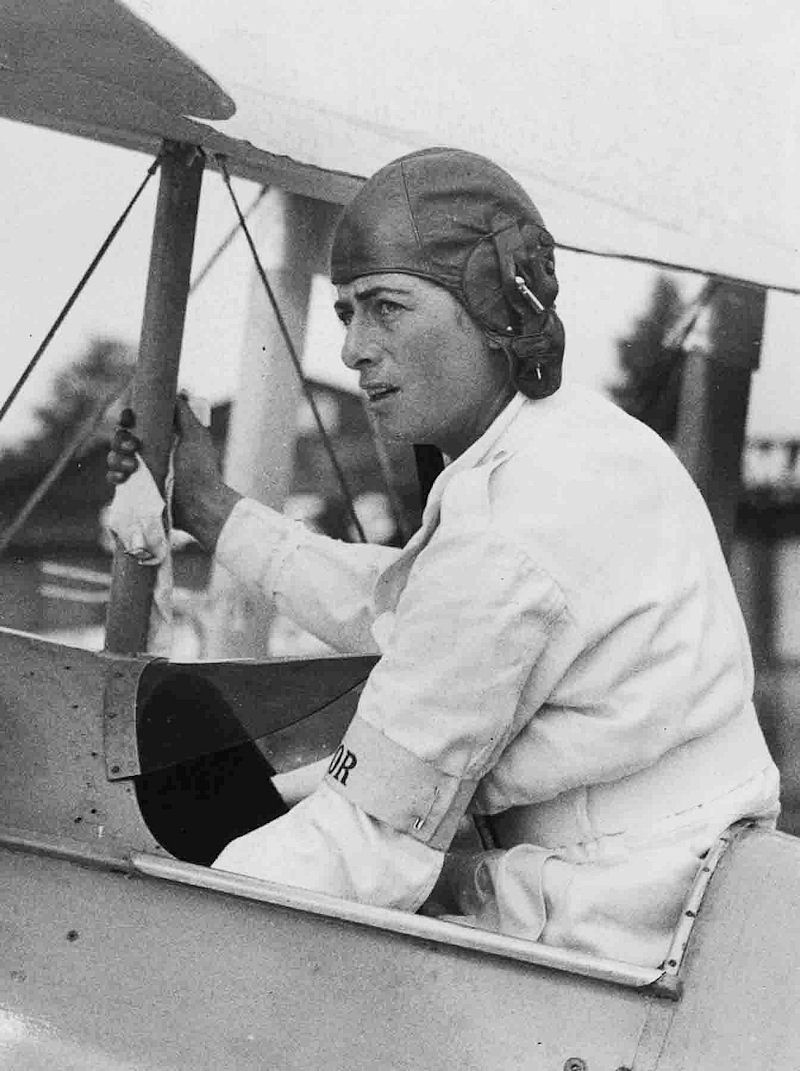
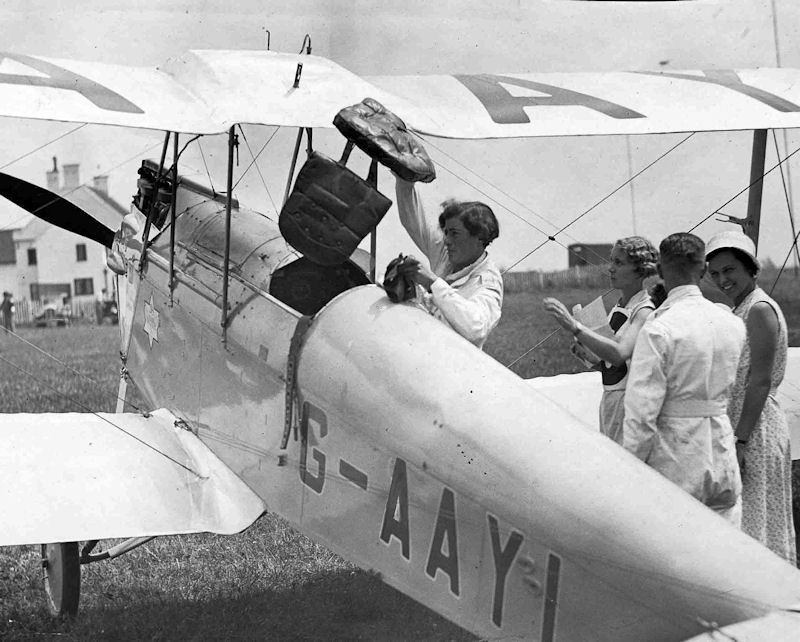
She soon took her 'B' (Commercial) Licence, and at one stage was the only professional woman pilot in the country.
In September 1927 her first flight abroad was to Venice to support the British Team in the Schneider Cup in Venice. Alan Butler (with Peter Hoare as passenger), and Hubert Broad, who took Maia Carberry, also went and, in case you were wondering, "Mrs. Carberry wore a pale blue leather flying helmet to match the colour of her Moth aeroplane."
She soon became regarded as 'one of the few women who matter in the air world'; in March 1928, when King Amanullah of Afghanistan was on a state visit to London, he inspected "the latest types of Imperial Airways passenger machines and a number of small Moth machines in private ownership. He carried on, through an interpreter, an animated conversation with Miss Winifred Brown, of Manchester, and Miss Spooner, of London, both of whom own and fly small two-seater machines."
In the 'Woman's World' section of the Inverness Courier of April 1928, this description of Winifred appeared: "[she] has not flown for very long, for it was only about three years ago that I knew her in Cologne, when she then drove, instead of an aeroplane, a two-seater car, through the crowded streets of Cologne, at a speed which most people would have been terrified to attempt. She was always, however, extremely cool and composed, and though her passengers were sometimes nervous she never seemed so. She was always very sporting, and played an excellent game of tennis. A good-looking, typically English girl, she made many friends among the British army in Cologne when doing voluntary work with the Y.M.C.A. there. [Winifred was with the 'Army of Occupation' in Germany at the time]"
She did have what she later described as her 'greatest air thrill' on Marlborough Common in May 1929; "she had been taking passengers up all day when, after one flight, she said she was not quite satisfied with the controls, and refused to take the next man until she had attended to the aeroplane. After doing so she started the propeller, and as she walked away from it the machine suddenly moved forward. Pluckily, Miss Spooner jumped and caught hold of the wing, her idea being to clamber into the cockpit and stop the engine. The machine quickly gathered speed, and she was dragged 40 or 50 yards [she later reckoned it was about 30 yards], when to the horror of the crowd the plane turned and buried its nose in the ground, hurling Miss Spooner some distance. She was unconscious. Doctors were sent for and she was taken to hospital. 'We thought she must have been killed,' an eye-witness told our representative."
She was taken to Savernake Hospital suffering from a sprained wrist, cuts, and slight concussion.
She does seem to have had quite a few run-ins with the local Constabulary; firstly in January 1929 for failing to keep her Alsatian dog under proper control (it had attacked another dog which "had no chance"), then in August 1929 for failing to produce a car driving licence (she said she had forgotten about it and flew to France the following day); then in 1931, she was fined £35 for leaving her motor car unattended and for failing to have lights on it. When she was told that she would be reported, she said: "I am used to it." A police-superintendent said there were no previous convictions recorded against her, as far as Reading was concerned. The Chairman then asked 'And none in the air? She replied 'There are no policemen in the air. That is why I like it.'"
I'm certainly sorry I missed her talk, given in April 1928 at Harrods in Brompton Road, on "Flying as a New Delight for Womankind". Later, in the early thirties, she wrote for "Good Housekeeping" on, of course, "Flying for Women", alongside such luminaries as John Galsworthy, Kate O'Brien, and Hugh Walpole.
.jpg)
September 1929 saw her accompanying NFS's chairman Freddie Guest (q.v.) to Nairobi, to inaugurate an air taxi service and give flying lessons. They took 3 aeroplanes with them, and flew them back (via South Africa) in February 1930.
She and E C T 'Cecil' Edwards tried to fly a Desoutter to Cape Town and back in December 1930, but this expedition ended up in a forced landing in the sea off southern Italy; Cecil and Winifred had to swim a couple of miles to shore.
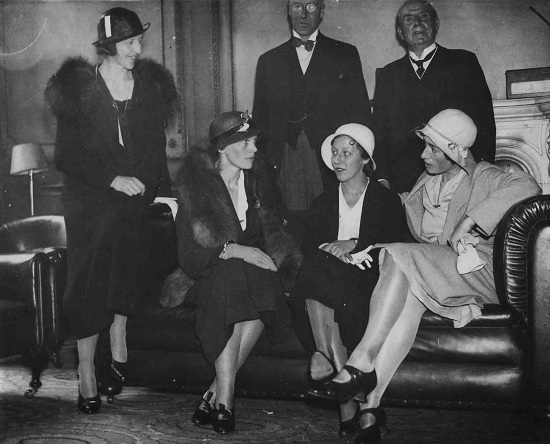
She regularly competed in the King's Cup - coming 3rd in 1928 - and was a guest at Amelia Earhart's reception at the RAeC in May 1932 - more details here.
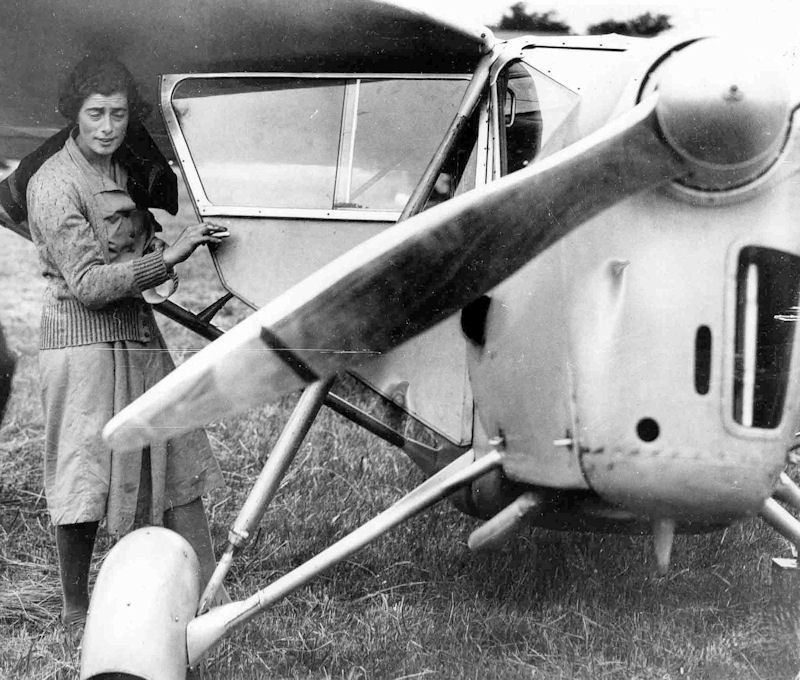
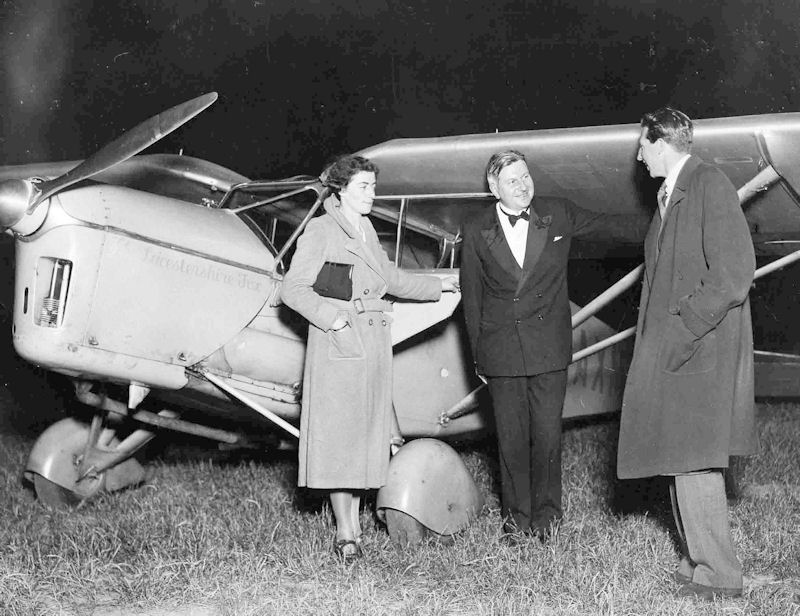
She was personal pilot to Leicestershire M.P. Lyndsey Everard from February 1931 - they are seen here with Nigel Norman.
And then, suddenly, on 13 January 1933, she was dead - not in an air crash, but as a result of a cold which rapidly worsened into pneumonia. Only few days before, in conversation with a friend, she had mentioned that her mother had died from influenza in 1918. "The deaths of both mother and daughter occurred with the same suddenness."
They are buried together in Hinton Parva: see http://www.earlyaviators.com/espoone5.htm
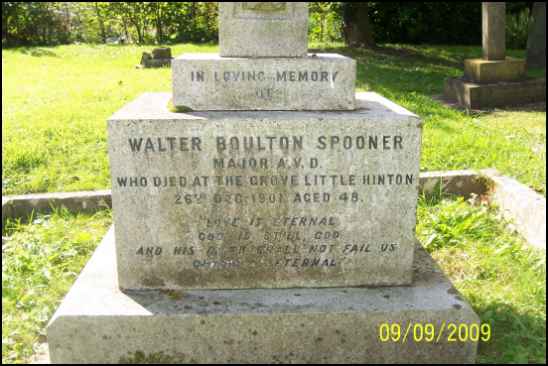
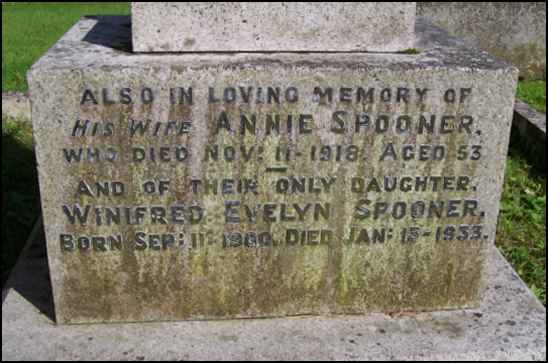
She left £1,357 0s 8d, and her brother, Capt. Frank Vivian Spooner, Indian Army (retd) was appointed administrator. She hadn't got round to writing a will.
There is a scholarship in her memory at Sherborne School for Girls.
"In the passing of Winifred Spooner the world has lost a great woman... she stood out as a woman of indomitable courage".
King's Cup in 1928, 1929, 1930, 1932
Winifred owned:
a 1926 DH.60 Moth (G-EBOT),
a 1928 DH.60G Gipsy Moth (G-AAAL, which she sold to Elise Battye);
a 1930 Desoutter IID (G-ABCU - this is the aeroplane she and E.C.T. Edwards ditched in the sea off Naples in December 1930), and later
a 1932 Breda 33 (G-ABXK), which was sold in Italy just 3 months before her death.
Winifred's brother Tony was chief flying instructor at the Montreal Flying Club in 1931. He was killed in March 1935 in Egypt when piloting a D.H. 84 Dragon, SU-ABI belonging to Misr Airwork, when it was caught up in a sandstorm and both engines failed.

photo: 1934, aged 38

Capt Thomas Neville Stack
b. 1 April 1896; universally known as 'Stacko' RFC in WWI, then became a familiar figure in aviation circles during the 1920s - in 1926 he and Bernard Leete made the first flight from England to India in two DH. Moths, one of several record-breaking flights.
He and J R Chaplin tried to fly to Australia and back in 1931, but had to turn back at Constantinople, Turkey, with carburettor trouble; later in the year the same pair attempted a flight to India and back, but again turned back with mechanical problems.
He was appointed 'Air Superintendent' of Iraq Airwork Ltd in 1933, and flew their first machine (a Spartan Cruiser) there via Cairo in 1933. Shortly afterwards, he flew 2 doctors and a nurse out to India, to perform an urgent operation on a Nepalese princess.
Late 1933 found him testing the Airspeed Courier - which is probably where he met Sydney - and was widely expected to fly it in the Race. A month before the race, he broke (his own) London-Copenhagen record in a Miles Hawk, which is perhaps why he was too busy to inspect the Viceroy properly....
He turned up for the MacRobertson Race looking very tired and drawn - Alan Goodfellow described him as looking 'over-trained, physically', and Neville Shute Norway said he was "an exhausted and a worried man".
Shortly after the race, he was appointed Air Superintendent and Manager of Hillman's Airways; after that became part of British Airways he spent time in Turkey, advising them on civil aviation.
He was killed when run over by a lorry in Karachi, India on 22nd February 1949, aged 52. At first, the Karachi Police said he had committed suicide but, while agreeing that he was 'on the verge of a nervous breakdown', the inquiry decided that the cause of death was actually an aneurism of the aorta, and he would have died anyway.
Neville was "always very good company. He was never happier than when singing a song and strumming on his banjo."
King's Cup in 1928, 1929, 1930, 1933, 1937
MacRobertson Race in 1934
photo: 1929, aged 30
Flt-Lt George Hedley Stainforth DFC
from Worthing, Sussex. A man "so quiet and withdrawn that some thought he was dim". He was certainly a big, humorous man who was "mentally slow to grasp a technical point" but he had immense tenacity and would keep working away at it until he understood it. He was hopeless with money, and relied on his wife to look after it for him.
Schneider Pilot in 1929 and 1931; first man in the world to exceed 400mph, in 1931.
He was a test pilot at Farnborough in 1933, and flew the Airspeed Courier on its first test flights - Airspeed's Neville Shute Norway said that "in the air he was masterly, of course". He certainly gave George the credit for saving the aeroplane on one occasion when the engine cut out.
Killed in WWII: 27th September 1942 when a Wing Commander (pilot), 89 Sqn RAF; buried Ismailia, Egypt
King's Cup in 1933Reading Aero Club Member
King's Cup in 1928photo: 1938
Flt-Lt Christopher Stainbank Staniland
Another Schneider pilot, in 1928. Fairey's chief test pilot from 1936; 'His real love is motor racing' (well, thanks very much). bailed out from the same aircraft twice in one day
Killed in WWII: 26 June 1942 in a Fairey Firefly; buried Keddington, Lincs.
King's Cup in 1929photo: 1915, when a 2nd Lieutenant, RAC, aged 25

photo: September 1937, aged 47
Wing-Cmdr Frederick William Stent
A retired RAF officer'. killed 28 Jun 1938 in the Miles M.11C (G-AEYI) which crashed at Harefield, Berkshire.King's Cup in 1937 photo: 1916, when a 2nd Lieutenant in the RFC, aged 23
Flt-Lt Reginald Herbert Stocken
RAF Serial No 18077. promoted to squadron leader in 1941; later a Wing Commander
King's Cup in 1923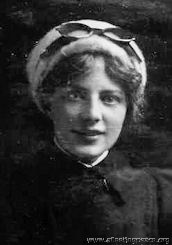
photo: 1911, aged 24

Mrs Cheridah Anne de Beauvoir Stocks
RAeC Certificate No 153 - 7 Nov 1911
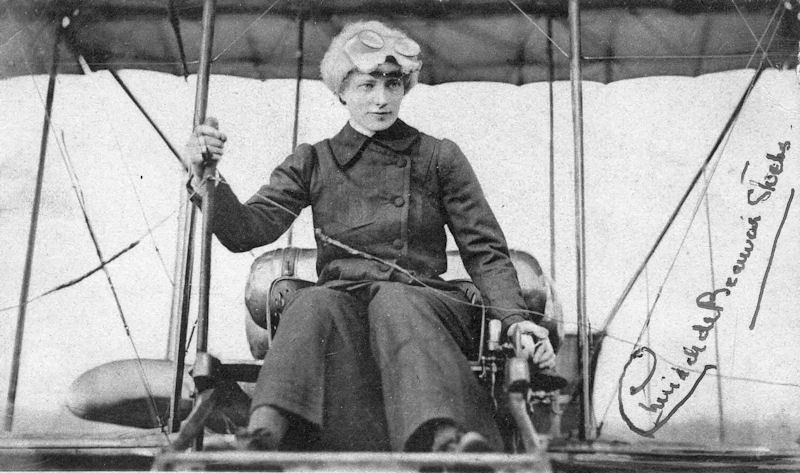
b. Somerset; youngest daughter of Major Ernst, D.L., J.P. of Westombe, Evercreech.
In September 1913, she and Sydney Pickles (
 ) crashed at Hendon; they were both taken from the wreckage unconscious and sent off to the nearby Central London Sick Asylum. Sydney had a crushed foot, fractured thigh and abdominal wounds; Cheridah was in a 'semi-conscious state' for weeks, [I know the feeling], but eventually recovered. Her struggle to recover and walk again was "closely followed by the newspapers".
) crashed at Hendon; they were both taken from the wreckage unconscious and sent off to the nearby Central London Sick Asylum. Sydney had a crushed foot, fractured thigh and abdominal wounds; Cheridah was in a 'semi-conscious state' for weeks, [I know the feeling], but eventually recovered. Her struggle to recover and walk again was "closely followed by the newspapers".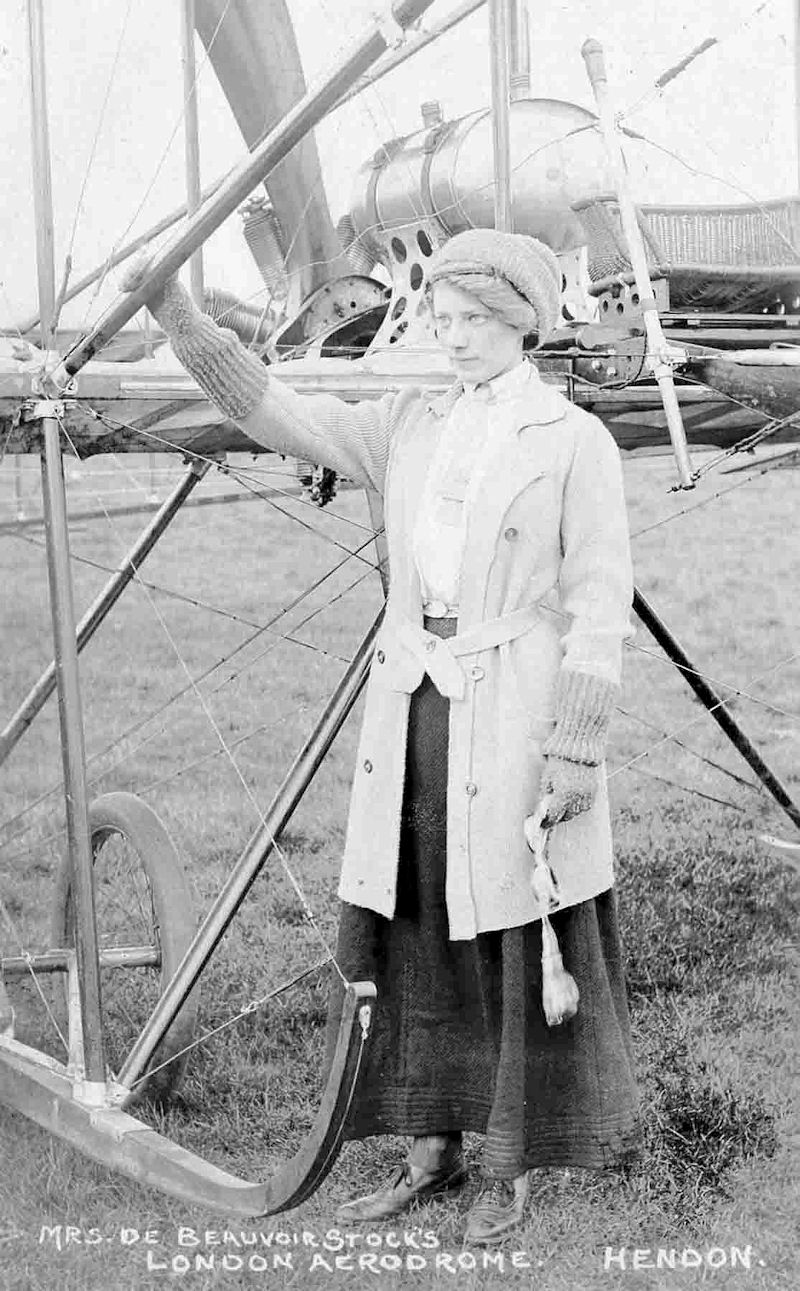
It looks like she was amongst the dozens of women who signed a 'Plea for a Constitutional Decision' in 1917 against immediately giving women the vote - suggesting that a decision should be postponed until after the war. "A considerable number of women do not desire the vote", they reckoned. It might have been another Mrs Stocks, of course...
After WWII, Cheridah studied for a BSc at Oxford and travelled the world.
Her husband, Commander David de Beavoir Stocks D.S.O. Legion of Honour, died 31st January 1918 in a submarine.
d. 1st May 1971 in Northampton aged 84 after a long illness; the Times said that she was "a most beautiful woman and her vivacious character and her exploits won her much popularity".
2nd British woman to get an RAeC Certificate: Read More...
David Edmund Stodart
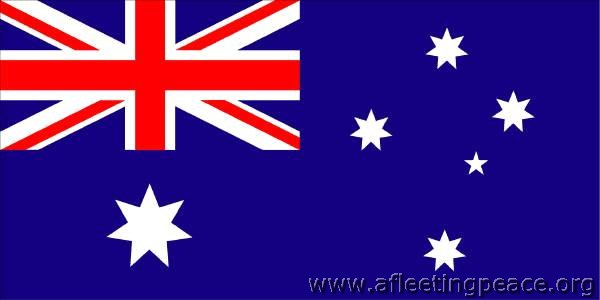 Born 31st July 1882, in Gobur, Victoria, Australia, eldest of seven children.
Born 31st July 1882, in Gobur, Victoria, Australia, eldest of seven children.Went to Edinburgh to study medicine; a very early aviator (RAeC Certificate No 321, in 1912); pre-WWI racer in England as 'Dr Edmund'. Mentioned in dispatches three times during WWI, promoted eventually to Major, he was awarded the DFC and later the DSO.
Post-WWI RAF Squadron Leader in the Middle East, then back to Middlesex Hospital as a physician in the dermatology department.
Oldest and 'most casual' competitor in the Race, but the first Australian to reach Melbourne. He and Kenneth should have won one of the handicap prizes - possibly even the First Prize - but mistakes in the handicapping system robbed them of the glory they deserved, not to mention the cash.
After the Race, he stayed on in Australia for a while, mostly working as a flying instructor, then finally came back to England, where he died 26th February 1938 in Brighton, aged 55.
p.s. the £2,000 for the Handicap Race prize would be worth about £400,000 today...might have been useful, considering that David's estate when he died was £157.
MacRobertson Race in 1934
Kenneth Gerald Stodart
Born in 1910
David said that 'Our grandfathers were first cousins, work it out for yourself, it’s too much for me”.
A Sergeant Pilot in the RAF, later to test-fly the 'Luton Buzzard' light aircraft.
Died 15th September, 1938 in Princess Mary’s Royal Air Force Hospital, Halton, Buckinghamshire, after a flying accident, aged 28
MacRobertson Race in 1934
photo: 1913, when a farmer from Dorset, aged 22

photo: '30, aged 39
Lieut-Col Louis Arbon Strange DSO MC DFC
'Flying Rebel'; WWI pilot and inventor; later Director of Spartan, Simmonds and Whitney Straight companies.
He was "none other than the famed R.F.C. pilot who, fighting a German at 8,000ft over Ypres in 1915, suddenly found his Martinsyde out of control, was flung out of his seat, and spun down 5,000 feet hanging from the Lewis gun mounting. He eventually got the machine under control with his feet."
Bar to his DFC in June 1940, while in the RAF Volunteer Reserve: "P/O. Strange was detailed to proceed from Hendon to Merville to act as ground control officer during the arrival and departure of various aircraft carrying food supplies. He displayed great skill and determination whilst under heavy bombing attacks and machine gun fire at Merville, where he was responsible for the repair and successful despatch of two aircraft to England. In the last, remaining aircraft which was repaired under his supervision, he returned to Hendon in spite of being repeatedly attacked by Messerschmitts until well out to sea. He had no guns in action and had never flown this type of aircraft previously, but his brilliant piloting enabled him to return."
Wing Commander in WWII, awarded OBE and US Bronze Star; returned to farming and died in 1966.
King's Cup in 1930, 1933
known as 'Bill'
b. c1894
2 October 1933: "The recent tragic sequence of British air accidents was continued yesterday by two crashes, costing four lives. The more serious occurred near Hawkhurst, Kent, when disaster overtook a private 'plane returning from the R 101 unveiling ceremony at Allonne. The machine crashed at a terrific speed out of dense mist into a field.
The three occupants, who were killed instantly, were:— CAPTAIN A. J. STYRAN, the pilot; MR lAN C. MACGILCHRIST, of Montpellier Street, W., chairman of the British Air Navigation Co., owners of the 'plane; and MR BERTRAM WILSON, a press photographer, returning with pictures he had taken of the memorial service. Visibility was very poor, and with no eye-witnesses and no survivors, the cause cf the accident remains a mystery. By coincidence, Mr Frank Crouch, stockman, at Old Place Farm, who was the first to reach the wreckage, witnessed the passing over of the ill-fated R 101 when she left for India."
"Capt Styran was the winner of the London-Cardiff Race this year"
"A FINE FLIER. A friend of Captain "Bill" Styran, who was killed in the air crash his way back from Beauvais at the week-end, tells me that "Bill " was the very best type of pilot for civil flying. He never took unnecessary risks and his services were in great demand among business men who wished to make extensive air tours. He had recently returned from such a trip in Russia. " Bill " was tall and well built, though he carried on his face the scars of a previous crash."
King's Cup in 1932, 1933photo: 1930, aged 26
F/O Joseph Summers
'Mutt' Summers, chief test pilot for Vickers and Supermarine. Flew the Spitfire prototype on its first flight.
Called 'Mutt' because he liked to pee on or near his aeroplane before taking off; is that too much detail? Still has the most flying hours of any test pilot in the world. Died in 1954.
King's Cup in 1928, 1929, 1930photo: 1930
Mr W H Sutcliffe
Instructor at Midland Aero Club (as was Tommy Rose), the 'energetic' Mr Sutcliffe
King's Cup in 1930, 1934photo: 1931, aged 22
Mr Samuel Philip Symington
A Works Manager from Market Harborough. Awarded MC in 1945 (Captain in the Leicestershire Regiment)
King's Cup in 1934Mr Francis Stanley Symondson MC
b. 27 Mar 1897 in Sutton, Surrey but living in Fowey, Cornwall; WWI ace (12 victories).
Went to Italy in WWI flying Camels with 66 Sqn, and was shot down once in Belgium and twice in Italy.
Despite being over 40 when WWII broke out, Francis joined the RAF as a Flt-Lt and then in June 1943 joined the Air Transport Auxiliary (ATA).
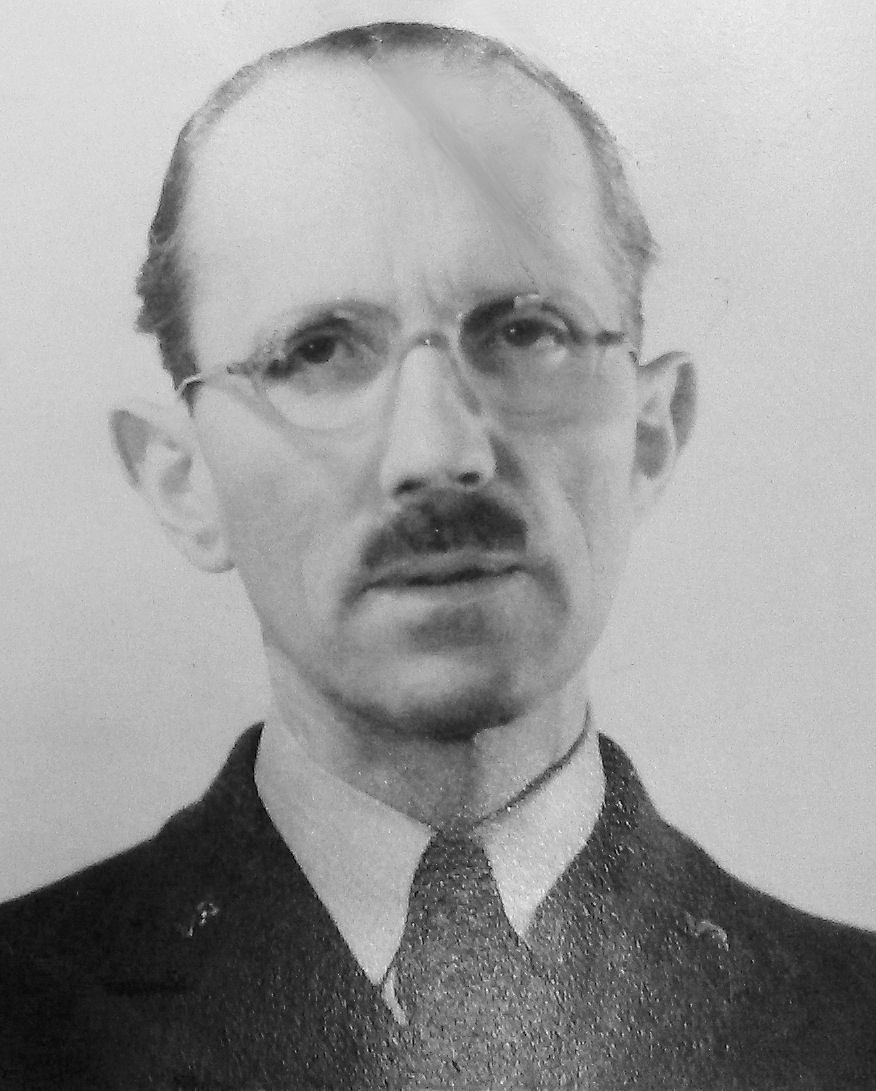 ATA, 1943
ATA, 1943He was certainly experienced (over 1,000 hours, although mostly on light types), and keen - in fact, "his keenness to do a job may lead him to ask for more than he can safely cope with". He went on to complete a very large number of successful aircraft deliveries on 24 different aircraft, mostly Spitfires, in "an eminently satisfactory manner".
Although he did have one senior moment, in January 1944, when he landed a Hurricane with the wheels up. He had "failed to carry out his cockpit drill".
By 1945 though, even the ATA noticed that he was perhaps getting on a bit to be a ferry pilot; "This pilot was very nervous and under-confident at the beginning of the course but eventually settled down and reached an average standard. I would suggest however that owing to his age he has reached the limits of his ability and should not be considered for further progress". He was nevertheless "an extremely enthusiastic and hard working pilot who has been of great value".
d. 1975
King's Cup in 1930, 1931
photo: 1916, aged 19

in 1920
Maj Leslie Robert Tait-Cox
b. 27 April 1897 in London
RFC and RAF in WWI, then an "exceptional" test pilot for Nieuport and General Aircraft Co Ltd, of Cricklewood.
Elected a Member of the RAeC in October 1921; at the time, the firm of 'Tait-Cox and James, Test Pilots' were extremely busy, and "could find work for half-a-dozen pilots", if they could find them.
In fact Leslie, followed by Jimmie, broke the British Speed record in 1921.
Joined Major Jack Savage's 'Sky-writers' in 1922 - as did Mogens L Bramson, Cyril Turner, G A Lingham, G F Bradley, D A Shepperson, C R McMullin, E D C Herne, Sydney St Barbe, Charles Collyer (US), Marttin Rudolph (Germany), and W von Feilitzsch (Germany).
Rejoined the RAF in 1926, and left in Jan 1935.
Joined Plessey after WWII and was still alive in 1953
photo: 1914, when a Lieutenant in the Scots Guards, aged 24
Col John Edward Tennant DSO, MC
From Urquhart, Scotland.
Wrote 'In the clouds above Baghdad' in 1920 (which you can read online).
Killed in WWII: 7th August 1941, when a Group Captain (pilot) RAFVR; buried Innes House, Moray.
King's Cup in 1922photo: 1938, aged c.25
Flt-Lt Hugo Moreton Waddington Thomas-Ferrand
b. c.1913. From Kensington, London.
"a serving RAF Officer with 614 Sqn, stationed at Cardiff. He is an 'A' licence holder and has 1500 hours flying experience. Recreations are squash and golf"
Killed in WWII: 29th March 1945 when a Wing Commander RAF; buried Tenby, Pembrokeshire.
King's Cup in 1938photo: 1930, aged 29

photo: 1947, aged 46
F/O Sidney Albert 'Bill' Thorn
Joined the RAF in 1925 (RAE Farnborough from 1927) after a stint in the Coldstream Guards followed by poultry farming in Surrey, then took over from Neville Stack (him, again) as chief test pilot for the Aircraft Disposals Company. Charter pilot at Brooklands; sometime middleweight and light-heavyweight boxing champion, and a major in the Home Guard. Avro's test pilot from 1934.
Killed in the prototype Avro Tudor, (together with chief designer Roy Chadwick), on 23rd August 1947.
[With thanks to John Falk, who is Roly's (see above) son, and Bill Thorn's grandson]
King's Cup in 1930, 1932King's Cup in 1929 Sqn Ldr B S Thynne
In 1936, CO of 601 (County of London (Fighter)) Squadron, Aux AF, and an old Etonian.
Entered for the Schlesinger Race in 1936
photo: 1935
Flt-Lt F B Tomkins
King's Cup in 1930in June 1920, aged 23
Imelda Mary Agnes Trafford
b. London
killed 25 September 1920; passenger in G-EAPC, a Central Centaur IIA twin-engined plane which crashed at Hayes, Middlesex, killing her, the pilot Mr Castleman, and five others.

Miss Nora Thornton Trevelyan
b. 3 Jun 1902, from Wooler, Northumberland
She owned a 1929 DH.60G Gipsy Moth, G-AAIB, but she crashed it at Renfrew following engine failure on the 15 May 1930; she and her passenger Mr Spencer escaped with minor injuries.
She married William Eric Davies in July 1931.
.jpg)
Frederick Roy Tuckett
b. 10 Apr 1901 in Bushey, Herts. 5ft 11in tall, dark hair, blue eyes.
Flew his Moth solo to Cape Town in 1929-30 and returned in November 1930 on the 'Balmoral Castle' steamship to his home at 1 Hatton Gardens, London.
A year later, flew Miss Cook (a descendant of Charles Darwin) to study gorillas in Africa, and in 1935 flew the route of the 1934 MacRobertson Race to film it from the air.
In 1935, apparently (according to the Hull Daily Mail), "Everybody knows of Mr Roy Tuckett, the aerial film pioneer whose film, London - Melbourne," is attracting such large audiences at cinemas ail over the country, but few know that he was very nearly compelled to give up his career as airman through acute digestive trouble. In his own words: "A year ago I feared I could not carry on, could not eat a meal, could not even drink a cup tea without suffering agony from indigestion. Nothing tried seemed to bring me any relief. I had two X-rays, and my appendix was removed—all to no avail. I was on the point of abandoning my flight over the Australian Air Race Route when, as a last resource, I tried Maclean Brand Stomach Powder. To amazement the first dose brought instant relief, so I continued the treatment, carried the powder on my flight, and am completely cured."
In August 1935 he made a startling offer to Haile Selassie: "CABLE TO EMPEROR South African (sic) Airman Offers His Services Mr. F. Roy Tuckett. the South African airman-kinematographer, who filmed his solo Croydon-Capetown flight in 1929, and the London-Melbourne air race, yesterday cabled the Emperor of Abyssinia as follows:— Offer my services in defence of your country. Seven years' flying experience of light aircraft includes 50,000 miles cross-country flights over desert, or under tropical conditions, mainly in Africa. Would be willing to deliver aircraft to Addis Ababa." Interviewed by a Western Morning News representative, Mr. Tuckett explained the motive actuating his cabled offer. "I want to start a new life" he said."
While he was waiting for a reply, after a while WWII broke out. Roy joined, firstly, the Fleet Air Arm (1939-41) as a Lieutenant then, in September 1941, the Air Transport Auxiliary (ATA). He was Pilot No. 658.
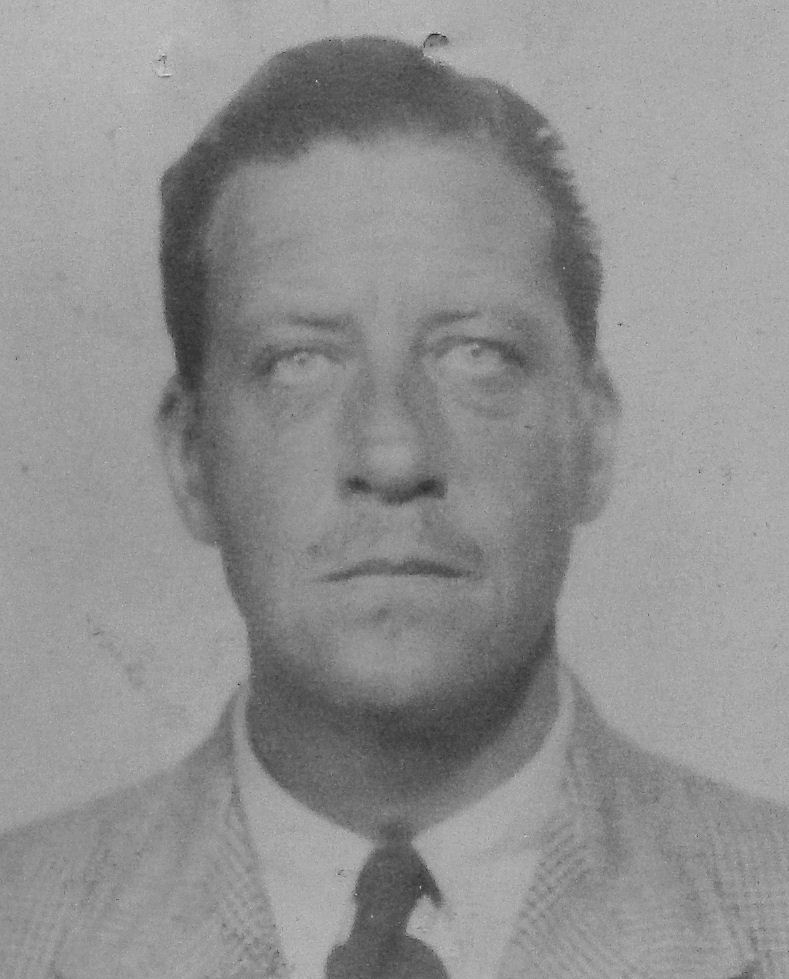
On his application form, his 'Previous Business' was 'Films and Flying', but under 'Orders or Decorations, he mysteriously wrote 'Irish V.C. (Police Decoration).'
He then worked steadily, safely delivering 39 different types of aircraft, until January 1944 when his contract was terminated with 3 months' notice. This appears to be related to his accident in October 1943 when he failed to ballast his D.H. Dominie correctly and the aircraft tipped onto its nose on landing. Up to then, he had been considered a "reliable and steady pilot and a good officer. .. [a] very keen and a willing worker", although in 1943 one instructor considered him to have "a somewhat nervous disposition" and to be "rather slow to adapt to new types".
He later moved to Scotland, and saw something very strange in 1953: "The time was 10.45 a.m., and there was a dead calm... Happening to glance up, I noticed darkish cloud overhead from the base of which issued a long dark streak, which I took to be smoke, pointing down towards the sea at an angle of 45 degrees, and finishing a hundred or so feet above it... As I watched, I noticed it was shortening and being sucked into the cloud at the junction with which it became vapourised and was revolving rapidly. There was considerable turbulence of the cloud base. It continued to be drawn into the cloud until, within a matter of about three minutes, it had disappeared... I have been all over the world as an air pilot and have seen waterspouts and "dust devils" being sucked into the clouds from the desert, but I have never before witnessed a phenomenon quite like this."
He then wrote to the local paper; ". Weather freak Sir, —I was glad to see that other readers had observed similar phenomena in the sky on Monday. I suppose it must be ascribed to some particular weather trend. By the way, I have never been in the army. My flying experience was in my own plane in film work abroad.— Yours, &c., F. Roy Tuckett. West Balkello Cottage, Strathmartine, by Dundee, July 16, 1953."
d. 25 April 1961 in London
Roy owned the 1930 D.H60G Gipsy Moth G-AARW, later re-registered ZS-ABX.
Pioneering flight from England to South Africa 1929-30

one of Canada's rarest air mail stamps - only about 9 are known to exist, and they go for about $35,000 each

Image courtesy images.ourontario.ca.
Capt Terence Bernard Tully AFC (on left)
'Terry', b. 18 Dec 1891 in Carracastle, Mayo, Ireland.
RFC from September 1914, then RAF; served in Egypt, and in the Dardanelles in 1916 (just after the Gallipoli campaign had ended in failure). Air Force Cross in June 1918. He left the RAF in June 1922, joined the Reserve of Air Force Officers as a Flying Officer in April 1923, then became a naturalised Canadian and joined the Ontario Provincial Air Service as a pilot.
d. c.7 September 1927, trying to cross the Atlantic from London, Canada, to London, England.
Carling Breweries of Ontario had offered a $25,000 prize to any Canadian or British subject making the flight; eventually, they also agreed to provide the plane, M-202, a Stinson SM-1 Detroiter monoplane named 'Sir John Carling'. Terry, and his navigator [and fellow Irish-Canadian] Lieutenant James Victor Medcalf, gave up their jobs to make the attempt, and were sworn in as 'official carriers of government mail' by the mayor of (Canada's) London.
Their first flight was made on 29 August, 1927. 10,000 people watched the aircraft take off; it got as far as Kingston, Ontario but had to return to base because of fog. It took off again at 5am on the 1st September, but fog and heavy rain again forced it to land in Caribou, Maine and stay there until 5 September when they flew to Harbour Grace, St. John's Newfoundland.
They set off across the Atlantic at 09:45 on 7 September, and were spotted 30 miles out, flying past Cape St Francis. They were never seen again, however, and an extensive search failed to find any trace. [One bag of air-mail had been left behind, hence there are still a few stamps around].
They had taken out insurance (which paid out $15,000), so that and the $25,000 prize were put in trust for their wives and 3 children.
Aerial Derby in 1921
photo: 1911, according to RAeC, aged 31;

1921, again RAeC; however:

in 1922, if we are to believe 'Flight'
Mr Charles Cyril Turner
RAEC certificate No 70. i.e. very early aviator, and journalist; wrote 'the struggle for the air 1914-18', 'the old flying days' in 1927, and other books; died 1952
King's Cup in 1922John Dennis Turner
b. 1904 in Rochdale, a stockbroker
engaged to Violet Baring
Roscoe Turner

and Gilmore the Lion
 Born 29th September, 1895 in a small farmhouse near Corinth, Mississippi; left school at 16, became a car mechanic, then a 'balloon pilot' in France and Germany during and after WWI.
Born 29th September, 1895 in a small farmhouse near Corinth, Mississippi; left school at 16, became a car mechanic, then a 'balloon pilot' in France and Germany during and after WWI.Always called himself 'Colonel' (although he only reached First Lieutenant in the Army), wore a (self-designed) uniform - cap, sky blue tunic, jodhpurs and boots - and, although he said that he didn't particularly like wearing 'this monkey suit', he reckoned that it 'makes people notice me'.
As, perhaps, did Gilmore the lion cub, who flew with him (to begin with, on his lap) and had his own parachute. (Later known as Gilmore the Lion, and finally...
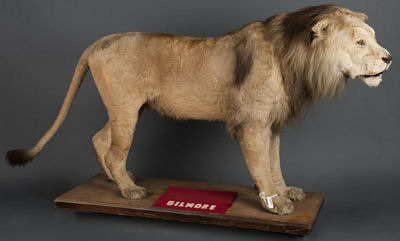
Gilmore the Stuffed Lion).
Dare-devil barnstormer, wing-walker and parachutist through the 20s; permanently penniless, he was sentenced to a year in jail in 1922 when he unknowingly bought a stolen plane (he was later pardoned). Moved to Los Angeles and flew for the movies, including Howard Hughes' 'Hells Angels', but it was from a combination of flying movie stars on charter trips and air racing that he finally made some money.
"There was only about a dozen people in the United States in 1939 who had flown over 300 miles per hour - after 1926, just a handful of us kept speed development going".
A hugely successful air racer - winner of the Bendix Trophy, and the Thompson Trophy 3 times.
Died 23rd June, 1970 in Corinth, Mississippi, aged 74 (Gilmore died in 1952, aged 22).
Roscoe is buried in Crown Hill Cemetery, Indianapolis, Marion County, Indiana.
Gilmore is in the Smithsonian!
MacRobertson Race in 1934

Sydney Lewis Turner
b. 25 May 1912, in Eltham, London
Got his Aviator's Certificate in August 1933 with Surrey Flying Services, then became Director of Aircraft Exchange and Mart (Sales agents for Airspeed) in 1934.
He always wrote in either green or turquoise ink, his spelling was terrible, and he had to remind the organising committee for the Race that the aeroplane had been "entered jointly by Stack and myself", so would be grateful if they would copy him in on any correspondence.
He and Stack teamed up for the Race as "Turner had the money but Stack had the reputation". [Stack admitted that he had been "having a bad time financially"].
After their early withdrawal from the Race, Stack and Turner sued Airspeed. They contended that the aeroplane - the specially-built Airspeed Viceroy - wasn't really ready; it vibrated alarmingly, the brakes locked up, the electrics were positively dangerous, and the fuel consumption was double what they had been promised. Neville Shute Norway of Airspeed described these as 'trivial defects'.
Stack and Turner finally withdrew the accusations and had to hand back the aeroplane - for which they'd paid £2,448 as a first instalment - and another £1,850 cash. The aeroplane stood around for a while then, just as it was being prepared by Max Findlay and Ken Waller to fly in the Schlesinger Race in 1936, representatives of the Spanish Republican Air Force made them an offer they couldn't refuse: Findlay and Waller had to make do with an Envoy. Which crashed, killing Max and the radio operator. see here for more.
In 1935 Sydney entered his Percival Gull for the King's Cup Air Race, but didn't, in the end, take part.
In 1944 he was a test pilot for Rolls Royce in Nottingham.
MacRobertson Race in 1934
photo: 1930, aged 29
Mr Charles Henry Tutt
A Londoner. 'He is in the fish trade'.
King's Cup in 1938photo: 1933, aged 18
Mr Angus Hunter Tweddle
originally from Melbourne, a textile merchant. Married a ballet dancer called Betty Cuff in Melbourne in 1940; died 1975
King's Cup in 19351930
.jpg)
1931
Ethel Doreen Tyzack, from Garthynghared, (yup, 'Garthynghared'), Dolgellau, Wales, b. 16 Sep 1907, owned a 1929 DH.60G Gipsy Moth, G-AAJM. She was prominent in the First All-Ladies Flying Meeting in September 1931, performing an 'acrobatic' display in a Moth: "Seeing that this lady has only done some 50 hours since obtaining her licence, her show was really extraordinarily neat. She first of all did several loops, and then finished with two of the prettiest and most smoothly executed stalled turns that we have seen."
She and her brother Samuel Peregrine 'Perry' Tyzack
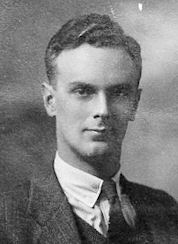 bought an Avro Club Cadet (G-ACHW) in June 1933, but the following month she crashed whilst performing an aerobatic display in D.H. Moth G-AAGS in Barmouth, killing one spectator and injuring another. She suffered head injuries and severe shock. The inquest's verdict was 'accidental death following a judgement of error' on her part.
bought an Avro Club Cadet (G-ACHW) in June 1933, but the following month she crashed whilst performing an aerobatic display in D.H. Moth G-AAGS in Barmouth, killing one spectator and injuring another. She suffered head injuries and severe shock. The inquest's verdict was 'accidental death following a judgement of error' on her part.So, in December, they advertised the Cadet for sale:
"AVRO 'CLUB' CADET. Done just under 16 hours since new. Instruments in both cockpits and Reid & Sigrist Turn Indicator. Special finish. Price £1,150.—Reply to : TYZACK, Plum Park, Towcester, Northants."
Southend-on-Sea Flying Services Ltd bought it...... and she then sold her own Moth the following year.
She married German-born Ronald Erwin Ottmar Velten in 1936 (they were still flying in 1952) and died aged 96 in January 2004 in Bournemouth.
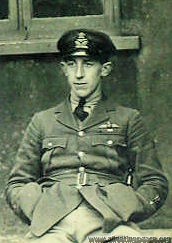
photo: 1916, when a 2nd Lieutenant, London Regiment, aged 20
.jpg)
in 1954, elected vice-President of the Society of British Aircraft Manufacturers
Mr Cyril Frank 'Papa' Uwins OBE
The "rather withdrawn", chief test pilot for Bristol Aircraft, and their Assistant Managing Director after 1947; President of SBAC in 1956; died 1972
was, in fact, "very good at high-flying" and broke the world's height record by climbing to 43,976ft in 1932
King's Cup in 1922, 1928Amazingly, there are two different Alexander George Vlastoes
(now what are the chances of that). Take your pick:
.jpg)
born in Calcutta
photo: 1917, when a 2nd Lieutenant in the RFA, aged 20
- or -

a Merchant from Henley-on-Thames, born in Bombay
photo: 1930, aged 26
Mr George Vlasto
King's Cup in 1930 
photo: 1929, aged 25
Flt-Lt Henry Richard Danvers Waghorn
'Dick', another of the Schneider Cup winning team in 1929, also a member of the GB skiing team in 1930, and a burly rugby-player to boot.
Killed in 1931 after bailing out of a Hawker Horsley from Farnborough and hitting a building.
King's Cup in 1930photo: 1932, aged 23
Mr Robert John Waight
'Bob', joined de Havilland in 1928 and their chief test pilot from 1935; killed flying the TK4 at Hatfield in October 1937 - a few weeks after the race.
Hatfield later turned into an industrial estate (sigh) and Waight Close is named after him.
King's Cup in 1936, 1937photo: 1930, aged 20
Mr Francis Robert Walker
an accountant from Bayswater
King's Cup in 1932, 1933Henry Campbell ‘Johnnie’ Walker
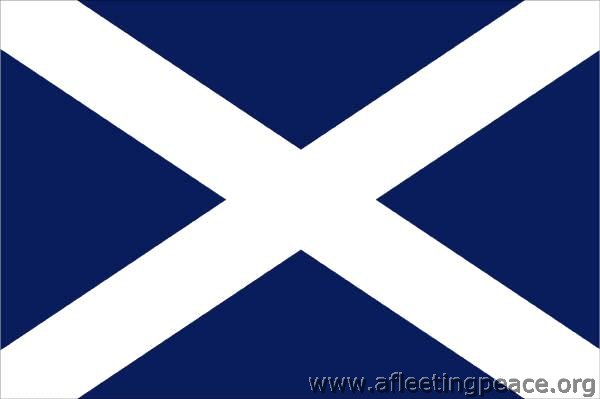 Born 15th March, 1908, in Edinburgh, but moved to New Zealand when 8 years old, so
Born 15th March, 1908, in Edinburgh, but moved to New Zealand when 8 years old, so 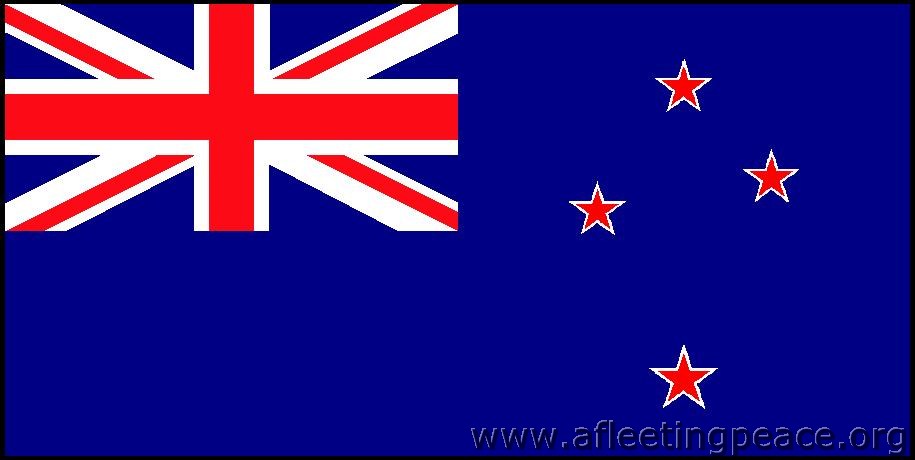 really.
really.Got his aviator's certificate in 1930 but had only flown about 250 hours, none of it outside NZ, at the time of the Race. Joined Union Airways, then Squadron Leader in the RNZAF during WWII; awarded Air Force Cross in January 1943.
Post-war with New Zealand Airways - did the delivery flight of their first Viscount in 1957, and was still around when it was replaced by the Boeing 737.
Died c. 11th Nov 1991, in Wellington, N.Z., aged 83
MacRobertson Race in 1934
photo: 1927, when a medical student, aged 28
Mr Alexander Frew Wallace
born in Kalmalcolm, Scotland
King's Cup in 1929photo: 1930, aged 22
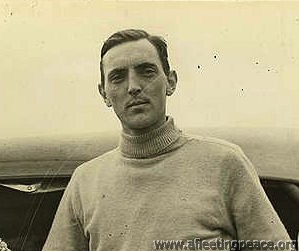
Mr Kenneth Herbert Fraser Waller
'Ken', b. 7 April 1908, in Lambeth, London As you can see, he was over 6ft 4in in height. Despite this, learnt to fly in Kent, got his aviator's certificate in 1930 and then became an instructor at Brooklands in Surrey.
Pilot, with Owen Cathcart Jones, of one of the D.H. Comets for the MacRobertson Race in 1934; given third prize (erroneously, in my view, but it's probably a bit late to say that now).
In 1935, got annoyed with Owen Cathcart Jones for something he said in his book that Ken felt "reflected on his courage and ability as a pilot", and even went to court over it. Owen replied that "that was the last thing he intended, as Mr. Waller and he had been, and still were, very good friends", which seemed to settle the matter.
He and Max Findlay competed in the Schlesinger Race to South Africa in 1936, in an Airspeed Envoy (No 13), but this crashed on take-off in Northern Rhodesia, killing Findlay and the radio operator; Ken was thrown out through a hole in the fuselage and badly hurt.
After WWII, became Miles Aircraft's chief test pilot (he delivered a Hillman Minx car to Orkney in 1948 at a cost of £35, you may remember). Died sometime before February 1986.
Read More...
MacRobertson Race in 1934
King's Cup in 1935, 1937, 1938
Schlesinger Race in 1936
photo: 1933, aged 22
Mr John Anthony Crosby Warren
a Cambridge M.A., "pilot for Parnall and Nash and Thompson; 6 feet 5in tall'. [Or possibly he was "over 6 ft 8in"!]
Killed on 27 April 1944, in an accident when flying a prototype Gloster Meteor.
King's Cup in 1938photo: 1925, aged 27
Mr Guy Nevile Warwick
Oh dear. A barrister from Harpenden, Hertfordshire.
In June 2004, Air Crash Investigation and Archaeology (ACIA) reported that 'the remains of ANEC Missel Thrush, G-EBPI, have been found on Broad Law, near St. Mary's Loch in the Scottish Borders.
The aircraft, a competitor in the King's Cup Air Race, crashed in cloud on 20th July 1928 during the Newcastle to Glasgow leg of the race. The pilot, Mr Guy Neville Warwick, was sadly killed.
ACIA members Jim Corbett, Scott McIntosh and Alan Hudson discovered the fragmented remains after a long search on the southern slopes of the mountain, eventually finding the fragments in a stream below the reported crash location. Reports that the engine remained on the mountain proved unfounded."
King's Cup in 1928 (killed during the race)photo: '26, aged 20
Mr Dudley Alastair Nixon Watt
'Dangerous Dan'; address given as c/o Brooklands Automobile Racing Club, Surrey.
Killed in WWII: 6th October 1940, in a Swordfish from HMS Furious off Clacton; buried there (CWGC 24913106)
King's Cup in 1927Mrs E N (or M) Watt owned
a 1929-registered Avro 504K, G-AAFJ, and then
a 1930 Avro 504K, G-ABBF.
(It's possible this is Elize Watt, first wife of Dudley A N Watt).

Flt-Lt Frank Gerald Craven Weare, M.C. in 1917,
when a 2nd Lieut, The Buffs

Mr John C Webster
"The first overseas entrant for the King's Cup air race—Mr. John C. Webster, of Montreal —wants to take the cup back to Canada and fill it with snow. 'Snow' he said, 'is a good friend of the Canadian flier.'
'I made the longest flight of my life when I made the practice flight over the course for the King's Cup race', he confessed, with a boyish smile, 'though I have been flying for three years. The course is nearly 1,000 miles long, and we don't often fly as much as that in a day—even in Canada. When I start in the race from Heston Air Park on July 25th, I will be starting the hardest day's flying of my life'.
'Britain may not be very big, but viewed from the air there is so darned much of it. Out there, you can fly hundreds of miles without noticing much difference in the landscape, but here everything down below seems to be all of a heap. And that just about describes your weather, too.'
Mr. Webster is a member of the Montreal Flying Club, whose chief instructor is Captain ("Tony") Spooner, brother of Miss Winifred Spooner, the famous woman flier."
"TRAGEDY has overtaken Mr. J. C. Webster, the Canadian pilot who recently took part in the King's Cup air race on a Curtiss-Reid "Rambler." While flying over St. Hubert [Montreal] aerodrome, it is stated, the machine got into a spin and crashed, Mr. Webster sustaining injuries from which he died later in hospital. His death occurred a few hours before an official reception, which was to have been given to celebrate Webster's return from England."
From Shediac, N.B. His father established the Webster Memorial Trophy - the premier Canadian aviation award - in his memory.
King's Cup in 1931photo: copied from http://www.stuartwilliams.net
Flt-Lt Sidney Norman Webster
'Pebbler' Webster, from Walsall. 1927 Schneider Cup winner; later Air Vice Marshall; died 1984
King's Cup in 1928The Hon. Alice Florence Westenra
from Devon but b. Dublin 20 Jan 1895; owned a 1929 DH.60G Gipsy Moth, G-AAJZ.
photo: 1925, aged 32
Hon Richard Westenra
Lady Mary Bailey's brother; skinny-dipper extraordinaire; died in 1944. Lady Mary was at his funeral.
King's Cup in 1932, 1933photo: 1948, aged 46
Mr Allen Henry Wheeler CBE MA
b. 1903. After Eton and Cambridge, RAF Officer (Engineering); at Boscombe Down and Farnborough during WWII; later, aviation consultant (The Blue Max, Magnificent Men in their Flying Machines, etc). Shuttleworth Trustee; died 1984
King's Cup in 1929Dorsetshire Regt. in WWI, a 'gallant officer of fine judgement and power of leadership'. Later Group Captain.
Killed in the crash of Imperial Airways' ''Hannibal', which disappeared on a flight in the Persian Gulf, 1st Mar 1940; commemorated on the Singapore Memorial.
King's Cup in 1930King's Cup in 1928 
Dr. Edward Douglas Whitehead Reid
b. 22 Jun 1883 in Canterbury Kent A GP (as was his father). "He had a fine athletic figure, and was a good all-round athlete".
In WWI he served as surgeon in the Duchess of Westminster Hospital in France, and later in Egypt. Taught to fly by pilot friends, he bought his first plane (G-EAFH, an Avro 504) in 1922, then the same year acquired the first privately-owned SE5a (G-EAZT) before swapping it for another (G-EBCA) which he then raced in the 1923 Aerial Derby. This latter aircraft was somewhat underpowered at the time and apparently could only just reach 65mph. (He finished last, even on handicap).
He bought his first SE5a for £30 from an enterprising mechanic who had been given 5 war-surplus ones to smash, but instead carefully took them apart, piled them up to look "like firewood", bought the lot for a fiver at auction and then carefully re-assembled them.
He housed his aircraft in his own hangar on his own aerodrome, flew to "just about every air meeting of importance", and often took part in races.
He was a friend of the novelist Joseph Conrad, and in 1927 recalled him saying after his first flight that flying was easy "compared to rounding Cape Horn in a sailing vessel in a storm". But then, apparently Conrad said that about everything, except writing a novel.
Later, a Flight Lieutenant with 601 (County of London) Bomber Squadron and President of the Kent Gliding Club.
Killed 20 Oct 1930, aged 47, near Maidstone, Kent after he crashed during an attempted forced landing in his Westland Widgeon II G-EBJT 'Wendy'. He and his passenger, 21-year old Irene Burnside, were returning from a gliding exhibition and had run into bad weather. She was killed outright, he died a day later from his injuries.
Aerial Derby in 1923
Lt David Reginald Williams
Miss Elise Williams, in 1930 from Penton Hall in Staines, b. 28 Jun 1898, owned a 1930 DH.60M Moth, G-AAVU
photo: 1933, when a bank clerk, aged 24
Mr Charles Henry Willis
'Assistant instructor to the Insurance Flying Club'
King's Cup in 1937photo: 1928, aged 21

In 1939, setting the British gliding height record of 14,200ft
Mr Philip Aubrey Wills CBE
b. 1907; he went to Harrow.
a 'warehouseman' from London; pioneering, record-setting and record-breaking glider pilot at Dunstable.
President of the British Gliding Association; Chairman of the Royal Aero Club; Director of Operations in the Air Transport Auxiliary during WWII; later General Manager of BOAC.
d. January 1978 aged 70.
King's Cup in 1930photo: 1915, when a Lieutenant in the 10th Royal Hussars, aged 30

photo: 1930, aged 45
Capt Charles Benjamin Wilson MC
born in Manchester; listed 'racing, travelling and yachting' as his recreations; High Sherriff of Norfolk in 1942; died 1957
King's Cup in 1928, 1930photo: 1930, aged 43
Mr George Noel Wilson
a 'merchant' from London, born in Darlington; died 1957
King's Cup in 1931photo: 1936, aged 28
Mr Hugh Joseph Wilson
"Tough, broken-nosed" Hugh "transferred to the RAF Reserve in 1934 after serving with shore-based boats and float-planes and with the school of Naval Co-operation at Lee-on-the-Solent. Later chief flying instructor to the York County Aviation Club at Sherburn-in-Elmet. Now flying instructor to the Blackburn RAF Civil FTS at Hanworth and demonstrating B.2 Trainer and Cirrus-Minor-in-B.A. Swallow alternately"
King's Cup in 1936, 1938photo: 1936
Flt-Lt J B Wilson
"Gained a certain wisdom when in the RAF by ascending to 20,000 feet daily on meteorological duties, weather or no. Thereafter took Desoutters through anything on taxi and charter work. Chief Instructor at Hanworth until acquired by British Aircraft Manufacturing Co Ltd for test pilotage. One of nature's quietest birdmen."
King's Cup in 1934, 1935, 1936Mary Stewart Dashwood Wilson
b. 28 April 1886, from London.
Got her RAeC certificate in May 1929 aged 43, and bought a 1927 DH.60 Moth, (G-EBRY) which she later sold to the Isle of Wight Flying Club.
1931
Flt-Lt Cyril Beresford Wincott
b. 1896; RNAS in WWI, then went out to East Africa for 3 years to make his fortune growing coffee, but as the fortune did not materialise came back and joined the RAF. Pilot at Martlesham Heath (in 1931 he was Flight Commander, 22 Squadron),
later Air Commodore, Ministry of Aircraft Production during WWII, Officer 'in charge of the West Coast, USA' in 1943 (sounds like a nice job) and Air Attache to Moscow (sounds like a horrid job) after WWII; died 1972
King's Cup in 1931John Henry Wright
 b. 8 November 1894 in Clark Mills, N.Y
b. 8 November 1894 in Clark Mills, N.Yd. 1 May 1979, aged 84
MacRobertson Race in 1934
photo: 1930, aged 42
Sqn-Ldr (later Wing-Cdr) John Whitaker Woodhouse
from Devon; pre-WWI, a well-known car and motor-cycle racer. A member of No. 4 Squadron in WWI, he was the first pilot to land a spy successfully behind the German lines, and was also lost over the North Sea for several hours after having attacked and driven off a Zeppelin.
In 1931, he was in command of No. 207 (Bombing) Squadron at Bircham Newton.
King's Cup in 1930, 1931, 1932, 1934James 'Jimmie' Woods
 b. 13 Nov 1893 in Udny, Aberdeenshire, Scotland
b. 13 Nov 1893 in Udny, Aberdeenshire, Scotland"JIMMIE WOODS is reluctant to talk about himself, and cannot believe that anyone is interested in such personal matters as his age and birthplace. He was born "in Scotland about thirty-nine years ago," served with R.F.C. and R.A.F., and has flown some 11,000 hours."
He spent eleven years a pilot with West Australian Airways, Ltd., flying up and down the 2,035-mile coastal route from Perth to Wyndham, and across the 1,453-mile transcontinental route from Perth to Adelaid; in 1933 he flew a Gipsy Moth from Australia to England.
Woods spent some time at the Lockheed plant in Burbank, flew across America in a Boeing 247, (which he described as "a very clean job"), then flew to England and collected the late Lt.-Com. Glen Kidston's Vega at Hanworth.
Died 9th May, 1979, aged 85
MacRobertson Race in 1934
Mr H M Yeatman
Transferred to the unemployed list: Captain H M Yeatman, 24 Feb 1919. Elected member of RAeC, 1929
King's Cup in 1928Mr Alan Bruce Hamilton Youell
b. 1900. RAeC certificate 4909 (1917). "October 13, 1947 – A helicopter flies in Switzerland for the first time. It is the Bell 47B G-AKCX of the Irvin-Bell Helicopters Sales presented near the Allmend in Zürich-Wollishofen by the British pilot Alan Bruce Hamilton 'Jimmy' Youell." With Imperial Airways pre-war and Railway Air Services post-war.
King's Cup in 1930photo: 1929, aged 38
Mrs Christina Mitchell Young
from Suffolk, but born in Edinburgh.
King's Cup in 1930Frederick Victor Walter Foy
from October 1929
b. Wilburton 10 Jul 1900
based Heliopolis, Egypt
Awarded Master Pilot's Certificate in 1935
Promoted to Senior Master in October 1938

in 1928
John Moore Gittins
from 1929
b. Sutton, Surrey 11 Mar 1906
In 1932, lived at 26 St John's Grove, West Croydon, Surrey

in 1917

in 1927
Capt Walter George Raymond Hinchliffe
One of the original 16 pilots of Imperial Airways in 1924
b. 10, or 11 Jun 1893, or 1894..
'Hinch', the one-eyed pilot who disappeared with Elsie Mackay in 1928 trying to cross the Atlantic from east to west.
WWI fighter pilot (7 victories, the last of which cost him his left eye); he then became a well-known pilot for Daimler Air Express, which formed part of Imperial Airways in April 1924.
On 18 December 1924 he flew G-EBBX, a D.H.34 single-engine airliner, from Croydon to Amsterdam but, after setting off on the return journey, the engine oil pressure started fluctuating alarmingly and he turned back; the engine was overhauled, and he tried again, with the same result. Again, the engine was overhauled and tested thoroughly and they finally got back to Croydon on Christmas Eve, although the engine was still running rather roughly.
The next person to fly the aeroplane was David Stewart; the aeroplane took off from Croydon later the same day and crashed within a few minutes, killing him and his 7 passengers. It was the first fatal crash suffered by Imperial Airways, and it led to the first Public Enquiry into a civil aircraft accident in the UK.
Hinch carried on as one of Imperial Airways' senior pilots; two years later, for example, he flew Geoffrey and Mrs de Havilland, plus another man and four other women, to India, to inaugurate Imperial Airways' Egypt-India Empire service. He came 4th in the King's Cup in July 1927.
 Then in August 1927 he was asked by wealthy American businessman Charles A Levine to try an east-west trans-Atlantic flight in the Bellanca monoplane NX237 'Miss Columbia'.
Then in August 1927 he was asked by wealthy American businessman Charles A Levine to try an east-west trans-Atlantic flight in the Bellanca monoplane NX237 'Miss Columbia'. Clarence Chamberlin had set the world long-distance record flying from New York to (near) Berlin in this aeroplane, with Levine as passenger; indeed, they had missed being the very first 'long' trans-Atlantic flight by only a few days.
Clarence Chamberlin had set the world long-distance record flying from New York to (near) Berlin in this aeroplane, with Levine as passenger; indeed, they had missed being the very first 'long' trans-Atlantic flight by only a few days.However, this idea was abandoned after Leslie Hamilton, Lt-Col Minchin and Princess Lowenstein-Wertheim disappeared in their Fokker FVIIa G-EBTQ when they tried the same thing [q.v.]. Instead, they decided to try to break the long-distance record by flying to India, but only got as far as Vienna when oil pressure fluctuation (again!) and bad weather forced them to land.
There is some footage of the preparations at Cranwell for this flight, (and of the Fokker 'St Raphael' in which Hamilton, Minchin and Princess L-W lost their lives) here.
So (Hinch having already agreed a month's leave from Imperial Airways) they then took a leisurely flight round Italy, including an audience with the Pope on 3 October; the Pope gave Mr Levine the apostolic benediction, "blessing his future enterprises". The next day, however, intending to drop a present for Signor Mussolini's new baby boy, they had to make a forced landing in a vineyard, doing serious damage to the aeroplane but luckily not themselves.
The Bellanca was repaired but later destroyed in a hangar fire; another one, painted to look like it, is now in the Virginia Aviation Museum: see http://www.vam.smv.org/pdfs/VAMHistoricAircraft.pdf
King's Cup in 1927September 1925: "AIR PILOT'S RECORDS. COVERED HALF A MILLION MILES. Two world's records for length of time spent in the air and distance flown were created by Mr W. R. Hinchcliffe, the Imperial Airways pilot, who, when he arrived at the London Air Station, piloting a Napier D.H. express from Amsterdam, on Saturday completed 6000 hours' flying.
Mr Hinchcliffe has been flying continually for more than nine years, and, taking an average speed for the numerous different types of airplanes he has flown, has covered more than half a million miles by air. In flying this distance he has spent the equivalent of 250 entire days, or more than eight months, in the air."
October 1926: "AEROPLANE BLOWN BACKWARDS CAUGHT BY STRONG WIND AND CARRIED FOR MILE. Captain W. G. R Hiinchliffe, the Imperial Airways pilot, had the unique experience of travelling backwards through the air yesterday while testing one of the big Rolls-Royce air liners at Croydon Aerodrome. Ascending to a height of 2000 feet, he encountered a head wind so strong that his machine was blown steadily backwards for a distance of over a mile."
Capt Herbert John 'Horse' Horsey
from 1925
One of the original 16 pilots of Imperial Airways in 1924
b. Cheshunt, Herts 26 Nov 1899
RNAS and RAF in WWI, then joined Supermarine, followed by British Marine Co. as a flying-boat captain on the route from Southampton to Guernsey. When BMC became part of the newly-formed Imperial Airways in 1924, he was one of their founder-pilots.
In December 1926, he reported seeing a 'Mock Sun': "While approaching Ostend at a height of a thousand feet, shortly after 4 p.m. yesterday Captain H. H. Horsey, Imperial Airways pilot, flying a Handley Page Napier air liner from Cologne to London, had the unusual experience seeing two suns in the sky.
The two suns were exact replicas, even to the colouring of the clouds around them. Captain Horsey imagined that was "seeing things," but was reassured when his engineer, who was seated beside him, said that he also could see this phenomenon.
The Air Ministry meteorological expert at Croydon Aerodrome, after receiving a report of the pilot's experience, declared the occurrence to be a very rare phenomenon known to meteorologists as a 'mock sun.'"
(Ahem), apparently this expert was referring to a 'parhelion'; "Parhelia occur when the sun or moon shines through a thin cirrus cloud composed of hexagonal ice crystals... (they) most commonly appear during the winter in the middle latitudes."
Here's what they must have seen:

In June 1927, he created a new record for big passenger aeroplanes, by flying from London to Cologne in one hundred and sixty minutes, at an average speed of 130 miles an hour.
Address in 1932: 138 King's Hall Rd, Beckenham, Kent
A flight commander in the ATA in WWII, but died 6th January 1941 after he hit cables and crashed on 2nd January, 2.5 miles NW of Wroughton ferrying a Curtiss Mohawk.G.P. Olley wrote in his obituary: "An atmosphere of gloom settled over the war-time base of British Overseas Airways Corporation when the tragic news came throught that Captain H. J. Horsey ('Horse' to his friends, and that meant every one) had died suddenly from the injuries he had received in an accident some days before."
Gordon reported that, a few days before, "poor old 'Horse' was concerned that he had broken his clean record - up to then, he had never had a major crash, or harmed a hair of the head of a single passenger."
Herbert is buried in Hatfield Heath, Essex.



1938
Oscar Philip Jones
from 1924
One of the original 16 pilots of Imperial Airways in 1924
b. Beckenham, Kent 15 Oct 1898
RFC in WWI; with Instone Air Line before 1924
January 1935: "AIR LINER PILOT IN MOTOR SMASH. Captain O. P. Jones, the well-known Imperial Airways pilot, was yesterday involved in a motor smash at Coulsdon, Surrey. Ten minutes later he was circling low over the scene of the accident in a Paris-bound liner. It was in Burton Road, Coulsdon, that Captain Jones' car came into collision with another, both vehicles being wrecked. Apart from scratches no one was hurt."
Awarded Master Pilot's Certificate in 1935
17 May 1935: "PILOTS TRAGIC FLIGHT Knowing Widowed Mother Was Dead. With the knowledge that his widowed mother had met with a tragic death, Captain O. P. Jones, a well-known Imperial Airways pilot, had to complete a flight in the course of his duties before he could travel to Hove to identify her body.
His mother, Mrs. Florence Effle Jones (80), had been found dead in the sitting-room of her flat with the gas tap turned full on. The police, who at once telephoned to Imperial Airways, got into touch with Captain Jones, who learned the news just before he had to undertake the flight.
The police are stated to have found a note in which the dead woman said that loneliness and depression had been too much for her. Captain Jones was the first pilot in the world to cover 1,000.000 miles in the air. That means that he has spent about 10,000 hours in the air or more than a year's continuous flying. He has been apilot with imperial Airways for more than 11 years. He has often piloted royal passengers, including the Prince of Wales, and recently the Duke and Duchess of Kent."
May 1935: "FATAL DEPRESSION. MOTHER'S LAST LETTER TO CHILDREN Mrs. Florence Jones (60), mother of Captain O. P. Jones, an Imperial Airways pilot, was found dead in a gas-filled room at her home at Cambridge Road, Hove, yesterday, and at the inquest at Hove to-day a verdict of "Suicide while of Unsound Mind" was recorded.
In a letter to her son and daughter she wrote: "Loneliness and depression and money troubles have become too much for me. Love to all of you." Captain Jones said that his mother had had fits of depression since the death of his father in 1914. She had no need to worry over money, as she had a small income."
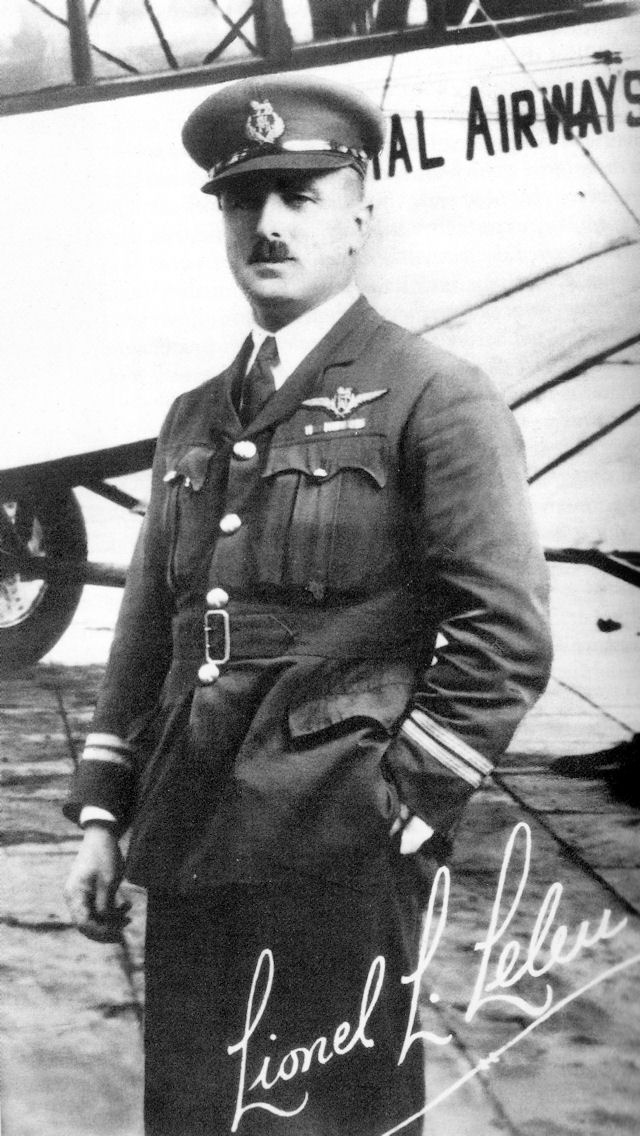
Lionel Louis Leleu
from 1926
b. London 29 Jun 1897
pilot with Berkshire Aviation Tours until 1926
Lived at 67 Wavertree Rd, Streatham Hill, London in 1932
Killed in the crash of the AW Argosy II G-AACI 'City of Liverpool' in Belgium on 28th March 1933.
In April 1933, "Mrs Leleu, widow of Captain Leleu the Imperial Airways pilot, who lost his life in the disaster to the "City of Liverpool" last month, gave birth to a son yesterday at her home at Purley. Both mother and child are doing well."
"The late Capt. Leleu at one time held a commission in the Duke of Cornwall's Light Infantry"
Carlos Gerald Lumsden
from 1931
b. Norwich 16 Dec 1903
based in Kisumu, Kenya

Robert H McIntosh
One of the original 16 pilots of Imperial Airways in 1924
11 September 1926: "AIRMAN'S DASH TO LONDON. JUST IN TIME FOR TRIAL AFTER FORCED LANDING NEAR PYRENEES. Captain R. H. Macintosh, an Imperial Airways pilot, who is flying a D.H. Napier air special in Captain Alfred Lowenstein's private air fleet at Biarritz, had a remarkable series of adventures while making a dash back to London in order to attend the Old Bailey as witness.
Captain Lowenstein asked him to go from Biarritz to Lerida to locate a landing ground there, where the whole air fleet could alight, but he could find nothing suitable and finally running out of petrol, had to alight near Barcelona for further supplies. As the time for his appearance the old Bailey was now getting near, Captain Macintosh decided to fly back to Biarritz in straight line right over the Pyrenees in order to catch a train for London.
Having attained a height of 8,000 feet, and while still climbing to cross the mountains, he was suddenly enveloped in a terrific thunderstorm and was trapped between clouds and mountains. In desperation he climbed to height of 12,000 feet and headed northward through the storm. Once again he ran short of petrol, and risking everything dived down through the clouds, luckily alighting in a small field which suddenly loomed ahead.
He discovered he was at Lartes-de-Riviere about five miles north of the Pyrenees, and, after pegging down his machine and leaving it in charge of his mechanic, rushed to the station to get a train to Touloise to catch the Paris express. At the station a further difficulty arose, they would only accept French money and Captain Macintosh had only English. Going back to small hotel he met there a Mrs Edridge and her two daughters who asked him if they could help him in any way, and who, by a strange coincidence, turned out to be residents in Croydon who had recognised the Imperial Airways pilot's uniform, which is a familiar sight in that town. . .
This meeting smoothed the last of Captain Macintosh's difficulties and travelling night and day he arrived at the Old Bailey in time, after travelling 750 miles by air and nearly 700 by rail and boat in two days without sleep, only to find that his evidence would not be needed."
Feb 1927: "FLOWN 500,000 MILES. Captain Mcintosh's Record. Captain R. H. Mcintosh, the Imperial Airways pilot, on Wednesday completed eight years of continuous flying between London and Paris. He has carried approximately 8,000 passengers between the two cities, and, at 32 years of age, must be one of the most travelled men of his age, for, in addition to flying over half million miles, he also spent four years in the mercantile marine visiting almost every part of the globe.
Captain Mclntosh was one of the youngest recipients of the Royal Humane Society's medal and certificate, which he gained for saving life at sea when he was only 16½ years old."
9 Mar 1927: "NEW AIR RECORD. LONDON TO BERLIN IN 4¾ HOURS. Captain R. H. Mcintosh, an Imperial Airways pilot, on Thursday created a new air record by flying non-stop from London to Berlin in 4¾ hours. The average speed for the 620 miles flight was 130 miles per hour.
Captain Mcintosh is one of the veteran pilots now flying the Handley Page-Napier and Argosy air liners of the Imperial Airways between London and the Continent, and has just completed eight years' continuous flying between London and Paris. He left London at 8.5 a.m. on Thursday on a special flight to Berlin, where he arrived 12.50 p.m."
8 Jul 1927: "ENGLAND—NEW YORK FLIGHT. PILOT'S ARRANGEMENTS MADE. R. H. Macintosh, the Imperial Airways pilot, announced yesterday that he had completed arrangements for an attempt to fly non-stop from England to New York within the next few weeks.
He will fly a Fokker monoplane, driven by a 500 h.p. Bristol Jupiter engine carrying petrol for a non-stop flight of 4400 miles, and will be accompanied by a navigator.
Capt. Macintosh was originally associated with Lieut-Col. F. F. Minchin, another Imperial Airways pilot, who, however has now joined Mr Leslie Hamilton in a projected attempt to fly non-stop to Ottawa, Canada."
November 1927: "NON-STOP TO INDIA. Capt. Mcintosh Out to Beat Record. Capt. R. H. Mcintosh, the Imperial Airways pilot, has completed arrangements to start on an attempt to fly non-stop from England to India early next week on a Fokker-Jupiter monoplane.
If successful he will break the world's non-stop long distance flight record of 3,905 miles set up by Chamberlin and Levine.
Capt. Mcintosh intends to start his flight from Uphaven on Tuesday or Wednesday, when there will be a full moon to assist him. With him will be Mr Herbert Hinkler the test pilot who created a world's long distance record for light 'planes recently by flying non-stop from London to Riga in an Avro-Avian of 30 h.p.
The airmen will follow the route taken by Flight-Lieut. Carr, who, piloting a big Hawker Rolls-Royce bombing 'plane, flew non-stop from England to the Persian Gulf last May."
... "Should they accomplish this, they intend make another non-stop flight from India either to Singapore or the Dutch East Indies, finally reaching Port Darwin, in North Australia, by a third non-stop flight. The total distance is just over 10,000 miles, and should be accomplished in about 110 hours' flying."
April 1928: "NEW AERIAL RECORD. Capt. R. H. Mcintosh created a record yesterday by flying from Berlin to London, a distance of 600 miles, in four and a half hours. The flight was made in a Fokker-Jupiter aeroplane. The machine used was the same in which Captain McIntosh and Mr Bert Hinkler made their unsuccessfull attempt to fly non-stop to India last year."

At the 1948 Gatwick Air Display, in an Airwork Viking [RaeC]

1927

in 1913
Col. Frederick Frank Reilly Minchin
b. Madras, India, 16 Jun 1890; a very early flier (RAeC certificate No 419) in Feb 1913, when his address was given as County Tipperary.
June 1926: "Colonel F. F. Minchin, an Imperial Airways pilot, and Mr Mayer, of the Bristol Aviation Company, will leave Croydon at dawn today in a Bristol Bloodhound aeroplane, fitted with 40 h.p. Jupiter air-cooled engines, upon an attempt to fly from London to Cairo in two days."
August 1926: "EXPRESS AIRMAN. Visits Five Towns in Four Countries in a Day. Lieut. F. F. Minchin, the Imperial Airways pilot, made a remarkable Continental flight yesterday, visiting five cities in four countries.
He left London at 8.30 a.m. on a Napier-Vulcan Air liner, carrying passengers, called Lympne, near Folkestone, at Brussels, to pick up and set down passengers, and arrived at Cologne at 12.15 p.m. Leaving Cologne an hour later, he flew to Amsterdam, and, after calling at Ostend and again at Lympne, arrived back in London at 8.45 p.m."
October 1926: "FLYING CIRCUS. BELGIAN MILLIONAIRE'S AIR FLEET TO VISIT ENGLAND. The whole of the private air fleet owned by Capt. Alfred Lowenstein, the Belgian millionaire financier, will visit Britain for the first time next week.
Capt. Lowenstein is transferring his headquarters from Biarritz to his English estate, near Melton Mowbray, for the hunting season next week. His "Flying Circus," as his private air fleet is known in air circles, now consists of an eight-seater Napier Fokker, a three-engined Fokker, a Martinsyde F4, and a Napier Viking Amphibian flying boat, is bringing his guests to England, and be stationed on his Leicestershire estate for rapid communication with the Continent.
Lieut.-Col. F. F. Minchin, the Imperial Airways Pilot, is in charge of Capt. Lowenstein's air fleet, with Mr Leslie Hamilton, another famous British pilot, his second in command." (c.f. Donald Drew, above)
Fred was killed, with Leslie Hamilton and Princess Anne Lowenstein-Wertheim, when trying to cross the Atlantic from East to West in 1927 . For a video of them and the aeroplane, see the middle bit here.
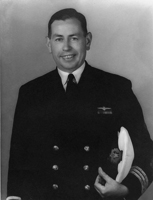
Roger Pierre Mollard
b. St Germain-en-Laye, France, and educated at Worksop College, Nottinghamshire.
RAF from 1921, serving in the UK and India, then joined the European division of Imperial in 1929, based in Heliopolis.
He was the pilot when Shorts S.23 Empire Flying boat G-ADUZ 'Cygnus' crashed and sank on the 5th December 1937, as he was attempting to take-off in rough weather at Brindisi. Two people were killed - one a passenger, the other a member of the crew - and another 11 injured. Apparently, both wings were "torn out of their sockets" by the crash.
To make things even worse, one of the injured was Sir John Salmond, a Director of British Airways... who didn't seem best pleased... Sir John was transferred to the Anglo-American nursing home in Rome; when questioned, he "refused to discuss the incident. He looked pale, his face was bruised, and he had a gash over his right temple."
Eventually, the inquiry established that "the aircraft attempted to take off with the wrong flap settings. This caused the aircraft to start porpoising, leading to loss of control. The 1st Officer (R Mountain, who got the Royal Humane Society Silver Medal and the Stanhope Gold Medal for bravery) saved 3 passengers from the aft cabin which had only about half a metre of air space left."
It seems that the second pilot, on being given the word 'flaps' during the pre-take-off checks, set them in the fully-down instead of the take-off position.
Imperial Airways reviewed their take-off procedures, concluded that they were not to blame, (did anybody suggest saying 'flaps to take-off position', or something?) but, just in case, "sent a reminder to all concerned".
see also http://www.fad.co.za/Resources/aviation/mollard/index.php

Gordon Percy Olley MM
One of the original 16 pilots of Imperial Airways in 1924
b. Harleston, Norfolk 29 Apr 1893
based Croydon
September 1925: "Mr G. P. Olly, another Imperial Airways pilot, has spent 5500 hours in the air, and has flown the English Channel no fewer than 1500 times."
March 1926: "DYING SON'S SOS. FATHER'S FLIGHT PLAN FAILS. Captain G. P. Olley, an Imperial Airways pilot, on arriving at Croydon Aerodrome yesterday from Southampton, related the story of a father's efforts to comply with a wireless broadcast SOS which was relayed across Europe. The SOS was sent out from a French station, asking Mr Mauger to go at once to his son, who was dangerously ill at Marseilles. It was relayed by London, and picked up in Jersey, where friends of Mr. Mauger gave him the news. He at once telephoned Imperial Airways, and hired a fast Napier D.H. express to meet him at Southampton and fly to his son at Marseilles. Rough weather in the Channel delayed his arrival at Southampton until the following evening, when he heard that his son was dead."
March 1927: "Captain J. P. Olley, an Imperial Airways pilot, who began to fly in 1915, has carried his 10,000th passenger."
August 1927: "AIR LINER'S SPEED RECORD Mr. G. P. Olley, an Imperial Airways pilot, arrived at Croydon aerodrome in an 8-seater air liner at 5.39 p.m. yesterday, having flown from Southampton Water in 26 minutes. This is a new record for the 70 miles journey, and average speed of the Vickers-Napier machine was over 161 miles hour. The aeroplane, which is'in regular use on Continental routes, left Hamble at 5.13 p.m."
August 1928: "Captain G P Olley, an Imperial Airways pilot, created a new record by flying non-stop from London to Belfast in 4 and a half hours. His machine had been chartered to take special pistons for a motor-car running in the Tourist Trophy race. He did not leave London until after 5 o'clock, the last part of the flight across the sea, and his landing at Belfast at 9:50, being accomplished in darkness".
Jan 1932: "EARL OF INCHCAPE'S ILLNESS. Son to Make 3000-Mile Air Dash to his Bedside. A 3000-mile air dash from Cairo to the bedside of the Earl of Inchcape, who is seriously ill in London, will be commenced at dawn to-day by Viscount Glenapp the earl's son and heir.
Captain G. P. Olley, the Imperial Airways pilot, has arrived in Cairo with an air liner which had been chartered from Imperial Airways, having flown from London via Italy, Malta, and the north coast of Africa in order to bring Lord Glenapp to London.
Lord Glenapp, who was travelling by P. and O. liner from India, as the result of a wireless message to the liner, was to leave it when it berthed last night at Port Said and proceed by train to Cairo. He hopes arrive in London on Monday evening."
Gordon left Imperial Airways in 1934 and started his own air charter company, called Olley Air Service Ltd.

Capt Lionel Frank Hastings Orr
b. 1910 in Dublin; Short Service Commission then Flt-Lt in the RAF (40 Sqn at Upper Heyford) in 1929-31, transferred to the Reserve List (Class C) in May 1934. He joined Imperial in mid-1935 and "quickly proved himself a civil pilot of just the right calibre."
He was killed, together with Australian Stanley Miles Fergusson, and the two wireless operators, when Vickers Vellox G-ABKY crashed into the back gardens of houses in Hillside Gardens, Wallington, shortly after it had taken off from Croydon Airport on a 'technical' flight at 2 a.m. on August 10, 1936.
His home address was given as Craig-na-Baa, Blackrock, Dublin; he had a wife, Sheelagh, and a daughter Cherry, who "have been living at Worthing."
"Capt Fergusson, who was about 32, had "flown a great deal in America". 'Fergie' had recently gained the First Class Air Navigators Certificate, and was "looking forward to flying on the trans-Atlantic service".
The inquest returned a verdict of accidental death. 'Flight' said "The unhappy accident to Imperial Airways' Velox(sic) has cast a gloom over the airport, for both Orr and Fergusson were universally popular."

in 1915
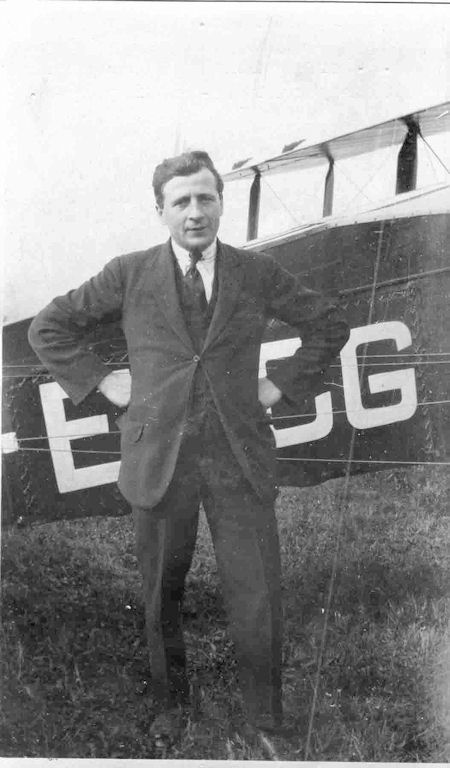
in 1922
Herbert Howard Perry
from 1927
b. Birmingham 3 Jul 1892
RFC in WWI; cross-channel pilot for Handley Page Transport 1920-22; test pilot for ADC Transport 1922-27.
Feb 1928: "A FLYING RECORD. Captain H. Parry, an Imperial Airways pilot, piloted a seven-ton Handley-Page Napier air liner, with a full load of passengers and freight, from London to Brussels on Saturday in 85 minutes flying time, a record for this type of machine."
Address in 1932: 'Sinaia', Cosdach Ave, Wallington, Surrey
Awarded Master Pilot's Certificate in 1935
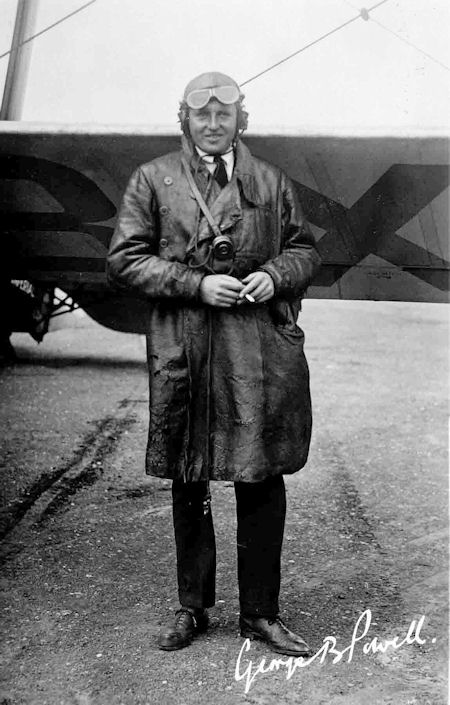

In 1921
George Beacall Powell
One of the original 16 pilots of Imperial Airways in 1924
Dick Terry kindly tells me that George Beacall Powell was one of the original 16 pilots for Imperial Airways, and that he was b. 20th April 1899 in Loppington. Sadly, the rest of his story is quite a short one:
"In July 1916 George Powell was a science undergraduate at Keble College Oxford, but he left the University the following year and on 11June joined the RFC as a Cadet.
On 29 July 1917 he was promoted to 2nd Lt on probation on the General List. In October, after further training he was appointed Flying Officer. In November he attended the Armament Experimental Station Orfordness for bombing & weapons training.
In February 1918 Powell contracted jaundice and it was more than six months before he was allowed to resume flying – but only under close medical supervision. He was eventually declared fit for Home Service flying duties on 15 November 1918.
In January the following year Powell was awarded the Air Force Cross
In February 1919 he was assigned to No 1 Communications Squadron where he remained until September when he was transferred to the unemployed list. He joined Instone Air Line soon after.
In 1923 Powell had to withdraw from the Kings Cup Air Race when his DH 34 could not be spared from its official duties on the London Continental air service.
Powell moved to Imperial Airways when it was formed by the amalgamation of Instone Air Line with three other companies in April 1924.
He died a year later on 19th April in a motoring accident at Mitcham Common. The coroner decided that Powell had been driving negligently and blamed him entirely for the accident – the other driver was cleared of all blame. Shockingly these details were recorded on his death certificate.
His body was taken back to Croydon and then flown, in a D.H. 34, to Shrewsbury Aerodrome. The Times dated 27 April 1925 recorded the event as the first time in the history of aviation that an aeroplane had been used as a hearse. The funeral and interment took place in Stanton, Captain Powell’s home town."
King's Cup in 1923Griffith James Powell
from 1930
b. Cardiff 11 Aug 1907
based Heliopolis, employed on European routes.

Flt Lt Archer Robert Prendergast
from 1931
pilot on North African Division
b. Durban, S Africa 4 Jan 1900
based Khartoum
Mr Thomas John Rees
October 1939: "PILOT'S DIVORCE. WIFE WHO WAS 'IN LOVE WITH ANOTHER MAN' In the Divorce Court to-day Mr. Justice Bucknill granted a decree nisi to Mr. Thomas John Rees, formerly an Imperial Airways pilot and now an officer in the R.A.F., who gave his address as Kelston Lodge, Repton.
Mr. Rees alleged misconduct by his wife, Kathleen Rees, and the suit was undefended.
The marriage took place in 1935 at Devonport. Early in 1938, according to the petitioner's case, Mrs. Rees said that she was love with another man, and they separated. Mr. Rees later found that his wife had stayed with a man at a London Hotel in June, 1938. Costs were given against the co-respondent, Leslie Whittome."
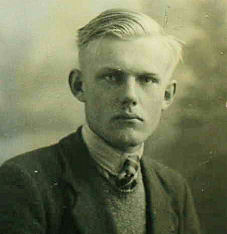
Richard Charles Stuart 'Dick' Reid
Flying-boat captain.
b. April 4, 1912 in Potchefstroom, South Africa.
Reid flew the C-Class flying boats that were introduced in 1936 along a route from Southampton to South Africa, via the Mediterranean, Egypt and East Africa.
During WWII he carried senior officers around the Mediterrranean and Egypt, and in 1943 he was involved in a dramatic rescue of survivors from a torpedoed merchant ship off Mozambique.
He died on December 4, 2006, aged 94

in 1935

(r) with Bill Pegg and DP Davies in 1954. They were test-flying the Bristol Britannia
Athelstan Sigfrid Mellersh Rendall
b. January 3 1914 at Chagford, Devon, and educated at Gresham's School and Leeds University, where he gained a BSc.
He became an assistant ground engineer with the Herts and Essex Aero Club for two years, during which time he gained his pilot's licence. At the time (1935) his address was 'Brooklands Poultry Farm, Broxbourne, Herts', and the following year he joined Imperial Airways as a first officer.
After a period flying the HP 42 Rendall was posted to the de Havilland DH 86 service between Khartoum and West Africa. During this period he was a very junior co-pilot, acting as engineer, radio operator and steward all in one. Despite his multiple responsibilities, he claimed that his only piloting activity was to work the wing flaps with a hand pump, hence his nickname of "Flaps''. He also undertook charter work in West Africa for the Nigerian government.
Rendall was very keen on boating, and for some years he managed a friend's 60-foot motor yacht based in the Mediterranean. He later built and sailed his own boat.
With six children, including two sets of twins, he converted the family car, a pre-war Lea Francis, for holidays.
In 1955 the Guild of Air Pilots and Navigators awarded him a Master Pilot Certificate for "long service and high achievement'', and in 1959 he became a Liveryman of the Guild. He was appointed OBE in 1964.
"Flaps'' Rendall died on July 18 2006.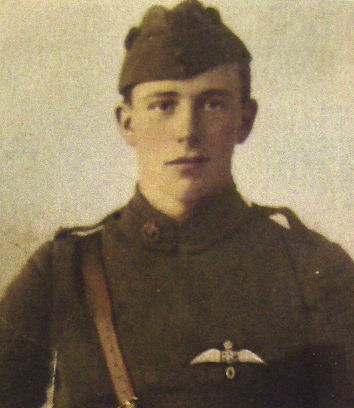
Harry S Robertson
One of the original 16 pilots of Imperial Airways in 1924
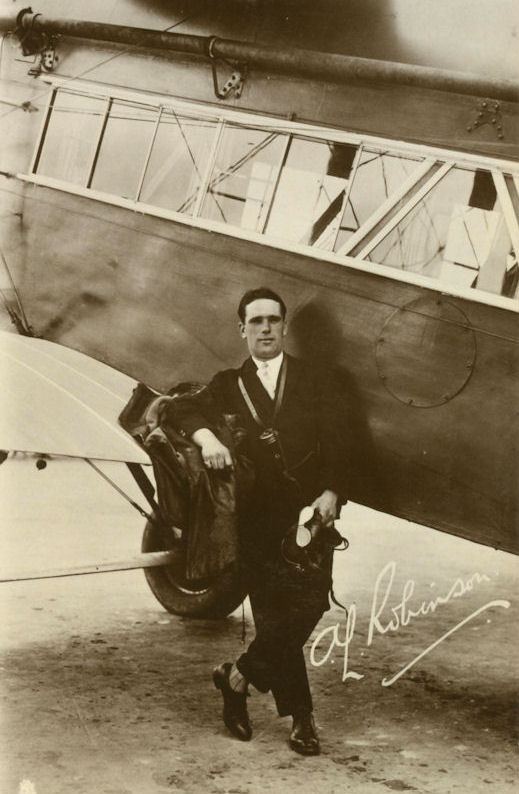
Mr Arthur Leonard Robinson
One of the original 16 pilots of Imperial Airways in 1924
September 1925: "A new air record was created Friday, when Mr. A. L. Robinson, an Imperial Airways pilot, flew a Napier D.H. Express carrying six passengers from Londonto Amsterdam, a distance by air of 275 miles, in 110 minutes. His average speed was 150 miles per hour."
His was a rather chequered career; apparently there was a rumour that he insisted on being paid in cash because the taxman was after him. This is from the Western Daily Press, 2 May 1934:
"Arthur Leonard Robinson (38), a wartime flying officer, stated to have been formerly employed as a pilot by Imperial Airways, was sentenced at London Session, yesterday, to six months' hard labour for obtaining credit by fraud from a London restaurant"During WW2 he flew with the ATA, and later as a test pilot for Rolls Royce at Hucknall.
d. in 1950:
"ROBINSON Arthur Leonard of 21 Marshall-drive Bramcote Nottingham died 30 September 1950 Administration Liverpool 17 November to Irene Mabel Robinson widow. Effects £2,478 5s 8d." (which sounds quite a lot to me; I wonder how he got it?)

in 1917

in 1934
Walter Rogers
from 1924
One of the original 16 pilots of Imperial Airways in 1924
b. London 31 May 1895
with Handley Page Transport Co 1920-24
Feb 1928: "Capt W Rogers, an Imperial Airways pilot, while testing an air liner, saw smoke and flames coming from the roof of a house near Croydon. He kept flying around the building until he had attracted attention to the house."
Lived at 'Le Bourget', Cosdach Avenue, Wallington, Surrey in 1932
F/O Geoffrey Rose b. Bedford 27 Dec 1897
Address in 1932: 1, Apsley Heath, Woburn Sands, Beds

 c. 1938
c. 1938Jack Sydney Sheppard
from 1930
b. Ballybrophy, Ireland 4 Dec 1900
Recruited by Charles Kingsford Smith as a pilot for Australian National Airways 1929-30
November 1935: "'PLANE OVERSHOOTS AERODROME Imperial Airways Pilot Injured. Rangoon, Saturday.
The right wing of an Imperial Airways 'plane was damaged at Rangoon to-day when the machine overshot the aerodrome when landing.
The pilot, Chief Pilot Mr J. S. Sheppard, was slightly injured, but the two passengers are said to be uninjured. The machine was an eastbound one.
It is understood that Captain Sheppard is one of the company's best-known pilots. A native of Ballybrophy, Ireland, he is 35 years of age and served in the R.A.F. from 1918-29. He was a member of the North Russian Relief Expedition in 1919. For a year he was a pilot with Australian National Airways. He is now pilot to the Imperial Airways on their Cairo-Khartoum service and stationed at Heliopolis, Egypt. In October, Captain Sheppard piloted the Imperial Airways liner 'Atlanta' when making a record day's flight of 1777 miles from Dodoma, Tanganyika, to Johannesburg."
Promoted to Senior Master in October 1938
Jack flew the last civilian flight out of Singapore in 1942, piloting an Imperial Airways Short Empire Flying Boat.
based Heliopolis
His son-in-law tells me that "Born in Kildare in 1900, Jack was a real 'rags to riches' story. From a poor Irish farm, he left school at 14 to become an engine mechanic. He joined the RFC as a mechanic and transferred to the RAF in 1918, qualifying as a PFO in time to just miss the end of WW1.
He flew as a Captain with the Expeditionary Force in Russia, rejoined the RAF having gone down a rank to retain a position. He regained his Captain / PFO position and was a pilot of DH3 biplanes out of Netheravon in 1923. He decided to move to civil aviation in 1929 and moved to Australia for 12 months (where he met Kingsford-Smith and others).
He became a Captain in Imperial Airways in 1930. Starting in Croydon, he moved to lead a 'silver age' lifestyle in Egypt in the 1930's, lived at Heliopolis, drove an open MG sports car, and became good friends with other pilots (including Rhinie Caspareuthus).He became Senior Captain within 2 - 3 years, and became well known for airmail (London to Durban) records. He soon had 4 or 5 regular runs.He married a South African lady in 1941 in Durban and planned to leave Imperial Airways in 1945. Jack retired to Ireland in 1945 where he became a farmer and horse owner / trainer. He finally retired to Durban in 1969 and died there in 1982."John Spafford
from 1928
b. Mar 1902
Address in 1932: 'Braeside', The Chase, Stafford Rd, Wallington, Surrey
Awarded Master Pilot's Certificate in 1934

Captain Gordon Store, MVO, OBE
b. Kimberley, South Africa, on January 28, 1906. In 1931 Gordon was co-pilot and navigator on the 19-year-old Peggy Salaman's record-breaking flight to South Africa in a De Havilland Puss Moth. They set off on Oct 30, 1931 from Lympne in Kent and five days, six hours and 40 minutes later they landed at the Cape, knocking more than a day off the record.
Young Gordon was educated at Kimberley Boys High School, at Mill Hill and Imperial College, London. He learned to fly at the De Havilland school and in 1926 was commissioned into the Reserve of Air Force Officers. After his flight with Peggy Salaman in 1931, Store remained in South Africa as a director of Aero Services, operating from a grass airfield at Wynburg.
Three years after setting this record Gordon Store joined Imperial Airways, serving on the airline's African and Empire routes before beginning a long association with the Atlantic in 1939, when he commanded one of the three crews which operated the first regular transatlantic services.After the war Store was recruited by Air Vice-Marshal Don Bennett of "Pathfinder" fame as operations manager of British South American Airways, which merged with BOAC in 1949. Store became a Douglas Stratocruiser captain.
d. October 4, aged 87.
Rex Oliver Oxley Taylor
from 1930
b. London 21 May 1905
intially on cross-channel then Cairo-Khartoum service
based Heliopolis
Flt Lt George Irving Thomson DFC
from 1928
b. Assam, Egypt 25 Oct 1891
lent to New Guinea Goldfields Ltd 1929-30
Address in 1932: 'Beechwood', Hawthorn Rd, Wallington, Surrey
Frederick Dudley Travers DFC Croix de Guerre
from 1926
b. York 15 Feb 1897
pilot on the Cairo-Karachi Air Mail Service 1926-29
Awarded Master Pilot's Certificate in 1934
Flt Lt Patrick Graeme? Tweedie
from 1930
b. Edinburgh 1902
based Cairo


Leslie Allan Walters
from 1924
One of the original 16 pilots of Imperial Airways in 1924
b. London 30 Sep 1898
119, Foxley Lane, Purley in 1932
The first in the UK to be awarded the Master Pilot's Certificate, in 1934.


Capt Warner
2 Jan 1928: "BAGDAD AIR LINER. FORCED LANDING IN DESERT SHORT OF PETROL Capt. Warner, an Imperial Airways pilot, who had been flying all night, at a point 50 miles south of the usual track, found the missing air liner 'City of Teharan' yesterday morning.
The liner was surrounded by Arabs, who were most friendly, offering the air passengers water, and undertaking to do anything else in their power to assist. Four persons were on board, apparently all well. The reason for the forced landing was that the craft ran out petrol. Sufficient was transferred from Capt. Warner's machine to enable the stranded liner reach the Rutba post, while the passengers and mails were conveyed in Capt. Warner's machine to Bagdad, none the worse for their adventure.
The wireless equipment of the stranded liner was working perfectly, but its messages were not picked up due to jamming caused by the multiplicity of messages between Bagdad and other stations on the desert route and the machines engaged in the search."

in 1917
Samuel Joseph Wheeler
from 1927
b. Ascot 27 Mar 1898
flight engineer with Imperial Airways 1924-27, pilot on Cairo-Delhi route 1927-30
Capt Ernest Robert Bristow White
from Flight, August 1941: "Capt. White joined the R.A.F. in 1921 as Boy Mechanic and left the service in December, 1930, with the rank of Sergeant Pilot. He joined Imperial Airways the following year, and in 1933 he was seconded as pilot to the Iraq Petroleum Company, which at that time were laying a 1,200 mile long oil pipe line from Haifa, in Palestine, to Kirkuk, Iraq.
He was transferred to the European Division of Imperial Airways in 1935, and operated the London-Budapest route. It may be remembered that in 1936 Capt. White established a record by flying the 2,970 miles from London to Brindisi, via Marseilles, and back to London in 18 hours.
On the outbreak of the Sino-Japanese war in 1937 he piloted pressmen from Alexandria to Penang, one of the longest charter flights on record. In the same year Capt. White represented Imperial Airways in Berlin at the international conference on ice formation, a subject on which he was an authority.
He was seconded to Atfero in the spring of this year and had flown something like one million miles. On the first Atlantic flight in 1940 he acted as navigator.
He was amongst those killed when Liberator AM261 crashed into Goat Fell mountain on Isle of Arran after take-off from Heathfield Ayr on the 10 Aug 1941 (22 killed - 5 crew and 17 travelling as passengers)
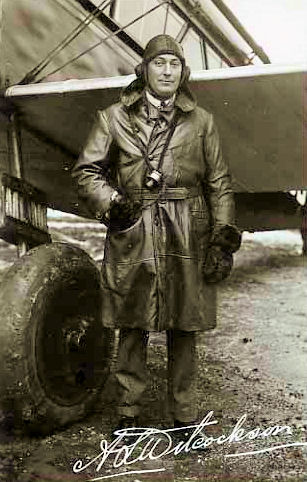
Capt Arthur S Wilcockson
One of the original 16 pilots of Imperial Airways in 1924
RFC in WWI; flew the Folkestone - Cologne Army Mail in 1918-19.
Handley Page Test Pilot 1920-24.
October 1926: "FLYING OVER A STORM Capt A. S. Wilcockson, an Imperial Airways pilot, who flew from London to Amsterdam and back yesterday, reported on landing at Croydon that there is a severe storm all along the coast, and that he had observed several vessels, principally fishing boats, driven ashore on the Belgian and Dutch sands. On his return journey he counted eight vessels in distress on the shore."
Jan 1928: "AIR LINER KILLS TWO ROOKS. BIRDS MISJUDGE DISTANCE. While flying a Handley-Page liner over Kent yesterday Captain A. S. Wilcockson, an Imperial Airways pilot, flew into a flock of rooks and killed two of them. He was at a height of 500 feet, and saw the rooks approaching him at the same level. They came steadily on, and made no attempt to avoid the air liner until within fifty feet. They then divided into two flocks to pass the machine.
One bird in each flock misjudged the distance, and they were caught by the machine and killed. The air liner was undamaged."
Awarded Master Pilot's Certificate in 1935
Feb 1938: "PICK-A-BACK 'PLANE UP FOR TEST Atlantic Pilot Sees How It's Done. The Mayo composite aircraft made a second successful separation test flight at Rochester yesterday. Captain Lankaster Parker, chief test pilot of Short Brothers, who was in the control cabin of the lower component, had as passenger Captain A. S. Wilcockson, Imperial Airways Atlantic pilot."
August 1940: "U.S. Bombers To Fly To Britain. The bombers will take off from Canada, and the flights will be supervised by Capt. A. S. Wilcockson, the famous Imperial Airways pilot, whose services have been lent to the Ministry of Aircraft Production. He arrived in Canada yesterday, along with Capt. D. C. T. Bennett, a veteran Imperial Airways pilot, and Wing Commander Griffith Powell, a former Imperial Airways Transatlantic pilot. Capt. Wilcockson, who served in the Flying Corps during the last war, made a number of survey flights across the Atlantic in 1937. In 1928 he made a record commercial liner flight, from London to Paris in eighty minutes."

Capt Wilson
Jan 1939: "BRITISH 'PLANE AS TARGET Imperial Airways Pilot's Signal. HONG KONG, Tuesday. Imperial Airways machine 'Delia' was fired upon west of Waichow Island, in the Gulf of Tonking, according to a signal picked up here today from Captain Wilson, the 'plane's pilot.
The machine, which was apparently undamaged, later arrived and departed again from Hanoi on schedule. Two British passengers were on board. Their names are given as the Hon. Mark Watson and Mr A. G. Tully. Apparently the 'plane had come from Hong Kong. W
Waichow Island is halfway across the Gulf of Tongking, between the Hainan Peninsula and French Indo-China. It is alleged that the firing was done by Japanese warships anchored near Waichow Island."

C F Wolley Dod
One of the original 16 pilots of Imperial Airways in 1924
Sir Alan Cobham had some harsh words to say, when he sold his well-travelled 'Youth of Britain' aircraft to Imperial Airways; "I arrived at Salisbury [Rhodesia] on January 7 1930, and handed the aircraft over to Wolley Dod. I found him to be an unbelievably tiresome man. He spoke to me as though I were a pupil pilot of no experience at all; he went over the aircraft in detail, and managed to find something wrong with every aspect of it - the fuel system, the propeller, the rigging, the lot. I controlled myself with difficulty. I was fortunate indeed to have escaped being teamed up with such a fuss-pot".
Wolley Dod promptly crashed the aircraft at Broken Hill, much to Sir Alan's fury; "I had carried some 40,000 passengers in this perfectly good aircraft, making perhaps 5,000 landings. Then Big Brother took it over, and had to go and break it straight away."
IMPERIAL AIRWAYS LINER (ACCIDENT).
HC Deb 16 March 1937 vol 321 c1858 1858§ The Under-Secretary of State for Air (Sir Philip Sassoon) I regret to have to inform the House that Imperial Airways liner G-ACVZ, which left Croydon for Cologne at half-past nine last night, failed to arrive, and her wreckage was found later burnt out about 25 miles this side of Cologne. The three occupants of the machine, Captain C. B. Holmes, pilot; Mr. C. E. Langman, wireless operator; and Mr. C. F. Wolley Dod, Imperial Airways European Manager, were dead. No mails were on board. The cause of the accident is not yet determined. As far as we can ascertain there were rain and sleet moving eastward at the time over Belgium, but not general ice conditions, and the pilot was heard at 10.58 p.m. to inform Brussels that he was flying in good visibility.Mr. Perkins
(by Private Notice) asked the Under-Secretary of State for Air whether he can make any statement with regard to the disappearance of the Imperial Airways liner "Jupiter" last night?
Mr Albert E Woodbridge
RFC in WWI - he was responsible for Baron von Richthofen's head wound in 1917.

After WWI he left the RAF, but rejoined and was drafted 'out East'. With Imperial Airways, he spent about six months piloting the cross-Channel service, then transferred to the Cairo- Karachi section.
Lived in Westcliffe-on-Sea
Died September 1929: "Three people were killed and two passengers burned when an Imperial Airways air mail liner crashed in flames while attempting to land last night at Jask Airdrome, in Persia, on the route to India from Croydon.
The dead are Mr. A. E. Woodbridge, the pilot; a passenger, Mr. G. Bell; and a mechanic, Mr. J. Court, says British United Press. The airplane and the mail were destroyed. Two members of the crew of the machine, Mr. H. Bourne, wireless operator, and Mr. H. C. Amor, flight engineer, were burnt, but not seriously, and are progressing favourably.
From reports reaching Karachi it appears that the air liner was making a landing by the light of flares set on the tips of the wings when the disaster occurred. Suddenly the wings were seen to burst into flames, and the flames spread rapidly, rendering the escape of the occupants of the machine impossible. The injured pilot of the air liner was rushed to a house two miles from the airdrome, but he died there soon after arrival.
When the news was received at Karachi, Capt. Attwood, pilot of the air mail liner which leaves there for England to-morrow, set out in his machine with a doctor and nursing orderlies to bring the injured pilot to Karachi, but returned when wireless news received reporting the death of the pilot of the burned air liner.
FAMOUS PILOT. Mr. A. E. Woodbridge was a very distinguished air-fighter during the war. He brought down the famous German, Baron Richthofen, in June, 1917."
Actually, 2nd Lt Woodbridge had managed to wound von Richthofen in the head. When the Red Baron returned to duty, he was still unfit to fly - his head wound had not healed - and this is thought to have been a contributory factor when he was shot down nine months later by an Australian gunner.


Alan Bruce Hamilton Youell
One of the original 16 pilots of Imperial Airways in 1924
b. 10 Feb 1900 in Portsea Island, Hants.
RAeC certificate 4909 (1917).
Awarded Master Pilot's Certificate
March 1926: "Like the Swallow.—Captain B. Yulle, the Imperial Airways pilot, set a record on Thursday when he flew from London to Amsterdam, a distance of 267 miles, in 100 minutes.
"October 13, 1947 – A helicopter flies in Switzerland for the first time. It is the Bell 47B G-AKCX of the Irvin-Bell Helicopters Sales presented near the Allmend in Zürich-Wollishofen by the British pilot Alan Bruce Hamilton 'Jimmy' Youell." With Imperial Airways pre-war and Railway Air Services post-war.
d. 19 April 1961 'in or near Addis Ababa, Ethiopia'
King's Cup in 1930 -
N to Z Pilots
Mr A LT Naish
Director of Aircraft Exchange and Mart Ltd, Airspeed's sales agents.. Formerly a Flying Officer in the RAF; spent 3 years in the Middle East.
King's Cup in 1934photo: 1937, aged c.30
Mr Carill Stanley Napier
b c.1907. From Putney, London
Son of the famous engine-maker Montague; an apprentice with Westlands in 1929. 'his one recreation apart from flying is the commendable indoor sport of darts. Believes that air-racing is good fun only when taken not too seriously''
Killed in WWII: 29 April 1941, when a Captain in the Air Transport Auxiliary; buried RAF Halton, Bucks.
King's Cup in 1929, 1930, 1931, 1933, 1934, 1937photo: 1928, aged 38
Mr Thomas Humphrey Naylor
Director of Royal Insurance; in 1950 High Sheriff of Cheshire; died 1966
King's Cup in 1930
King's Cup in 1934Barbara Mary Nicklin of Heston owned 1929 Desoutter I, G-AAPK
photo: 1920, aged 33
Lieut Robert H Nisbet
b. 16 Oct 1887 in Fife, N.B.
Can't tell you much about him, sorry: resigned his commission in Jan 1924, took out some patents when working for Sperry Instruments in 1939, and
d. before 1951
photo: 1921, aged 27
Sqn-Ldr J Noakes
presumably Jack Noakes, b. 9 Apr 1894 in Brighton
RAeC Certificate 1092 (1915); later an Air Commodore
King's Cup in 1928b. Apr 1912 (so, aged 23)
A member of the Old Etonian Club
King's Cup in 1935
photo: 1926
Mr (Sir) Henry Nigel St Valery Norman CBE
b. c.1898. From Rendcomb, Glos.
Always known as Nigel; from 1939, 2nd Baronet of Honeyhanger, later Air Commodore Sir Nigel. Co-founded Airwork Services with Alan Muntz at Heston.
Killed in WWII: 19th May 1943, on a flight from St Mawgan, buried Rendcomb, Glos.
King's Cup in 1930.jpg)
Miss Rosalind Laura Norman
b. 1908
Nigel's sister Rosalind was a regular on the Court Circular, attending endless weddings, dances, balls, luncheons, etc, etc.
The following December (1931), Rosalind accompanied Commander Sir Walter and Lady Windham on their trip to Ceylon; she met them at Marseilles, and "after visiting Ceylon spent some time visiting friends in India."
In August 1933 she made another flying tour, to Poland and Germany.
She 'quietly' married Aubrey Burke in February 1936, becoming Lady Burke, and they had two daughters and a son.
From her obituary: "Lady Rosalind Burke, a glamourous aviatrix in the halcyon inter-war years of private aviation who became an extraordinary aircraft factory manager during the second world war, has died aged 86.
Her zest for aviation came from her brothers, who had all taken up flying, and she gained her private pilot's licence at Heston, the aerodrome founded by her brother Nigel (later Air Commodore Sir Nigel Norman). During the early thirties, she took part in many of the fashionable private aero events throughout Europe. She also possessed a remarkable practical flair, making model aircraft in her home workshop, and going on to create the largest model aircraft factory in the country.

She met and married another aviator, Aubrey Burke, at Heston in 1936 (he had flown the Atlantic by R100 airship in 1930 and joined Imperial Airways in 1935). They also joined forces in business as Burman Engineering (the name being an amalgam of their surnames), and began to provide full-scale aircraft components. At the outbreak of war, he joined the civil repair organisation of the Ministry of Aircraft Production set up to restore battle-damaged aircraft. She kept up her reputation for the rapid supply of accurate aircraft parts, matching female labour and the production capacity of her several factories.
She perceptively recruited volunteers for what became known as the IPP (Immobile Part-time Production) through radio broadcasts and lecture tours, with the allure of making a real contribution to the war effort. She also instituted an imaginative scheme for reducing aircraft assembly-line waste with numerous village-based groups retrieving and sorting many thousands of small items - nuts, bolts and rivets - from the sweepings of factory floors or the debris of blitzed factories. She was an energetic, inspiring leader, taking her three young children round this network with her, the youngest in a carry-cot. By the end of the war, the Burman factories had the commendable record of two million man/woman hours worked, and over 150 million components delivered.
Post-war, she devoted her attention to her family and travelled extensively with her husband as he rose to become chairman of the de Havilland Aircraft Company and vice-chairman of the Hawker Siddeley Group. She also helped him to build up a pedigree herd of Guernsey cattle.
Rosalind Laura Burke, born February 20, 1908; died April 1, 1994."
Aerial Tour in 1930

photo: 1930
Flt-Lt John Oliver
King's Cup in 1930photo: 1929
Sqn-Ldr Augustus Henry Orlebar CBE, AFC and bar
b. c.1897. From Podington, Northants.
Schneider Trophy pilot (and World Air Speed Record Holder) in 1929, Director of Flying Training in WWII; died 4th April 1943 from natural causes, and as far as I know not Bob Willis' dad.
King's Cup in 1930photo: 1931, aged 21
Mr John Gladholme Ormston
known as Jack; a Speedway Rider from Durham. Yep; a speedway rider. Apparently, [it says here], a rider in the historic 1936 World Championship Final. [see also Arthur Franklyn, above].
"Mr Ormston has already used his Westland Widgeon on several occasions as a means of travelling between one speedway track and another, or from Wembley to his home at Coxhoe, Co. Durham."
Died 2006.
King's Cup in 1931, 1932
Clyde Edward Pangborn
 Born 28th October, 1895
Born 28th October, 1895Died 29th March, 1958, aged 62
MacRobertson Race in 1934

photo: 1929, aged 27
Mr Ian Robertson Parker
a Sugar Planter and Merchant from Liverpool; RAF Wing Commander in WWII (Digby Section in 1940); Group Captain AAF from 1946; died 1959 and is buried on the Isle of Wee Cumbrae, Ayrshire, Scotland
King's Cup in 1930
photo: 1932, aged 21
Mr Victor George Parker
an Aircraft Engineer from Hertfordshire (another one!)
King's Cup in 1934
Koene Dirk Parmentier
 b. 26 September 1904 in Amsterdam
b. 26 September 1904 in AmsterdamTrained in the Dutch Air Force, and one of the first Dutch pilots to qualify for a navigator's licence, he joined K.L.M. in 1929 and flew on its mail routes, chiefly as commander of Amsterdam-Batavia liners. In 1933 he spent four months in America, nightflying over various routes and studying their operation. Died 20th October 1948, aged 44, when the K.L.M. Constellation airliner he was piloting on a flight from Amsterdam to New York crashed and burst into flames on a farm near Tarbolton, Ayrshire near Prestwick Airport.
MacRobertson Race in 1934
1933
Joan Mary Parsons
I think all we need to know about Joan is summed up here (from the Yorkshire Post, 8 November 1943):
"AIRWOMAN FINED FOR QUITTING JOB
Complaint About Workmate "Exaggerated"
Joan Parsons, who made a name for herself 1938 by flying solo to the Cape [actually, she had to be rescued after a forced landing], was fined £5 to-day at Leamington, Warwickshlre, for falling to comply with a Ministry of National Service direction to work in an aircraft factory. Mr. W. A. Coleman, prosecuting, said that after being at a bench for two days Miss Parsons wrote to the firm complaining that she had been molested by a labourer, who repeatedly jabbed her under the arm. This so played on her nerves that she could not continue, and she left, declining to return for fear of further aggression.
''Of African Fame"
The letter was signed, "Joan Parsons, Leamington's airwoman of African fame." The complaint was grossly exaggerated, said Mr. Coleman. The labourer was a reputable workman, who thought he was encouraging the defendant by a playful act. Gilbert Stackhouse, shop foreman, said the labourer just touched Miss Parsons on the shoulder and said: "It won't be long now." 'I knew what he meant, but she didn't." added witness. "I told her that the man was trying to keep her happy, and instructed him not to go anywhere near her again."
The "Rough Man"
In evidence Miss Parsons said her father was a clergyman. The "rough man" who irritated her wanted to tickle other girl employees. The man leered in her face and was very objectionable. She kept away from the factory because she feared an act of revenge. Mr. Coleman: But surely you have had some experience of the world and meeting people? Miss Parsons: Yes. I have been treated very well abroad, and natives in territories on which I have had forced landings in Africa have looked on me as a goddess”.
Mr. Overall, defending, said it was not everybody who reacted favourably to being jabbed the ribs every two or three minutes."
One of the ATA Women

in 1911, aged 20
.jpg)
1935
Mr Cecil Lawrence Pashley
An early pioneer (RAeC certificate No 106) and well-known instructor of large numbers of airmen including F G Miles; born 1891 in Great Yarmouth but lived in Shoreham (a road there, and a bus are named after him, it seems, plus a Tiger Moth called 'Spirit of Pashley').
He and his brother started a flying school at the newly-opened Shoreham Aerodrome in 1914, but obviously WWI intervened almost straight away and he became a test pilot for the Admiralty, then flew for Central Aircraft Co in Northolt after the war.
He and F G Miles set up Southern Aircraft Ltd (best known for the 'Martlet').
Chief Instructor to the Southern Aero Club and its successor the South Coast Flying Club.
d. 1969
King's Cup in 1932
photo: 1934, aged 29
.jpg)
Mrs Gabrielle Ruth Millicent Patterson

Miss Burr as was, a lady with her own opinions, particularly about race handicapping, which you can read here.
b. 6th July 1905 in Paddington, London, the eldest of four daughters; grew up in Dover, Kent, but her father was a rather peripatetic amateur entomologist and she was educated all over Europe.
Was very busy in 1931; described as a 'secretary' [actually, she was the Company Secretary of her mother's family firm of upmarket china and glassware merchants, Thos Goode & Sons], and living in Maida Vale, London, acquired both her aviator's 'A' Certificate (No 9752), and her husband, Mr Arthur L 'Pat' Patterson. At the same time, she also competed in the Ladies event at Reading (May, 1931) - the other competitors were Amy Johnson, Grace Aitken, Pauline Gower, Dorothy Spicer, Susan Slade, Winifred Spooner, Christina Young, and Fidelia Crossley - a historic gathering indeed.

Her son, Ian, was born in 1932 in Eton, Oxfordshire, but Gabrielle and Pat divorced in 1939.
In 1938, she wrote an article on the subject 'Would women make good instructors in the event of war'. She, of course, was already a successful instructor, although admittedly her experience was limited, because "a man who is paying for his flying, and whose average age is probably a little greater on that account, is more amenable to reason than the youngster of eighteen to twenty, with his wild oats still unsown."
She thought that women instructors would probably cope, though; "The instructor always starts with the advantage of his pupil's spontaneous respect for a (relative) master of his subject, coupled with a very natural wish to shine. The woman instructor has the added advantage that this respect is enhanced by her supposed greater difficulties in acquiring that (relative) mastery and with the instinctive desire of the male to impress the female. By tactfully and subtly indicating the conduct in the air and on the ground which does win her confidence and does impress her, she can obtain it in nine cases out of ten, and in the face of such a proportion she could certainly count on disciplinary measures for the tenth."
But she worried whether there would actually be enough women to become instructors; her experience was that women didn't make such good puplis as men. "It is arguable that since of good men pilots only a few make good instructors, amongst women (where the number of good pilots is a lower percentage of pupils) the quantity of good instructors would be so small that there could be no justification for spending public funds in discovering them."
The reason for this, she thought, was that "women pilots hitherto have consisted only of those with large enough bank balances".
Flight reported her activities at the time:
19 May 1938: "ROMFORD. Miss Amy Johnson visited the Romford Flying Club last Sunday to present a flag and charter to the National Women's Air Reserve which operates there. There are 125 members of the Reserve, taking flying instruction with Mrs. G. M. Patterson."
15 June, 1939: "Mrs. G. Patterson's G.A.P.A.N. Appointment. All who have come into contact with her will wish to congratulate Mrs. Gabrielle Patterson on her appointment to the Panel of the Guild of Air Pilots and Navigators. This is the first time that a woman has received the appointment.
Mrs. Patterson has been a flying instructor for some years and is now leader of the National Women's Air Reserve, the organisation which has been putting in a good deal of flying —and securing no little amount of newspaper publicity—at Maylands Aerodrome, Romford. Mrs. Patterson herself, it may be added, has always shunned any sort of personal publicity.
She is, we believe, a first-rate pilot and an extremely capable instructor."
She was living in Bristol, aged 34, with about 1,530 hours experience when WWII broke out in September 1939; her son was at Prep. School.
She filled in the application form for the ATA that December; her 'types flown' at the time consisted of "Moth Major, Tigers, Avro Cadet, Avian, Cygnet, Hornet Moths, Cirrus I, II and III Moths, Gypsy Moths, Spartans, Puss and Leopard Moths, Klemm, Swallow, Civilian Coupe, Miles Hawk and Hawk Major, and Miles Whitney Straight" and she had owned "a Miles Whitney Straight, a Puss Moth, 2 Gypsy Moths, and 2 Swallows (Only 1 any good)". As well as in the UK, she had flown in Germany, Belgium, Holland and France.
She gave her next of kin as Arthur Patterson RNVR.
She started as one of the 'First Eight' highly-experienced women pilots at Hatfield the following month. After a while ferrying trainers at No 5 Ferry Pool, she had to learn to fly new types. Her instructors duly reported that she was "a good and very experienced pilot", and she was "keenly aware of her own limits , which I feel is an excellent feature of her character. Has the makings of a first-class ferry pilot."... "A polished pilot whose capabilities are limited by her physique. In view of her undoubted ability and experience I regard her as somewhat under-confident."
She had 2 accidents; in December 1940, flying a Rapide X7322, (she was deemed to be 'at fault') and in May 1942, when the undercarriage of Spitfre Vc BP863 jammed in the 'up' position (she was 'not to blame').
During her time with the ATA, she flew these types:
Moth (155 hrs); Miles Master (35 hrs); Oxford (105 hrs); Proctor (8 hrs); Hart (1 hr); Dominie (25 hrs); Magister (6 hrs); Harvard (8 hrs); Q.6 (1 hr); Lysander (6 hrs); DH86 (1 hr); Anson (42 hrs); Hurricane (26 hrs); Rapide (2 hrs); Spitfire (33 hrs); Blenheim (21 hrs); Douglas variants (1 hr); Defiant (1 hr); Fairchild (26 hrs); Hampden (3 hrs); Wellington (26 hrs); Hudson (6 hrs); Tutor (1 hr); Botha (3 hrs); Stinson (2 hrs); Whitley (1 hr); Beaufighter (2 hrs); Mosquito (2 hrs); Swordfish (4 hrs) and Typhoon (1 hr).

Lettice, Jennie, Audrey, Gaby, Pauline and Annie
However, her 'physique' (she actually wasn't very tall, even though I think she might be sitting down in this photo) also let her down in other ways; she was off sick with measles for a month in Apr-May 1941, then 2 weeks in March 1942 with an infected elbow, then a month (Oct-Nov 1942), and finally (in Feb-Mar 1943) another month with 'bronchial cattarh'. Her contract was terminated in June and she left the ATA as a First Officer [which I always find surprising; she was never promoted to 'Flight Captain'].
She died relatively young, sadly; having completed a degree at Manchester University in the 50s, she moved to France but fell ill with cancer, moved back to Little Missenden, Bucks, to live with her sister, but died there on 31st October 1968, aged 63.
King's Cup in 1934
One of the ATA Women

photo: 1916, when a Lieutenant in the Royal Engineers, aged 29
Sqn-Ldr Harold James Payn
test pilot for the Air Ministry; AFC 1923
King's Cup in 1922, 1924, 1927
Harald Peake
b. 28 Oct 1899 in Yorkshire, a "Director of Limited Companies"
Air Commodore (later Sir) Harald Peake, post-WWII Director of RAF public relations and later chairman of Lloyds Bank and the Steel Company of Wales.
Harald only got his aviator's certificate on the 28th April 1930 (after returning from this tour), so that, perhaps, explains why he took along RLR Atcherley, probably one of the most famous and experienced aviators of the time, to help him fly his new plane!
His wife, Felicity, was the founding director of the Women's Royal Air Force.
d. 1978
Capt G A Pennington
King's Cup in 1930 
photo: 1930, aged 32
Capt Edgar Wikner Percival
Australian aeronautical genius who ended up in the USA and New Zealand, via Luton.
b. 23 Feb 1897 in Albury, N.S.W. In 1915, while training in England, he became only the third person on record to recover from a spin (supposedly, Fred Raynham [q.v.] was the first). He later wrote: "After that I found that spinning was great fun and spun a Bristol Scout the next day. Very much later, on the Western Front, I found a spin was a very speedy way of dropping on the enemy - especially through a handy cloud."
Designer, and pilot, of some of the finest racing and record-breaking aeroplanes of all time.
"He always flies his rakish Mew Gulls in a soft felt hat and tries to look as much unlike an intrepid birdman as possible, though he has never yet deceived the handicappers by this ruse."
 King's Cup 1934; sans trilby, for once
King's Cup 1934; sans trilby, for onceFlight said he "has an uncanny navigational sense in thick weather, but sometimes flies pensively past his destination in 100-mile visibility".
Michael Madigan wrote: "It was very difficult to resist his puckish humour and not to fall under his spell... In his early flying days he had a fox-terrier called Ginger Mick. This dog always sat in the [open] rear cockpit tethered to a spar. One day as Edgar was preparing to land he went into a loop to lose height, forgetting about his passenger. After levelling off he heard strange scrabbling noises from the back and looking out saw Ginger Mick frantically dog-paddling in the air suspended by his lead. Edgar managed to manoevre Ginger back into the plane, and after landing he thought he would never see Ginger Mick again as he rushed off, but Ginger was as persistent an aviator as his master and reappeared, to settle in his place at start-up, large as life, and eager for more."
 In 1956, with the EP.9 'Prospector'. And trilby.
In 1956, with the EP.9 'Prospector'. And trilby.d. 21 Jan 1984; his ashes were taken by the RAAF "to be scattered in the very field in Richmond, N.S.,W., where it all began."
"Edgar Percival had a strong character, a high mental and moral sense, and was a perfectionist - the qualities which made him successful. He was the dominant presence which compelled attention in a group. This dominance arose from his vast knowledge of aviation in all its aspects... all this and his strength of will did not make him an easy associate. He could see problems clearly, had the energy to solve them, and drove himself relentlessly, which made him rather intolerant of those less gifted."
(All quotes via Martin Barraclough, for which many thanks)
King's Cup in 1928, 1930, 1932, 1933, 1934, 1935, 1936, 1937, 1938

.jpg)
(Walter) Robert Dempster Perkins
b 3 Jun 1903 in Boldre, Hampshire, an Engineer
Sir Robert Perkins; went to Eton and then Trinity College, Cambridge.
Director of Messrs Roy Dempster, Manchester. He had "a wide circle of personal friends (which included Lyndsey Everard MP), and... [was] a keen politician". He was, in fact, in charge of the erection of a large gasholder near Heston Airport in 1933.
Became a Conservative MP (for Stroud 1931-1945) and was instrumental in the setting up of the British Airline Pilots Association (BALPA) in the late 30s.
Parlimentary Secretary to the Ministry of Civil Aviation during WWII; in October 1944, he married Nigel Norman's widow Patricia, in Westminster Cathedral.
MP for Stroud again from 1950-55. Knighted in 1954.
In 1954, following the accidents to the DH Comet airliner, he handed in a motion to the House of Commons stating "That this House will regret the proposal of BOAC to buy American airliners". He urged them to buy Britannias instead...
Subsequently Charirman of Southern Newspapers, and a director of Southern Television.
d. Dec 1988 in Salisbury, Wilts.

photo: 1915, when a Sergeant in the RFC, aged 23

photo: 1922, aged 30
Capt Herbert Howard Perry
born in Birmingham; test pilot for the Aircraft Disposals Company in the 20s; joined Imperial Airways; a member of the Court of the Guild of Airline Pilots and Navigators in the 30s
King's Cup in 1922, 1923, 1925, 1926
Capt Percival Phillips
Western Morning News - Thursday 31 January 1935:
ST. AUSTELL PILOT HURT 'Plane Crash In Hospital Grounds CRITICAL STATE THIS MORNING PERCIVAL PHILLIPS, M.C, St. Austell, was seriously injured when a two-seater aeroplane which was piloting, making forced landing in the dark, crashed into the grounds of Springfield Mental Hospital. Lower Tooting, London, S.W., last night.
He was first taken to the Springfield Hospital, but was later transferred St. James Hospital, Balham, where it was stated early this morning that was a critical condition, with a fractured skull, a broken nose, broken leg, and other injuries.
His passenger, Mr. James Edward Fry, of Gloucester-terrace, who received injuries to tbe left eye and nose, and was also transferred to the Balham Hospital, was later able take his discharge. The machine, which was owned by Air Services, of Croydon, and was making a flight round London when the mishap occurred, was slightly damaged.
WAR SERVICE R.A.F. Capt. Percival Phillips, whose London address was given the Aerodrome Hotel, Croydon, lives in St. Austell. During the war he served as a pilot in the Royal Air Force. Coming down the Turkish lines in Mesopotamia, he was taken prisoner.
He is partner in the motor firm Messrs. Hill and Phillips, of St. Austell, and is senior partner in the firm of Cornwall Aviation Company, whose headquarters are at St. Austell. He has been one of tbe pilots in Sir Alan Cobham's Flying circus, and his acrobatic stunts in the air will be remembered by many from the West country who visited the circus. His wife last night informed Western Morning News representative that she had intimation of the accident from London. Mrs. Phillips is the elder daughter of Mr. H. Rowse, of the firm of St. Auslell auctioneers. There are two young children."

photo: 1928, aged 32
Mr Charles Edward Murray Pickthorn
a 'Dealer' from London; WWI ace (5 victories, one shared with James Robb). Attempted an England-Australia flight in 1930 with F/O. C. J. Chabot on a D.H. "Puss Moth"; left Croydon October 6, but abandoned the flight in Karachi on October 13.
died 1938
King's Cup in 1930
photo: 1922
Mr M W Piercey
Later (1924) to fly the Beardmore 'Wee Bee' in the Lympne light aircraft trials; although he suffered engine failure only 2 miles from the finish, he won the £2,000 prize for a speed run.
King's Cup in 1922
photo: 1918, aged 20

photo: 1937, aged 39
Mr Harold Lord Piper
'Pip', another Kiwi; originally a farmer. He and Cyril Kay flew a Desoutter from England to Australia in 1930; later chief test pilot for Shorts, until 1948.
"Apart from flying, Pip's other passions in life are duck shooting, guns and boats."
died 1965
King's Cup in 1937
1936

ATA
Honor Isabel Pitman
b. 30 Oct 1912 in London; father Ernest, mother Frances Isabel (Butler), who was Irish. She was an heir to the Pitman (of shorthand fame) family fortune.
Honor learnt to fly originally in 1927 (at the age of 14) at the Bristol and Wessex Aero Club but "because of my age, I always had to fly with someone & could never go to other aerodromes to land." Eventually, in 1936, she passed her RAeC Certificate and had done 120 hours before the start of WWII. She was in Australia in 1938, and then started as a driver in the 12th Oxford Motor Transport ATS on the 1st September 1939; however, when she heard that the ATA was on the lookout for people with flying experience, she wrote to them in March 1940:"I would very much like to know if there is the possibility of my joining your section of the service? I am an 'A' pilot & have only done about 120hrs flying in small club planes - Swallows, Cadets and Aroncas, but I am prepared to take any training in any line if I could help you. 4 years ago I joined the FANYs [which I gather stands for First Aid Nursing Yeomanry] in hopes of a flying section being started, but this never materialized.... I had been hoping on my return from Australia last year to have my own plane & work for my 'B' licence but instead I have had to content myself with reading text books."
The ATS, by the sound of it, didn't want to release her, and in December 1940 she asked the ATA to "please write to my Group Commander so that she can have a letter to show the 'powers that be' that the work I am asking to transfer to will be more important than the work I am doing at this present".
Eventually she was invited to do a flight test, which she passed, although the assessment was that she lacked experience and would need to be carefully supervised during her development. She enjoyed the experience, though: "Monday was a wonderful break to this humdrum war life for me, I thought everyone was so kind."
However, as there were no vacancies at the time for less experienced pilots, she was placed on a waiting list. She wrote: "I am of course very disappointed to hear you now cannot take me, but I am still bouyed up hoping one day you may call me up. In the mean time, I have a very interesting job and am trying to persuade myself that I am lucky."
She started her probationary month with the ATA in March 1941, and became Mrs Pomeroy Salmon in June.
 via Andrew Heron
via Andrew HeronHer subsequent flying career was not, I'm afraid, a great success - in retrospect, it would perhaps have been kinder for her to have been stood down from flying. As it was, she suffered two accidents in two days; firstly, on the 5th March 1942, she taxied a Spitfire into an unmarked soft patch, then on the 6th the starboard undercarriage of a Hurricane collapsed.
These events left her in what was called in those days a 'very highly strung condition', and she was given a month's rest, and then a refresher course.
The instructor's report was ambivalent: "This pilot needed a refresher and has benefitted by being returned to school. Her chief fault is her attitude towards her job. If she can be persuaded that flying is, after all, a very ordinary occupation, with common sense the main ingredient and that an ordinary sensible woman makes a better ferry pilot than a temperamental prima donna, she will do better and inspire greater confidence."
Unfortunately her subsequent reports, whilst allowing that she did improve generally, were hardly any better: "An unstable type. She admits she gets into a flap flying with an instructor, and claims she has no difficulty in navigating solo. Apparently tends to rely on Bradshawing [i.e. following railway lines] so I did not destroy her confidence in that, but showed her more polished methods."... "Very self-important at times"... "This pilot occasionally flies well - but not so well as she thinks she does. Her progress will need very careful watching".
She had another mishap, on the 26th August; she overran the perimeter of the runway in a Spitfire and nosed over in a heap of rubble, damaging the propeller. She was, however, deemed "Not responsible, as she had to swerve to avoid an Oxford landing"; lack of aerodrome control was blamed.
But still the worrying comments from her instructors kept coming: "She is not very bright when any difficulty arises. She is definitely very over-confident, and also lost herself on one occasion"... "this pilot has taken a long time to reach an average standard. Has worked hard and been very attentive, but should be watched carefully"..."Her greatest trouble now is her forgetfullness. Her flying is satisfactory but she is apt to forget things"
Again with hindsight, you have to wonder why the warning signs were ignored and she was allowed to carry on flying; perhaps it was because everyone seems to have liked her.
Eventually, what now seems inevitable happened; on the 19 April 1943 she flew on in bad weather instead of turning back, and was killed when her Airspeed Oxford MN765 hit high ground near Devizes.

She was the only ATA woman casualty who was deemed to be 'at fault' for her fatal accident.
 Memorial in St Peter's Church, Dyrham (with thanks to Andrew Heron)
Memorial in St Peter's Church, Dyrham (with thanks to Andrew Heron)Western Daily Press, 24 Apr 1943: "The death of First Officer Honor Isabel Pomeroy Salmon (30), of the Air Transport Auxiliary, is announced. Daughter of and Mrs Ernest Pitman, of The Cottage, Dyrham, Glos., and the grand-daughter of the late Sir Isaac Pitman, of Pitman's shorthand, she attended school at Abbot's Hill and at Westonbirt School, near Tetbury. and at the age of 17 became a member of the Bristol Flying Club, taking her licence and becoming a keen pilot. She was a keen breeder and trainer of ponies, and frequently hunted with the Duke of Beaufort's pack and took part in point-to-point meetings. In June, 1941, she married Major H. Pomeroy Salmon, of the 3rd Hussars. She had been a member of the A.T.A. for two years."
WILL OF MRS. HONOR SALMON First Officer Honor Isabel Pomeroy Salmon left £30.279 7s. 2d. gross, with net personalty £28,131 6s. 6d She left her shares in Sir Isaac Pitman and Sons, Ltd., and Dun Mallard, Ltd., to the children of her brothers Isaac, Christian and John, together with her leasehold property, the site of 1, Amen Corner, London (destroyed by enemy action) and the right to receive war damage compensation. Subject to the disposal of her effects she left the residue to her husband, to whom, together with her brother Christian E. Pitman, Doynton House, Doynton, probate has been granted. "
Pauline Gower should have the last word, perhaps. "Honor will be very much missed not only as an excellent pilot but as a friend. She was a charming and gallant person."
One of the ATA Women

John L Polando
 b. 6 September 1901
b. 6 September 1901d. 13 August 1985, aged 83
MacRobertson Race in 1934
.jpg)
Flt-Lt R P P Pope
Chief Instructor with Air Service Training
King's Cup in 1930, 1934
Oases Air Race in 1933

photo: 1921, aged 22
Mr G Powell
Dick Terry kindly tells me that George Beacall Powell was one of the original 16 pilots for Imperial Airways, and that he was b. 20th April 1899 in Loppington. Sadly, the rest of his story is quite a short one:
"In July 1916 George Powell was a science undergraduate at Keble College Oxford, but he left the University the following year and on 11 June joined the RFC as a Cadet.
On 29 July 1917 he was promoted to 2nd Lt on probation on the General List. In October, after further training he was appointed Flying Officer. In November he attended the Armament Experimental Station Orfordness for bombing & weapons training.
In February 1918 Powell contracted jaundice and it was more than six months before he was allowed to resume flying – but only under close medical supervision. He was eventually declared fit for Home Service flying duties on 15 November 1918.
In January the following year Powell was awarded the Air Force Cross
In February 1919 he was assigned to No 1 Communications Squadron where he remained until September when he was transferred to the unemployed list. He joined Instone Air Line soon after.
In 1923 Powell had to withdraw from the Kings Cup Air Race when his DH 34 could not be spared from its official duties on the London Continental air service.
Powell moved to Imperial Airways when it was formed by the amalgamation of Instone Air Line with three other companies in April 1924.
He died a year later on 19th April in a motoring accident at Mitcham Common. The coroner decided that Powell had been driving negligently and blamed him entirely for the accident – the other driver was cleared of all blame. Shockingly these details were recorded on his death certificate.
His body was taken back to Croydon and then flown, in a D.H. 34, to Shrewsbury Aerodrome. The Times dated 27 April 1925 recorded the event as the first time in the history of aviation that an aeroplane had been used as a hearse. The funeral and interment took place in Stanton, Captain Powell’s home town."
King's Cup in 1923Mr H A Presto (or Oresto)
King's Cup in 1930
photo: 1916, when a 2nd Lieut in the 2/5th Royal Warwickshire Regiment, aged 25
Wing-Cmdr Harold Melsome Probyn
from Lancashire, later an Air Commodore; retired to Kenya. Felt that aviation wasn't as much fun after the invention of the parachute. In 1927-8 he entered as 'Harold Brooklyn', and 1929-31 he entered as 'J Wellworth'; I have no idea why.
King's Cup in 1927, 1928, 1929, 1930, 1931, 1933
Mr Clifford B Prodger
.jpg)
b. 8 June 1889 in Alexandria, Minnesota, USA
Flight said in 1917 :"I always thought that Walter L. Brock, the unceasing masticator and the winner of many notable aerial races, was the most modest American England had ever seen, until C. B. Prodger came over."
After seven years as a rancher in the Little Missouri Valley, he worked for the Northern Pacific Railway, then went into the motor business and became well known as an amateur racer. He won many prizes, including the Montana Speed Trophy in 1910.
Learnt to fly in 1911 with Beatty in the USA, then did a good deal of special work for the Pathe Film Co. and also went in for night flying. In the spring of 1913 he went to Montana to give exhibitions on his own machine—a monoplane with an 8-cylinder V-type Boland motor.
After this it seemed, he said, that there was "nothing doing" in aviation in the USA, and he gave up flying for a time. Then in February, 1915, he came over to Hendon and rejoined Beatty to assist him in training pilots for the R.N.A.S. Sydney Pickles
Sydney PicklesWhen the school closed down, he took over from Sydney Pickles as an official test pilot, assessing every kind of aeroplane, "his calm, analytical mind being admirably adapted for work of this nature."
Killed 22 Aug 1920 in Redwood City, California, with two other aviators, in a crash from a height of 300 feet.
Aerial Derby in 1919
Lieut C RV Pugh, RN
King's Cup in 1931, 1932
Flt-Lt Robert Linton Ragg CB CBE AFC
Later an Air Vice MarshallKing's Cup in 1928
photo: 1933, when 2nd Lieut in the Grenadier Guards, aged 20.
.jpg)
in 1936
Lt Patrick Randolph
b 25 Jan 1912 in Chelsea, London.
His parents (American-born Arthur Bertram Randolph and Enid Saffron Pickersgill-Cunliffe) had made the society pages when they had a 'best girl' as well as a best man at their wedding in 1908.
However, his father was killed in WWI, his mother remarried (becoming Saffron Duberly, and 'lady of the manor' in St Neots) and in 1924 she and Mr Duberly sailed off to Jamaica, leaving the 12-year-old Patrick to go with his aunt Adelaide to the USA, presumably to visit family (his grandfather Arthur Randolph Randolph had emigrated and died there in 1885).
It seems that Patrick subsequently lived with his aunt Adelaide and her husband Lionel in Dorset - he always quoted their address as his own, and again visited the USA with her in 1935.
In December of 1933, he and fellow-officer Capt Goschen flew (in Pat's Percival Gull) to Egypt to take up an appointment at the Flying School for 2 years. Whilst there, he took part in the 'Oases Circuit Air Race' along with 31 others from Britain, France, Germany, Italy, Jugoslavia, Sweden and Belgium.
He "sportingly flew up for the race round the Isle of Man in 1936 during 48 hours leave and flew back the same night".
He took part in several other races, e.g. the Folkestone Air Trophy in August 1933; the London-Cardiff Race in 1936, and the Manx Air Race in June 1937. He entered for the Schlesinger Race in 1936 (as co-pilot to Lt Misri Chand) but the aeroplane wasn't ready in time.
He owned 4 aeroplanes:
- G-AACV, a 1928 Avro Avian IVM;
- G-ACJW, a 1933 Percival Gull which was sold in Australia in 1934 and became VH-UTC;
- G-ACUL, a 1934 Gull Six (sold in New Zealand, becoming ZK-AES), and finally
- G-AEKD, a 1936 Vega Gull.
It was this aircraft in which he was killed in a crash in Jaipur, India on 12 October 1937, aged 25. P Q Reiss (q.v) was also seriously injured in the same accident.
A few weeks before his death, he and his uncle-in-law Lionel had been the joint executors for the will of his father's half-brother, Judge Joseph Randolph J.P., selling Eastcourt Estate ('A Georgian house with 484 acres, garages, stabling, and 9 cottages').
(His mother Saffron's son by her second marriage was also killed, in WWII. Her second husband died in 1951; she herself died in 1980).
King's Cup in 1936
King's Cup in 1928photo: 1920, aged 27
Mr Frederick Philips Raynham
'Fred', originally from Suffolk; the first man to recover from a spin, (although he didn't know how he had done it); test pilot for Hawkers; died 1954 in the USA and is buried in Colorado Springs. Survived a lot of crashes.
King's Cup in 1922, 1923Dr Edward Whitehead Reid
See here Rosemary Theresa Rees (Lady du Cros) MBE in 1934
b. 23 September 1901 in London, the daughter of Sir John and Lady Rees. He was MP for East Nottingham.
She volunteered to fly Christmas presents to Prague in December 1938, for refugees.
From her obituary: "ROSEMARY, Lady Du Cros, who has died aged 92, was a pre-war dancer turned aviatrix and became one of the first of the wartime Air Transport Auxiliary (ATA) women ferry pilots. She continued her flying career long after the war.
Born Rosemary Rees, daughter of Sir John Rees, she went to ballet school in Chelsea, and joined a dancing troupe performing in revue. Returning to the UK in the early thirties from touring in Ceylon, China and America, her attention was diverted to flying after a friend had persuaded her to take a lesson and she enthusiastically embraced what was to be the enduring passion of her life.
Going solo in 1933 after seven hours' instruction, and complete with a private pilot's licence, she bought her own aeroplane and toured air-rallies, with excursions to practically every European country, enjoying the life of the halcyon years of pre-war private flying.
At the outbreak of war in 1939 she had acquired an instructor's licence, flown more than 90 aircraft types and had 600 hours in her logbook."
One of the ATA Women
photo: 1931, aged 34
Mr Peter Quentin Reiss
an Insurance Broker and Underwriter, originally from Manchester. Lieutenant, Lancs Fusiliers in WWI. started flying with the RFC in 1917 and was still active in 1964, when he gave a dinner for Gatwick's controllers.
Amy Johnson gave him some flying lessons in 1931, and he adored her with "an unquestioning devotion"- in the post-Jim era he was one of her unsuccessful suitors. He flew to Brussels in 1936 and brought her home after her first attempt to fly to Cape Town had ended in Colomb Bechar, a French air base in the Sahara.
King's Cup in 1936
Lt Valdemar Rendle
Miss Consuelo Mary de Reyes, at the time a famous playwright and theatre owner; amongst her best-known works were a series of plays about the life of Queen Victoria.

She was instrumental in setting up The Little Theatre Cinema in Bath, the UK's oldest surviving independent cinema still in family ownership. Her daughter, Hilary King, wrote a short history of it a few years ago. See this article at http://www.thisisbath.co.uk
Consuelo owned a 1930 DH.60M Moth, G-AAVR.

Flt-Lt Edward Brownsdon Rice in 1916
b. 5 July 1892 in Cape Town
later a Group Captain
killed in WWII: 5th September 1943, and is commemorated at the Sai Wan War Cemetery
Air League Challenge Cup in 1923
photo: 1926, when profession: 'None', aged 20
Mr Thomas Herbert Ottewill Richardson
b. Barton-on-Sea, Hampshire. from St Albans.
"Has owned an Avro and is a consistent and capable amateur with no previous record of indulgence in racing or spectacular flying of any sort. Succumbed to competitive urge early this year [1936] and bought a Comper Swift previously His Majesty's [i.e. Edward VIII] when Prince of Wales"
Killed in WWII: 3 April 1943, when a Flt-Lt 78 Sqn RAF piloting a Halifax II; buried in Eindhoven (Woensel) General Cemetery.
King's Cup in 1936photo: 1930
Lieut L G Richardson, RN
King's Cup in 1928, 1929, 1930photo: 1916, when a Captain in the 4th Northumberland Fusiliers, aged 21

photo: 1944, aged 49
Sqn-Ldr (later Wing-Cmdr) James Milne Robb GCB KBE DSO DFC AFC
from Northumberland. RAF during WWI, then Iraq and Kurdistan. Chief Flying Instructor at RAF Wittering 1927-30.
Later Air Chief Marshall Sir James; WWI ace (7 victories); helped form the Empire Air Training Scheme in 1939; advisor to Mountbatten, Eisenhower in WWII. Died 1968
King's Cup in 1931, 1932photo: 1932, when A Officer, aged 20
Mr Owen George Endicott Roberts
died before 1963
King's Cup in 1935Sqn-Ldr F L Robinson
King's Cup in 1923photo: 1930, aged 29
Lt Patrick Geoffrey Tremayne Rodd, RN
"He runs a Puss Moth as well as a Speed Six Bentley. He is probably unique, in that he has had his chauffeur, Mr. J. Camp, taught to fly at the Hanworth Club, so that he can have either his aircraft or his car brought to him when he requires them. He does a great deal of Continental flying..."
He was killed 31 Jan 1933 when making too 'impetuous' a turn after taking off from a snow-covered lake at St Moritz.
A 'good natured, wealthy young pilot'. And his 1919 diaries are in the National Archives.
King's Cup in 1931, 1932a certain Lady A Rodger owned a 1929 DH.60G Gipsy Moth, G-AAIE, but I'm afraid have no idea who she was.
photo: 1936
Flt-Lt Thomas 'Tommy' Rose DFC
b. 27 Jan 1895 - Alton, Hants
One of the best-known racing and pioneering pilots of the 30s.
His father, John, was a farm bailiff at Basing Farm, Froxfield, nr Petersfield, Hants. After working briefly as a bank clerk, Tommy joined the Royal Navy in 1914 and then transferred to the R.F.C. in June 1917.
"He was shot down three times, but escaped each time. He was awarded the DFC for his work with the fighter squadron in which Billy Bishop, VC, served. "
m. 1925 Margaret Elizabeth [Ashford], [divorced 1938]
Retired from the RAF in 1926 with the rank of Flight-Lieutenant.
In December 1931, he made an unsuccessful attempt on the UK-Cape record, and then flew back "by easy stages".
From Oct 1933, Manager and Chief Instructor at Sywell.
"TOMMY ROSE is gone from Sywell, but not forgotten. As sales manager for Messrs. Phillips and Powis, the Reading aircraft manufacturers, he spends quite a lot of time flying round the country. Last week his photograph was 'splashed' in all the national daily papers, greeting Mr. H. L. Brook, the Yorkshireman airman, on his arrival at Croydon after breaking the Australia-England record previously held by Jim Mollison. There was no mistaking Tommy’s famous sports jacket and boyish grin!
Mr. Rose, the way, left a last impression at Sywell. Shortly before leaving, when the new gate was being erected in front of the clubhouse, he carefully placed his foot in the wet cement and printed beside it 'Tom Rose' with a trowel. The cement hardened, and the 'Rose' mark is there for posterity to reverence! Hundreds of feet have since trod the hallowed spot." - Northampton Mercury, 12 April 1935
Competed in the King's Cup six times, winning it in 1935...
 RAeC
RAeC... and coming second in 1934 and 1936.
[The 1935 King's Cup itself recently sold at auction for £3,900:

Photo kindly supplied by Sarah Chambers, reproduced by kind permission of Sworders Fine Art Auctioneers.]
He became a national hero in March 1936 after his flight to Cape Town and back; "he can now claim to have made the fastest time for the trip both out and home. His new record is 6 days 6 hr. 57 min. (he got to the Cape in 89 hr. 37 min.), which beats F/O David Llewellyn's time—the previous best—by 5 hr. 6 min."

After the flight to the Cape, he had tea with the Prime Minister, General Hcrtzog, and also saw General Smuts. However, he was charmingly modest about his achievements:
"TOMMY ROSE ON LONG FLIGHTS
SAYS RECORD ATTEMPTS ARE 'LARGELY BUNKUM'
This flight business is bunkum! The authority for that picturesquely phrased piece of information is Flight- Lieutenant Tommy Rose, and he should know, for he hit the headlines in all the national newspapers when he smashed all records for the flight from London to the Cape. In a talk to the Round Table at Stewart's Cafe on Monday he summed up the whole business in these few words: 'All long distance flights are largely bunkum. The national newspapers, if there is no other news at the time, whip up an interest in these flights, and if one gets there safely and breaks a record everyone thinks: 'By gad, here's one of the twelve apostles come to life!’ (Laughter.)
'But I assure you there is nothing in it. The only things you have got do to be successful are to get the best machine you can find and then practise sitting still for a long, long time . . . . '
Reflections wise and witty on flying in general and his own flight in particular made Flight-Lieutenant Rose's talk one of the most delightful and amusing to which Tablers have listened to for a long time. His racy manner produced a laugh at almost every sentence, and a more unassuming world record breaker than this genial young man would be difficult to find.
There was one richly humorous story which is worth repeating. 'When I eventually got to the Cape I had to broadcast to the Union,' he said. 'The announcer seemed very nervous and this was what he said: ’Who do you think I have here the studio? None other than Mr Tom Mollison, who flew from London to the Cape in 37 days 18 hours.’ I met General Hertzog few days later and he said: 'if it takes all that time to fly, don't you think you had better come by boat next time?’
Flight-Lieutenant Rose answered a number of questions and urged the need for municipalities laying down landing grounds for aircraft. Members of the Rotary Club and of other Round Tables were present, as guests, to hear the airman’s talk. " - Eastbourne Gazette, 6 May 1936
Before the 1936 Schlesinger Race to Johannesburg, he predicted: "It is my opinion that the pilot of the aeroplane which gets there in under forty-eight hours will deserve just about the biggest bunch of bananas ever found.
Having got lost myself many times down this route when flying without wireless, I fully expect to do so again, and the pilot in this race who can honestly say at the end that he was sure of his position all the time will either be very lucky, very clever, or have a queer idea of honesty."
From 1939 to 1946, Chief Test Pilot for Miles Aircraft, living in Sonning, Berks; in July 1943 he was reported to have "improved considerably and to be well on the way to recovery, after he contracted a chill when captaining his works cricket team. "
Won the Manx Air Derby in 1947, still flying a Miles Hawk; three circuits of the island at 181 mph.
d. 20 Jun 1968 - Alderney, Channel Islands.
King's Cup in 1929, 1930 (6th), 1934 (2nd), 1935 (1st), 1936 (2nd), 1937 (10th)
Schlesinger Race in 1936 - retired at Cairo with undercarriage problem.
photo: 1932, aged 20
Sir Charles Henry Rose
from Oxford. "Director of the Portsmouth Flying Club and lately director of Portsmouth Southsea and Isle of Wight Airways. Had very bad luck when starting in the King's Cup of 1934. Made forced landing at Aldenham. Again bad luck in London-Cardiff Race in 1934 when motor stopped over finish line."
Another director of PS&IOWA was Lionel Balfour.
King's Cup in 1934
Lt J S Leslie Ross
Killed in the crash of the Allance 'Endeavour' on the 13 November 1919, during the England-Australia Race 1919
photo: 1916, when a Flight Sub-Lieut in the Royal Navy, aged 19
Flt-Lt Herbert Victor Rowley
born in Derbyshire; WWI ace (9 victories); Air Commodore in WWII, in India and Burma
King's Cup in 1930photo: 1928, aged 28
Hon Walter Leslie Runciman OBE AFC
2nd Viscount Runciman of Doxford, from Newcastle-upon-Tyne; after Eton and Cambridge, joined his dad's shipping firm, then Imperial Airways. First Director-General of BOAC, Commodore of the Royal Yacht Squadron, OBE, etc, etc; died 1989
His sister, Margaret Fairweather, was killed in WWII serving in the ATA.
King's Cup in 1930, 1932, 1933photo: 1930, aged 23
Hon Leopold Oliver Russell
At the time, an Assistant Advertising Manager from Milton Ernest, Bedfordshire; later Director-General of the British Cement and Concrete Association! (1958); died 1988
King's Cup in 1931
photo: 1915, aged 22, when a Flt Sub-Lt in the RNAS
Capt Howard John Thomas Saint
b. 23 Jan 1893 in Ruabon, N Wales
RNAS in WWI (June 1916).
Joined the Aircraft Manufacturing Company after WWI, and was the first pilot then licensed by the Air Ministry.
He conducted the very first flight after the ban on civilian flying was raised on May 1, 1919, taking off from Hounslow before dawn in a D.H.9, with a parcel of Daily Mails, heading for Bournemouth. Unfortunately, "fog was encountered in the neighbourhood of Portsmouth, and a forced landing on the Portsdown Hills resulted in the machine being wrecked and the pilot, Capt. H. J. Saint, D.S.C., and passenger, Capt. D. Greig, being injured."
Rejoined the RAF in March 1922, and (as F/O Saint) competed in a handicap race at the RAF Pageant later that year.
In 1927, he became chief test pilot for Gloster. He had a narrow escape in 1933; "The Breda monoplane on which has been fitted the Ugo Antoni variable-camber wing crashed on Chosen Hill, Churchdown, near Gloucester, on Friday last. Mr. H. J. Saint, Gloster's chief test pilot, had taken the machine up in very bumpy weather, and a couple of minutes afterwards wing flutter developed, a portion of the port aileron came adrift and the machine sideslipped into some trees, Mr. Saint escaping with minor injuries."
Married twice, September 1918 (divorced August 1934) and in 1936.
Retired to Cheltenham, Gloucestershire and died there in Sept 1976.
Aerial Derby in 1919

Peggy Louise Salaman in 1935
b. 20 September 1910 (or possibly October 1907)
Peggy's brief moment in the spotlight came in November 1931. She and Gordon Store flew her D.H. Puss Moth 'The Good Hope', and two lion cubs, to Cape Town, in 5 and a half days, breaking Glen Kidston's record by 28 hours.

They gave her a celebration dinner at the Dorchester, at which she modestly pointed out that Gordon did "all the navigation, the chief part of the piloting, the forced landing [they missed an aerodrome and had to spend the night in 'dangerous country'] and for landing and taking off at the majority of the aerodromes", as well as looking after the engine. She did all the organisation and relieved Mr Store "when the flying was easy". Nevertheless, neither of them had more than about 20 hours sleep during the entire flight.
The lion cubs? She picked those up in Juba, [Southern Sudan, as you probably know] took them to Cape Town and then on to England. They appeared in the Christmas circus at Olympia and then went on the road with Bertram Mills's Circus. In October 1932 they were reported as being "sturdy young lions" who were "a picture of health". So that turned out well, then.
See a newsreel of her, and the lion cubs of course, here.
Their Cape Town record only stood for a few months, though; Jim Mollison managed it at the second attempt, in under 5 days, the following March.
She was, however, still (just) famous enough in May 1932 to get to meet Amelia Earhart at the American Embassy - more details here.
photo: 1930, aged 18Mr Theodore Cecil Sanders
"F/O. William Daniel Dennehy and F/O. Theodore Cecil Sanders, the pilot and passenger of an aircraft of No. 2 Armoured Car Company, Ramleh, Palestine, lost their lives in an accident which occurred at Sarafand on September 26, 1935"
King's Cup in 1933F/O Phillip Edward Gerald Sayer
the first British pilot to fly a jet fighter, in 1941; killed in 1942 in a flying accident in Northumberland
King's Cup in 1930, 1932, 1933photo: 1934, aged 35
Flt-Lt Harry Methuen Schofield
Director and General Manager of General Aircraft Limited, who built the Monospar aircraft. Spent four years after WWI building church organs.
He was a Schneider pilot in 1927 but crashed before the race, because they'd put the aircraft back together wrongly - he was thrown clear in the crash, but his clothes were dragged off, leaving him clad only in a shirt; wrote a couple of books; died 1955.
To see some video footage (and to hear him say “Well, I am very proud to have won this cup…but, um, I think the man who should be speaking is Mr. Steiger who built the machine… I couldn’t have done it without the machine, and I think a lot of people could have won it in the machine, and that’s all there is to be said about it, really”),
King's Cup in 1933, 1934photo: 1926
Flt-Lt Edward Rodolph Clement Scholefield
known as 'Tiny'; b. 1893 in Calgary, Alberta. RAeC certificate Fr 819 (1912). Joned the RFC as a mechanic in WWI; German PoW 1915-18. chief test pilot for Vickers; killed in 1929 in the original Vickers Vanguard, which crashed at Shepperton
"His was a lovable disposition, and he could be at once amusing, illuminative, and instructive." C G Grey
King's Cup in 1926, 1927photo: 1929, when an Army officer (11th Hussars), aged 25
Mr Derek Shuldam Schreiber
'From Suffolk. Enjoys polo, hunting, shooting and other sports'. Gulp. Later a Brigadier; died 1972 and is buried in Marlesford, Suffolk.
King's Cup in 1930, 1937
photo: 1934, aged 31

Mr Charles William Anderson Scott
Born 13thFebruary 1903 in London
One of the truly great aviators of the 1930s, establishing many long-distance records and winning some of the most important long-distance races of the period, but rather went to seed after that and shot himself after WWII. Scott wrote a book, and enterprisingly called it 'Scott's Book'.
"Scott is a splendidly-built six-footer, always in excellent condition. His other sporting recreations are golf and sailing."
"Charles Wiliam Anderson Scott, aviation editor of the 'News Chronicle', is the elder son of Mr Charles Kennedy Scott, the musician and conductor.
Educated at Westminster School, the future airman began his career as a sugar planter in Demerara, South America. The experience did not prove at all to his liking and he returned to England in 1922. Sailing was his passionate hobby - it still is - but as a youth trying to find his rightful career, flying did not occur to him until a friend suggested joining the Royal Air Force. Young Charles Scott sent in his application and thought little more about it until he found himself accepted and ordered to report to the Flying School at Duxford.
The Royal Air Force occupied the next four years of his life [he was heavyweight and light-heavyweight boxing champion whilst in the RAF] and in 1926 he was again wondering what was the next move when chance played the deciding game again. A sharp shower of rain sent him scurrying into Australia House for shelter with the result that he was bound for Australia not many weeks later.
There Scott became a pilot with Qantas Ltd., flying the mail routes in Western Queensland and acting as a flying instructor from 1927 to 1930. During that period he met the late Bert Hinkler, Mrs Mollison and the late Sir Charles Kingsford Smith and was inspired to break records.
Scott resigned his flying job in Queensland and came to England in 1931 determined to break the England-Australia record, despite accumulating financial troubles caused by the rising Australian rate of exchange.
He got there, reducing the record to 9 days 3 hours. That year he flew back again and made another record of 10 days 23 hours. Both flights beat Sir Charles Kingsford Smith's times.
In 1932 he attacked the England-Australia record for the second time and regained it with 8 days 20 hours.
The greatest adventure of his career was the magnificent flight in the Mildenhall-Melbourne air race of 1934 when he and the late Tom Campbell Black reached Melbourne in just under 3 days.
On September 17, Scott was married to Miss Greta Bremner, younger daughter of Mr and Mrs E L Bremner, of Melbourne, Victoria, Australia, only 12 days before the start of the Johannesburg air race."
- from the Celebration Dinner programme after the race (October 14th 1936 at Claridge's Hotel).
In 1936, his "Flying for All" Display embraced over 150 centres in the United Kingdom and Irish Free State, and was aimed particularly at "familiarising people with some of the cheap, easy-to-fly light aeroplanes available to-day".
Died 15th April 1946, in Germany, aged 43
p.s. The £10,000 MacRobertson first prize would, using average earnings, be worth about £2 million today.
Read More...
MacRobertson Race in 1934
King's Cup in 1936
Eileen May Scott in 1929 b. 21 May 1903, from Barnsley, who owned:
- a 1928 Avro 594 Avian III, G-EBYO, which she later sold to Vera Brailey, then a
- 1929 Blackburn L.1C Bluebird IV, previously G-AAOC, registered EC-UUU in Madrid in December 1933
photo: 1930, aged 24
Mr Michael David Llewellyn Scott
b. 12 Sep 1906 in Eton, Bucks.
B.A. Cantab. and an 'Old Uppinghamian'. In 1930, a solicitor from Stoke Poges, if you hadn't already guessed :-), and, for a while, v. famous in the Skegness area...
In 1930, after competing in the King's Cup, he crashed near Skegness when the wheels of his D.H.60X Moth G-EBXG caught a wire fence. He jumped clear, but his mechanic (Howard), who was still strapped in, was 'injured about the head'.
May 1932, he had a terrifying ordeal (a bit like General and Mrs Lewin in the Sudan swamps, but even worse) in the remote reaches of The Wash; "CRIPPLED 'PLANE ON SANDBANK SET ON FIRE TO ATTRACT ATTENTION - HULL TRADER TO RESCUE"
"Captain (sic) M. D. L. Scott, secretary of the Skegness Aero Club, was flying with a passenger named Tingall, from Skegness to Hunstanton, when his 'plane developed engine trouble. They were about halfway across the Wash, and he was compelled to a make forced landing on a sandbank which was uncovered, as it was low tide... they made an effort to swim the five miles to shore, but the current proved too strong. They then tried to attract attention by setting fire to the 'plane. Later the flames were noticed by a small cargo boat named Lizzie and Annie, which came alongside and took Captain Scott and his passenger on board. "
Only just in time, too - the tide was rising fast... only the engine of the aeroplane remained unburnt... Gosh!
By 1933, he was offering to take sun-starved midlanders to be braced up a bit in Skegness; 25 bob return from Nottingham or Leicester, 35 shillings from Birmingham: "Nottingham people will be able to fly to Skegness again this summer at fares which will actually be cheaper than the first-class railway rates. This enterprising venture, which was inaugurated last year, is to be resumed again at Easter on a very much bigger scale... The service is to be conducted Mr. M. D. L. Scott, of Eastern Air Services, Skegness".
The Eastern Air Transport Company carried 30,000 passengers in the 4 years to 1933 without serious incident.
In November 1934, the Western Daily Press reported thus: "FOUND: AN AEROPLANE. A police constable, while on duty in Pinner, Middlesex, yesterday, found a monoplane in a field. No one seemed to know how the monoplane got there, and the constable began to make inquiries. The machine appeared to be a privately owned one, and was in good condition save for some slight damage to the undercarriage. The monoplane bore the marks G-AAPY and inscribed inside the fuselage was the name "M. D. L. Scott, Skegness." Further inquiries by the officer among the farm hands and the owner of the farm, Mr Hall, showed that someone saw an aeroplane land in a field on Wednesday afternoon. From that time until the constable discovered it yesterday it has been completely unattended, and, far as the police know, unclaimed. A Mr L. Scott, an airman, operates a private aerodrome and club at Winthorpe, a mile or so from Skegness. Pinner police were last night in communication with the police at Skegness."
[G-AAPY was a Desoutter I, belonging to Michael. It was, indeed, written off in November 1934.)
He then turned to golf in the late 30s - winner of the 'Witt Cup' in 1938.
Married firstly to Marguerite; their son, Roderick, was born in December 1943. By then, he was a Flt-Lt (RAF Volunteer Reserve) in Oxford.
However, by 1948, when he married Miss Patricia Collette Thomas (from Bude, Cornwall) in Zurich, they lived at 400 East 57th St, New York.
Describing himself as a 'Sales Manager', he travelled (first class) from Durban to Southampton in February 1959, intending to stay a couple of months with the Duke of Somerset, Maiden Bradley, Wiltshire. Like you do.
King's Cup in 1930, 1933
Also entered his Puss Moth for the Oases Race in 1933, but didn't start.
Harry Gordon Selfridge, Jr
b. 2 Apr 1900 in Chicago, known generally as 'Gordon'.
Son of Harry Gordon Selfridge Snr, the founder of Selfridge's department store in London; his mother, Amelia 'Rose' Buckingham, died of pneumonia in 1918. Gordon had 2 older sisters - Rosalie and Violette, and a younger sister Beatrice. Harry always regarded Gordon as his natural successor.
The children had a privileged upbringing during the years that Selfridge's was doing well - travelling frequently back to Chicago, or to St Moritz for skiing; cycling around London, playing tennis or learning judo. Gordon was a pupil at Winchester, then got a degree in economics at Trinity College Cambridge.
His father was apparently unimpressed with Gordon's liaison with a pretty girl called Charlotte Elsie Dennis, from the Toy Department in his store; Charlotte and Gordon eventually had four children (three of whom got PhD's), but Harry Sr simply refused to acknowledge the relationship.
Anyway, at 26, Gordon became MD of Provincial Stores Group (part of the Selfridge's Empire) and bought a new DH Moth to get around. This he crashed into a tree, whereupon his father insisted that he sell it (to Oscar Garden as it happens, who used it to fly solo to Australia). And he bought a speedboat. And then another plane. "He was constantly photographed beside a combination of a plane, a boat, or a beautiful woman"; he comes across as, let's be frank, a rich, spoilt, playboy.
Gordon continunued to be well-known in all the best aviating (and lunching) circles throughout the 1930s - e.g. in June 1932, "Miss Amelia Earhart was entertained to luncheon at Heston by Mr. Gordon Selfridge, Jnr. Among Mr. Selfridge's party at lunch were Sqd. Ldr. and Mrs. Orlebar, the Hon. Leo Russell, Mr. and Mrs. Nigel Norman and Mr. and Mrs. R. Denman. After lunch Mr. Selfridge flew Miss Earhart to Brooklands' display in a 'Puss Moth', several private owners accompanying them in their machines as escort. Later in the day Miss Earhart returned to Heston, again being piloted by Mr. Selfridge."

A typical jaunt - the Easter Flying Tour, in 1931: Harry (3rd from right) with others including Flt Lt MacIntosh, H Jackaman, R Denman, JC Parkes, Leslie Runciman, Whitney Straight, and HH Leech.
However, after his father lost control of the Selfridge's Empire in 1939 and it became clear that there was no place for him in the new setup, Gordon returned to the U.S., finally married Charlotte (yes, her from the Toy Department) in Illinois and thereafter continued to work as a "retail executive" for Sears Roebuck.

d. 30 November 1976 at Red Bank, New Jersey, aged 76.
photo: 1930
Colonel the Master of Sempill AFC
Ah... yes... the aviation pioneer, chairman of the Royal Aeronautical Society, right-wing sympathiser and occasional spy, who was motivated by his 'impetuous character, obstinacy, and flawed judgement', rather than money.
in 1930
Irene Agnes Brooke Sewell, b 5 May 1900 in Dorking, owned a 1928 DH.60M Moth, G-AACD.
She used this in February 1932 when she flew, "unaccompanied, on a 3,500-mile flight to Transjordania. The flight is a pleasure one entirely, mainly to visit friends at Amman. She reached Le Bourget in the afternoon, but was held up there by bad weather until February 25, when she proceeded to Marseilles. Rome was reached on February 27, and after a stop of 20 min. she flew on to Naples. Here she was again held up by bad weather."
(Irene, love, are you absolutely sure it was a good idea to go in February?)
She was then "weatherbound at Naples for nearly a fortnight. She was able to resume her flight last week-end when she accomplished a splendid trip to Campania in 3 hr. 50 min. in such bad weather conditions that a German pilot, who left Naples shortly after for the same destination, had to return to Naples."
Anyway, she finally got there on March 19th. I hope it was worth it.
In August 1932, the "GOSSIP FROM GATWICK" was that "The feminine element was well to the fore during the last week. Miss Aitken [i.e. Grace Aitken, q.v.] did her first taxi trip, when she conveyed Miss Sewell to Heston to collect her machine, in which she put up such a very good show when she flew it out solo to Transjordania."
The aeroplane ended up at Cambridge Aero Club, and they duly wrote it off in a crash on the 24th June 1937.
Irene died in 1970.
John Lister Shand
The son of His Honour Sir Charles Lister Shand and Lady Shand; he married Ruperta Sibyl Bromley, daughter of Sir Robert Bromley, 6th Bt. and later the Hon. Lilian Pauncefote, on 3 June 1924, but they divorced in 1933. He later married Enid Chauvin.
Joined the RAFVR in WWII, was promoted to Acting Flt-Lt in February 1941 but was killed 16 June 1941 on active service in the Middle East, and is commemorated in Cairo's War Memorial.
His mother was killed in an air raid on Bath in April 1942.
in 1934, before the MacRobertson Race

In 1947
Wing-Cmdr (AAF) Geoffery Shaw DFC
[with family insights kindly provided by Louise Wilkinson, author of 'The Kipper Patrol', who interviewed Geoffrey's wife in October 2009]
Geoffrey was born in Saltburn by the Sea, Yorkshire, in 1902, the second of 5 boys whose mother died at the age of 32 when he was 7. His father, who owned the Wellington Cast Steel Foundry in nearby Middlesborough, was unable to cope with the five boys, so Geoffrey was sent to public school in Scotland.
He then studied engineering at Cambridge; whilst there, he met a friend who wanted to learn to fly, so the two of them went and found someone who could teach them both. After Cambridge, he went back to work in the family business, Wm Shaw & Co Ltd.
"He was a very good engineer. He never reckoned he was very smart at anything learning wise, I don’t think any one else did either, but he was very good at all kinds of sport.
"He found a small aerodrome where he could continue flying to build up his hours."
NEWCASTLE-UPON-TYNE AERO CLUB REPORT
for week ending June 5, 1927. —-Total flying time : 33 hrs. 10 mins.
Dual with Mr. Parkinson :—Mrs. Heslop, Miss Leathart, Dr. Watt, Messrs.Elmes, Thirlwell, Heaton, Jewett, Wilson, G. Shaw, Gibson, George, Macalpine Downie, Pargeter, Bainbridge, and Capt. Milburn.
Solo :—Capt. Milburn. Miss Leathart, Drs. Dixon and Watt, Messrs. Leech, R. N. Thompson, C. Thompson, Mathews, H. Ellis, Turnbull and W. B. Ellis.
Report for week ending June 12.
Dual with Mr. Parkinson :—Sir J. Reed, Craig, Elmes, Jewett, Thirlwell,Gibson. Heaton, Turnbull, Wilson, Phillips, H. Ellis, Davey, Miss Leathart, and Mrs. Heslop.
Solo :—Miss Leathart, Messrs. Turnbull. H. Ellis, R. X. Thomspson, C. Thompson, Leech, W. B. Ellis, Phillips, Dixon, Todd and Mathews.
Report for week ending June 19.—Total flying time : 23 hrs. 20 mins.
Dual with Mr. Parkinson :—Mrs. Heslop, Messrs. Rasmussen, Elmes, Jewett, Heaton, Turnbull, Wilson, Irving, W. Todd, Davey, Maxwell, Pargeter,and Flying-Officer Dawson.
Solo :—Flying-Officer Dawson. Dr. Dixon, H. Ellis, Turnbull, C. Thomson, R. N. Thompson, Mathews, W. B. Ellis.
On Tuesday, Mr. Parkinson flew to Edinburgh, returning with Sir Sefton Brancker. After tea. Sir Sefton Brancker continued his journey to Sherburn in a Yorkshire Club Moth piloted by Mr. Fielden. Friday saw LX off service, and gales prevented any flying on Saturday and Sunday.
The Secretary is still confined to his bed, but it is a pleasure to report that he is making slow but steady progress."
[Interesting to see that his contemporaries in Newcastle included Connie Leathart;
 for more on her, see here and here
for more on her, see here and hereGeoffrey finally got his aviator's certificate, No 9,240, on the 21 June 1930, at the Newcastle Aero Club.

"When the Auxiliary Air Force was created, he was very keen to join so he went straight to 608 Squadron at Thornaby Aerodrome."
[No. 608 Squadron was formed at Thornaby-on-Tees, North Yorkshire as No. 608 County of York (North Riding) Squadron, on 17 March 1930.]
Geoffrey then transferred to the Yorkshire Aero Club, at Yeadon:
July 8, 1932
"Six members joined the Yorkshire Aeroplane Club during June, amongst them being Mr. Geoffrey Shaw and Mr. A. C. Thornton. The latter is the designer of the 'Arrow Active', and his latest production, the 'Active II', has been much in evidence, being tested by F/O.H. H. Leech."
[For more on Haliburton Hume ('Julie') Leech,
 see here ]
see here ]"He bought a small aeroplane for £60, it was absolutely gorgeous... I learned to fly in it too. It had an open cockpit, which is the nicest place to learn to fly. Just 4 cylinders, it was as light as a feather... he always let me fly it. If we got somewhere where we didn’t know he would say to me, wake me up before we land, I think he always thought he should be awake in case I mucked it."
 Avro Avian
Avro AvianThe first aircraft registered to Geoffrey was a 1927-model Avro 594 Avian III, G-EBVA (he is listed as the 6th owner), followed by Avro 616 Avian IVM, G-ABMO, first registered in May 1931 to Francis Montague (although he doesn't look very happy about it):

And then, completely out of the blue in 1934 (he admitted he had never flown further than 'near Paris' before), Geoffrey decided to enter the "World's Greatest Air Race" - the MacRobertson Race from England to Australia.
He bought a brand-new B.A. Eagle I, G-ACVU, in July 1934, and had a special inscription painted on it - "The Spirit of Wm Shaw and Co Ltd, Wellington Cast Steel Foundry, Middlesborough, ENGLAND"
 Geoffrey with the Eagle, via Louise Wilkinson
Geoffrey with the Eagle, via Louise WilkinsonHe was allocated Race No 47. He bought his maps in late August, but wasn't sure they were accurate enough - and, he asked the organising committee, "What height should I fly at?" They replied, "We have no idea - you'll have to ask the people who sold you the aeroplane".
ABC's Guide to the Macrobertson Race described him thus:
"G Shaw, a member of a wealthy Yorkshire family, recently resigned from the Royal Air Force. The fact that he was personal pilot to the late Sir Sefton Brancker, British Controller of Civil Aviation, is an indication of his flying calibre."
[The 'personal pilot to Sefton Brancker' stuff is probably nonsense - Brancker, together with Lord Thomson, the Air Minister, was killed in the disastrous wreck of the R101 airship near Beauvais, France early on 5 October 1930, during its maiden voyage to India. Geoffrey only got his aviator's certificate a few months before that.]
He got as far as Baghdad, though, before retiring with 'gear trouble', so got his £10 entrance fee back.
Geoffrey married Elizabeth in July 1935; here they are with the Eagle during a Hungarian Holiday in August.

He then sold the aeroplane, and it later crashed into the sea off Corsica, on 13 Apr 1936.
Geoffrey continued with 608 Sqn, eventually taking over from Geoffrey Ambler:
The Times Nov 11 1938: "Royal Air Force Squadron Leader G. H. Ambler has relinquished the command of No. 608 (North Riding) (Fighter) Squadron of the Auxiliary Air Force, which he had held since December, 1934. He had served with the squadron since February 1931, a few months after it was established.
His successor is Flight Lieutenant Geoffrey Shaw, who is granted the acting rank of squadron leader from October 30. He has been with the squadron since August, 1930, and has held the rank of flight lieutenant since 1933. No. 608 was originally a bomber squadron, and was converted for fighter duties in January 1937, when it exchanged its Wapiti bombers for Demon fighters."
[For more on the interesting career of Geoffrey Hill Ambler,
 seehere ]
seehere ]Geoffrey bought himself another aeroplane; G-ADVH, a GAL Monospar Jubliee, from Albert Batchelor of Ramsgate. This aeroplane was impressed in March 1940 as X9365, but crashed at Saighton Camp 3 weeks later.
When WWII broke out, Geoffrey continued with 608 Sqn and was promoted to Wing Commander:
"By September 19th 1939, the squadron was available for anti-submarine patrol from 0600 hours to 1600 hours with four Ansons on standby, but the first operational flight of 608 Squadron was not made until the 21st. of September 1939, when an Anson serial number N5207, was flown by Squadron Leader G. Shaw, Flying Officer Woolcock and crewed by L.A.C. Kelly and Corporal Knott, who took off on an anti-submarine patrol in response to a false alarm.
Over Christmas and the New Year of 1940, everyone suffered freezing conditions and constant outbreaks of influenza"
THE KIPPER PATROL
Remembered by some veterans as “the kipper patrol”, their job, as part of Coastal Command, involved protecting shipping convoys, looking for submarines and defending the northern supply routes. Although their role was never seen as glamorous and never received national glory, nonetheless, they played a significant part in the defence of the United Kingdom. This book tells the story of young pilots such as Geoffrey Ambler, Geoffrey Shaw, William Appleby-Brown and Peter Vaux, and airmen such as Albert Guy, Harold Coppick and Syd Buckle, and considers how their lives were dramatically changed with the onset of the Second World War, which saw them cease to be part-timers and become full time members of the Royal Air Force.
http://www.pneumasprings.co.uk/The%20Kipper%20Patrol.htm
He was Mentioned in Despatches in July 1940, and awarded the DFC on 6 March, 1941.
"I still don’t know what he got his DFC for in 1941. He never told me anything about his work."
He continued flying after WWII; here is his post-war aviator's certificate:


Geoffrey died, after a long illness, in 1977 in Malta, aged 75. He is buried there.
"There are no photos of him left as he burnt them all one afternoon after the war ended."
MacRobertson Race in 1934
b. 14 Feb 1895 in Newcastle possibly Donald Mitchell Shields
b Delaware, Ontario

photo: 1916, when a Flight Sub-Lt in the Royal Navy, aged 24
"Mr D Shields"
King's Cup in 1934Miss M Shillington of Woodley owned 1929 DH.60G Gipsy Moth, G-AASG
photo: 1928, aged 28
Mr Thomas William Shipside
a Motor Agent from Nottingham - [actually, the Morris car distibutor for Nottinghamshire and part of Leicestershire] who used his aicraft in his business, and apparently flew all over the country with his wife.
King's Cup in 1931photo: 1932, aged 23
Mr Richard Ormonde Shuttleworth
The wonderful Shuttleworth Collection was set up in his memory by his mother, starting with his cars and aircraft. It has several aeroplanes of the period: see here for details.
Killed in WWII: 2nd August 1940 in a flying accident in a Fairey Battle; buried Old Warden, Beds
King's Cup in 1935Mrs W C Slack owned 1930 Blackburn L.1C Bluebird IV, G-AAOJ.
She may be the wife of William Slack, b 1886.
Eleanor Isabella Slade in 1928

'Susan' Slade
b. 10 January 1904 in Hong Kong
"Efficiently managing the day-to-day business [of the King's Cup] was dynamic little Susan Slade... herself a pilot of considerable ability who has her own Moth".
C G Grey
.jpg)
In Holland, with Lyndsey Everard et al
On one flight with her elder sister Betsy in 1938 over Germany, having missed their destination, they came down at the Berchtesgaden; Herr Hitler was away at the time, but the servants gave them a conducted tour.

Rallye Aerien, Chateau d'Ardenne 17-19 May 1930 with Adelaide Cleaver
She won the first All-Ladies Race at Sywell, Northants in September 1931 (the Hon. Mrs Victor Bruce was second).
On the 21st May 1940, Susan wrote to Cmdr Gerard d'Erlanger, the head of the ATA, whom she knew quite well from before the war. She said:
"Dear Pops,
I'm writing to ask if you will have any vacancies for ATA girls - I did apply originally but I had to give up the idea as Airwork refused to release me under about three months & I could not even attend the flying test as I couldn't be spared on the day it took place.
The situation is slightly different now. It seems fairly certain that we shall be turned out of Heston at any moment & apart from running the show here the rest of my work should only take about one week per month, which I feel someone else could be found to do. I should have a certain amount of clearing up to do naturally & so, as the date of the evacuation is unknown, I cannot say when I would be free.
I also feel that having spent 11 years in learning something about flying, I would be more useful at the present moment making use of this knowledge. I have already filled in the forms & if you think you could make use of me I could probably come for a test any time.
I shall be very grateful for any advice you can give me."
Susan was, indeed, one of the most experienced women aviators in the country - on her original application form, dated the previous December (1939), she quoted a total of 579 hours (1 of them night-flying) on "DH60, DH80, DH85, Avro Avian, Cadet, Klemm, Bluebird, and Puss Moth, in the British Isles, France, Germany, Italy, Holland, Belgium, Hungary, Poland and Switzerland."
In support of her new application, Airwork's Managing Director M D N Wyatt wrote this, in September 1940:
"Miss E. I. Slade was employed by this Company from February 1929 to June 1940. Her duties entailed the management of the Airport Hotel and Restaurant and she also had considerable responsibilities in connection with the Airport Club. During the time she was employed by Airwork Limited she carried out her duties satisfactorily, and we can confidently recommend her for any position of trust."She eventually signed up on November 1st, and reported for her Flight Test on the 24th, with this outcome:
"Miss Slade is assessed a pilot of average ability. Her chief fault is inaccurate turns; difficulty is also experienced in settling down on a Northerly course."
Not brilliant, then, but at least Mr McMillan then went on to say "It is recommended that her appointment be confirmed".
Susan duly started, and by January 1942 was being recommended for promotion to Flight Captain by Marion Wilberforce (Officer Commanding No 5 Ferry Pool, q.v.): "I have every confidence in recommending First Officer Slade to be considered for promotion on February 15th. She has shown great devotion to duty, accepted responsibility, and taken over command of the Pool when necessary." from 'Brief Glory' - with Capt Graham Head
from 'Brief Glory' - with Capt Graham Head
This despite the first of her little mishaps - on 6 Aug 1941, she made a heavy landing in a Miles Master at Brize Norton, and was deemed to be 'at fault'.
The powers that be more-or-less concurred: 'First Officer Slade works hard, and in the absence of O.C. No 5 FPP (i.e. Marion Wilberforce) in fact takes over Command of the Pool. She is conscientious and hard working [I think you already mentioned that, actually], but hardly to be classed as a full time pilot".
["hardly to be classed as a full time pilot" is rather an odd thing to say, don't you think... what can they possibly mean?]
Her flying instruction report, unfortunately, makes less than inspiring reading; she "had considerable difficulty at first and her progress has been slow throughout. She has a temperamental nature and it was necessary to change her instructor."
I'm inclined to think that this was a clash of personalities between her and the original instructor. I haven't come across anyone else who thought that Susan was 'temperamental'; quite the opposite, in fact - for example, in December 1942, the replacement instructor reports that she is a 'keen pilot with a most likeable personality".
Anyway, the following January (1943), here we go again; she over-corrected landing a Mosquito, and the undercarriage collapsed. Again, she was deemed to be 'at fault'.
People were starting to get the (mixed) message; her confidential report from her Commanding Officer in February 1943 says she "has carried out her duties as Flight Captain in a very satisfactory manner. Her sense of discipline is good, and she is a capable organiser and can always be trusted to do her job efficiently and well. She should make a good Second in Command."
... followed by the usual sting in the tail: "An average pilot".
In March 1944, she was driving back in the dark to her billet after duty, turned a corner and ran into a lorry. She said it wasn't showing any lights (the driver said, oh yes it was) but in any case she hit some scaffolding which was sticking out of the back of the lorry and had some considerable injuries to her head and face, needing dental and other repairs. She was off work for a month, returning to duty on the 13th April.
Three months later, she was dead; on the 13th July, piloting Wellington Z1690, she crashed after take-off at Little Rissington. The aircraft "turned through 50 deg to starboard, lost height, crashed in a field and was totally destroyed."
The Gloucester Echo reported it thus; "DIED IN SWERVE TO AVOID VILLAGE. RISSINGTON INQUEST A 40-years-old woman's dive to death in a service 'plane she was flying over the Cotswolds, and her swerve to avoid crashing on a village, were described at an inquest held at Little Rissington on Thursday.The inquest was on Eleanor Isabella Slade, a single woman, who held the rank of Flight Captain in the Air Transport Auxiliary and the Coroner (Mr. J. D. Lane) recorded a verdict of "Death by Misadventure." Capt John Denys Mead, Air Transport Auxiliary, said that Miss Slade was the daughter of the late Marcus Warre Slade, a barrister, and of Mrs. Slade, of Minerva House Farm, Stanwell Moor, Colnebrook, Bucks. She was detailed on July 13 to take a 'plane to a certain R.A.F. station.
Dr. John Terence Gardiner, serving as a Flying Officer and medical officer at an R.A.F. station, stated that he was informed of a crash and, on arriving on the scene at 6.40 p.m. he found the aircraft on fire. He examined the body of the pilot and in his opinion death was due to multiple injuries and burns. After a number of technical witnesses had been heard, Police Special-Sgt. Sidney Taylor, stationed at Great Rissington, stated that at 6.15 p.m. on July 13 he saw a number of 'planes in flight, one of them flying low and heading for the village. It swerved, and Sgt. Taylor heard it crash about half a mile away in a field known as Whaddon, on Glebe Farm, Great Rissington.
CAUSE UNKNOWN A maintenance engineer was unable to account for the crash.
Recording his verdict of 'Death by Misadventure,' the Coroner expressed sympathy with Miss Slade's mother and her colleagues, and spoke of her courageous act in swerving to avoid what would almost certainly have been a crash on the village, involving perhaps the lives of several people. "
I have found references to this accident claiming that 'elevator trim' was suggested as a cause, but I have found no evidence for this; on the contrary, both the official investigation and the subsequent inquest found 'insufficient cause to account for the accident.' The starboard engine was being examined at one stage, but nothing seems to have come of that.
The wreaths at her funeral were from just about everyone she worked with:
"With love from Peter and Winnie Fair;
With deepest sympathy from Ken Howitt;
With love from Lois Butler;
With deepest sympathy from Engineering and Instruction Officers and Staff, ATA Thame;
With deepest sympathy from Station Officers and Personnel ATA Thame;
C.O. ATA & DWF on behalf of ATA;
Mrs Gerard d'Erlanger;
O.C. and Staff Officers No 5 TFP;
Pilots and Clerical Staff No 5 TFP;
Instructors, Staff and Pupils IFTS, and
O.C. No 12 and Pilots"Brief Glory - The Story of the ATA - says "her death in the air was an irreparable loss to the Thame Ferry Pool and to civil aviation".
All of which goes to show that, even with her perceived limitations as a pilot, Susan Slade was a hard-working and trusted administrator, and an extraordinary, talented and much-loved lady.

r., with ??, Connie Leathart, Lady Runciman, HH Leech, Flt Lt Clarkson
Susan lived at Mallard's Court, Stokenchurch and is buried in Stokenchurch..
She owned:
a 1927 DH.60X Moth (G-EBSA), then
a 1929 DH.60G Gipsy Moth (G-AAIW), and
a 1931 DH.80A Puss Moth (G-ABLX).
One of the ATA Women
photo: 1916, when a Sub-Lieut in the RNVR
Sqn-Ldr Leonard Horatio Slatter KBE CB DSC DFC
born in Durban, S Africa; in charge of the High Speed Flight in 1927; later Air Marshall Sir Leonard, C-in-C Coastal Command 1945; died 1961
King's Cup in 1930
Photo: 1914, aged 17
Mr Charles Henry Chichester Smith
b. 22 Feb 1897 in Boston, USA
Aerial Derby in 1919

Lt Keith Macpherson Smith

Capt Ross Macpherson Smith
photo: 1928, aged 39
Wing-Cmdr Sydney William Smith
born Burton-on-Trent; later an Air Commodore
King's Cup in 1928photo: 1936, aged 23

Victor in 2000, aged 86
Victor C Smith
Made several flights through Africa in record-breaking attempts, but his "pluck... exceeded his luck".
For example; in 1932, aged 19, he took off from Cape Town in a DH Moth, to try to break the record to London. He missed breaking the record by a few days, having been delayed by a 'run-in' with some fierce members of the Toureg tribe in the Sahara. He got out a cup of water and a packet of liver salts and drank the foaming liquid; such a man, they thought, must have supernatural powers, so they let him go.
Reaching London eventually, he then swapped the Moth for a Comper Swift and tried to fly back, but suffered engine failure; this time he had to walk 80 km through the Sahara. You'd think that would be it, but no: he found another aeroplane and continued south, only to run out of fuel just short of Cape Town.
In all, he made 21 forced landings during his flying career, all without serious injury. He wrote a book of his experiences, called 'Open Cockpit over Africa'.
In 1936, "Victor Smith was the most enthusiastic person at Portsmouth, and was obviously deeply in love with his Sparrowhawk". Aaaah.
Became a flying instructor after the race, then in WWII flew Beaufighters in Yugoslavia.
Wesley Leland Smith
 b. 9 January 1894
b. 9 January 1894photo: 1916, when a Lieutenant in the 8th South Staffordshire Regiment, aged 21
Flt-Lt Frank Ormond Soden DFC
'Mongoose' Soden; born in Canada, WWI ace (27 victories). later Wing Commander, Station Commander at Biggin Hill in WWII; emigrated to Kenya, died 1961
King's Cup in 1928
Lady (Daisy Finola) Somers
Lady (Daisy Finola) Somers of Eastnor Castle, Ledbury, Herefordshire.
Daisy Finola Meeking as was; b. Dublin, 9 Sep 1896, married Lt-Col Arthur Herbert, 6th Baron Somers in April 1921 (the King and Queen sent a pair of diamond sleeve links, which was nice).
He became Governor of the State of Victoria in 1926 - here they are at the railway station on their way to Melbourne:

(isn't that the same hat?)
On the journey, however, he slipped on the steamer's deck and had to have an operation for a "misplaced cartilage of the knee". Which sounds v. painful...
They were there on 13 June 1928 when Kingsford-Smith and Ulm arrived in the 'Southern Cross', having crossed the Pacific.
She got her Royal Aero Club Certificate (No 8778) on the 17th July, 1929.
Lord Somers came back to England in May 1929 "to join Lady Somers"; they were up in Scotland for the grouse-shooting in August, so Finola must have been having flying lessons up to then. They then went back to Australia in October; he to sort out a new government, she to do a 4,700 mile flight in her D.H. 60M Moth VH-UND, to Alice Springs and Darwin and then back down the east coast to Melbourne. She flew with a Flt-Lt. F. M. Denny, who was on her husband's staff, "piloting the aircraft herself for several long stages".

She sold the aeroplane in February 1931.
After a short period as Acting Governor-General of Australia, Lord Somers finished his highly-successful stint as Governor of Victoria in October 1931, and returned to Eastnor. He later became President of the M.C.C, then Chief Scout after the death of Baden-Powell, but died in June 1944 from throat cancer. Sadly for Lady Somers, two-thirds of the money he left was swallowed up by death duties.
She was Chief Commissioner of the Girl Guides until 1949 when she resigned due to ill-health; she was awarded the CBE in 1950. She moved back into Eastnor Castle (actually, into the servants' quarters), lived there "in much reduced circumstances" until 1949, when she moved into the former head gardener’s cottage to make way for her only daughter, Elizabeth, and her son-in-law, Ben Hervey-Bathurst.
She attended Lady Mary Bailey's funeral in 1960, and died 6 Oct 1981 in Hereford, aged 85.
Eastnor Castle survives and is now thriving under the stewardship of her grandsons - one of whom tells me that she took him to see Capt Denny once, "who was retired in Burford."
photo: 1936
Mr Sydney W Sparkes
"Began his aviation career at Hendon before the War [he was an instructor at the Grahame-White School there] and served with the RNAS throughout it. Remained with the RAF 1918-31 and was instructor for the last seven years of his service. Later he flew for various companies"
King's Cup in 1934, 1935, 1936
Capt Francis George Monkhouse Sparks
"'Sparks', (or 'Sparkie'), the chief flying instructor of the London Aero Club from 1925. "One of the best-known flying instructors in England".
In 1927, "The leading spirit in the daily routine of flying is the Chief Instructor, Captain Sparks. He has an incurable and infectious optimism which immediately calms and assures the most diffident of pupils. He is possessed with an almost whirlwind energy, and this, together with his fluent and arresting conversation, makes all who come in contact with him unusually alert and active. It is impossible to have the slightest lack of confidence in him as an instructor or imagine him in any difficulty in the air. He is, perhaps, an unconventional pilot instructor, for so many of them are very taciturn and almost dour, due, no doubt, to the long strain of
instructional flying.He is a pilot of long experience, having been flying since December, 1915, when he joined the RFC. After the war he took up joy-ride flying, and he continued with that to the time he joined the London Club in 1925; flying for the Welsh Aviation Co., the Berkshire Aviation Co and also forming a company himself. He has taken up 57,000 people in his varied career."
His pupils included Lady Bailey, Winifred Spooner, Lady Heath, Dorothy Brewster Fletcher and Sicele O'Brien.
He emigrated to Canada and "held Canadian Commercial Pilot's Certificate #269. He flew for McCall Aero Corp, Calgary AB and London Flying Club, London Ontario.
His fatal accident on 16th March 1934 was as a result of taking-off in Curtiss-Reid Rambler I CF-AUO with the starboard upper wing not locked, it folded after take-off. The Rambler wings could be folded for storage."
Source: Canadian Aviation Historical Society publications THE FIRST 500 CANADIAN CIVIL PILOTS (Molson) and CANADIAN CIVIL AIRCRAFT REGISTER (Ellis).His younger son, Wing Commander Bryan Sparks DSO, was killed in WWII, on August 11 1945.
King's Cup in 1926, 1927
Dorothy Spicer
The 'tall and charming blonde friend' of Pauline Gower.
b. 31 July 1908 in Hadley Wood, Middlesex.
"Miss Spicer, however, holds a very high engineering diploma - the difficult 'B' licence for engines. A man holding this licence would have many excellent jobs at his command, but I doubt very much whether Miss Spicer will find her licence of any practical use."
Amy Mollison, writing in 1934
Amy was being a little too pessimistic; in 1936, Dorothy was appointed Chief Engineer to the 'British Empire Air Displays', which toured the country with 12 light aeroplanes.

She married Richard Courtney Pearse in April 1938 and they had a daughter, Patricia, in November 1939. Served at RAE Farnborough during WWII, eventually being promoted to Wing Commander.
d. 23 December 1946 in the crash of a London-Buenos Aires flight near Rio de Janeiro. Her husband was also killed.
Pauline Gower (only three months before her own death) wrote that "Dorothy is a great loss to civil aviation but even more so to her many friends".

photo: 1927, aged 27
Miss Winifred Evelyn Spooner

b. 11 September 1900 in Woolwich, Kent; she had 4 older brothers (Cecil Charles, Frank Vivian, Walter Percy, and Hugh, known as 'Tony'). Her father, Major Walter Boulton Spooner (who was a veterinary surgeon), was 47 when she was born and died when she was just over a year old; her mother, Annie, was originally from Belfast.
'Bad luck Wimpey' was one of the best-known women aviators of the time, and the one generally regarded as the best. She was awarded the International League of Aviation's Trophy for women aviators in 1929, and in 1930 Capt C D Barnard described her as 'the finest woman pilot in the world' (He went on to say that Lady Bailey was regarded as the 'second finest airwoman in the world', and we don't know what she thought about that...)
Learnt to fly in 1926 and took it 'more seriously than most' - in her first race in April 1928, she won the Suffolk Handicap (21 miles at 78mph), ahead of Neville Stack and four other male rivals; she won the 'heavy' category in the Round Europe Contest for Touring Aircraft in 1930 - covering 4,700 miles at 102mph, ("a very fine performance indeed", said The Times) and also competed in the Ladies event at Reading (May, 1931) - the other competitors were Amy Johnson, Grace Aitken, Pauline Gower, Dorothy Spicer, Susan Slade, Gabrielle Burr, Christina Young, and Fidelia Crossley - a historic gathering indeed.
Photo here


She soon took her 'B' (Commercial) Licence, and at one stage was the only professional woman pilot in the country.
In September 1927 her first flight abroad was to Venice to support the British Team in the Schneider Cup in Venice. Alan Butler (with Peter Hoare as passenger), and Hubert Broad, who took Maia Carberry, also went and, in case you were wondering, "Mrs. Carberry wore a pale blue leather flying helmet to match the colour of her Moth aeroplane."
She soon became regarded as 'one of the few women who matter in the air world'; in March 1928, when King Amanullah of Afghanistan was on a state visit to London, he inspected "the latest types of Imperial Airways passenger machines and a number of small Moth machines in private ownership. He carried on, through an interpreter, an animated conversation with Miss Winifred Brown, of Manchester, and Miss Spooner, of London, both of whom own and fly small two-seater machines."
In the 'Woman's World' section of the Inverness Courier of April 1928, this description of Winifred appeared: "[she] has not flown for very long, for it was only about three years ago that I knew her in Cologne, when she then drove, instead of an aeroplane, a two-seater car, through the crowded streets of Cologne, at a speed which most people would have been terrified to attempt. She was always, however, extremely cool and composed, and though her passengers were sometimes nervous she never seemed so. She was always very sporting, and played an excellent game of tennis. A good-looking, typically English girl, she made many friends among the British army in Cologne when doing voluntary work with the Y.M.C.A. there. [Winifred was with the 'Army of Occupation' in Germany at the time]"
She did have what she later described as her 'greatest air thrill' on Marlborough Common in May 1929; "she had been taking passengers up all day when, after one flight, she said she was not quite satisfied with the controls, and refused to take the next man until she had attended to the aeroplane. After doing so she started the propeller, and as she walked away from it the machine suddenly moved forward. Pluckily, Miss Spooner jumped and caught hold of the wing, her idea being to clamber into the cockpit and stop the engine. The machine quickly gathered speed, and she was dragged 40 or 50 yards [she later reckoned it was about 30 yards], when to the horror of the crowd the plane turned and buried its nose in the ground, hurling Miss Spooner some distance. She was unconscious. Doctors were sent for and she was taken to hospital. 'We thought she must have been killed,' an eye-witness told our representative."
She was taken to Savernake Hospital suffering from a sprained wrist, cuts, and slight concussion.
She does seem to have had quite a few run-ins with the local Constabulary; firstly in January 1929 for failing to keep her Alsatian dog under proper control (it had attacked another dog which "had no chance"), then in August 1929 for failing to produce a car driving licence (she said she had forgotten about it and flew to France the following day); then in 1931, she was fined £35 for leaving her motor car unattended and for failing to have lights on it. When she was told that she would be reported, she said: "I am used to it." A police-superintendent said there were no previous convictions recorded against her, as far as Reading was concerned. The Chairman then asked 'And none in the air? She replied 'There are no policemen in the air. That is why I like it.'"
I'm certainly sorry I missed her talk, given in April 1928 at Harrods in Brompton Road, on "Flying as a New Delight for Womankind". Later, in the early thirties, she wrote for "Good Housekeeping" on, of course, "Flying for Women", alongside such luminaries as John Galsworthy, Kate O'Brien, and Hugh Walpole.
.jpg)
September 1929 saw her accompanying NFS's chairman Freddie Guest (q.v.) to Nairobi, to inaugurate an air taxi service and give flying lessons. They took 3 aeroplanes with them, and flew them back (via South Africa) in February 1930.
She and E C T 'Cecil' Edwards tried to fly a Desoutter to Cape Town and back in December 1930, but this expedition ended up in a forced landing in the sea off southern Italy; Cecil and Winifred had to swim a couple of miles to shore.

She regularly competed in the King's Cup - coming 3rd in 1928 - and was a guest at Amelia Earhart's reception at the RAeC in May 1932 - more details here.


She was personal pilot to Leicestershire M.P. Lyndsey Everard from February 1931 - they are seen here with Nigel Norman.
And then, suddenly, on 13 January 1933, she was dead - not in an air crash, but as a result of a cold which rapidly worsened into pneumonia. Only few days before, in conversation with a friend, she had mentioned that her mother had died from influenza in 1918. "The deaths of both mother and daughter occurred with the same suddenness."
They are buried together in Hinton Parva: see http://www.earlyaviators.com/espoone5.htm


She left £1,357 0s 8d, and her brother, Capt. Frank Vivian Spooner, Indian Army (retd) was appointed administrator. She hadn't got round to writing a will.
There is a scholarship in her memory at Sherborne School for Girls.
"In the passing of Winifred Spooner the world has lost a great woman... she stood out as a woman of indomitable courage".
King's Cup in 1928, 1929, 1930, 1932
Winifred owned:
a 1926 DH.60 Moth (G-EBOT),
a 1928 DH.60G Gipsy Moth (G-AAAL, which she sold to Elise Battye);
a 1930 Desoutter IID (G-ABCU - this is the aeroplane she and E.C.T. Edwards ditched in the sea off Naples in December 1930), and later
a 1932 Breda 33 (G-ABXK), which was sold in Italy just 3 months before her death.
Winifred's brother Tony was chief flying instructor at the Montreal Flying Club in 1931. He was killed in March 1935 in Egypt when piloting a D.H. 84 Dragon, SU-ABI belonging to Misr Airwork, when it was caught up in a sandstorm and both engines failed.

photo: 1934, aged 38

Capt Thomas Neville Stack
b. 1 April 1896; universally known as 'Stacko' RFC in WWI, then became a familiar figure in aviation circles during the 1920s - in 1926 he and Bernard Leete made the first flight from England to India in two DH. Moths, one of several record-breaking flights.
He and J R Chaplin tried to fly to Australia and back in 1931, but had to turn back at Constantinople, Turkey, with carburettor trouble; later in the year the same pair attempted a flight to India and back, but again turned back with mechanical problems.
He was appointed 'Air Superintendent' of Iraq Airwork Ltd in 1933, and flew their first machine (a Spartan Cruiser) there via Cairo in 1933. Shortly afterwards, he flew 2 doctors and a nurse out to India, to perform an urgent operation on a Nepalese princess.
Late 1933 found him testing the Airspeed Courier - which is probably where he met Sydney - and was widely expected to fly it in the Race. A month before the race, he broke (his own) London-Copenhagen record in a Miles Hawk, which is perhaps why he was too busy to inspect the Viceroy properly....
He turned up for the MacRobertson Race looking very tired and drawn - Alan Goodfellow described him as looking 'over-trained, physically', and Neville Shute Norway said he was "an exhausted and a worried man".
Shortly after the race, he was appointed Air Superintendent and Manager of Hillman's Airways; after that became part of British Airways he spent time in Turkey, advising them on civil aviation.
He was killed when run over by a lorry in Karachi, India on 22nd February 1949, aged 52. At first, the Karachi Police said he had committed suicide but, while agreeing that he was 'on the verge of a nervous breakdown', the inquiry decided that the cause of death was actually an aneurism of the aorta, and he would have died anyway.
Neville was "always very good company. He was never happier than when singing a song and strumming on his banjo."
King's Cup in 1928, 1929, 1930, 1933, 1937
MacRobertson Race in 1934
photo: 1929, aged 30
Flt-Lt George Hedley Stainforth DFC
from Worthing, Sussex. A man "so quiet and withdrawn that some thought he was dim". He was certainly a big, humorous man who was "mentally slow to grasp a technical point" but he had immense tenacity and would keep working away at it until he understood it. He was hopeless with money, and relied on his wife to look after it for him.
Schneider Pilot in 1929 and 1931; first man in the world to exceed 400mph, in 1931.
He was a test pilot at Farnborough in 1933, and flew the Airspeed Courier on its first test flights - Airspeed's Neville Shute Norway said that "in the air he was masterly, of course". He certainly gave George the credit for saving the aeroplane on one occasion when the engine cut out.
Killed in WWII: 27th September 1942 when a Wing Commander (pilot), 89 Sqn RAF; buried Ismailia, Egypt
King's Cup in 1933Reading Aero Club Member
King's Cup in 1928photo: 1938
Flt-Lt Christopher Stainbank Staniland
Another Schneider pilot, in 1928. Fairey's chief test pilot from 1936; 'His real love is motor racing' (well, thanks very much). bailed out from the same aircraft twice in one day
Killed in WWII: 26 June 1942 in a Fairey Firefly; buried Keddington, Lincs.
King's Cup in 1929photo: 1915, when a 2nd Lieutenant, RAC, aged 25

photo: September 1937, aged 47
Wing-Cmdr Frederick William Stent
A retired RAF officer'. killed 28 Jun 1938 in the Miles M.11C (G-AEYI) which crashed at Harefield, Berkshire.King's Cup in 1937 photo: 1916, when a 2nd Lieutenant in the RFC, aged 23
Flt-Lt Reginald Herbert Stocken
RAF Serial No 18077. promoted to squadron leader in 1941; later a Wing Commander
King's Cup in 1923
photo: 1911, aged 24

Mrs Cheridah Anne de Beauvoir Stocks
RAeC Certificate No 153 - 7 Nov 1911

b. Somerset; youngest daughter of Major Ernst, D.L., J.P. of Westombe, Evercreech.
In September 1913, she and Sydney Pickles (
 ) crashed at Hendon; they were both taken from the wreckage unconscious and sent off to the nearby Central London Sick Asylum. Sydney had a crushed foot, fractured thigh and abdominal wounds; Cheridah was in a 'semi-conscious state' for weeks, [I know the feeling], but eventually recovered. Her struggle to recover and walk again was "closely followed by the newspapers".
) crashed at Hendon; they were both taken from the wreckage unconscious and sent off to the nearby Central London Sick Asylum. Sydney had a crushed foot, fractured thigh and abdominal wounds; Cheridah was in a 'semi-conscious state' for weeks, [I know the feeling], but eventually recovered. Her struggle to recover and walk again was "closely followed by the newspapers".
It looks like she was amongst the dozens of women who signed a 'Plea for a Constitutional Decision' in 1917 against immediately giving women the vote - suggesting that a decision should be postponed until after the war. "A considerable number of women do not desire the vote", they reckoned. It might have been another Mrs Stocks, of course...
After WWII, Cheridah studied for a BSc at Oxford and travelled the world.
Her husband, Commander David de Beavoir Stocks D.S.O. Legion of Honour, died 31st January 1918 in a submarine.
d. 1st May 1971 in Northampton aged 84 after a long illness; the Times said that she was "a most beautiful woman and her vivacious character and her exploits won her much popularity".
2nd British woman to get an RAeC Certificate: Read More...
David Edmund Stodart
 Born 31st July 1882, in Gobur, Victoria, Australia, eldest of seven children.
Born 31st July 1882, in Gobur, Victoria, Australia, eldest of seven children.Went to Edinburgh to study medicine; a very early aviator (RAeC Certificate No 321, in 1912); pre-WWI racer in England as 'Dr Edmund'. Mentioned in dispatches three times during WWI, promoted eventually to Major, he was awarded the DFC and later the DSO.
Post-WWI RAF Squadron Leader in the Middle East, then back to Middlesex Hospital as a physician in the dermatology department.
Oldest and 'most casual' competitor in the Race, but the first Australian to reach Melbourne. He and Kenneth should have won one of the handicap prizes - possibly even the First Prize - but mistakes in the handicapping system robbed them of the glory they deserved, not to mention the cash.
After the Race, he stayed on in Australia for a while, mostly working as a flying instructor, then finally came back to England, where he died 26th February 1938 in Brighton, aged 55.
p.s. the £2,000 for the Handicap Race prize would be worth about £400,000 today...might have been useful, considering that David's estate when he died was £157.
MacRobertson Race in 1934
Kenneth Gerald Stodart
Born in 1910
David said that 'Our grandfathers were first cousins, work it out for yourself, it’s too much for me”.
A Sergeant Pilot in the RAF, later to test-fly the 'Luton Buzzard' light aircraft.
Died 15th September, 1938 in Princess Mary’s Royal Air Force Hospital, Halton, Buckinghamshire, after a flying accident, aged 28
MacRobertson Race in 1934
photo: 1913, when a farmer from Dorset, aged 22

photo: '30, aged 39
Lieut-Col Louis Arbon Strange DSO MC DFC
'Flying Rebel'; WWI pilot and inventor; later Director of Spartan, Simmonds and Whitney Straight companies.
He was "none other than the famed R.F.C. pilot who, fighting a German at 8,000ft over Ypres in 1915, suddenly found his Martinsyde out of control, was flung out of his seat, and spun down 5,000 feet hanging from the Lewis gun mounting. He eventually got the machine under control with his feet."
Bar to his DFC in June 1940, while in the RAF Volunteer Reserve: "P/O. Strange was detailed to proceed from Hendon to Merville to act as ground control officer during the arrival and departure of various aircraft carrying food supplies. He displayed great skill and determination whilst under heavy bombing attacks and machine gun fire at Merville, where he was responsible for the repair and successful despatch of two aircraft to England. In the last, remaining aircraft which was repaired under his supervision, he returned to Hendon in spite of being repeatedly attacked by Messerschmitts until well out to sea. He had no guns in action and had never flown this type of aircraft previously, but his brilliant piloting enabled him to return."
Wing Commander in WWII, awarded OBE and US Bronze Star; returned to farming and died in 1966.
King's Cup in 1930, 1933
known as 'Bill'
b. c1894
2 October 1933: "The recent tragic sequence of British air accidents was continued yesterday by two crashes, costing four lives. The more serious occurred near Hawkhurst, Kent, when disaster overtook a private 'plane returning from the R 101 unveiling ceremony at Allonne. The machine crashed at a terrific speed out of dense mist into a field.
The three occupants, who were killed instantly, were:— CAPTAIN A. J. STYRAN, the pilot; MR lAN C. MACGILCHRIST, of Montpellier Street, W., chairman of the British Air Navigation Co., owners of the 'plane; and MR BERTRAM WILSON, a press photographer, returning with pictures he had taken of the memorial service. Visibility was very poor, and with no eye-witnesses and no survivors, the cause cf the accident remains a mystery. By coincidence, Mr Frank Crouch, stockman, at Old Place Farm, who was the first to reach the wreckage, witnessed the passing over of the ill-fated R 101 when she left for India."
"Capt Styran was the winner of the London-Cardiff Race this year"
"A FINE FLIER. A friend of Captain "Bill" Styran, who was killed in the air crash his way back from Beauvais at the week-end, tells me that "Bill " was the very best type of pilot for civil flying. He never took unnecessary risks and his services were in great demand among business men who wished to make extensive air tours. He had recently returned from such a trip in Russia. " Bill " was tall and well built, though he carried on his face the scars of a previous crash."
King's Cup in 1932, 1933photo: 1930, aged 26
F/O Joseph Summers
'Mutt' Summers, chief test pilot for Vickers and Supermarine. Flew the Spitfire prototype on its first flight.
Called 'Mutt' because he liked to pee on or near his aeroplane before taking off; is that too much detail? Still has the most flying hours of any test pilot in the world. Died in 1954.
King's Cup in 1928, 1929, 1930photo: 1930
Mr W H Sutcliffe
Instructor at Midland Aero Club (as was Tommy Rose), the 'energetic' Mr Sutcliffe
King's Cup in 1930, 1934photo: 1931, aged 22
Mr Samuel Philip Symington
A Works Manager from Market Harborough. Awarded MC in 1945 (Captain in the Leicestershire Regiment)
King's Cup in 1934Mr Francis Stanley Symondson MC
b. 27 Mar 1897 in Sutton, Surrey but living in Fowey, Cornwall; WWI ace (12 victories).
Went to Italy in WWI flying Camels with 66 Sqn, and was shot down once in Belgium and twice in Italy.
Despite being over 40 when WWII broke out, Francis joined the RAF as a Flt-Lt and then in June 1943 joined the Air Transport Auxiliary (ATA).
 ATA, 1943
ATA, 1943He was certainly experienced (over 1,000 hours, although mostly on light types), and keen - in fact, "his keenness to do a job may lead him to ask for more than he can safely cope with". He went on to complete a very large number of successful aircraft deliveries on 24 different aircraft, mostly Spitfires, in "an eminently satisfactory manner".
Although he did have one senior moment, in January 1944, when he landed a Hurricane with the wheels up. He had "failed to carry out his cockpit drill".
By 1945 though, even the ATA noticed that he was perhaps getting on a bit to be a ferry pilot; "This pilot was very nervous and under-confident at the beginning of the course but eventually settled down and reached an average standard. I would suggest however that owing to his age he has reached the limits of his ability and should not be considered for further progress". He was nevertheless "an extremely enthusiastic and hard working pilot who has been of great value".
d. 1975
King's Cup in 1930, 1931
photo: 1916, aged 19

in 1920
Maj Leslie Robert Tait-Cox
b. 27 April 1897 in London
RFC and RAF in WWI, then an "exceptional" test pilot for Nieuport and General Aircraft Co Ltd, of Cricklewood.
Elected a Member of the RAeC in October 1921; at the time, the firm of 'Tait-Cox and James, Test Pilots' were extremely busy, and "could find work for half-a-dozen pilots", if they could find them.
In fact Leslie, followed by Jimmie, broke the British Speed record in 1921.
Joined Major Jack Savage's 'Sky-writers' in 1922 - as did Mogens L Bramson, Cyril Turner, G A Lingham, G F Bradley, D A Shepperson, C R McMullin, E D C Herne, Sydney St Barbe, Charles Collyer (US), Marttin Rudolph (Germany), and W von Feilitzsch (Germany).
Rejoined the RAF in 1926, and left in Jan 1935.
Joined Plessey after WWII and was still alive in 1953
photo: 1914, when a Lieutenant in the Scots Guards, aged 24
Col John Edward Tennant DSO, MC
From Urquhart, Scotland.
Wrote 'In the clouds above Baghdad' in 1920 (which you can read online).
Killed in WWII: 7th August 1941, when a Group Captain (pilot) RAFVR; buried Innes House, Moray.
King's Cup in 1922photo: 1938, aged c.25
Flt-Lt Hugo Moreton Waddington Thomas-Ferrand
b. c.1913. From Kensington, London.
"a serving RAF Officer with 614 Sqn, stationed at Cardiff. He is an 'A' licence holder and has 1500 hours flying experience. Recreations are squash and golf"
Killed in WWII: 29th March 1945 when a Wing Commander RAF; buried Tenby, Pembrokeshire.
King's Cup in 1938photo: 1930, aged 29

photo: 1947, aged 46
F/O Sidney Albert 'Bill' Thorn
Joined the RAF in 1925 (RAE Farnborough from 1927) after a stint in the Coldstream Guards followed by poultry farming in Surrey, then took over from Neville Stack (him, again) as chief test pilot for the Aircraft Disposals Company. Charter pilot at Brooklands; sometime middleweight and light-heavyweight boxing champion, and a major in the Home Guard. Avro's test pilot from 1934.
Killed in the prototype Avro Tudor, (together with chief designer Roy Chadwick), on 23rd August 1947.
[With thanks to John Falk, who is Roly's (see above) son, and Bill Thorn's grandson]
King's Cup in 1930, 1932King's Cup in 1929 Sqn Ldr B S Thynne
In 1936, CO of 601 (County of London (Fighter)) Squadron, Aux AF, and an old Etonian.
Entered for the Schlesinger Race in 1936
photo: 1935
Flt-Lt F B Tomkins
King's Cup in 1930in June 1920, aged 23
Imelda Mary Agnes Trafford
b. London
killed 25 September 1920; passenger in G-EAPC, a Central Centaur IIA twin-engined plane which crashed at Hayes, Middlesex, killing her, the pilot Mr Castleman, and five others.

Miss Nora Thornton Trevelyan
b. 3 Jun 1902, from Wooler, Northumberland
She owned a 1929 DH.60G Gipsy Moth, G-AAIB, but she crashed it at Renfrew following engine failure on the 15 May 1930; she and her passenger Mr Spencer escaped with minor injuries.
She married William Eric Davies in July 1931.
.jpg)
Frederick Roy Tuckett
b. 10 Apr 1901 in Bushey, Herts. 5ft 11in tall, dark hair, blue eyes.
Flew his Moth solo to Cape Town in 1929-30 and returned in November 1930 on the 'Balmoral Castle' steamship to his home at 1 Hatton Gardens, London.
A year later, flew Miss Cook (a descendant of Charles Darwin) to study gorillas in Africa, and in 1935 flew the route of the 1934 MacRobertson Race to film it from the air.
In 1935, apparently (according to the Hull Daily Mail), "Everybody knows of Mr Roy Tuckett, the aerial film pioneer whose film, London - Melbourne," is attracting such large audiences at cinemas ail over the country, but few know that he was very nearly compelled to give up his career as airman through acute digestive trouble. In his own words: "A year ago I feared I could not carry on, could not eat a meal, could not even drink a cup tea without suffering agony from indigestion. Nothing tried seemed to bring me any relief. I had two X-rays, and my appendix was removed—all to no avail. I was on the point of abandoning my flight over the Australian Air Race Route when, as a last resource, I tried Maclean Brand Stomach Powder. To amazement the first dose brought instant relief, so I continued the treatment, carried the powder on my flight, and am completely cured."
In August 1935 he made a startling offer to Haile Selassie: "CABLE TO EMPEROR South African (sic) Airman Offers His Services Mr. F. Roy Tuckett. the South African airman-kinematographer, who filmed his solo Croydon-Capetown flight in 1929, and the London-Melbourne air race, yesterday cabled the Emperor of Abyssinia as follows:— Offer my services in defence of your country. Seven years' flying experience of light aircraft includes 50,000 miles cross-country flights over desert, or under tropical conditions, mainly in Africa. Would be willing to deliver aircraft to Addis Ababa." Interviewed by a Western Morning News representative, Mr. Tuckett explained the motive actuating his cabled offer. "I want to start a new life" he said."
While he was waiting for a reply, after a while WWII broke out. Roy joined, firstly, the Fleet Air Arm (1939-41) as a Lieutenant then, in September 1941, the Air Transport Auxiliary (ATA). He was Pilot No. 658.

On his application form, his 'Previous Business' was 'Films and Flying', but under 'Orders or Decorations, he mysteriously wrote 'Irish V.C. (Police Decoration).'
He then worked steadily, safely delivering 39 different types of aircraft, until January 1944 when his contract was terminated with 3 months' notice. This appears to be related to his accident in October 1943 when he failed to ballast his D.H. Dominie correctly and the aircraft tipped onto its nose on landing. Up to then, he had been considered a "reliable and steady pilot and a good officer. .. [a] very keen and a willing worker", although in 1943 one instructor considered him to have "a somewhat nervous disposition" and to be "rather slow to adapt to new types".
He later moved to Scotland, and saw something very strange in 1953: "The time was 10.45 a.m., and there was a dead calm... Happening to glance up, I noticed darkish cloud overhead from the base of which issued a long dark streak, which I took to be smoke, pointing down towards the sea at an angle of 45 degrees, and finishing a hundred or so feet above it... As I watched, I noticed it was shortening and being sucked into the cloud at the junction with which it became vapourised and was revolving rapidly. There was considerable turbulence of the cloud base. It continued to be drawn into the cloud until, within a matter of about three minutes, it had disappeared... I have been all over the world as an air pilot and have seen waterspouts and "dust devils" being sucked into the clouds from the desert, but I have never before witnessed a phenomenon quite like this."
He then wrote to the local paper; ". Weather freak Sir, —I was glad to see that other readers had observed similar phenomena in the sky on Monday. I suppose it must be ascribed to some particular weather trend. By the way, I have never been in the army. My flying experience was in my own plane in film work abroad.— Yours, &c., F. Roy Tuckett. West Balkello Cottage, Strathmartine, by Dundee, July 16, 1953."
d. 25 April 1961 in London
Roy owned the 1930 D.H60G Gipsy Moth G-AARW, later re-registered ZS-ABX.
Pioneering flight from England to South Africa 1929-30

one of Canada's rarest air mail stamps - only about 9 are known to exist, and they go for about $35,000 each

Image courtesy images.ourontario.ca.
Capt Terence Bernard Tully AFC (on left)
'Terry', b. 18 Dec 1891 in Carracastle, Mayo, Ireland.
RFC from September 1914, then RAF; served in Egypt, and in the Dardanelles in 1916 (just after the Gallipoli campaign had ended in failure). Air Force Cross in June 1918. He left the RAF in June 1922, joined the Reserve of Air Force Officers as a Flying Officer in April 1923, then became a naturalised Canadian and joined the Ontario Provincial Air Service as a pilot.
d. c.7 September 1927, trying to cross the Atlantic from London, Canada, to London, England.
Carling Breweries of Ontario had offered a $25,000 prize to any Canadian or British subject making the flight; eventually, they also agreed to provide the plane, M-202, a Stinson SM-1 Detroiter monoplane named 'Sir John Carling'. Terry, and his navigator [and fellow Irish-Canadian] Lieutenant James Victor Medcalf, gave up their jobs to make the attempt, and were sworn in as 'official carriers of government mail' by the mayor of (Canada's) London.
Their first flight was made on 29 August, 1927. 10,000 people watched the aircraft take off; it got as far as Kingston, Ontario but had to return to base because of fog. It took off again at 5am on the 1st September, but fog and heavy rain again forced it to land in Caribou, Maine and stay there until 5 September when they flew to Harbour Grace, St. John's Newfoundland.
They set off across the Atlantic at 09:45 on 7 September, and were spotted 30 miles out, flying past Cape St Francis. They were never seen again, however, and an extensive search failed to find any trace. [One bag of air-mail had been left behind, hence there are still a few stamps around].
They had taken out insurance (which paid out $15,000), so that and the $25,000 prize were put in trust for their wives and 3 children.
Aerial Derby in 1921
photo: 1911, according to RAeC, aged 31;

1921, again RAeC; however:

in 1922, if we are to believe 'Flight'
Mr Charles Cyril Turner
RAEC certificate No 70. i.e. very early aviator, and journalist; wrote 'the struggle for the air 1914-18', 'the old flying days' in 1927, and other books; died 1952
King's Cup in 1922John Dennis Turner
b. 1904 in Rochdale, a stockbroker
engaged to Violet Baring
Roscoe Turner

and Gilmore the Lion
 Born 29th September, 1895 in a small farmhouse near Corinth, Mississippi; left school at 16, became a car mechanic, then a 'balloon pilot' in France and Germany during and after WWI.
Born 29th September, 1895 in a small farmhouse near Corinth, Mississippi; left school at 16, became a car mechanic, then a 'balloon pilot' in France and Germany during and after WWI.Always called himself 'Colonel' (although he only reached First Lieutenant in the Army), wore a (self-designed) uniform - cap, sky blue tunic, jodhpurs and boots - and, although he said that he didn't particularly like wearing 'this monkey suit', he reckoned that it 'makes people notice me'.
As, perhaps, did Gilmore the lion cub, who flew with him (to begin with, on his lap) and had his own parachute. (Later known as Gilmore the Lion, and finally...

Gilmore the Stuffed Lion).
Dare-devil barnstormer, wing-walker and parachutist through the 20s; permanently penniless, he was sentenced to a year in jail in 1922 when he unknowingly bought a stolen plane (he was later pardoned). Moved to Los Angeles and flew for the movies, including Howard Hughes' 'Hells Angels', but it was from a combination of flying movie stars on charter trips and air racing that he finally made some money.
"There was only about a dozen people in the United States in 1939 who had flown over 300 miles per hour - after 1926, just a handful of us kept speed development going".
A hugely successful air racer - winner of the Bendix Trophy, and the Thompson Trophy 3 times.
Died 23rd June, 1970 in Corinth, Mississippi, aged 74 (Gilmore died in 1952, aged 22).
Roscoe is buried in Crown Hill Cemetery, Indianapolis, Marion County, Indiana.
Gilmore is in the Smithsonian!
MacRobertson Race in 1934

Sydney Lewis Turner
b. 25 May 1912, in Eltham, London
Got his Aviator's Certificate in August 1933 with Surrey Flying Services, then became Director of Aircraft Exchange and Mart (Sales agents for Airspeed) in 1934.
He always wrote in either green or turquoise ink, his spelling was terrible, and he had to remind the organising committee for the Race that the aeroplane had been "entered jointly by Stack and myself", so would be grateful if they would copy him in on any correspondence.
He and Stack teamed up for the Race as "Turner had the money but Stack had the reputation". [Stack admitted that he had been "having a bad time financially"].
After their early withdrawal from the Race, Stack and Turner sued Airspeed. They contended that the aeroplane - the specially-built Airspeed Viceroy - wasn't really ready; it vibrated alarmingly, the brakes locked up, the electrics were positively dangerous, and the fuel consumption was double what they had been promised. Neville Shute Norway of Airspeed described these as 'trivial defects'.
Stack and Turner finally withdrew the accusations and had to hand back the aeroplane - for which they'd paid £2,448 as a first instalment - and another £1,850 cash. The aeroplane stood around for a while then, just as it was being prepared by Max Findlay and Ken Waller to fly in the Schlesinger Race in 1936, representatives of the Spanish Republican Air Force made them an offer they couldn't refuse: Findlay and Waller had to make do with an Envoy. Which crashed, killing Max and the radio operator. see here for more.
In 1935 Sydney entered his Percival Gull for the King's Cup Air Race, but didn't, in the end, take part.
In 1944 he was a test pilot for Rolls Royce in Nottingham.
MacRobertson Race in 1934
photo: 1930, aged 29
Mr Charles Henry Tutt
A Londoner. 'He is in the fish trade'.
King's Cup in 1938photo: 1933, aged 18
Mr Angus Hunter Tweddle
originally from Melbourne, a textile merchant. Married a ballet dancer called Betty Cuff in Melbourne in 1940; died 1975
King's Cup in 19351930
.jpg)
1931
Ethel Doreen Tyzack, from Garthynghared, (yup, 'Garthynghared'), Dolgellau, Wales, b. 16 Sep 1907, owned a 1929 DH.60G Gipsy Moth, G-AAJM. She was prominent in the First All-Ladies Flying Meeting in September 1931, performing an 'acrobatic' display in a Moth: "Seeing that this lady has only done some 50 hours since obtaining her licence, her show was really extraordinarily neat. She first of all did several loops, and then finished with two of the prettiest and most smoothly executed stalled turns that we have seen."
She and her brother Samuel Peregrine 'Perry' Tyzack
 bought an Avro Club Cadet (G-ACHW) in June 1933, but the following month she crashed whilst performing an aerobatic display in D.H. Moth G-AAGS in Barmouth, killing one spectator and injuring another. She suffered head injuries and severe shock. The inquest's verdict was 'accidental death following a judgement of error' on her part.
bought an Avro Club Cadet (G-ACHW) in June 1933, but the following month she crashed whilst performing an aerobatic display in D.H. Moth G-AAGS in Barmouth, killing one spectator and injuring another. She suffered head injuries and severe shock. The inquest's verdict was 'accidental death following a judgement of error' on her part.So, in December, they advertised the Cadet for sale:
"AVRO 'CLUB' CADET. Done just under 16 hours since new. Instruments in both cockpits and Reid & Sigrist Turn Indicator. Special finish. Price £1,150.—Reply to : TYZACK, Plum Park, Towcester, Northants."
Southend-on-Sea Flying Services Ltd bought it...... and she then sold her own Moth the following year.
She married German-born Ronald Erwin Ottmar Velten in 1936 (they were still flying in 1952) and died aged 96 in January 2004 in Bournemouth.

photo: 1916, when a 2nd Lieutenant, London Regiment, aged 20
.jpg)
in 1954, elected vice-President of the Society of British Aircraft Manufacturers
Mr Cyril Frank 'Papa' Uwins OBE
The "rather withdrawn", chief test pilot for Bristol Aircraft, and their Assistant Managing Director after 1947; President of SBAC in 1956; died 1972
was, in fact, "very good at high-flying" and broke the world's height record by climbing to 43,976ft in 1932
King's Cup in 1922, 1928Amazingly, there are two different Alexander George Vlastoes
(now what are the chances of that). Take your pick:
.jpg)
born in Calcutta
photo: 1917, when a 2nd Lieutenant in the RFA, aged 20
- or -

a Merchant from Henley-on-Thames, born in Bombay
photo: 1930, aged 26
Mr George Vlasto
King's Cup in 1930 
photo: 1929, aged 25
Flt-Lt Henry Richard Danvers Waghorn
'Dick', another of the Schneider Cup winning team in 1929, also a member of the GB skiing team in 1930, and a burly rugby-player to boot.
Killed in 1931 after bailing out of a Hawker Horsley from Farnborough and hitting a building.
King's Cup in 1930photo: 1932, aged 23
Mr Robert John Waight
'Bob', joined de Havilland in 1928 and their chief test pilot from 1935; killed flying the TK4 at Hatfield in October 1937 - a few weeks after the race.
Hatfield later turned into an industrial estate (sigh) and Waight Close is named after him.
King's Cup in 1936, 1937photo: 1930, aged 20
Mr Francis Robert Walker
an accountant from Bayswater
King's Cup in 1932, 1933Henry Campbell ‘Johnnie’ Walker
 Born 15th March, 1908, in Edinburgh, but moved to New Zealand when 8 years old, so
Born 15th March, 1908, in Edinburgh, but moved to New Zealand when 8 years old, so  really.
really.Got his aviator's certificate in 1930 but had only flown about 250 hours, none of it outside NZ, at the time of the Race. Joined Union Airways, then Squadron Leader in the RNZAF during WWII; awarded Air Force Cross in January 1943.
Post-war with New Zealand Airways - did the delivery flight of their first Viscount in 1957, and was still around when it was replaced by the Boeing 737.
Died c. 11th Nov 1991, in Wellington, N.Z., aged 83
MacRobertson Race in 1934
photo: 1927, when a medical student, aged 28
Mr Alexander Frew Wallace
born in Kalmalcolm, Scotland
King's Cup in 1929photo: 1930, aged 22

Mr Kenneth Herbert Fraser Waller
'Ken', b. 7 April 1908, in Lambeth, London As you can see, he was over 6ft 4in in height. Despite this, learnt to fly in Kent, got his aviator's certificate in 1930 and then became an instructor at Brooklands in Surrey.
Pilot, with Owen Cathcart Jones, of one of the D.H. Comets for the MacRobertson Race in 1934; given third prize (erroneously, in my view, but it's probably a bit late to say that now).
In 1935, got annoyed with Owen Cathcart Jones for something he said in his book that Ken felt "reflected on his courage and ability as a pilot", and even went to court over it. Owen replied that "that was the last thing he intended, as Mr. Waller and he had been, and still were, very good friends", which seemed to settle the matter.
He and Max Findlay competed in the Schlesinger Race to South Africa in 1936, in an Airspeed Envoy (No 13), but this crashed on take-off in Northern Rhodesia, killing Findlay and the radio operator; Ken was thrown out through a hole in the fuselage and badly hurt.
After WWII, became Miles Aircraft's chief test pilot (he delivered a Hillman Minx car to Orkney in 1948 at a cost of £35, you may remember). Died sometime before February 1986.
Read More...
MacRobertson Race in 1934
King's Cup in 1935, 1937, 1938
Schlesinger Race in 1936
photo: 1933, aged 22
Mr John Anthony Crosby Warren
a Cambridge M.A., "pilot for Parnall and Nash and Thompson; 6 feet 5in tall'. [Or possibly he was "over 6 ft 8in"!]
Killed on 27 April 1944, in an accident when flying a prototype Gloster Meteor.
King's Cup in 1938photo: 1925, aged 27
Mr Guy Nevile Warwick
Oh dear. A barrister from Harpenden, Hertfordshire.
In June 2004, Air Crash Investigation and Archaeology (ACIA) reported that 'the remains of ANEC Missel Thrush, G-EBPI, have been found on Broad Law, near St. Mary's Loch in the Scottish Borders.
The aircraft, a competitor in the King's Cup Air Race, crashed in cloud on 20th July 1928 during the Newcastle to Glasgow leg of the race. The pilot, Mr Guy Neville Warwick, was sadly killed.
ACIA members Jim Corbett, Scott McIntosh and Alan Hudson discovered the fragmented remains after a long search on the southern slopes of the mountain, eventually finding the fragments in a stream below the reported crash location. Reports that the engine remained on the mountain proved unfounded."
King's Cup in 1928 (killed during the race)photo: '26, aged 20
Mr Dudley Alastair Nixon Watt
'Dangerous Dan'; address given as c/o Brooklands Automobile Racing Club, Surrey.
Killed in WWII: 6th October 1940, in a Swordfish from HMS Furious off Clacton; buried there (CWGC 24913106)
King's Cup in 1927Mrs E N (or M) Watt owned
a 1929-registered Avro 504K, G-AAFJ, and then
a 1930 Avro 504K, G-ABBF.
(It's possible this is Elize Watt, first wife of Dudley A N Watt).

Flt-Lt Frank Gerald Craven Weare, M.C. in 1917,
when a 2nd Lieut, The Buffs

Mr John C Webster
"The first overseas entrant for the King's Cup air race—Mr. John C. Webster, of Montreal —wants to take the cup back to Canada and fill it with snow. 'Snow' he said, 'is a good friend of the Canadian flier.'
'I made the longest flight of my life when I made the practice flight over the course for the King's Cup race', he confessed, with a boyish smile, 'though I have been flying for three years. The course is nearly 1,000 miles long, and we don't often fly as much as that in a day—even in Canada. When I start in the race from Heston Air Park on July 25th, I will be starting the hardest day's flying of my life'.
'Britain may not be very big, but viewed from the air there is so darned much of it. Out there, you can fly hundreds of miles without noticing much difference in the landscape, but here everything down below seems to be all of a heap. And that just about describes your weather, too.'
Mr. Webster is a member of the Montreal Flying Club, whose chief instructor is Captain ("Tony") Spooner, brother of Miss Winifred Spooner, the famous woman flier."
"TRAGEDY has overtaken Mr. J. C. Webster, the Canadian pilot who recently took part in the King's Cup air race on a Curtiss-Reid "Rambler." While flying over St. Hubert [Montreal] aerodrome, it is stated, the machine got into a spin and crashed, Mr. Webster sustaining injuries from which he died later in hospital. His death occurred a few hours before an official reception, which was to have been given to celebrate Webster's return from England."
From Shediac, N.B. His father established the Webster Memorial Trophy - the premier Canadian aviation award - in his memory.
King's Cup in 1931photo: copied from http://www.stuartwilliams.net
Flt-Lt Sidney Norman Webster
'Pebbler' Webster, from Walsall. 1927 Schneider Cup winner; later Air Vice Marshall; died 1984
King's Cup in 1928The Hon. Alice Florence Westenra
from Devon but b. Dublin 20 Jan 1895; owned a 1929 DH.60G Gipsy Moth, G-AAJZ.
photo: 1925, aged 32
Hon Richard Westenra
Lady Mary Bailey's brother; skinny-dipper extraordinaire; died in 1944. Lady Mary was at his funeral.
King's Cup in 1932, 1933photo: 1948, aged 46
Mr Allen Henry Wheeler CBE MA
b. 1903. After Eton and Cambridge, RAF Officer (Engineering); at Boscombe Down and Farnborough during WWII; later, aviation consultant (The Blue Max, Magnificent Men in their Flying Machines, etc). Shuttleworth Trustee; died 1984
King's Cup in 1929Dorsetshire Regt. in WWI, a 'gallant officer of fine judgement and power of leadership'. Later Group Captain.
Killed in the crash of Imperial Airways' ''Hannibal', which disappeared on a flight in the Persian Gulf, 1st Mar 1940; commemorated on the Singapore Memorial.
King's Cup in 1930King's Cup in 1928 
Dr. Edward Douglas Whitehead Reid
b. 22 Jun 1883 in Canterbury Kent A GP (as was his father). "He had a fine athletic figure, and was a good all-round athlete".
In WWI he served as surgeon in the Duchess of Westminster Hospital in France, and later in Egypt. Taught to fly by pilot friends, he bought his first plane (G-EAFH, an Avro 504) in 1922, then the same year acquired the first privately-owned SE5a (G-EAZT) before swapping it for another (G-EBCA) which he then raced in the 1923 Aerial Derby. This latter aircraft was somewhat underpowered at the time and apparently could only just reach 65mph. (He finished last, even on handicap).
He bought his first SE5a for £30 from an enterprising mechanic who had been given 5 war-surplus ones to smash, but instead carefully took them apart, piled them up to look "like firewood", bought the lot for a fiver at auction and then carefully re-assembled them.
He housed his aircraft in his own hangar on his own aerodrome, flew to "just about every air meeting of importance", and often took part in races.
He was a friend of the novelist Joseph Conrad, and in 1927 recalled him saying after his first flight that flying was easy "compared to rounding Cape Horn in a sailing vessel in a storm". But then, apparently Conrad said that about everything, except writing a novel.
Later, a Flight Lieutenant with 601 (County of London) Bomber Squadron and President of the Kent Gliding Club.
Killed 20 Oct 1930, aged 47, near Maidstone, Kent after he crashed during an attempted forced landing in his Westland Widgeon II G-EBJT 'Wendy'. He and his passenger, 21-year old Irene Burnside, were returning from a gliding exhibition and had run into bad weather. She was killed outright, he died a day later from his injuries.
Aerial Derby in 1923
Lt David Reginald Williams
Miss Elise Williams, in 1930 from Penton Hall in Staines, b. 28 Jun 1898, owned a 1930 DH.60M Moth, G-AAVU
photo: 1933, when a bank clerk, aged 24
Mr Charles Henry Willis
'Assistant instructor to the Insurance Flying Club'
King's Cup in 1937photo: 1928, aged 21

In 1939, setting the British gliding height record of 14,200ft
Mr Philip Aubrey Wills CBE
b. 1907; he went to Harrow.
a 'warehouseman' from London; pioneering, record-setting and record-breaking glider pilot at Dunstable.
President of the British Gliding Association; Chairman of the Royal Aero Club; Director of Operations in the Air Transport Auxiliary during WWII; later General Manager of BOAC.
d. January 1978 aged 70.
King's Cup in 1930photo: 1915, when a Lieutenant in the 10th Royal Hussars, aged 30

photo: 1930, aged 45
Capt Charles Benjamin Wilson MC
born in Manchester; listed 'racing, travelling and yachting' as his recreations; High Sherriff of Norfolk in 1942; died 1957
King's Cup in 1928, 1930photo: 1930, aged 43
Mr George Noel Wilson
a 'merchant' from London, born in Darlington; died 1957
King's Cup in 1931photo: 1936, aged 28
Mr Hugh Joseph Wilson
"Tough, broken-nosed" Hugh "transferred to the RAF Reserve in 1934 after serving with shore-based boats and float-planes and with the school of Naval Co-operation at Lee-on-the-Solent. Later chief flying instructor to the York County Aviation Club at Sherburn-in-Elmet. Now flying instructor to the Blackburn RAF Civil FTS at Hanworth and demonstrating B.2 Trainer and Cirrus-Minor-in-B.A. Swallow alternately"
King's Cup in 1936, 1938photo: 1936
Flt-Lt J B Wilson
"Gained a certain wisdom when in the RAF by ascending to 20,000 feet daily on meteorological duties, weather or no. Thereafter took Desoutters through anything on taxi and charter work. Chief Instructor at Hanworth until acquired by British Aircraft Manufacturing Co Ltd for test pilotage. One of nature's quietest birdmen."
King's Cup in 1934, 1935, 1936Mary Stewart Dashwood Wilson
b. 28 April 1886, from London.
Got her RAeC certificate in May 1929 aged 43, and bought a 1927 DH.60 Moth, (G-EBRY) which she later sold to the Isle of Wight Flying Club.
1931
Flt-Lt Cyril Beresford Wincott
b. 1896; RNAS in WWI, then went out to East Africa for 3 years to make his fortune growing coffee, but as the fortune did not materialise came back and joined the RAF. Pilot at Martlesham Heath (in 1931 he was Flight Commander, 22 Squadron),
later Air Commodore, Ministry of Aircraft Production during WWII, Officer 'in charge of the West Coast, USA' in 1943 (sounds like a nice job) and Air Attache to Moscow (sounds like a horrid job) after WWII; died 1972
King's Cup in 1931John Henry Wright
 b. 8 November 1894 in Clark Mills, N.Y
b. 8 November 1894 in Clark Mills, N.Yd. 1 May 1979, aged 84
MacRobertson Race in 1934
photo: 1930, aged 42
Sqn-Ldr (later Wing-Cdr) John Whitaker Woodhouse
from Devon; pre-WWI, a well-known car and motor-cycle racer. A member of No. 4 Squadron in WWI, he was the first pilot to land a spy successfully behind the German lines, and was also lost over the North Sea for several hours after having attacked and driven off a Zeppelin.
In 1931, he was in command of No. 207 (Bombing) Squadron at Bircham Newton.
King's Cup in 1930, 1931, 1932, 1934James 'Jimmie' Woods
 b. 13 Nov 1893 in Udny, Aberdeenshire, Scotland
b. 13 Nov 1893 in Udny, Aberdeenshire, Scotland"JIMMIE WOODS is reluctant to talk about himself, and cannot believe that anyone is interested in such personal matters as his age and birthplace. He was born "in Scotland about thirty-nine years ago," served with R.F.C. and R.A.F., and has flown some 11,000 hours."
He spent eleven years a pilot with West Australian Airways, Ltd., flying up and down the 2,035-mile coastal route from Perth to Wyndham, and across the 1,453-mile transcontinental route from Perth to Adelaid; in 1933 he flew a Gipsy Moth from Australia to England.
Woods spent some time at the Lockheed plant in Burbank, flew across America in a Boeing 247, (which he described as "a very clean job"), then flew to England and collected the late Lt.-Com. Glen Kidston's Vega at Hanworth.
Died 9th May, 1979, aged 85
MacRobertson Race in 1934
Mr H M Yeatman
Transferred to the unemployed list: Captain H M Yeatman, 24 Feb 1919. Elected member of RAeC, 1929
King's Cup in 1928Mr Alan Bruce Hamilton Youell
b. 1900. RAeC certificate 4909 (1917). "October 13, 1947 – A helicopter flies in Switzerland for the first time. It is the Bell 47B G-AKCX of the Irvin-Bell Helicopters Sales presented near the Allmend in Zürich-Wollishofen by the British pilot Alan Bruce Hamilton 'Jimmy' Youell." With Imperial Airways pre-war and Railway Air Services post-war.
King's Cup in 1930photo: 1929, aged 38
Mrs Christina Mitchell Young
from Suffolk, but born in Edinburgh.
King's Cup in 1930Frederick Victor Walter Foy
from October 1929
b. Wilburton 10 Jul 1900
based Heliopolis, Egypt
Awarded Master Pilot's Certificate in 1935
Promoted to Senior Master in October 1938

in 1928
John Moore Gittins
from 1929
b. Sutton, Surrey 11 Mar 1906
In 1932, lived at 26 St John's Grove, West Croydon, Surrey

in 1917

in 1927
Capt Walter George Raymond Hinchliffe
One of the original 16 pilots of Imperial Airways in 1924
b. 10, or 11 Jun 1893, or 1894..
'Hinch', the one-eyed pilot who disappeared with Elsie Mackay in 1928 trying to cross the Atlantic from east to west.
WWI fighter pilot (7 victories, the last of which cost him his left eye); he then became a well-known pilot for Daimler Air Express, which formed part of Imperial Airways in April 1924.
On 18 December 1924 he flew G-EBBX, a D.H.34 single-engine airliner, from Croydon to Amsterdam but, after setting off on the return journey, the engine oil pressure started fluctuating alarmingly and he turned back; the engine was overhauled, and he tried again, with the same result. Again, the engine was overhauled and tested thoroughly and they finally got back to Croydon on Christmas Eve, although the engine was still running rather roughly.
The next person to fly the aeroplane was David Stewart; the aeroplane took off from Croydon later the same day and crashed within a few minutes, killing him and his 7 passengers. It was the first fatal crash suffered by Imperial Airways, and it led to the first Public Enquiry into a civil aircraft accident in the UK.
Hinch carried on as one of Imperial Airways' senior pilots; two years later, for example, he flew Geoffrey and Mrs de Havilland, plus another man and four other women, to India, to inaugurate Imperial Airways' Egypt-India Empire service. He came 4th in the King's Cup in July 1927.
 Then in August 1927 he was asked by wealthy American businessman Charles A Levine to try an east-west trans-Atlantic flight in the Bellanca monoplane NX237 'Miss Columbia'.
Then in August 1927 he was asked by wealthy American businessman Charles A Levine to try an east-west trans-Atlantic flight in the Bellanca monoplane NX237 'Miss Columbia'. Clarence Chamberlin had set the world long-distance record flying from New York to (near) Berlin in this aeroplane, with Levine as passenger; indeed, they had missed being the very first 'long' trans-Atlantic flight by only a few days.
Clarence Chamberlin had set the world long-distance record flying from New York to (near) Berlin in this aeroplane, with Levine as passenger; indeed, they had missed being the very first 'long' trans-Atlantic flight by only a few days.However, this idea was abandoned after Leslie Hamilton, Lt-Col Minchin and Princess Lowenstein-Wertheim disappeared in their Fokker FVIIa G-EBTQ when they tried the same thing [q.v.]. Instead, they decided to try to break the long-distance record by flying to India, but only got as far as Vienna when oil pressure fluctuation (again!) and bad weather forced them to land.
There is some footage of the preparations at Cranwell for this flight, (and of the Fokker 'St Raphael' in which Hamilton, Minchin and Princess L-W lost their lives) here.
So (Hinch having already agreed a month's leave from Imperial Airways) they then took a leisurely flight round Italy, including an audience with the Pope on 3 October; the Pope gave Mr Levine the apostolic benediction, "blessing his future enterprises". The next day, however, intending to drop a present for Signor Mussolini's new baby boy, they had to make a forced landing in a vineyard, doing serious damage to the aeroplane but luckily not themselves.
The Bellanca was repaired but later destroyed in a hangar fire; another one, painted to look like it, is now in the Virginia Aviation Museum: see http://www.vam.smv.org/pdfs/VAMHistoricAircraft.pdf
King's Cup in 1927September 1925: "AIR PILOT'S RECORDS. COVERED HALF A MILLION MILES. Two world's records for length of time spent in the air and distance flown were created by Mr W. R. Hinchcliffe, the Imperial Airways pilot, who, when he arrived at the London Air Station, piloting a Napier D.H. express from Amsterdam, on Saturday completed 6000 hours' flying.
Mr Hinchcliffe has been flying continually for more than nine years, and, taking an average speed for the numerous different types of airplanes he has flown, has covered more than half a million miles by air. In flying this distance he has spent the equivalent of 250 entire days, or more than eight months, in the air."
October 1926: "AEROPLANE BLOWN BACKWARDS CAUGHT BY STRONG WIND AND CARRIED FOR MILE. Captain W. G. R Hiinchliffe, the Imperial Airways pilot, had the unique experience of travelling backwards through the air yesterday while testing one of the big Rolls-Royce air liners at Croydon Aerodrome. Ascending to a height of 2000 feet, he encountered a head wind so strong that his machine was blown steadily backwards for a distance of over a mile."
Capt Herbert John 'Horse' Horsey
from 1925
One of the original 16 pilots of Imperial Airways in 1924
b. Cheshunt, Herts 26 Nov 1899
RNAS and RAF in WWI, then joined Supermarine, followed by British Marine Co. as a flying-boat captain on the route from Southampton to Guernsey. When BMC became part of the newly-formed Imperial Airways in 1924, he was one of their founder-pilots.
In December 1926, he reported seeing a 'Mock Sun': "While approaching Ostend at a height of a thousand feet, shortly after 4 p.m. yesterday Captain H. H. Horsey, Imperial Airways pilot, flying a Handley Page Napier air liner from Cologne to London, had the unusual experience seeing two suns in the sky.
The two suns were exact replicas, even to the colouring of the clouds around them. Captain Horsey imagined that was "seeing things," but was reassured when his engineer, who was seated beside him, said that he also could see this phenomenon.
The Air Ministry meteorological expert at Croydon Aerodrome, after receiving a report of the pilot's experience, declared the occurrence to be a very rare phenomenon known to meteorologists as a 'mock sun.'"
(Ahem), apparently this expert was referring to a 'parhelion'; "Parhelia occur when the sun or moon shines through a thin cirrus cloud composed of hexagonal ice crystals... (they) most commonly appear during the winter in the middle latitudes."
Here's what they must have seen:

In June 1927, he created a new record for big passenger aeroplanes, by flying from London to Cologne in one hundred and sixty minutes, at an average speed of 130 miles an hour.
Address in 1932: 138 King's Hall Rd, Beckenham, Kent
A flight commander in the ATA in WWII, but died 6th January 1941 after he hit cables and crashed on 2nd January, 2.5 miles NW of Wroughton ferrying a Curtiss Mohawk.G.P. Olley wrote in his obituary: "An atmosphere of gloom settled over the war-time base of British Overseas Airways Corporation when the tragic news came throught that Captain H. J. Horsey ('Horse' to his friends, and that meant every one) had died suddenly from the injuries he had received in an accident some days before."
Gordon reported that, a few days before, "poor old 'Horse' was concerned that he had broken his clean record - up to then, he had never had a major crash, or harmed a hair of the head of a single passenger."
Herbert is buried in Hatfield Heath, Essex.



1938
Oscar Philip Jones
from 1924
One of the original 16 pilots of Imperial Airways in 1924
b. Beckenham, Kent 15 Oct 1898
RFC in WWI; with Instone Air Line before 1924
January 1935: "AIR LINER PILOT IN MOTOR SMASH. Captain O. P. Jones, the well-known Imperial Airways pilot, was yesterday involved in a motor smash at Coulsdon, Surrey. Ten minutes later he was circling low over the scene of the accident in a Paris-bound liner. It was in Burton Road, Coulsdon, that Captain Jones' car came into collision with another, both vehicles being wrecked. Apart from scratches no one was hurt."
Awarded Master Pilot's Certificate in 1935
17 May 1935: "PILOTS TRAGIC FLIGHT Knowing Widowed Mother Was Dead. With the knowledge that his widowed mother had met with a tragic death, Captain O. P. Jones, a well-known Imperial Airways pilot, had to complete a flight in the course of his duties before he could travel to Hove to identify her body.
His mother, Mrs. Florence Effle Jones (80), had been found dead in the sitting-room of her flat with the gas tap turned full on. The police, who at once telephoned to Imperial Airways, got into touch with Captain Jones, who learned the news just before he had to undertake the flight.
The police are stated to have found a note in which the dead woman said that loneliness and depression had been too much for her. Captain Jones was the first pilot in the world to cover 1,000.000 miles in the air. That means that he has spent about 10,000 hours in the air or more than a year's continuous flying. He has been apilot with imperial Airways for more than 11 years. He has often piloted royal passengers, including the Prince of Wales, and recently the Duke and Duchess of Kent."
May 1935: "FATAL DEPRESSION. MOTHER'S LAST LETTER TO CHILDREN Mrs. Florence Jones (60), mother of Captain O. P. Jones, an Imperial Airways pilot, was found dead in a gas-filled room at her home at Cambridge Road, Hove, yesterday, and at the inquest at Hove to-day a verdict of "Suicide while of Unsound Mind" was recorded.
In a letter to her son and daughter she wrote: "Loneliness and depression and money troubles have become too much for me. Love to all of you." Captain Jones said that his mother had had fits of depression since the death of his father in 1914. She had no need to worry over money, as she had a small income."

Lionel Louis Leleu
from 1926
b. London 29 Jun 1897
pilot with Berkshire Aviation Tours until 1926
Lived at 67 Wavertree Rd, Streatham Hill, London in 1932
Killed in the crash of the AW Argosy II G-AACI 'City of Liverpool' in Belgium on 28th March 1933.
In April 1933, "Mrs Leleu, widow of Captain Leleu the Imperial Airways pilot, who lost his life in the disaster to the "City of Liverpool" last month, gave birth to a son yesterday at her home at Purley. Both mother and child are doing well."
"The late Capt. Leleu at one time held a commission in the Duke of Cornwall's Light Infantry"
Carlos Gerald Lumsden
from 1931
b. Norwich 16 Dec 1903
based in Kisumu, Kenya

Robert H McIntosh
One of the original 16 pilots of Imperial Airways in 1924
11 September 1926: "AIRMAN'S DASH TO LONDON. JUST IN TIME FOR TRIAL AFTER FORCED LANDING NEAR PYRENEES. Captain R. H. Macintosh, an Imperial Airways pilot, who is flying a D.H. Napier air special in Captain Alfred Lowenstein's private air fleet at Biarritz, had a remarkable series of adventures while making a dash back to London in order to attend the Old Bailey as witness.
Captain Lowenstein asked him to go from Biarritz to Lerida to locate a landing ground there, where the whole air fleet could alight, but he could find nothing suitable and finally running out of petrol, had to alight near Barcelona for further supplies. As the time for his appearance the old Bailey was now getting near, Captain Macintosh decided to fly back to Biarritz in straight line right over the Pyrenees in order to catch a train for London.
Having attained a height of 8,000 feet, and while still climbing to cross the mountains, he was suddenly enveloped in a terrific thunderstorm and was trapped between clouds and mountains. In desperation he climbed to height of 12,000 feet and headed northward through the storm. Once again he ran short of petrol, and risking everything dived down through the clouds, luckily alighting in a small field which suddenly loomed ahead.
He discovered he was at Lartes-de-Riviere about five miles north of the Pyrenees, and, after pegging down his machine and leaving it in charge of his mechanic, rushed to the station to get a train to Touloise to catch the Paris express. At the station a further difficulty arose, they would only accept French money and Captain Macintosh had only English. Going back to small hotel he met there a Mrs Edridge and her two daughters who asked him if they could help him in any way, and who, by a strange coincidence, turned out to be residents in Croydon who had recognised the Imperial Airways pilot's uniform, which is a familiar sight in that town. . .
This meeting smoothed the last of Captain Macintosh's difficulties and travelling night and day he arrived at the Old Bailey in time, after travelling 750 miles by air and nearly 700 by rail and boat in two days without sleep, only to find that his evidence would not be needed."
Feb 1927: "FLOWN 500,000 MILES. Captain Mcintosh's Record. Captain R. H. Mcintosh, the Imperial Airways pilot, on Wednesday completed eight years of continuous flying between London and Paris. He has carried approximately 8,000 passengers between the two cities, and, at 32 years of age, must be one of the most travelled men of his age, for, in addition to flying over half million miles, he also spent four years in the mercantile marine visiting almost every part of the globe.
Captain Mclntosh was one of the youngest recipients of the Royal Humane Society's medal and certificate, which he gained for saving life at sea when he was only 16½ years old."
9 Mar 1927: "NEW AIR RECORD. LONDON TO BERLIN IN 4¾ HOURS. Captain R. H. Mcintosh, an Imperial Airways pilot, on Thursday created a new air record by flying non-stop from London to Berlin in 4¾ hours. The average speed for the 620 miles flight was 130 miles per hour.
Captain Mcintosh is one of the veteran pilots now flying the Handley Page-Napier and Argosy air liners of the Imperial Airways between London and the Continent, and has just completed eight years' continuous flying between London and Paris. He left London at 8.5 a.m. on Thursday on a special flight to Berlin, where he arrived 12.50 p.m."
8 Jul 1927: "ENGLAND—NEW YORK FLIGHT. PILOT'S ARRANGEMENTS MADE. R. H. Macintosh, the Imperial Airways pilot, announced yesterday that he had completed arrangements for an attempt to fly non-stop from England to New York within the next few weeks.
He will fly a Fokker monoplane, driven by a 500 h.p. Bristol Jupiter engine carrying petrol for a non-stop flight of 4400 miles, and will be accompanied by a navigator.
Capt. Macintosh was originally associated with Lieut-Col. F. F. Minchin, another Imperial Airways pilot, who, however has now joined Mr Leslie Hamilton in a projected attempt to fly non-stop to Ottawa, Canada."
November 1927: "NON-STOP TO INDIA. Capt. Mcintosh Out to Beat Record. Capt. R. H. Mcintosh, the Imperial Airways pilot, has completed arrangements to start on an attempt to fly non-stop from England to India early next week on a Fokker-Jupiter monoplane.
If successful he will break the world's non-stop long distance flight record of 3,905 miles set up by Chamberlin and Levine.
Capt. Mcintosh intends to start his flight from Uphaven on Tuesday or Wednesday, when there will be a full moon to assist him. With him will be Mr Herbert Hinkler the test pilot who created a world's long distance record for light 'planes recently by flying non-stop from London to Riga in an Avro-Avian of 30 h.p.
The airmen will follow the route taken by Flight-Lieut. Carr, who, piloting a big Hawker Rolls-Royce bombing 'plane, flew non-stop from England to the Persian Gulf last May."
... "Should they accomplish this, they intend make another non-stop flight from India either to Singapore or the Dutch East Indies, finally reaching Port Darwin, in North Australia, by a third non-stop flight. The total distance is just over 10,000 miles, and should be accomplished in about 110 hours' flying."
April 1928: "NEW AERIAL RECORD. Capt. R. H. Mcintosh created a record yesterday by flying from Berlin to London, a distance of 600 miles, in four and a half hours. The flight was made in a Fokker-Jupiter aeroplane. The machine used was the same in which Captain McIntosh and Mr Bert Hinkler made their unsuccessfull attempt to fly non-stop to India last year."

At the 1948 Gatwick Air Display, in an Airwork Viking [RaeC]

1927

in 1913
Col. Frederick Frank Reilly Minchin
b. Madras, India, 16 Jun 1890; a very early flier (RAeC certificate No 419) in Feb 1913, when his address was given as County Tipperary.
June 1926: "Colonel F. F. Minchin, an Imperial Airways pilot, and Mr Mayer, of the Bristol Aviation Company, will leave Croydon at dawn today in a Bristol Bloodhound aeroplane, fitted with 40 h.p. Jupiter air-cooled engines, upon an attempt to fly from London to Cairo in two days."
August 1926: "EXPRESS AIRMAN. Visits Five Towns in Four Countries in a Day. Lieut. F. F. Minchin, the Imperial Airways pilot, made a remarkable Continental flight yesterday, visiting five cities in four countries.
He left London at 8.30 a.m. on a Napier-Vulcan Air liner, carrying passengers, called Lympne, near Folkestone, at Brussels, to pick up and set down passengers, and arrived at Cologne at 12.15 p.m. Leaving Cologne an hour later, he flew to Amsterdam, and, after calling at Ostend and again at Lympne, arrived back in London at 8.45 p.m."
October 1926: "FLYING CIRCUS. BELGIAN MILLIONAIRE'S AIR FLEET TO VISIT ENGLAND. The whole of the private air fleet owned by Capt. Alfred Lowenstein, the Belgian millionaire financier, will visit Britain for the first time next week.
Capt. Lowenstein is transferring his headquarters from Biarritz to his English estate, near Melton Mowbray, for the hunting season next week. His "Flying Circus," as his private air fleet is known in air circles, now consists of an eight-seater Napier Fokker, a three-engined Fokker, a Martinsyde F4, and a Napier Viking Amphibian flying boat, is bringing his guests to England, and be stationed on his Leicestershire estate for rapid communication with the Continent.
Lieut.-Col. F. F. Minchin, the Imperial Airways Pilot, is in charge of Capt. Lowenstein's air fleet, with Mr Leslie Hamilton, another famous British pilot, his second in command." (c.f. Donald Drew, above)
Fred was killed, with Leslie Hamilton and Princess Anne Lowenstein-Wertheim, when trying to cross the Atlantic from East to West in 1927 . For a video of them and the aeroplane, see the middle bit here.

Roger Pierre Mollard
b. St Germain-en-Laye, France, and educated at Worksop College, Nottinghamshire.
RAF from 1921, serving in the UK and India, then joined the European division of Imperial in 1929, based in Heliopolis.
He was the pilot when Shorts S.23 Empire Flying boat G-ADUZ 'Cygnus' crashed and sank on the 5th December 1937, as he was attempting to take-off in rough weather at Brindisi. Two people were killed - one a passenger, the other a member of the crew - and another 11 injured. Apparently, both wings were "torn out of their sockets" by the crash.
To make things even worse, one of the injured was Sir John Salmond, a Director of British Airways... who didn't seem best pleased... Sir John was transferred to the Anglo-American nursing home in Rome; when questioned, he "refused to discuss the incident. He looked pale, his face was bruised, and he had a gash over his right temple."
Eventually, the inquiry established that "the aircraft attempted to take off with the wrong flap settings. This caused the aircraft to start porpoising, leading to loss of control. The 1st Officer (R Mountain, who got the Royal Humane Society Silver Medal and the Stanhope Gold Medal for bravery) saved 3 passengers from the aft cabin which had only about half a metre of air space left."
It seems that the second pilot, on being given the word 'flaps' during the pre-take-off checks, set them in the fully-down instead of the take-off position.
Imperial Airways reviewed their take-off procedures, concluded that they were not to blame, (did anybody suggest saying 'flaps to take-off position', or something?) but, just in case, "sent a reminder to all concerned".
see also http://www.fad.co.za/Resources/aviation/mollard/index.php

Gordon Percy Olley MM
One of the original 16 pilots of Imperial Airways in 1924
b. Harleston, Norfolk 29 Apr 1893
based Croydon
September 1925: "Mr G. P. Olly, another Imperial Airways pilot, has spent 5500 hours in the air, and has flown the English Channel no fewer than 1500 times."
March 1926: "DYING SON'S SOS. FATHER'S FLIGHT PLAN FAILS. Captain G. P. Olley, an Imperial Airways pilot, on arriving at Croydon Aerodrome yesterday from Southampton, related the story of a father's efforts to comply with a wireless broadcast SOS which was relayed across Europe. The SOS was sent out from a French station, asking Mr Mauger to go at once to his son, who was dangerously ill at Marseilles. It was relayed by London, and picked up in Jersey, where friends of Mr. Mauger gave him the news. He at once telephoned Imperial Airways, and hired a fast Napier D.H. express to meet him at Southampton and fly to his son at Marseilles. Rough weather in the Channel delayed his arrival at Southampton until the following evening, when he heard that his son was dead."
March 1927: "Captain J. P. Olley, an Imperial Airways pilot, who began to fly in 1915, has carried his 10,000th passenger."
August 1927: "AIR LINER'S SPEED RECORD Mr. G. P. Olley, an Imperial Airways pilot, arrived at Croydon aerodrome in an 8-seater air liner at 5.39 p.m. yesterday, having flown from Southampton Water in 26 minutes. This is a new record for the 70 miles journey, and average speed of the Vickers-Napier machine was over 161 miles hour. The aeroplane, which is'in regular use on Continental routes, left Hamble at 5.13 p.m."
August 1928: "Captain G P Olley, an Imperial Airways pilot, created a new record by flying non-stop from London to Belfast in 4 and a half hours. His machine had been chartered to take special pistons for a motor-car running in the Tourist Trophy race. He did not leave London until after 5 o'clock, the last part of the flight across the sea, and his landing at Belfast at 9:50, being accomplished in darkness".
Jan 1932: "EARL OF INCHCAPE'S ILLNESS. Son to Make 3000-Mile Air Dash to his Bedside. A 3000-mile air dash from Cairo to the bedside of the Earl of Inchcape, who is seriously ill in London, will be commenced at dawn to-day by Viscount Glenapp the earl's son and heir.
Captain G. P. Olley, the Imperial Airways pilot, has arrived in Cairo with an air liner which had been chartered from Imperial Airways, having flown from London via Italy, Malta, and the north coast of Africa in order to bring Lord Glenapp to London.
Lord Glenapp, who was travelling by P. and O. liner from India, as the result of a wireless message to the liner, was to leave it when it berthed last night at Port Said and proceed by train to Cairo. He hopes arrive in London on Monday evening."
Gordon left Imperial Airways in 1934 and started his own air charter company, called Olley Air Service Ltd.

Capt Lionel Frank Hastings Orr
b. 1910 in Dublin; Short Service Commission then Flt-Lt in the RAF (40 Sqn at Upper Heyford) in 1929-31, transferred to the Reserve List (Class C) in May 1934. He joined Imperial in mid-1935 and "quickly proved himself a civil pilot of just the right calibre."
He was killed, together with Australian Stanley Miles Fergusson, and the two wireless operators, when Vickers Vellox G-ABKY crashed into the back gardens of houses in Hillside Gardens, Wallington, shortly after it had taken off from Croydon Airport on a 'technical' flight at 2 a.m. on August 10, 1936.
His home address was given as Craig-na-Baa, Blackrock, Dublin; he had a wife, Sheelagh, and a daughter Cherry, who "have been living at Worthing."
"Capt Fergusson, who was about 32, had "flown a great deal in America". 'Fergie' had recently gained the First Class Air Navigators Certificate, and was "looking forward to flying on the trans-Atlantic service".
The inquest returned a verdict of accidental death. 'Flight' said "The unhappy accident to Imperial Airways' Velox(sic) has cast a gloom over the airport, for both Orr and Fergusson were universally popular."

in 1915

in 1922
Herbert Howard Perry
from 1927
b. Birmingham 3 Jul 1892
RFC in WWI; cross-channel pilot for Handley Page Transport 1920-22; test pilot for ADC Transport 1922-27.
Feb 1928: "A FLYING RECORD. Captain H. Parry, an Imperial Airways pilot, piloted a seven-ton Handley-Page Napier air liner, with a full load of passengers and freight, from London to Brussels on Saturday in 85 minutes flying time, a record for this type of machine."
Address in 1932: 'Sinaia', Cosdach Ave, Wallington, Surrey
Awarded Master Pilot's Certificate in 1935


In 1921
George Beacall Powell
One of the original 16 pilots of Imperial Airways in 1924
Dick Terry kindly tells me that George Beacall Powell was one of the original 16 pilots for Imperial Airways, and that he was b. 20th April 1899 in Loppington. Sadly, the rest of his story is quite a short one:
"In July 1916 George Powell was a science undergraduate at Keble College Oxford, but he left the University the following year and on 11June joined the RFC as a Cadet.
On 29 July 1917 he was promoted to 2nd Lt on probation on the General List. In October, after further training he was appointed Flying Officer. In November he attended the Armament Experimental Station Orfordness for bombing & weapons training.
In February 1918 Powell contracted jaundice and it was more than six months before he was allowed to resume flying – but only under close medical supervision. He was eventually declared fit for Home Service flying duties on 15 November 1918.
In January the following year Powell was awarded the Air Force Cross
In February 1919 he was assigned to No 1 Communications Squadron where he remained until September when he was transferred to the unemployed list. He joined Instone Air Line soon after.
In 1923 Powell had to withdraw from the Kings Cup Air Race when his DH 34 could not be spared from its official duties on the London Continental air service.
Powell moved to Imperial Airways when it was formed by the amalgamation of Instone Air Line with three other companies in April 1924.
He died a year later on 19th April in a motoring accident at Mitcham Common. The coroner decided that Powell had been driving negligently and blamed him entirely for the accident – the other driver was cleared of all blame. Shockingly these details were recorded on his death certificate.
His body was taken back to Croydon and then flown, in a D.H. 34, to Shrewsbury Aerodrome. The Times dated 27 April 1925 recorded the event as the first time in the history of aviation that an aeroplane had been used as a hearse. The funeral and interment took place in Stanton, Captain Powell’s home town."
King's Cup in 1923Griffith James Powell
from 1930
b. Cardiff 11 Aug 1907
based Heliopolis, employed on European routes.

Flt Lt Archer Robert Prendergast
from 1931
pilot on North African Division
b. Durban, S Africa 4 Jan 1900
based Khartoum
Mr Thomas John Rees
October 1939: "PILOT'S DIVORCE. WIFE WHO WAS 'IN LOVE WITH ANOTHER MAN' In the Divorce Court to-day Mr. Justice Bucknill granted a decree nisi to Mr. Thomas John Rees, formerly an Imperial Airways pilot and now an officer in the R.A.F., who gave his address as Kelston Lodge, Repton.
Mr. Rees alleged misconduct by his wife, Kathleen Rees, and the suit was undefended.
The marriage took place in 1935 at Devonport. Early in 1938, according to the petitioner's case, Mrs. Rees said that she was love with another man, and they separated. Mr. Rees later found that his wife had stayed with a man at a London Hotel in June, 1938. Costs were given against the co-respondent, Leslie Whittome."

Richard Charles Stuart 'Dick' Reid
Flying-boat captain.
b. April 4, 1912 in Potchefstroom, South Africa.
Reid flew the C-Class flying boats that were introduced in 1936 along a route from Southampton to South Africa, via the Mediterranean, Egypt and East Africa.
During WWII he carried senior officers around the Mediterrranean and Egypt, and in 1943 he was involved in a dramatic rescue of survivors from a torpedoed merchant ship off Mozambique.
He died on December 4, 2006, aged 94

in 1935

(r) with Bill Pegg and DP Davies in 1954. They were test-flying the Bristol Britannia
Athelstan Sigfrid Mellersh Rendall
b. January 3 1914 at Chagford, Devon, and educated at Gresham's School and Leeds University, where he gained a BSc.
He became an assistant ground engineer with the Herts and Essex Aero Club for two years, during which time he gained his pilot's licence. At the time (1935) his address was 'Brooklands Poultry Farm, Broxbourne, Herts', and the following year he joined Imperial Airways as a first officer.
After a period flying the HP 42 Rendall was posted to the de Havilland DH 86 service between Khartoum and West Africa. During this period he was a very junior co-pilot, acting as engineer, radio operator and steward all in one. Despite his multiple responsibilities, he claimed that his only piloting activity was to work the wing flaps with a hand pump, hence his nickname of "Flaps''. He also undertook charter work in West Africa for the Nigerian government.
Rendall was very keen on boating, and for some years he managed a friend's 60-foot motor yacht based in the Mediterranean. He later built and sailed his own boat.
With six children, including two sets of twins, he converted the family car, a pre-war Lea Francis, for holidays.
In 1955 the Guild of Air Pilots and Navigators awarded him a Master Pilot Certificate for "long service and high achievement'', and in 1959 he became a Liveryman of the Guild. He was appointed OBE in 1964.
"Flaps'' Rendall died on July 18 2006.
Harry S Robertson
One of the original 16 pilots of Imperial Airways in 1924

Mr Arthur Leonard Robinson
One of the original 16 pilots of Imperial Airways in 1924
September 1925: "A new air record was created Friday, when Mr. A. L. Robinson, an Imperial Airways pilot, flew a Napier D.H. Express carrying six passengers from Londonto Amsterdam, a distance by air of 275 miles, in 110 minutes. His average speed was 150 miles per hour."
His was a rather chequered career; apparently there was a rumour that he insisted on being paid in cash because the taxman was after him. This is from the Western Daily Press, 2 May 1934:
"Arthur Leonard Robinson (38), a wartime flying officer, stated to have been formerly employed as a pilot by Imperial Airways, was sentenced at London Session, yesterday, to six months' hard labour for obtaining credit by fraud from a London restaurant"During WW2 he flew with the ATA, and later as a test pilot for Rolls Royce at Hucknall.
d. in 1950:
"ROBINSON Arthur Leonard of 21 Marshall-drive Bramcote Nottingham died 30 September 1950 Administration Liverpool 17 November to Irene Mabel Robinson widow. Effects £2,478 5s 8d." (which sounds quite a lot to me; I wonder how he got it?)

in 1917

in 1934
Walter Rogers
from 1924
One of the original 16 pilots of Imperial Airways in 1924
b. London 31 May 1895
with Handley Page Transport Co 1920-24
Feb 1928: "Capt W Rogers, an Imperial Airways pilot, while testing an air liner, saw smoke and flames coming from the roof of a house near Croydon. He kept flying around the building until he had attracted attention to the house."
Lived at 'Le Bourget', Cosdach Avenue, Wallington, Surrey in 1932
F/O Geoffrey Rose b. Bedford 27 Dec 1897
Address in 1932: 1, Apsley Heath, Woburn Sands, Beds

 c. 1938
c. 1938Jack Sydney Sheppard
from 1930
b. Ballybrophy, Ireland 4 Dec 1900
Recruited by Charles Kingsford Smith as a pilot for Australian National Airways 1929-30
November 1935: "'PLANE OVERSHOOTS AERODROME Imperial Airways Pilot Injured. Rangoon, Saturday.
The right wing of an Imperial Airways 'plane was damaged at Rangoon to-day when the machine overshot the aerodrome when landing.
The pilot, Chief Pilot Mr J. S. Sheppard, was slightly injured, but the two passengers are said to be uninjured. The machine was an eastbound one.
It is understood that Captain Sheppard is one of the company's best-known pilots. A native of Ballybrophy, Ireland, he is 35 years of age and served in the R.A.F. from 1918-29. He was a member of the North Russian Relief Expedition in 1919. For a year he was a pilot with Australian National Airways. He is now pilot to the Imperial Airways on their Cairo-Khartoum service and stationed at Heliopolis, Egypt. In October, Captain Sheppard piloted the Imperial Airways liner 'Atlanta' when making a record day's flight of 1777 miles from Dodoma, Tanganyika, to Johannesburg."
Promoted to Senior Master in October 1938
Jack flew the last civilian flight out of Singapore in 1942, piloting an Imperial Airways Short Empire Flying Boat.
based Heliopolis
His son-in-law tells me that "Born in Kildare in 1900, Jack was a real 'rags to riches' story. From a poor Irish farm, he left school at 14 to become an engine mechanic. He joined the RFC as a mechanic and transferred to the RAF in 1918, qualifying as a PFO in time to just miss the end of WW1.
He flew as a Captain with the Expeditionary Force in Russia, rejoined the RAF having gone down a rank to retain a position. He regained his Captain / PFO position and was a pilot of DH3 biplanes out of Netheravon in 1923. He decided to move to civil aviation in 1929 and moved to Australia for 12 months (where he met Kingsford-Smith and others).
He became a Captain in Imperial Airways in 1930. Starting in Croydon, he moved to lead a 'silver age' lifestyle in Egypt in the 1930's, lived at Heliopolis, drove an open MG sports car, and became good friends with other pilots (including Rhinie Caspareuthus).He became Senior Captain within 2 - 3 years, and became well known for airmail (London to Durban) records. He soon had 4 or 5 regular runs.He married a South African lady in 1941 in Durban and planned to leave Imperial Airways in 1945. Jack retired to Ireland in 1945 where he became a farmer and horse owner / trainer. He finally retired to Durban in 1969 and died there in 1982."John Spafford
from 1928
b. Mar 1902
Address in 1932: 'Braeside', The Chase, Stafford Rd, Wallington, Surrey
Awarded Master Pilot's Certificate in 1934

Captain Gordon Store, MVO, OBE
b. Kimberley, South Africa, on January 28, 1906. In 1931 Gordon was co-pilot and navigator on the 19-year-old Peggy Salaman's record-breaking flight to South Africa in a De Havilland Puss Moth. They set off on Oct 30, 1931 from Lympne in Kent and five days, six hours and 40 minutes later they landed at the Cape, knocking more than a day off the record.
Young Gordon was educated at Kimberley Boys High School, at Mill Hill and Imperial College, London. He learned to fly at the De Havilland school and in 1926 was commissioned into the Reserve of Air Force Officers. After his flight with Peggy Salaman in 1931, Store remained in South Africa as a director of Aero Services, operating from a grass airfield at Wynburg.
Three years after setting this record Gordon Store joined Imperial Airways, serving on the airline's African and Empire routes before beginning a long association with the Atlantic in 1939, when he commanded one of the three crews which operated the first regular transatlantic services.After the war Store was recruited by Air Vice-Marshal Don Bennett of "Pathfinder" fame as operations manager of British South American Airways, which merged with BOAC in 1949. Store became a Douglas Stratocruiser captain.
d. October 4, aged 87.
Rex Oliver Oxley Taylor
from 1930
b. London 21 May 1905
intially on cross-channel then Cairo-Khartoum service
based Heliopolis
Flt Lt George Irving Thomson DFC
from 1928
b. Assam, Egypt 25 Oct 1891
lent to New Guinea Goldfields Ltd 1929-30
Address in 1932: 'Beechwood', Hawthorn Rd, Wallington, Surrey
Frederick Dudley Travers DFC Croix de Guerre
from 1926
b. York 15 Feb 1897
pilot on the Cairo-Karachi Air Mail Service 1926-29
Awarded Master Pilot's Certificate in 1934
Flt Lt Patrick Graeme? Tweedie
from 1930
b. Edinburgh 1902
based Cairo


Leslie Allan Walters
from 1924
One of the original 16 pilots of Imperial Airways in 1924
b. London 30 Sep 1898
119, Foxley Lane, Purley in 1932
The first in the UK to be awarded the Master Pilot's Certificate, in 1934.


Capt Warner
2 Jan 1928: "BAGDAD AIR LINER. FORCED LANDING IN DESERT SHORT OF PETROL Capt. Warner, an Imperial Airways pilot, who had been flying all night, at a point 50 miles south of the usual track, found the missing air liner 'City of Teharan' yesterday morning.
The liner was surrounded by Arabs, who were most friendly, offering the air passengers water, and undertaking to do anything else in their power to assist. Four persons were on board, apparently all well. The reason for the forced landing was that the craft ran out petrol. Sufficient was transferred from Capt. Warner's machine to enable the stranded liner reach the Rutba post, while the passengers and mails were conveyed in Capt. Warner's machine to Bagdad, none the worse for their adventure.
The wireless equipment of the stranded liner was working perfectly, but its messages were not picked up due to jamming caused by the multiplicity of messages between Bagdad and other stations on the desert route and the machines engaged in the search."

in 1917
Samuel Joseph Wheeler
from 1927
b. Ascot 27 Mar 1898
flight engineer with Imperial Airways 1924-27, pilot on Cairo-Delhi route 1927-30
Capt Ernest Robert Bristow White
from Flight, August 1941: "Capt. White joined the R.A.F. in 1921 as Boy Mechanic and left the service in December, 1930, with the rank of Sergeant Pilot. He joined Imperial Airways the following year, and in 1933 he was seconded as pilot to the Iraq Petroleum Company, which at that time were laying a 1,200 mile long oil pipe line from Haifa, in Palestine, to Kirkuk, Iraq.
He was transferred to the European Division of Imperial Airways in 1935, and operated the London-Budapest route. It may be remembered that in 1936 Capt. White established a record by flying the 2,970 miles from London to Brindisi, via Marseilles, and back to London in 18 hours.
On the outbreak of the Sino-Japanese war in 1937 he piloted pressmen from Alexandria to Penang, one of the longest charter flights on record. In the same year Capt. White represented Imperial Airways in Berlin at the international conference on ice formation, a subject on which he was an authority.
He was seconded to Atfero in the spring of this year and had flown something like one million miles. On the first Atlantic flight in 1940 he acted as navigator.
He was amongst those killed when Liberator AM261 crashed into Goat Fell mountain on Isle of Arran after take-off from Heathfield Ayr on the 10 Aug 1941 (22 killed - 5 crew and 17 travelling as passengers)

Capt Arthur S Wilcockson
One of the original 16 pilots of Imperial Airways in 1924
RFC in WWI; flew the Folkestone - Cologne Army Mail in 1918-19.
Handley Page Test Pilot 1920-24.
October 1926: "FLYING OVER A STORM Capt A. S. Wilcockson, an Imperial Airways pilot, who flew from London to Amsterdam and back yesterday, reported on landing at Croydon that there is a severe storm all along the coast, and that he had observed several vessels, principally fishing boats, driven ashore on the Belgian and Dutch sands. On his return journey he counted eight vessels in distress on the shore."
Jan 1928: "AIR LINER KILLS TWO ROOKS. BIRDS MISJUDGE DISTANCE. While flying a Handley-Page liner over Kent yesterday Captain A. S. Wilcockson, an Imperial Airways pilot, flew into a flock of rooks and killed two of them. He was at a height of 500 feet, and saw the rooks approaching him at the same level. They came steadily on, and made no attempt to avoid the air liner until within fifty feet. They then divided into two flocks to pass the machine.
One bird in each flock misjudged the distance, and they were caught by the machine and killed. The air liner was undamaged."
Awarded Master Pilot's Certificate in 1935
Feb 1938: "PICK-A-BACK 'PLANE UP FOR TEST Atlantic Pilot Sees How It's Done. The Mayo composite aircraft made a second successful separation test flight at Rochester yesterday. Captain Lankaster Parker, chief test pilot of Short Brothers, who was in the control cabin of the lower component, had as passenger Captain A. S. Wilcockson, Imperial Airways Atlantic pilot."
August 1940: "U.S. Bombers To Fly To Britain. The bombers will take off from Canada, and the flights will be supervised by Capt. A. S. Wilcockson, the famous Imperial Airways pilot, whose services have been lent to the Ministry of Aircraft Production. He arrived in Canada yesterday, along with Capt. D. C. T. Bennett, a veteran Imperial Airways pilot, and Wing Commander Griffith Powell, a former Imperial Airways Transatlantic pilot. Capt. Wilcockson, who served in the Flying Corps during the last war, made a number of survey flights across the Atlantic in 1937. In 1928 he made a record commercial liner flight, from London to Paris in eighty minutes."

Capt Wilson
Jan 1939: "BRITISH 'PLANE AS TARGET Imperial Airways Pilot's Signal. HONG KONG, Tuesday. Imperial Airways machine 'Delia' was fired upon west of Waichow Island, in the Gulf of Tonking, according to a signal picked up here today from Captain Wilson, the 'plane's pilot.
The machine, which was apparently undamaged, later arrived and departed again from Hanoi on schedule. Two British passengers were on board. Their names are given as the Hon. Mark Watson and Mr A. G. Tully. Apparently the 'plane had come from Hong Kong. W
Waichow Island is halfway across the Gulf of Tongking, between the Hainan Peninsula and French Indo-China. It is alleged that the firing was done by Japanese warships anchored near Waichow Island."

C F Wolley Dod
One of the original 16 pilots of Imperial Airways in 1924
Sir Alan Cobham had some harsh words to say, when he sold his well-travelled 'Youth of Britain' aircraft to Imperial Airways; "I arrived at Salisbury [Rhodesia] on January 7 1930, and handed the aircraft over to Wolley Dod. I found him to be an unbelievably tiresome man. He spoke to me as though I were a pupil pilot of no experience at all; he went over the aircraft in detail, and managed to find something wrong with every aspect of it - the fuel system, the propeller, the rigging, the lot. I controlled myself with difficulty. I was fortunate indeed to have escaped being teamed up with such a fuss-pot".
Wolley Dod promptly crashed the aircraft at Broken Hill, much to Sir Alan's fury; "I had carried some 40,000 passengers in this perfectly good aircraft, making perhaps 5,000 landings. Then Big Brother took it over, and had to go and break it straight away."
IMPERIAL AIRWAYS LINER (ACCIDENT).
HC Deb 16 March 1937 vol 321 c1858 1858§ The Under-Secretary of State for Air (Sir Philip Sassoon) I regret to have to inform the House that Imperial Airways liner G-ACVZ, which left Croydon for Cologne at half-past nine last night, failed to arrive, and her wreckage was found later burnt out about 25 miles this side of Cologne. The three occupants of the machine, Captain C. B. Holmes, pilot; Mr. C. E. Langman, wireless operator; and Mr. C. F. Wolley Dod, Imperial Airways European Manager, were dead. No mails were on board. The cause of the accident is not yet determined. As far as we can ascertain there were rain and sleet moving eastward at the time over Belgium, but not general ice conditions, and the pilot was heard at 10.58 p.m. to inform Brussels that he was flying in good visibility.Mr. Perkins
(by Private Notice) asked the Under-Secretary of State for Air whether he can make any statement with regard to the disappearance of the Imperial Airways liner "Jupiter" last night?
Mr Albert E Woodbridge
RFC in WWI - he was responsible for Baron von Richthofen's head wound in 1917.

After WWI he left the RAF, but rejoined and was drafted 'out East'. With Imperial Airways, he spent about six months piloting the cross-Channel service, then transferred to the Cairo- Karachi section.
Lived in Westcliffe-on-Sea
Died September 1929: "Three people were killed and two passengers burned when an Imperial Airways air mail liner crashed in flames while attempting to land last night at Jask Airdrome, in Persia, on the route to India from Croydon.
The dead are Mr. A. E. Woodbridge, the pilot; a passenger, Mr. G. Bell; and a mechanic, Mr. J. Court, says British United Press. The airplane and the mail were destroyed. Two members of the crew of the machine, Mr. H. Bourne, wireless operator, and Mr. H. C. Amor, flight engineer, were burnt, but not seriously, and are progressing favourably.
From reports reaching Karachi it appears that the air liner was making a landing by the light of flares set on the tips of the wings when the disaster occurred. Suddenly the wings were seen to burst into flames, and the flames spread rapidly, rendering the escape of the occupants of the machine impossible. The injured pilot of the air liner was rushed to a house two miles from the airdrome, but he died there soon after arrival.
When the news was received at Karachi, Capt. Attwood, pilot of the air mail liner which leaves there for England to-morrow, set out in his machine with a doctor and nursing orderlies to bring the injured pilot to Karachi, but returned when wireless news received reporting the death of the pilot of the burned air liner.
FAMOUS PILOT. Mr. A. E. Woodbridge was a very distinguished air-fighter during the war. He brought down the famous German, Baron Richthofen, in June, 1917."
Actually, 2nd Lt Woodbridge had managed to wound von Richthofen in the head. When the Red Baron returned to duty, he was still unfit to fly - his head wound had not healed - and this is thought to have been a contributory factor when he was shot down nine months later by an Australian gunner.


Alan Bruce Hamilton Youell
One of the original 16 pilots of Imperial Airways in 1924
b. 10 Feb 1900 in Portsea Island, Hants.
RAeC certificate 4909 (1917).
Awarded Master Pilot's Certificate
March 1926: "Like the Swallow.—Captain B. Yulle, the Imperial Airways pilot, set a record on Thursday when he flew from London to Amsterdam, a distance of 267 miles, in 100 minutes.
"October 13, 1947 – A helicopter flies in Switzerland for the first time. It is the Bell 47B G-AKCX of the Irvin-Bell Helicopters Sales presented near the Allmend in Zürich-Wollishofen by the British pilot Alan Bruce Hamilton 'Jimmy' Youell." With Imperial Airways pre-war and Railway Air Services post-war.
d. 19 April 1961 'in or near Addis Ababa, Ethiopia'
King's Cup in 1930 -
Naish, A L T
Mr A LT Naish Director of Aircraft Exchange and Mart Ltd, Airspeed's sales agents.. Formerly a Flying Officer in the RAF; spent 3 years in the Middle East.
-
Napier, Carill Stanley
Mr Carill Stanley Napier  1937, aged 30
1937, aged 30b. 29 Apr 1907 From Putney, London
Son of the famous engine-maker Montague; an apprentice with Westlands in 1929. 'his one recreation apart from flying is the commendable indoor sport of darts. Believes that air-racing is good fun only when taken not too seriously''
Killed in WWII: 29 April 1941, when a First Officer in the Air Transport Auxiliary; buried RAF Halton, Bucks.
see https://www.ata-ferry-pilots.org/index.php/category-blog-1939/53-napier-carill
-
Naylor, Thomas Humphrey
Mr Thomas Humphrey Naylor  1928, aged 38
1928, aged 38Director of Royal Insurance; in 1950 High Sheriff of Cheshire; died 1966
-
Newman, Evelyn Henry
Mr Evelyn Henry Newman 
ed. Lancing College, then Oriel College Oxford.
prev. RAF and RAF Reserve, 1924-33. Later a commercial pilot for Birkett Air Services.
Air Transport Auxiliary in WWII
see https://www.ata-ferry-pilots.org/index.php/category-blog-1941/418-newman-evelyn-henry
-
Nisbet, Robert H
Lieut Robert H Nisbet 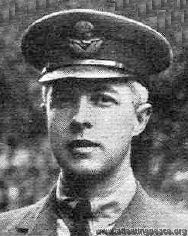 1920, aged 33
1920, aged 33b. 16 Oct 1887 in Fife, N.B.
Resigned his commission in Jan 1924, took out some patents when working for Sperry Instruments in 1939, and
d. before 1951
-
Noakes, Jack
Sqn-Ldr J 'Jack' Noakes 
photo: 1921, aged 27
presumably Jack Noakes, b. 9 Apr 1894 in Brighton
RAeC Certificate 1092 (1915); later an Air Commodore
-
Norman, Antony CW
Mr Antony CW Norman b. Apr 1912
A member of the Old Etonian Club
-
Norman, Henry Nigel St Valery
Sir Henry Nigel St Valery Norman CBE  1926
1926b. c.1898. From Rendcomb, Glos.
Always known as Nigel; from 1939, 2nd Baronet of Honeyhanger, later Air Commodore Sir Nigel. Co-founded Airwork Services with Alan Muntz at Heston.
 The Bystander Special Aviation Edition, 1933
The Bystander Special Aviation Edition, 1933Killed in WWII: 19th May 1943, on a flight from St Mawgan, buried Rendcomb, Glos.
-
Norman, Rosalind Laura
Miss Rosalind Laura Norman 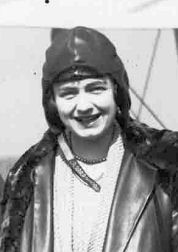
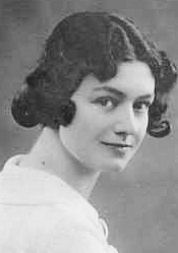
b. 1908
Nigel's sister Rosalind was a regular on the Court Circular, attending endless weddings, dances, balls, luncheons, etc, etc.
In December 1931, Rosalind accompanied Commander Sir Walter and Lady Windham on their trip to Ceylon; she met them at Marseilles, and "after visiting Ceylon spent some time visiting friends in India."
In August 1933 she made another flying tour, to Poland and Germany.
She 'quietly' married Aubrey Burke in February 1936, becoming Lady Burke, and they had two daughters and a son.
From her obituary: "Lady Rosalind Burke, a glamourous aviatrix in the halcyon inter-war years of private aviation who became an extraordinary aircraft factory manager during the second world war, has died aged 86.
Her zest for aviation came from her brothers, who had all taken up flying, and she gained her private pilot's licence at Heston, the aerodrome founded by her brother Nigel (later Air Commodore Sir Nigel Norman). During the early thirties, she took part in many of the fashionable private aero events throughout Europe. She also possessed a remarkable practical flair, making model aircraft in her home workshop, and going on to create the largest model aircraft factory in the country.

She met and married another aviator, Aubrey Burke, at Heston in 1936 (he had flown the Atlantic by R100 airship in 1930 and joined Imperial Airways in 1935). They also joined forces in business as Burman Engineering (the name being an amalgam of their surnames), and began to provide full-scale aircraft components. At the outbreak of war, he joined the civil repair organisation of the Ministry of Aircraft Production set up to restore battle-damaged aircraft. She kept up her reputation for the rapid supply of accurate aircraft parts, matching female labour and the production capacity of her several factories.
She perceptively recruited volunteers for what became known as the IPP (Immobile Part-time Production) through radio broadcasts and lecture tours, with the allure of making a real contribution to the war effort. She also instituted an imaginative scheme for reducing aircraft assembly-line waste with numerous village-based groups retrieving and sorting many thousands of small items - nuts, bolts and rivets - from the sweepings of factory floors or the debris of blitzed factories. She was an energetic, inspiring leader, taking her three young children round this network with her, the youngest in a carry-cot. By the end of the war, the Burman factories had the commendable record of two million man/woman hours worked, and over 150 million components delivered.
Post-war, she devoted her attention to her family and travelled extensively with her husband as he rose to become chairman of the de Havilland Aircraft Company and vice-chairman of the Hawker Siddeley Group. She also helped him to build up a pedigree herd of Guernsey cattle.
Rosalind Laura Burke, born February 20, 1908; died April 1, 1994."
-
Oliver, John
Flt-Lt John Oliver  1930
1930??
Page 14 of 23










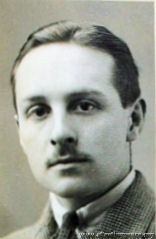

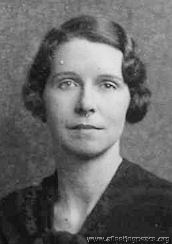



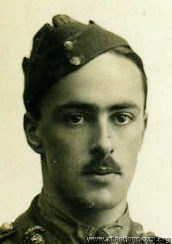

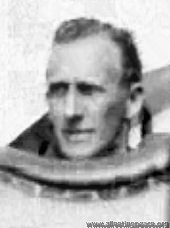

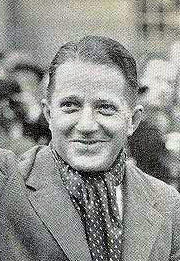






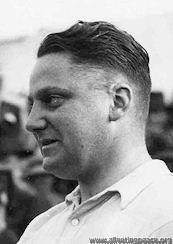
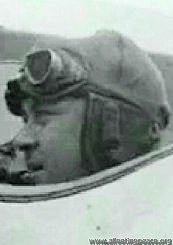



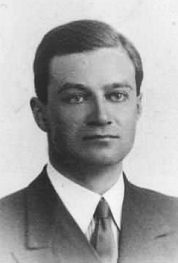
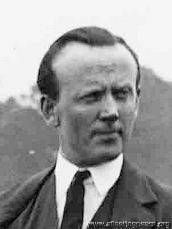
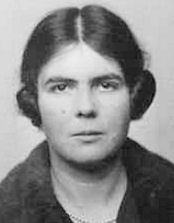




.jpg)
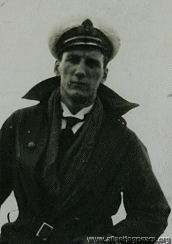

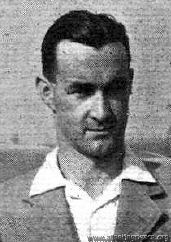

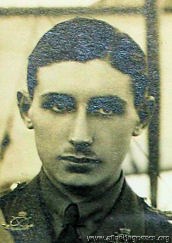



 '
'










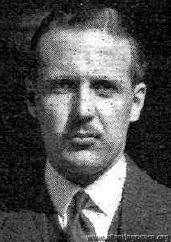

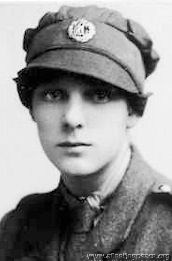





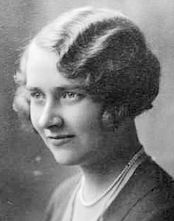


.jpg)























